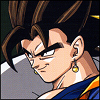Dragon Ball's True Genre: We Need to Talk about Wuxia
Moderators: General Help, Kanzenshuu Staff
- Kunzait_83
- I Live Here
- Posts: 2974
- Joined: Fri Dec 31, 2004 5:19 pm
Re: Dragon Ball's True Genre: We Need to Talk about Wuxia
The subsequent parts of this whole diatribe go into not only Fist of the North Star, but also plenty of other examples of Wuxia across various nerd media over and throughout the years. Believe me, I don't leave too many stones unturned.
Oh hey, speaking of which... page 2!
Oh hey, speaking of which... page 2!
http://80s90sdragonballart.tumblr.com/
Kunzait's Wuxia Thread
Kunzait's Wuxia Thread
Journey to the West, chapter 26 wrote:The strong man will meet someone stronger still:
Come to naught at last he surely will!
Zephyr wrote:And that's to say nothing of how pretty much impossible it is to capture what made the original run of the series so great. I'm in the generation of fans that started with Toonami, so I totally empathize with the feeling of having "missed the party", experiencing disappointment, and wanting to experience it myself. But I can't, that's how life is. Time is a bitch. The party is over. Kageyama, Kikuchi, and Maeda are off the sauce now; Yanami almost OD'd; Yamamoto got arrested; Toriyama's not going to light trash cans on fire and hang from the chandelier anymore. We can't get the band back together, and even if we could, everyone's either old, in poor health, or calmed way the fuck down. Best we're going to get, and are getting, is a party that's almost entirely devoid of the magic that made the original one so awesome that we even want more.
Kamiccolo9 wrote:It grinds my gears that people get "outraged" over any of this stuff. It's a fucking cartoon. If you are that determined to be angry about something, get off the internet and make a stand for something that actually matters.
Rocketman wrote:"Shonen" basically means "stupid sentimental shit" anyway, so it's ok to be anti-shonen.
- Kunzait_83
- I Live Here
- Posts: 2974
- Joined: Fri Dec 31, 2004 5:19 pm
Re: Dragon Ball's True Genre: We Need to Talk about Wuxia
Part 4: Wuxia in Modern Media
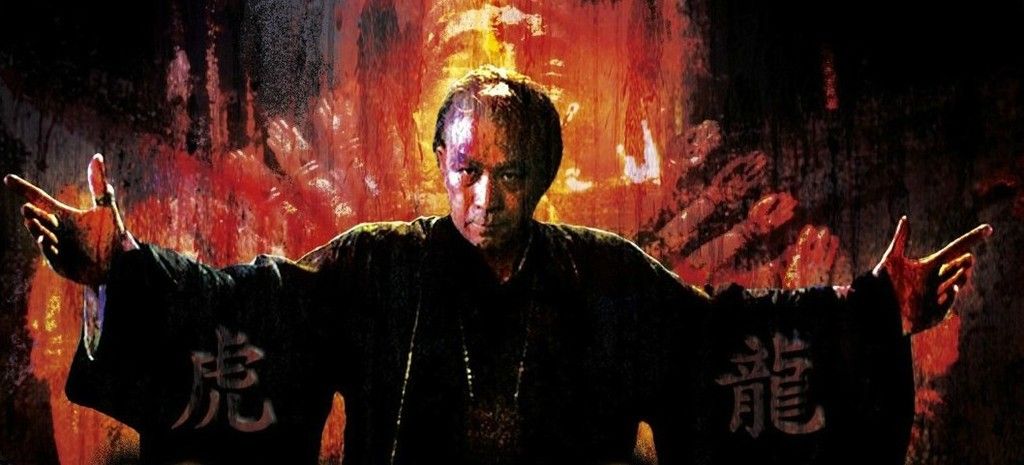
Before we proceed any further into this, at this point I'd like to take a moment to apologize for how generalized I've kept large swathes of this whole info dump session thus far. But you have to understand something: at the risk of repeating myself and belaboring a point here, it can never be overstated the palpably overwhelming degree to which Wuxia is a MASSIVE fucking genre with an INCREDIBLY dense and rich history and array of individual stories and various retellings and reinterpretations of many of those stories spanning back countless centuries across SUCH an insane array of storytelling mediums.
Towards the end stretch of my tenure as a regular here, as I'd come to realize how staggeringly ignorant of this entire genre's existence much of this community (and wider modern Western Dragon Ball fandom in general) was and started talking about it a bit more in some of my later posts (almost coming within a hair's breadth at one point of appearing on the podcast to talk about aspects of it) I'd gotten the distinct, overwhelming impression from various other regulars here that I was beginning to be seen around these parts as some sort of resident “Kung Fu media expert” and academic scholar of all things relating to Martial Arts genre fiction and Wuxia in general.
And here's the thing about that: I couldn't be anything the least bit further from that, nor have I ever once remotely claimed to be in the first place. Despite how creatively I can string together a sentence or two and despite how long I can drone on and on about a constant, never-ending torrent of trivial bullshit, don't for one second think that I'm anything other than a total fucking dumbass when push comes to shove.
I've known throughout my life a fairly wide, diverse assortment of ACTUAL smart people, who in numerous fields of subject matter, up to and including this one here (Wuxia and ancient Chinese mythological Kung Fu lore) can soundly hand me my fucking ass without even pretending to put forth any effort into it. There's any NUMBER of Wuxia enthusiasts out there who can legitimately lay claim to being actual no-bullshit academic-level experts on the matter and could do what I'm doing now (overviewing just the barebones basics of the genre) whole vast, infinite WORLDS better than I've been doing thus far.
Compared to them, I'm a fucking simpleton. I'm the Beavis and/or Butthead to their Daria (probably more of a Beavis if I had to pick). The aptness of that particular analogy with regards to this topic is actually sort of integral to my own history as a Wuxia/Dragon Ball fan and will be revisited and explored in greater detail later on.
I digress. For now though, let me just apologize dearly to you all for being the “best” that you folks currently have to work with on this for the time being. That in itself is incredibly sad as, as I've said, there's FAR infinitely better knowledgeable scholars of all things Wuxia out there than myself; people who actually know Chinese and can quote you ancient Youxia poetry and literature chapter and verse and relay to you all sorts of incredibly fascinating history on some of the earliest ever incarnations of many of these stories and character-types. My knowledge of the truly ancient, nitty gritty historical Wuxia prose and lit predating the 20th century is nothing if not embarrassingly rudimentary and basic.
My biggest so-called “bragging rights” in this area is my having struggled my way through a couple of college translations of The Water Margin, Journey to the West, and about 70% of Romance of the Three Kingdoms in elementary school, doing a 6th grade book report on Li Bai...
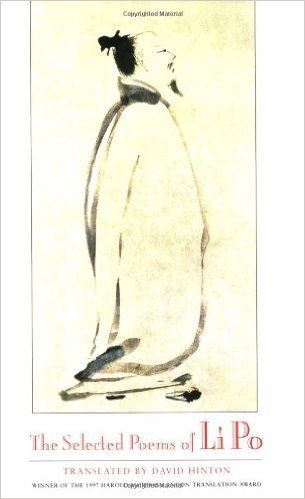
(From a dog-eared collection of his poetry that I got in a dumpy-ass pawn shop for what couldn't have been more than 5 or 10 bucks)
...reading some online FAQs about a few select untranslated novels and the genre in general back in the early 90s, and watching a few raw, untranslated peking opera performances of a few ancient Wuxia myths on International Channel and a few Hong Kong cinema websites (during the really early days of when RealPlayer and Quicktime were “cutting edge”) in the mid to late 90s with what I can assure you was almost ZERO understanding whatsoever of any of the deeper nuances of the shows.
Voila, there, that's almost the entire length and breadth of my “academic/classical/historic” Wuxia expertise. Largely everything else I've known about it my whole life has been divined almost exclusively from a steady diet of Chinese comic books (aka Manhua), video games, bootleg VHS tapes of ungodly countless films, and access to International Channel back in the 90s (which played marathons of various live action Wuxia TV shows every single weekday afternoon, almost exclusively raw and unsubbed). Fucking pathetic.
Rest assured I am but an extremely, painfully average fanboy of this stuff, bred largely on the film and comic book output of the genre in the late 80s/early 90s (me being if nothing else a massive creature/product of the late 80s/early90s), as the vast overwhelming majority of my selection of example images and gifs will certainly attest.
And its with that in mind, that we'll be moving away from any laughably piddling attempts on my part of tackling the truly ancient, historical background of the genre and focus firmly on its contemporary media history... with a particular emphasis on film.
Since this whole section is essentially going be a nerd history lesson, this is without question going to be the overwhelmingly largest, densest portion of this entire massive info dump: so its probably best that it be broken up into a few sub-sections for the benefit of clarity and everyone's sanity.
Wuxia in Modern Media Section I: The Classic Years (1929 - 1970)
Considering Wuxia's immense cultural importance and near-universal, unceasingly bottomless popularity in its native China almost all throughout its history, little time was wasted before it made its mark in early 20th century media. Wuxia has been a part of more modern Chinese media and pop culture for almost literally as long as the existence of film itself.
That's right kids, that means that Wuxia was also very much around for the era of Silent Film and Film Serials.
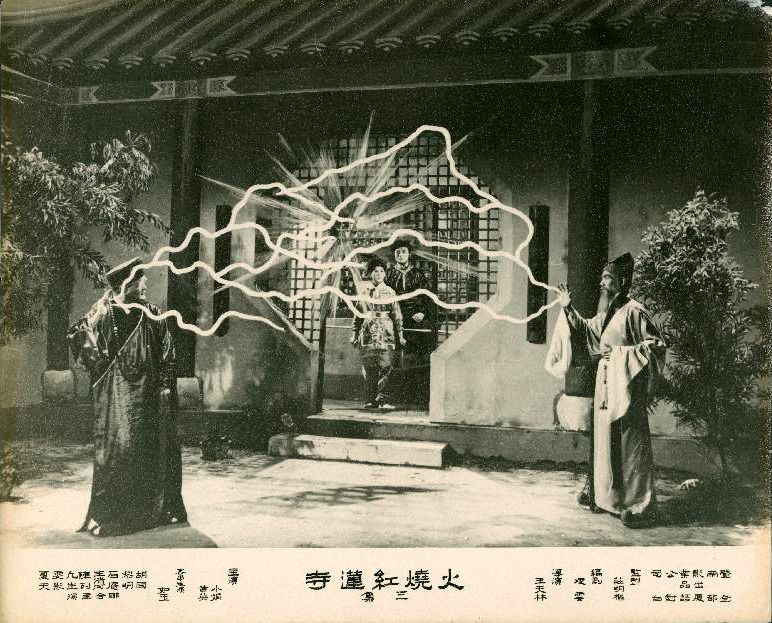
Pictured above is a still from The Burning of the Red Lotus Temple, one of the earliest Wuxia films... possibly THE first ever Wuxia film (making Wuxia a fairly late genre entry in the history of silent film). A serial released in a massive 16 installments from 1928 to 1931 and adapted from a newspaper strip (told you this genre invaded literally EVERY form of storytelling in existence), it tells the story of a long, daring rescue of a martial arts master by his devoted students from a large temple filled with hidden enemies, traps, and other dangers.
The temple in question of course is the infamous Red Lotus Temple, a hideout for cutthroat criminals who's MO is masquerading as benevolent Monks (the Red Lotus Temple would make return appearances in a great many more Wuxia films and stories over the ensuing decades, even up through the 90s).
The influence of this film upon the rest of the genre across the rest of the 20th century and beyond absolutely cannot be overstated. This film essentially laid the basic groundwork for virtually EVERY wuxia film that would ever follow in its wake, from its pacing, setpieces, visual effects language, character dynamics and countless other storytelling tics...
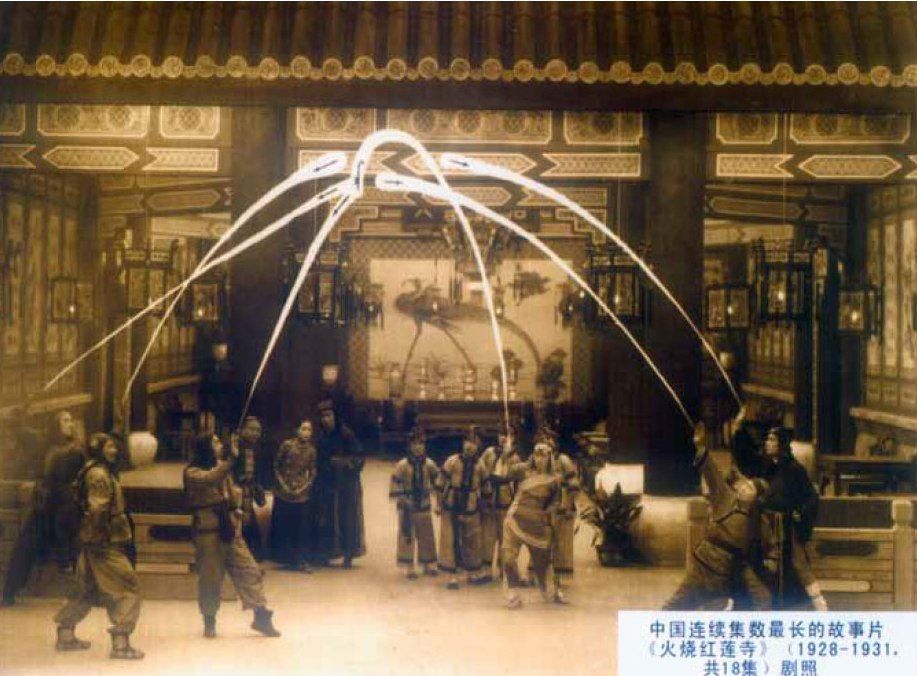
…so of course, like so very, very many other early films of the Silent era, it remains tragically lost to time and is presently all but impossible to see anywhere with no known prints currently located. All that remains are still images and various scattered pieces of information and apocryphal trivia from various interviews, historical accounts, and production notes.
Another notable early Silent Wuxia film that DOES still exist however is 1929's Red Heroine. Telling a very standard, rote murder-training-revenge arc (that would of course become an all too familiar stock cliché in this genre), the titular Red Heroine is a young peasant girl named Yun Ko (played by then-popular Chinese actress Fan Xuepeng, who would become in the wake of this film one of the first ever Wuxia stars) who begins the film an average innocent young lady whose village is raided and sacked by a corrupt warlord general. Her kindly old grandmother ruthlessly murdered in the attack and her hapless scholar cousin unable to protect them, Yun Ko is captured and taken to the general's fortress to be made a sex slave in his harem.
Before she can be violated by the general's men however, she's rescued and taken away by an old hermetic (read: Xian) monk by the name of White Monkey who of course is also a great Wulin martial arts master. White Monkey takes Yun Ko under his wing as his student and trains her in the supernatural martial arts. By the end of her 3 years of training, Yun Ko is a master fighter capable of flying, teleporting, and other great feats of superhuman strength, allowing her to return to the general's fortress and wreak bloody revenge upon the evil marauding army.

(Yun Ko soars into battle)
As primitive and rudimentary as most Wuxia of the silent film era may be to modern viewers, these were obviously monumentally popular and groundbreaking films of their time period, bringing to vivid life for the first time ever ancient myth and folklore of Chinese culture only previously imagined in ancient writings, literature, and on the stage.
Indeed stage plays and Chinese opera performances were the closest that Wuxia had to be visualized prior to the advent of film, hence most all of the earliest ever Wuxia films (within and even for some time after the silent era in the early “talkies”) make extensive use of stage performance tricks and choreography for their action sequences, including EXTREMELY rough wirework for flying, puffs of smoke from the ground for “teleporting/materializing”, and hand to hand choreography that is more akin to stylized dancing than visceral combat.
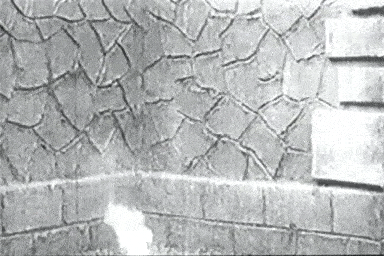
The most cutting edge technological advancement used in the earliest Wuxia films was hand drawn rotoscoped animation for visually represented Ki techniques. These were an absolute marvel to Chinese audiences in the late 1920s when Burning of the Red Lotus Temple first made extensive use of it, and rotoscoping would continue to be the principal means of achieving the effect of Ki auras, blasts, and other assorted magical martial arts trickery throughout much of the entirety of live action Wuxia filmmaking for a great many decades all the way up until the advent and use of CGI became increasingly commonplace during the latter half of the 1990s.
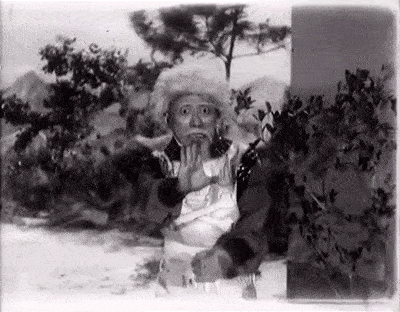
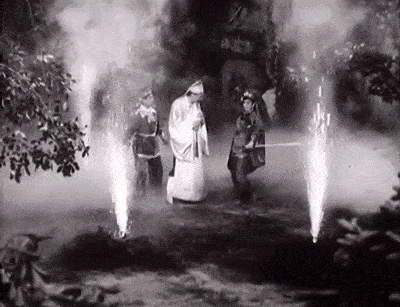
In a serendipitous bit of cultural foreshadowing (which we'll get to the payoff of momentarily) the early silent era Wuxia landscape tended to be an extremely populous-driven film movement, with the genre most loved and consumed by audiences of poorer, lower class backgrounds.
As can be seen just in certain elements of Red Heroine as just one example, there was a hint of lurid pulp and exploitation prevalent in many Wuxia films, along with the general running anti-authoritarian/anti-establishment themes that come with stories focusing on a staunchly individualistic, authority-shirking warrior caste such as the Xia/Youxia, as well as the common Wuxia subtext promoting the individual's accomplishment, talent, and self-improvement over that of collectivist/conformist thinking.
This did not sit too well with the then-first emerging Communist Party of China, who early on saw these sorts of films as threatening, rabble-rousing among the masses, and promoting ideas diametrically opposed to that of Communist principals, making early Wuxia films for some years frequent targets for government raids, confiscation, and banning.
Combined with a general carelessness towards film preservation during the silent era as an overall whole and the easily decaying nature of early film stocks, and it unfortunately makes a GREAT deal of the early silent era of Wuxia films tragically, heartbreakingly lost forever to time, with only a relatively RARE select few films still surviving today.
This hostile attitude towards populist Wuxia films by the government would lax a tremendous deal after the Chinese Revolution of the late 1940s, which saw the creation of what we've come to know since as the People's Republic, as well as the 2nd assimilation of Hong Kong into Great Britain (Hong Kong being where a GREAT deal of Chinese films, martial arts/Wuxia and otherwise, are generally made). All just in time for the talkie (and soon later, colorized) era of film coming into being, along with far better standards for film preservation in general.
The 1950s would be another banner decade for 20th century Wuxia within an entirely different medium. The 50s saw a MASSIVE resurgence in popularity of Wuxia novels and literature, primarily launched by the absolutely monumental success of seminal and legendary Wuxia author Dr. Louis Cha (better known by his pen name, Jin Yong).
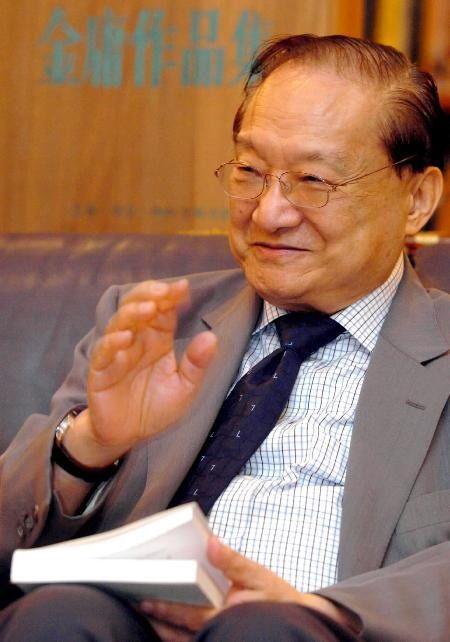
(Dr. Louis Cha, aka Jin Yong, indisputably the single most influential and prolific Wuxia writer of the last 60 years.)
Throughout the better part of the 1950s Dr. Cha would pen an absolutely staggering number of some of the most indispensably important Wuxia tales that would come to define the genre in its modern day context, including the Condor Heroes trilogy (Legend of the Condor Heroes, Return of the Condor Heroes, and the earlier mentioned Heaven Sword and Dragon Sabre), the Smiling Proud Wanderer series, Demi-Gods and Semi-Devils, and far, far too many more to list.
Many of Dr. Cha's novels are still to this day routinely adapted in an unbelievable array of adaptations spanning film, television, radio, animation, comic books/manhua, video games, and the stage, putting his stories easily in the same league of ubiquity as some of the most ancient and time honored Wuxia myths from the genre's ancient origins. Without his contributions, its entirely fair to say that the Wuxia genre's modern day landscape would've been a VASTLY different entity entirely.
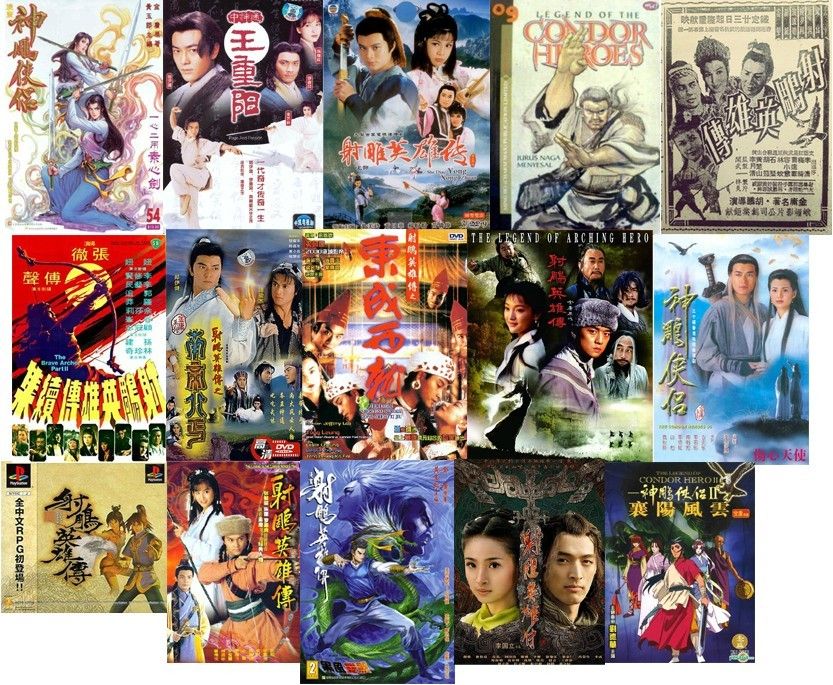
(The Wuxia stories of Louis Cha have invaded every square inch of media for the last 60 years. Pictured above are a sampling of different individual adaptations just for solely Legend of the Condor Heroes alone.)
Other notable Wuxia novelists would also come about during the 50s, including Gu Long, Liang Yusheng, and Sima Ling, making the decade generally seen as the defining golden era for modern literary Wuxia.
Back on the film end of things, more Wuxia talkie serials would be made throughout the 1950s and early 1960s (the first ever film adaptation of the Buddha's Palm mythos being a significant one), until the advent of a significantly HUGE player in the Chinese filmmaking world (particularly that of martial arts and Wuxia films): Shaw Brothers Studios.
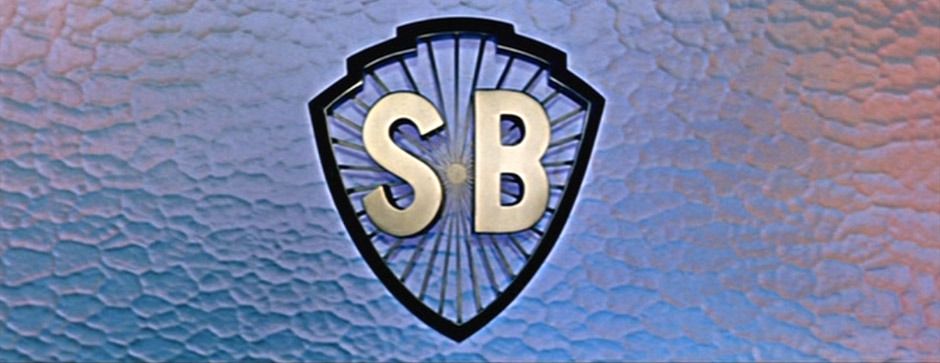
Cue the fanfare...
Founded by brothers Runje, Runme, Runde, and Run Run Shaw, the impact of Shaw Bros. Studios on the martial arts filmmaking landscape is utterly impossible to succinctly summarize. A juggernaut that utterly and indisputably DOMINATED the martial arts filmmaking landscape throughout Asia all throughout the 1960s and 1970s, Shaw Studios was a well oiled machine that cranked out literally dozens upon dozens of films a year at their apex. The vast overwhelmingly majority were martial arts films, but they would also dip into other genres as well, including horror, romance, drama, and even at one point Tokusatsu (seriously).
Their only truly significant competition, which first came about in the early 70s, was Golden Harvest Studios, who would be for some years the only major Chinese film studio - also specializing heavily in martial arts films - to successfully hold their own against Shaw Studio's dominance. Indeed during the 1970s (a famously banner decade in general for Chinese martial arts cinema), they were effectively “The Big Two” of kung fu filmmaking, effecting an almost Marvel vs DC Comics/Nintendo vs Sega-like rivalry.
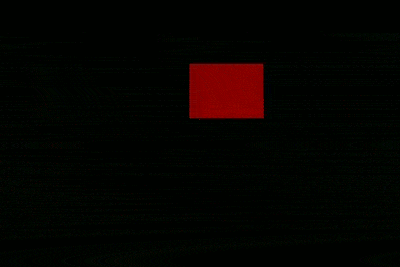
Does this remind you of anything?
A major difference between the two studios however (particularly more so in their earlier years) was their treatment of and attitudes towards Wuxia. While Shaw Brothers produced a TREMENDOUS number of incredibly outlandish and over the top wuxia films alongside their more grounded, straightforward martial arts films, Golden Harvest early on identified themselves as the more “grounded, gritty, realistic” alternative, and who - while still producing a certain amount of them - overall substantially downplayed Wuxia within their overall output in favor of much more (comparatively speaking at times) realism-rooted kung fu films.
Legend has it that this was a significant factor in Golden Harvest scoring one of their most crippling long-term victories over Shaw Studios in the 70s: their signing of a certain martial arts performer by the name of Bruce Lee, who was quite famously not a very big fan of Wuxia (indeed at times a rather outspoken detractor of it) and greatly preferred more grounded in reality martial arts filmmaking. Images have floated around for years of Lee, during the period where Shaw Studios were still attempting to court him away from Golden Harvest, being costume fitted for various potential Wuxia roles, which Shaw generally made mandatory to all their actors: something which likely did not please or excite him too much.
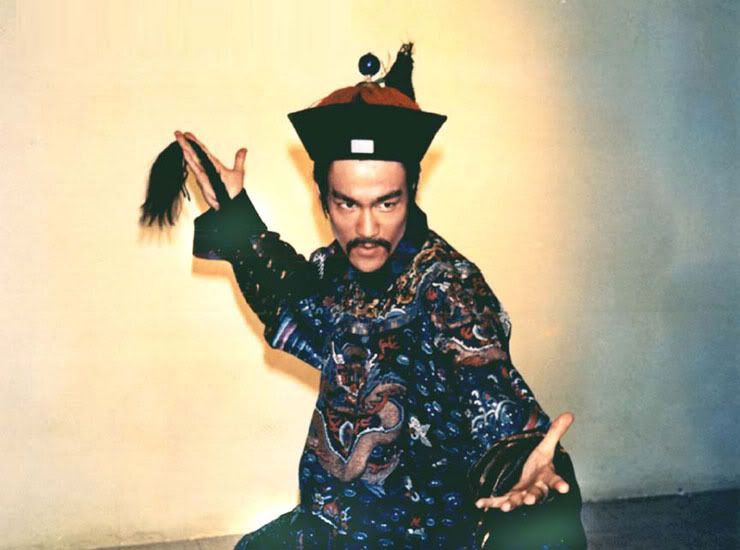
(What could have been: Lee as a stuck up, pompous Mandarin scholar who learns mystical kung fu and becomes an embittered, badass villain/anti-hero of the Wulin world? Admit it, you want a peak into the alternate reality where that movie actually happened.)
Of the many, countless reasons for why Bruce Lee was a Big Goddamned Deal in the world of martial arts cinema (which you can easily read and view untold decades worth of writings and documentaries on the subject) was an especially HUGE leap forward in the evolving of martial arts filmmaking and on-screen fighting that he, and Golden Harvest in general, where largely responsible for.
A stickler for naturalism and a staunch forward-thinking progressive (hence a big part of his dislike of Wuxia: Lee found the genre hokey and rooted too deeply in the past, traditionalism, and increasingly out of date martial arts filmmaking principals, and thus saw them as a negative, discrediting factor in the rest of the world outside of Asia taking Kung Fu cinema seriously), Lee was among many other things a trailblazer and pioneer of breaking on-camera martial arts choreography away from the stiff, dance-like choreography of Peking Opera plays, and instead bringing a previously unheard of level of naturalism and realism to how the fights felt and came across.
This would, gradually and over time, revolutionize how ALL martial arts fighting would be depicted on camera. While many Golden Harvest performers, choreographers, and stunt people would quickly adapt to and embrace this incredible new form of fight choreography, Shaw would for a great many years remain stubbornly resistant to it. Beyond giving Golden Harvest a distinct identity apart from the then-towering juggernaut of martial arts cinema that was Shaw Studios (and thus allowing them to compete directly against them in ways that other studios struggled to), this would of course inevitably over time bite Shaw Bros. in the ass in other equally BIG ways... but we'll get to that shortly.
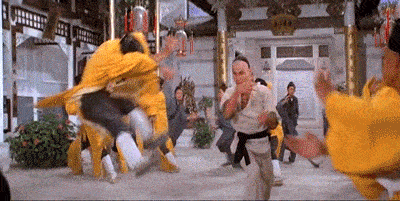

(Old school vs new school. On the left: stilted, stage-like left, right, left, right! One, two, three, four, one, two, three four! On the right: silk-smooth movement, a sense of unpredictable spontaneity, and gritty viciousness. As early as the dawn of the 70s, Lee was truly ahead of the curve.)
With Lee as the front and center-most superstar in Harvest's corner, other talents would emerge from the upstart studio to rival Shaw's stable of performers, including Carter Wong, Hwang In-Shik, Angela Mao (probably one of the all time most beloved and iconic female martial arts superstars who ever lived and one of my childhood heroes), and of course the incredibly charismatic and impossibly skilled Hwang Jang Lee (another martial artist who I positively worshiped for my entire adolescence).
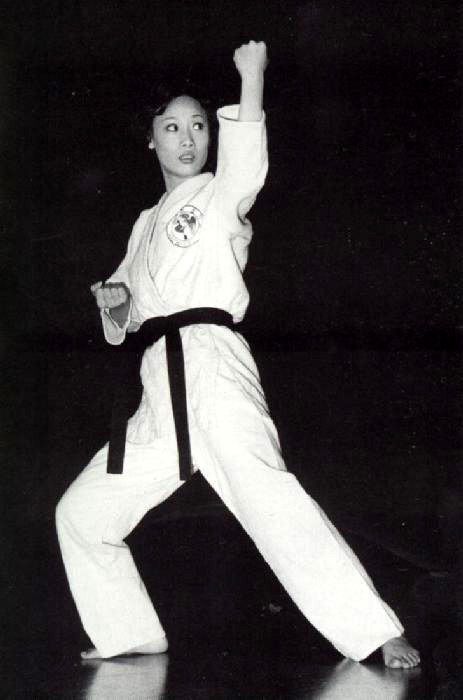
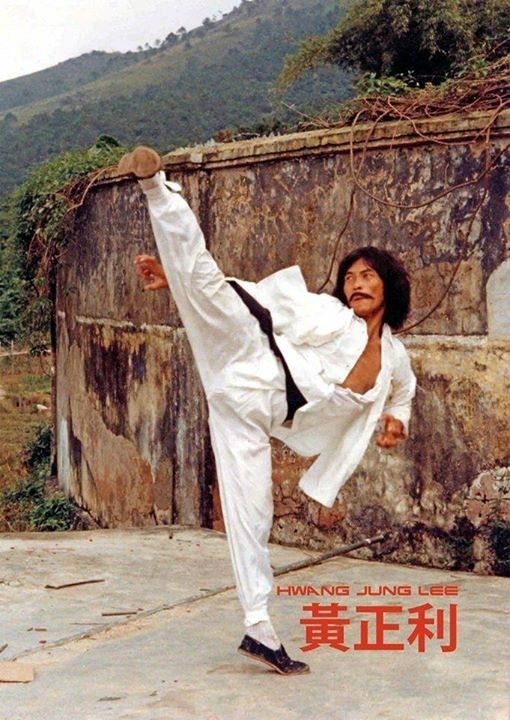
All would star in numerous martial arts films that were often hard-edged, gritty, more grounded counterpoints to Shaw's overall larger fixation on ancient Chinese Wuxia lore and over the top stylized mystical martial arts fighting and tropes, with Golden Harvest as a studio only comparatively rarely venturing into Wuxia themselves (and certainly never with Bruce Lee's participation natch).
Nonetheless, even with the more relatively down-to-earth Golden Harvest as a constant ever-present thorn in their side, Shaw Brothers were for a few decades THE face and voice of Wuxia in Asian filmmaking. The sheer staggering number of films they produced in Wuxia alone (much less all their other genre endeavors) defies comprehension, many of which remain influential, stone cold classics to this very day.
Timeless classics Golden Swallow and Come Drink With Me, adaptations of Water Margin and Journey to the West, The Magic Blade, King Boxer, One-Armed Swordsman, Fist of the White Lotus, Five Deadly Venoms (introducing to the world the Venom Mob, a troupe of incredibly charismatic, versatile, and well-liked martial arts actors), the nearly-lost gem The Black Tavern, Have Sword Will Travel, Temple of the Red Lotus (Shaw's own remake of the above-noted lost silent classic The Burning of the Red Lotus Temple), and of course their defining crown jewel 36th Chamber of Shaolin... Shaw's output is among the most rightly celebrated and beloved in wuxia (and just general martial arts, which I barely even touched on above) film fandom, more than justifiably so.

(One of the most towering legacies in all of martial arts film history.)
Countless superstar names in kung fu filmmaking would come out of Shaw studios, from directors Chang Cheh and Lau Kar-Leung - both responsible for a vast majority of Shaw's best films, with Cheh in particular also becoming notable for often blending the fanciful silliness of Wuxia with harsh, graphic violence and gore...
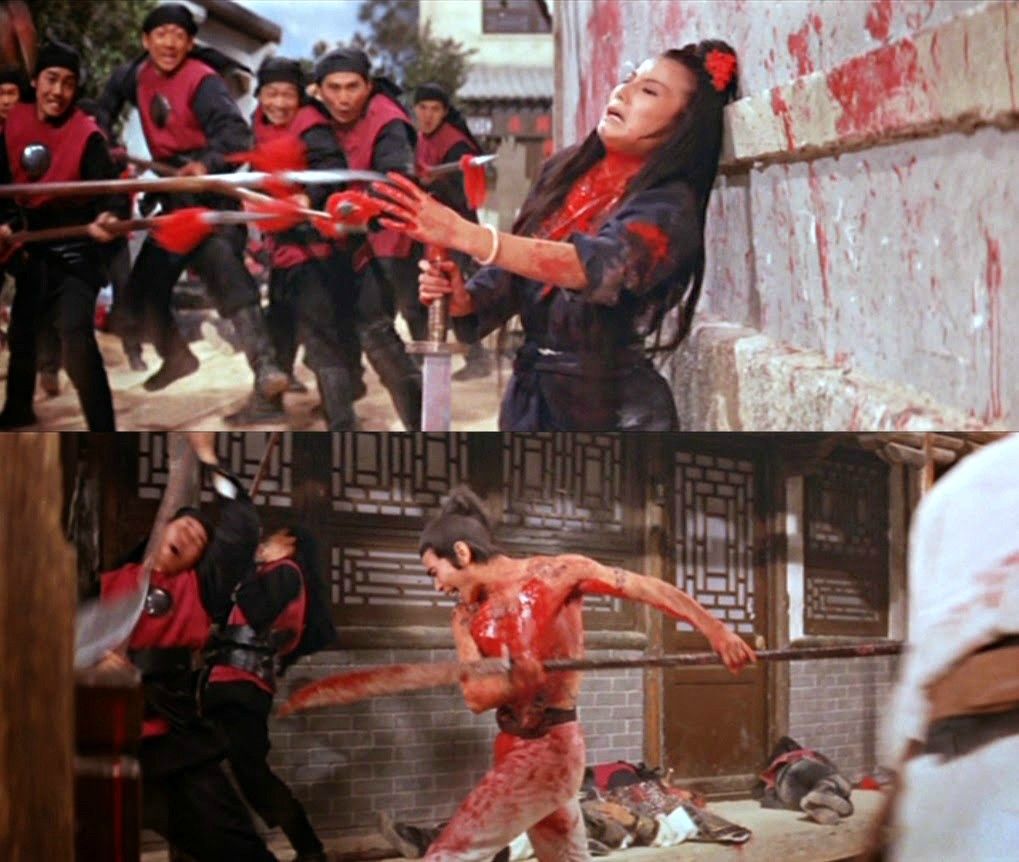
...as well as instantly iconic on-camera talents like Lo Lieh, Jimmy Wang Yu, Kara Hui, Wang Lung-Wei, Cheng Pei-Pei, Ti Lung, the tragically gone-too-soon Alexander Fu Sheng, the aforementioned Venom Mob (including one of my personal all time favorites, the disgustingly talented Philip Kwok), and of course the one and only great himself, Gordon Liu (the overwhelmingly most likely candidate for the principal basis of Kuririn).
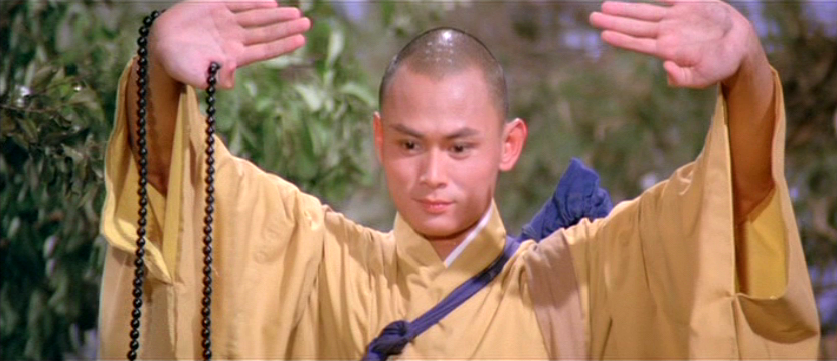
While there were certainly some stray, but no less immensely notable martial arts and Wuxia films made outside of either Shaw Bros or Golden Harvest - particularly by the great King Hu, who made wuxia movies for BOTH studios, as well as outside of them entirely: A Touch of Zen and the original Dragon Gate Inn (two of the all time greatest Wuxia films in history) were notably made by Hu without either Shaw or Harvest, as well as some very notable Taiwanese-produced indie kung fu films – overall the 60s and vast bulk of the 70s were indeed the golden era of Shaw.
Many more modern martial arts/wuxia filmmaking staples would evolve and grow to prominence thanks largely to Shaw, from atmospheric, Spaghetti Western-like foreboding pacing and tension building (your pre-fight “drawn out staredowns” and the like), as well as their instantly iconic and distinctive style of musical scores (traditional Chinese orchestral, very brassy and with just a hint of 70s funk): and for Westerners of course, the horrendously, gloriously bad dubbing.
Wuxia in Modern Media Section II: The Grindhouse Years – First Crossover Success in the Western World (1970 - 1979)
Speaking of Shaw's (and Harvest's) impact on us Westerners, I'd be remiss if I didn't point out that end of the equation. Over in America during the late 1960s and throughout 1970s (and 80s even) there was a growing new venue for film viewing known colloquially as the Grindhouse Theater.
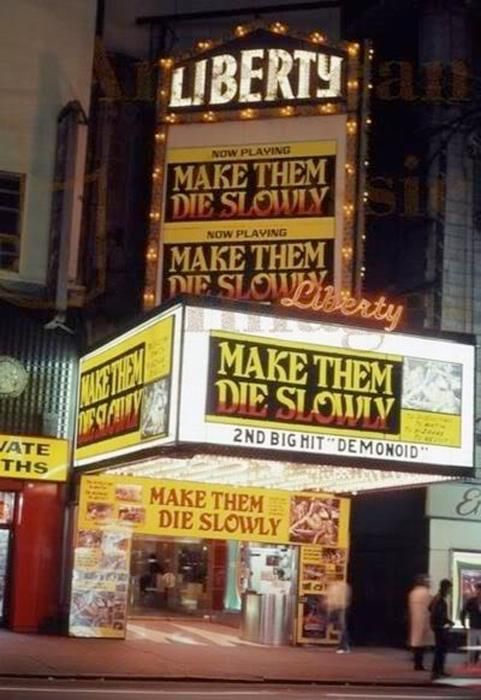
Some of you may have heard the term in more recent-ish years thanks to constant stumping/promoting of it by the likes of Quentin Tarantino, but for those of you who are still completely oblivious to such things, I'll explain (as this is CRUCIALLY important to the topic anyway).
Grindhouse Theaters were low rent, often incredibly filthy, scummy, decrepit shithole little movie theaters that largely operated in major urban cities (particularly in New York). Generally found in the poorest, most dangerous and crime-ridden areas, Grindhouse Theaters were as FAR from mainstream viewing as you could conceivably get.
Specializing in showing amorally exploitative films (from rape films, to nun fetish movies, chainsaw slasher killer films, biker thug epics, and straight up porn of the vilest, sickest kind) to an audience of (certainly not always, but very often) junkies, trench coat-wearing perverts, and random street weirdos, Grindhouse Theaters were the kinds of places where the skeevy, mangy, leering creep you hope to never run into while walking home alone through the scary part of town late at night might head off to to kill time and relax.
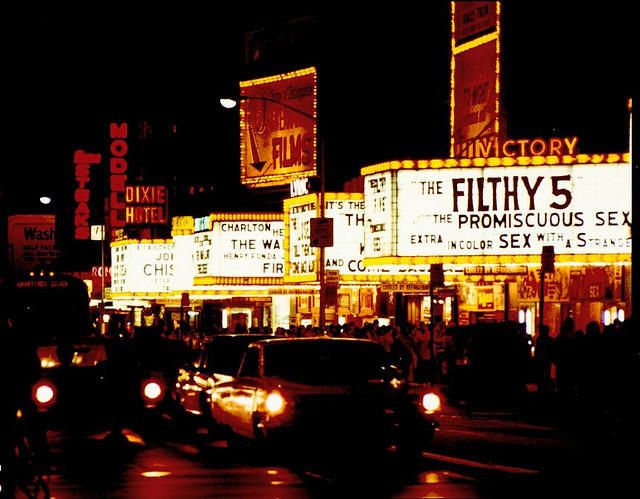
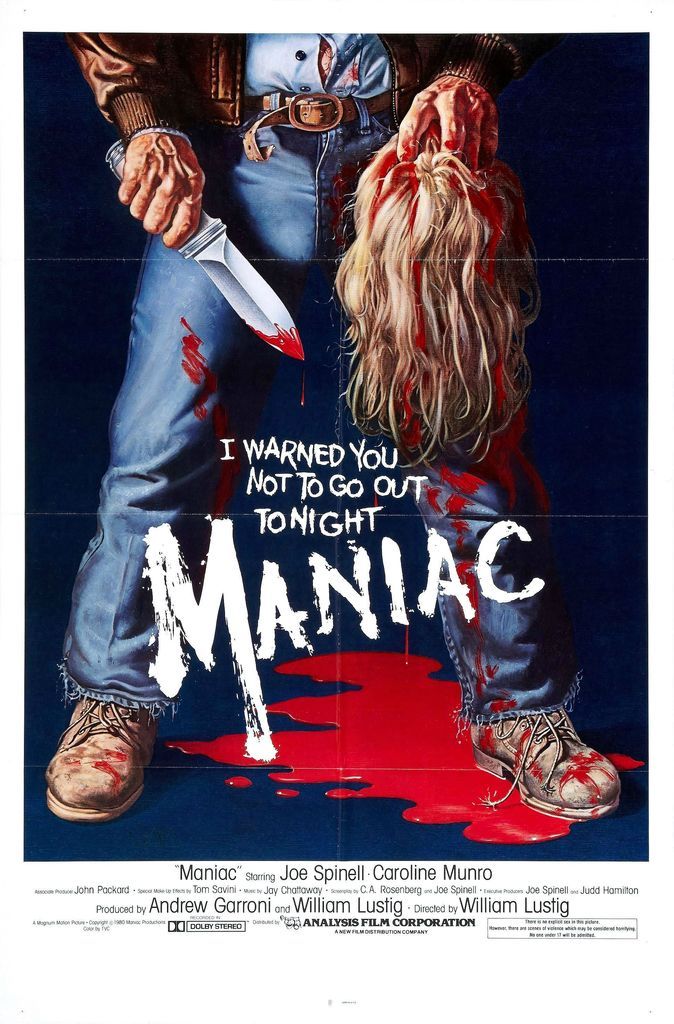
So... what in the atomic powered fucking hell could something like THAT of all things have to do with Wuxia? Plenty.
You see, apart from the sick, twisted shit they were most known and infamous for, Grindhouse Theaters specialized in showing a pretty diverse array of other things as well. As their general choice of locations would denote, Grindhouse theaters were businesses of EXTREMELY limited budget and means. They wouldn't show your average, mainstream, A-list features not only because the sort of clientele they catered to would likely not hold the slightest interest, but also because they straight up often couldn't AFFORD the damn film prints even if they actually wanted to show them.
The film selection of a typical grindhouse theater was as much borne out of economic necessity as it was the incredibly fucked taste of the audiences: these were cheap, dingy theaters located in poor, dingy neighborhoods, and they got exactly the kinds of cheap shit that they could afford to get: and these films were largely so cheap to get in the first place because no self-respecting mainstream theater in the “straight-laced, proper” parts of town had the slightest interest in showing them. Some were crazed indies made by utterly bonkers eccentrics, but others were also Mafia funded: but that's an entirely other story unto itself.
Grindhouse theaters were thus a foster home to the unwanted bastard, deformed, abandoned freaks of the cinematic world. So of course this would include things like scat porn and movies about genital mutilating cannibals and sexually maladjusted serial killers who fuck homeless people to death with power drills.
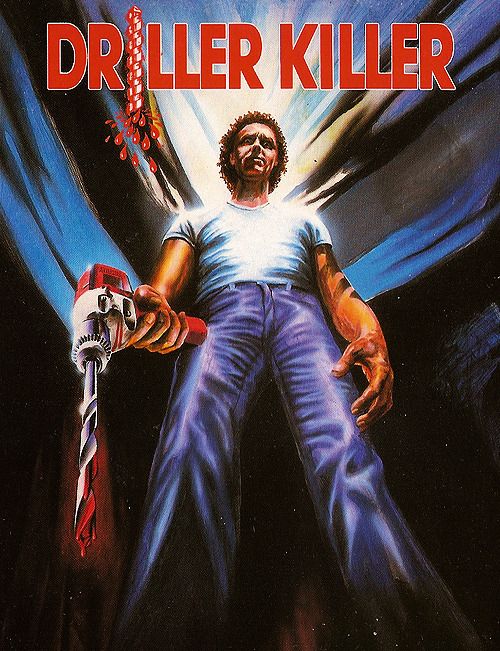
(Oh yes, that's an ACTUAL grindhouse movie too.)
BUT... grindhouse theaters were also a viable venue for OTHER extremely diverse, fascinating curios besides those.
I doubt I'll be shocking anyone when I note that mainstream America in the 1970s was still a pretty great deal culturally xenophobic. It took a foreign filmmaker of IMMENSE artistic prestige (a Jean-Luc Godard type) to get their stuff seen and appreciated by an American public that was even halfway close to mainstream back then (like say, a college campus-type crowd). Any regular old pulpy genre effort coming from overseas usually had about a snowballs chance in hell of ever getting shown in a regular American theater in mom & pop middle American suburbia, no matter how well made or legitimately interesting it might otherwise be.
Thus grindhouse theaters would often step in and purchase prints for all sorts of hugely interesting (and absolutely bonkers bizarre) foreign movies to further pad out their nightly showings of gore, tits, and sleaze. Spaghetti Westerns and arty giallo thrillers from Italy (that walked a VERY fine tightrope balance smack in between legitimately elegant and classy as well as luridly filthy and skeevy) were among the favorites, but also among them was... Chinese kung fu films. Both standard kung fu and supernatural Wuxia.
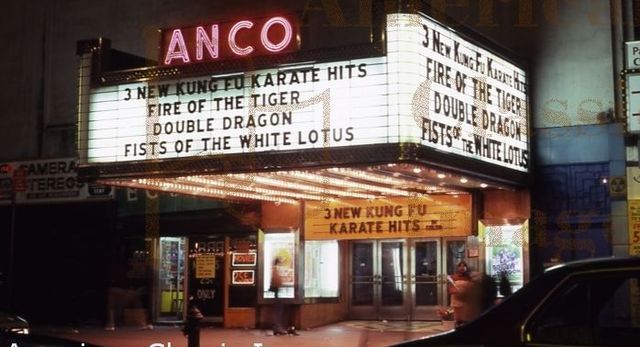
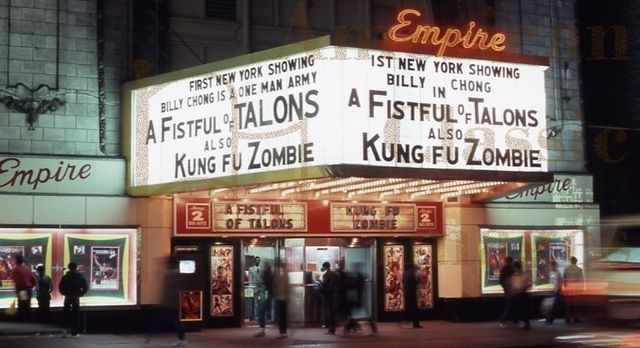
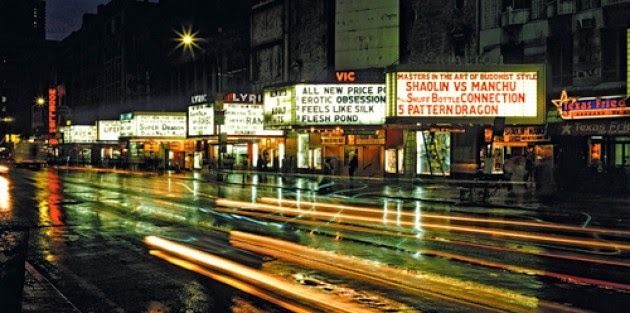
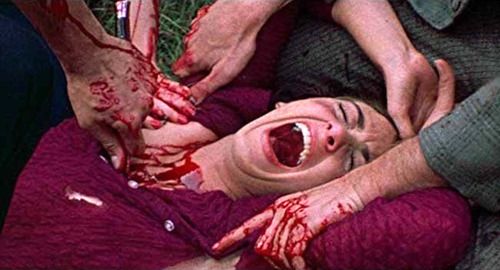
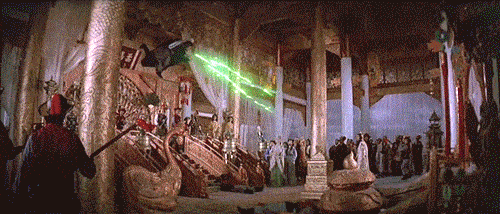


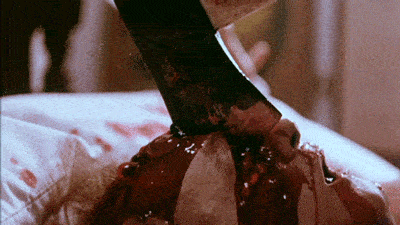
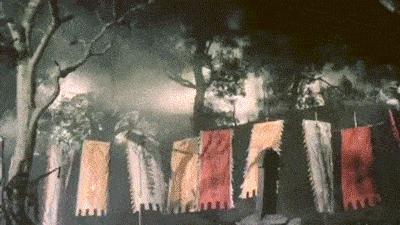
(Come for the gang-rape and gore-porn, stay for the silly-fun antics of ancient Chinese Kung Fu mystics flying about.)
So it was that, as much of a shock as this may come to some folks here, the martial arts/Wuxia genre gained its very first ever true burst of popularity and exposure in North America in the 1970s primarily from the same cesspit theaters that also heavily trafficked in the grossest, most vile and taboo cinematic sewage that crawled from the 70s exploitation circuit. Your average round eyes of the 70s probably got their first ever glimpse of Ti Lung or Lo Lieh flying around on wires and firing mystical laser beams from their fingertips at Chinese demons from the same double bill showing where they could also see an actual real life medical cadaver getting eyeball-mutilated in loving closeup in They Call Her One Eye.
Wuxia and Grindhouse cinema in fact actually have a very tight history/relationship with one another in the U.S. that spans at least a couple of decades (70s and 80s).
Shaw Brothers' King Boxer (shown in the Grindhouse Circuit under the alternate title “Five Fingers of Death”, which I've always personally preferred) was THE first ever smash hit Chinese Kung Fu film in America, largely preceding even Bruce Lee's crossover into more mainstream Western popularity. The success of King Boxer/Five Fingers of Death lead to a HUGE pouring over of CONTLESS kung fu and wuxia films in grindhouse venues across the country for a great number of years following; a great many of them Shaw Bros. and Golden harvest productions, complete with the legendarily terrible English dubbing that they'd largely become famous for for many, many decades down the line up to this day.

Aaaaaand cue that OTHER fanfare...
This as it turns out is also the origin of the immense popularity of martial arts films among black/African American culture. Black patrons were very commonplace in grindhouse theaters as they were located in a great many largely black ghettos in the 70s (hence Blacksploitation films, also a grindhouse staple). Of all the kinds of films shown in grindhouse theaters, Kung Fu and Wuxia films (apart from blacksploitation films at least) were BY FAR AND AWAY the biggest runaway success amongst black audiences.
Its not very hard at all to see why: remember the anti-authoritarian streak I talked about that ran in a lot of Wuxia? A tremendously great deal of Wuxia and Kung Fu films centered on strong, able bodied martial artists from often poor, rural communities that are under the boot-heel of a powerful, oppressive government/dictatorship. Often the hero would rise up against the oppressive warlords in the name of their village and, with little more than raw fiery righteous anger and talented skill, would knock said-oppressive tyrannical warlord/authority figure down a few pegs with a sound ass-whipping.
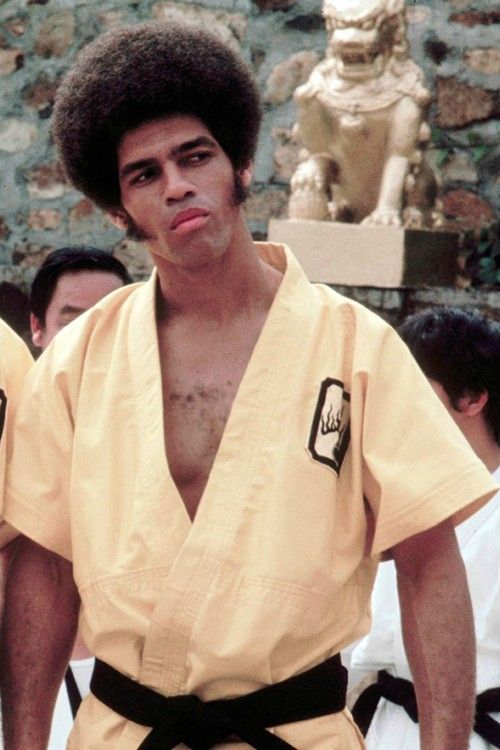
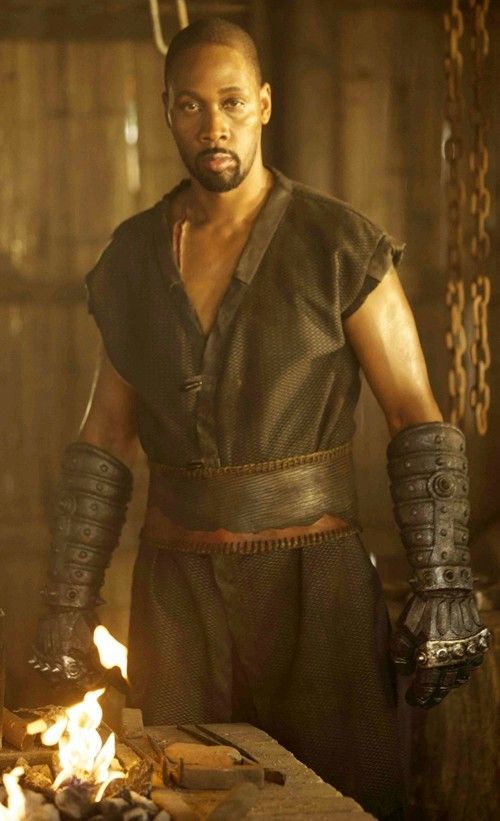
(On the left: martial artist/actor Jim Kelly personified the massive overlap between Kung Fu cinema and black grindhouses in the 1970s. On the right: rapper and founding Wu Tang Clan member RZA has taken up that mantle throughout the 1990s and 2000s, acting as one of the biggest celebrity fans/proponents for martial arts fiction and Wuxia to the point of offering vastly knowledgeable and insightful commentary tracks on DVDs/Blu Rays for a number of older classic Wuxia films and recently directing a Wxia film of his own, The Man With the Iron Fists.)
If you know a DAMN thing about black history in the United States, particularly pertaining to life in the slums/hoods, the appeal of these kinds of films to poor black audiences should be STRIKINGLY apparent. This would of course transfer over into hip hop culture as well once that came into being in the 80s. This is the very wellspring from which you get hip hop groups like the Wu Tang Clan and so forth (which now you also know from earlier where even THAT name originates from). In many respects, this closely mirrors the original appeal that the earliest silent Wuxia films had with lower class, poorer Chinese audiences in the 1920s (and which the then-still rising Communist government saw as a threat).
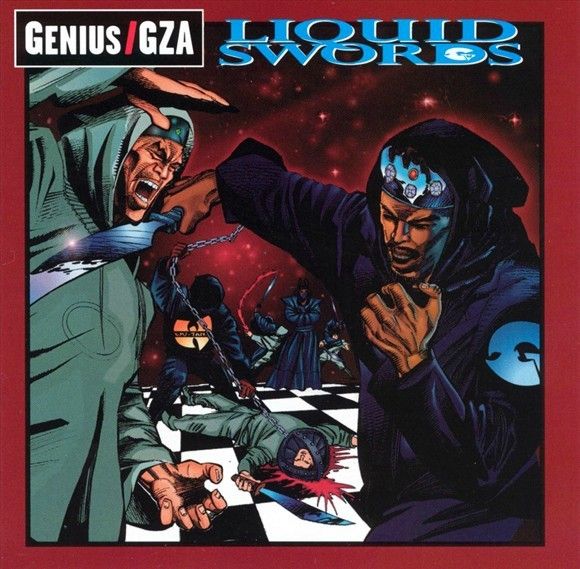
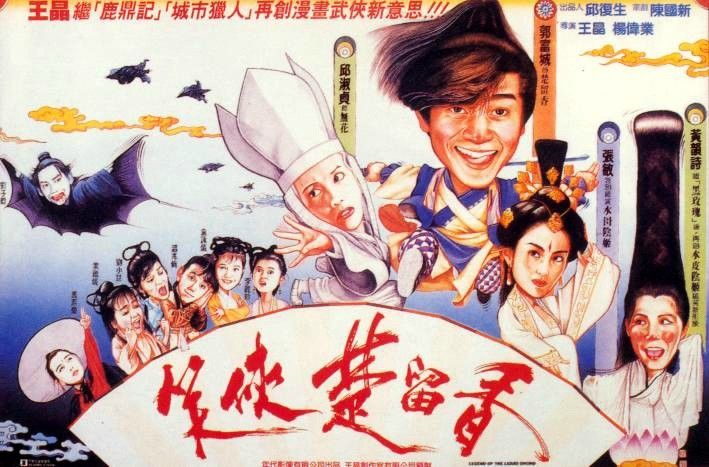
(Fun fact: “Legend of the Liquid Sword” is as it turns out the title of a Wuxia movie, which is where the iconic GZA album in turn takes its title from. Its a pretty cool flick too.)
This would thus mark the earliest beginnings of Wuxia and martial arts fiction in general creeping its way Westward out of Asia and into American pop culture. And not long after Bruce Lee would find massive crossover fame in mainstream America, thus bringing the popularity of martial arts cinema further out of the black ghettos and into the straightlaced middle class white world.
However as noted, Lee wasn't particularly fond of Wuxia, and kept his (tragically short) output completely relegated to grounded, non-mythical-bsed kung fu. As Lee was for the time THE mainstream face of Asian martial arts cinema to regular Americans (and indeed the primary driving force behind its sudden explosion in wider popularity), standard, non-mystical kung fu was what most of the non-grindhouse-patronizing Western mainstream was left familiar with.
Lee was also signed with Golden Harvest, who as I noted were FAR less reliant upon Wuxia than Shaw was at that point, and indeed were at the time much better known for their more reality-based (and often quite 70s gritty), decidedly non-fanciful kung fu films: thus the overall Golden Harvest style was far better known in the 70s to mainstream American viewers than Shaw's more outlandish magic and myth-based kung fu films.
Nonetheless the metaphysical zaniness of Wuxia had still indeed made its mark here in the U.S., but it was largely relegated to the underground, the niche, hardcore nerds, and the sleaze pit theaters in the sleaze pit parts of the big cities.
Still, it would crop up from time to time in various Western outlets such as Marvel Comics when in the mid-70s they created Shang Chi, Iron Fist (their own resident Wuxia-themed superhero), and the mystical hidden lands and city of K'un-Lun (Marvel's own rough approximation of Jianghu, a magic hidden area of China where all manner of Wuxia lore is real).

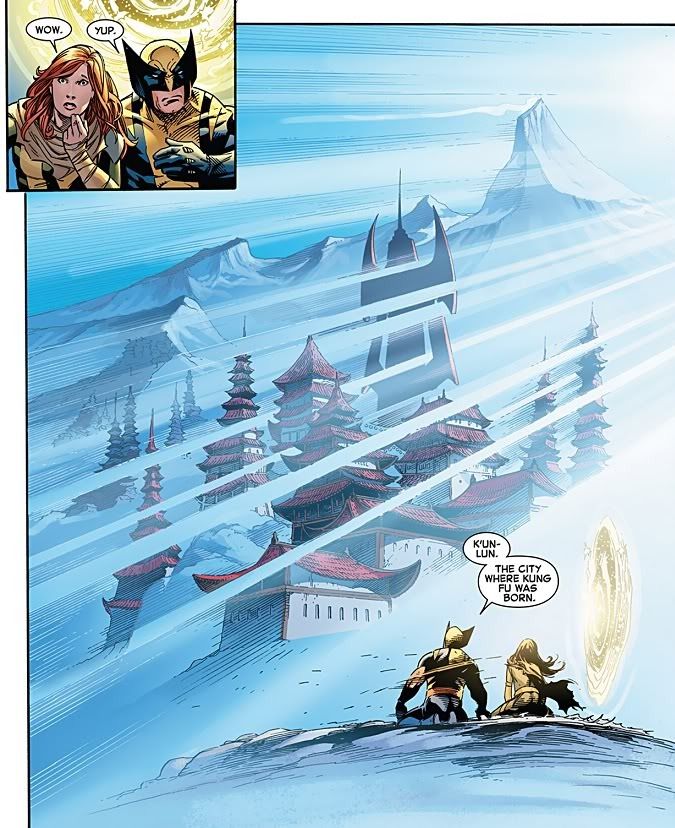
The single most famous example of elements of Wuxia lore popping up in a piece of mainstream Western media during this time period, without question, is of course the original Star Wars trilogy. That Star Wars is a total hodgepodge of disparate pulp influences, both domestic and foreign, has long been common knowledge. But amongst its morass of pulp film serial, WWII drama, space opera, heroic myth, and Chanbara/Jidaigeki (classic Samurai) influences is also Wuxia.
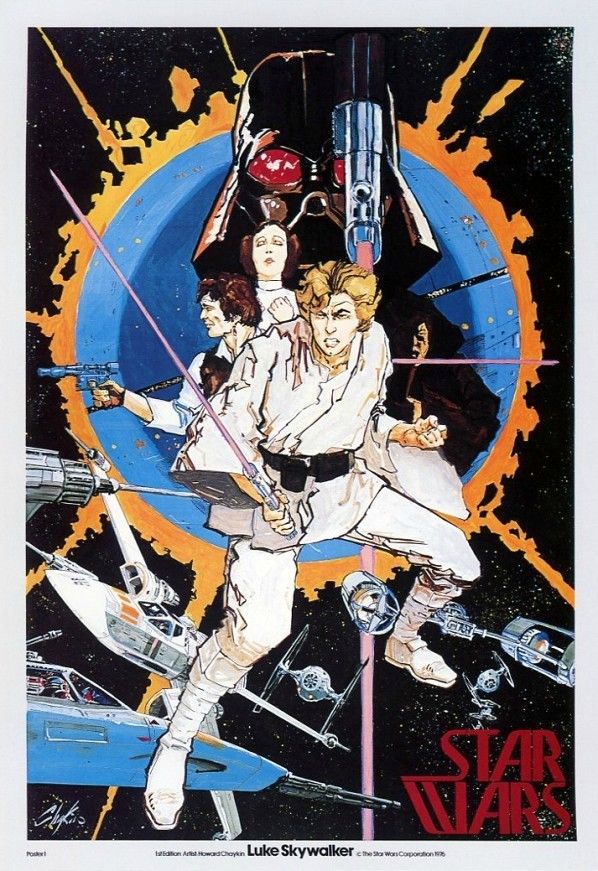
(A Flash Gordon Serial re-imagined with flourishes of Wuxia, Chanbara, Joseph Campbell, and WWII propaganda: Star Wars in its own way was a bit of foreshadowing of what was to come for Wuxia in its native land.)
Wuxia is in fact arguably among Star Wars' most integral influences, certainly at least when pertaining to the lore of the Jedi Knights: the Jedi themselves are just as purposefully reminiscent of Xia/the Wulin community as they are classic Samurai archetypes, and the concept of Chi/Ki as a universal life energy inherent within nature is at the heart of The Force, which is generally agreed to be one of the most fascinating and alluring elements of the original trilogy by most fans.
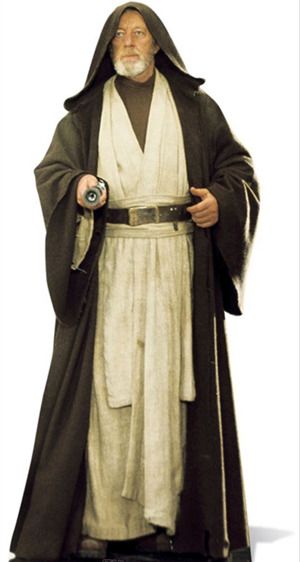
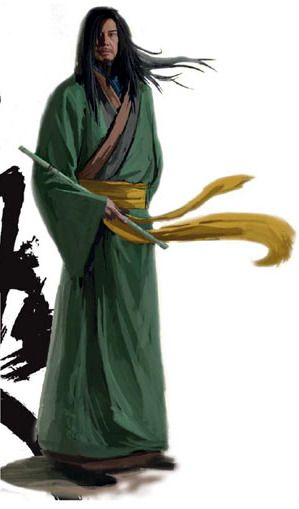
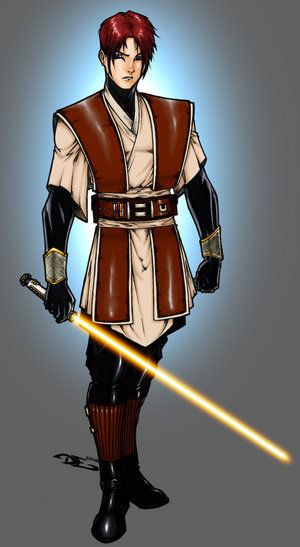
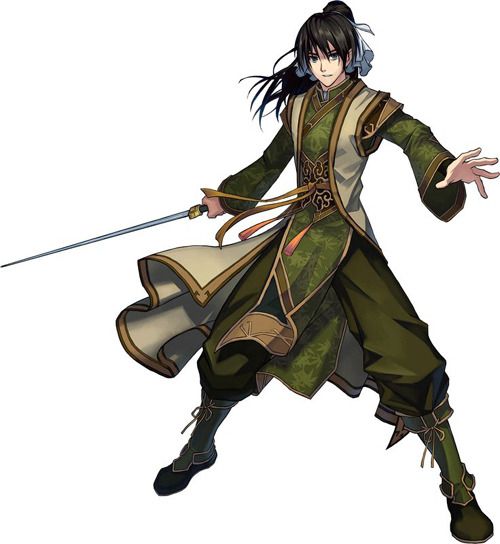
Not only does the Force closely mirror Ki at a basic conceptual level, but even in terms of how its portrayed on screen, via different sects and clans of characters being able to tap into it with hard training thus allowing them to use the power of The Force/Chi to “sense” one another through it as well as using it to mentally levitate objects and increase their own physical prowess to leap about with superhuman agility. Even Luke's famous training sequence on Dagobah with Yoda is directly reminiscent of the sorts of metaphysical kung fu training that most Xia undergo in a great many Wuxia stories.
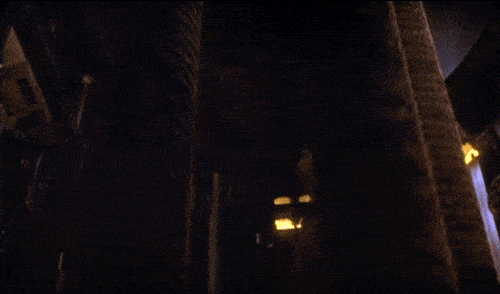
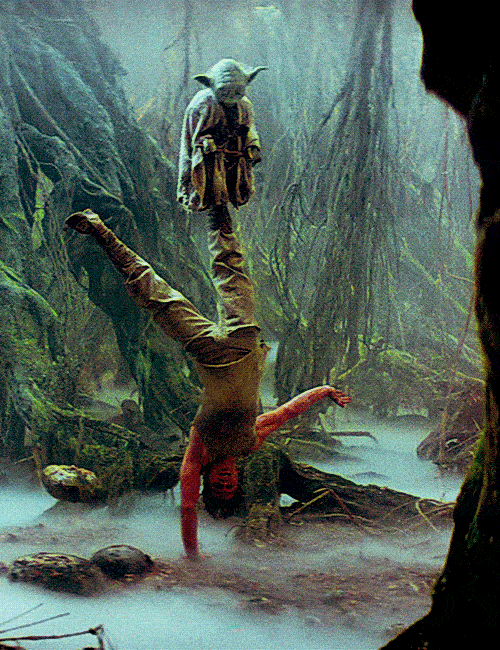
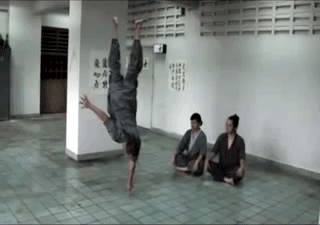

Before we proceed any further into this, at this point I'd like to take a moment to apologize for how generalized I've kept large swathes of this whole info dump session thus far. But you have to understand something: at the risk of repeating myself and belaboring a point here, it can never be overstated the palpably overwhelming degree to which Wuxia is a MASSIVE fucking genre with an INCREDIBLY dense and rich history and array of individual stories and various retellings and reinterpretations of many of those stories spanning back countless centuries across SUCH an insane array of storytelling mediums.
Towards the end stretch of my tenure as a regular here, as I'd come to realize how staggeringly ignorant of this entire genre's existence much of this community (and wider modern Western Dragon Ball fandom in general) was and started talking about it a bit more in some of my later posts (almost coming within a hair's breadth at one point of appearing on the podcast to talk about aspects of it) I'd gotten the distinct, overwhelming impression from various other regulars here that I was beginning to be seen around these parts as some sort of resident “Kung Fu media expert” and academic scholar of all things relating to Martial Arts genre fiction and Wuxia in general.
And here's the thing about that: I couldn't be anything the least bit further from that, nor have I ever once remotely claimed to be in the first place. Despite how creatively I can string together a sentence or two and despite how long I can drone on and on about a constant, never-ending torrent of trivial bullshit, don't for one second think that I'm anything other than a total fucking dumbass when push comes to shove.
I've known throughout my life a fairly wide, diverse assortment of ACTUAL smart people, who in numerous fields of subject matter, up to and including this one here (Wuxia and ancient Chinese mythological Kung Fu lore) can soundly hand me my fucking ass without even pretending to put forth any effort into it. There's any NUMBER of Wuxia enthusiasts out there who can legitimately lay claim to being actual no-bullshit academic-level experts on the matter and could do what I'm doing now (overviewing just the barebones basics of the genre) whole vast, infinite WORLDS better than I've been doing thus far.
Compared to them, I'm a fucking simpleton. I'm the Beavis and/or Butthead to their Daria (probably more of a Beavis if I had to pick). The aptness of that particular analogy with regards to this topic is actually sort of integral to my own history as a Wuxia/Dragon Ball fan and will be revisited and explored in greater detail later on.
I digress. For now though, let me just apologize dearly to you all for being the “best” that you folks currently have to work with on this for the time being. That in itself is incredibly sad as, as I've said, there's FAR infinitely better knowledgeable scholars of all things Wuxia out there than myself; people who actually know Chinese and can quote you ancient Youxia poetry and literature chapter and verse and relay to you all sorts of incredibly fascinating history on some of the earliest ever incarnations of many of these stories and character-types. My knowledge of the truly ancient, nitty gritty historical Wuxia prose and lit predating the 20th century is nothing if not embarrassingly rudimentary and basic.
My biggest so-called “bragging rights” in this area is my having struggled my way through a couple of college translations of The Water Margin, Journey to the West, and about 70% of Romance of the Three Kingdoms in elementary school, doing a 6th grade book report on Li Bai...

(From a dog-eared collection of his poetry that I got in a dumpy-ass pawn shop for what couldn't have been more than 5 or 10 bucks)
...reading some online FAQs about a few select untranslated novels and the genre in general back in the early 90s, and watching a few raw, untranslated peking opera performances of a few ancient Wuxia myths on International Channel and a few Hong Kong cinema websites (during the really early days of when RealPlayer and Quicktime were “cutting edge”) in the mid to late 90s with what I can assure you was almost ZERO understanding whatsoever of any of the deeper nuances of the shows.
Voila, there, that's almost the entire length and breadth of my “academic/classical/historic” Wuxia expertise. Largely everything else I've known about it my whole life has been divined almost exclusively from a steady diet of Chinese comic books (aka Manhua), video games, bootleg VHS tapes of ungodly countless films, and access to International Channel back in the 90s (which played marathons of various live action Wuxia TV shows every single weekday afternoon, almost exclusively raw and unsubbed). Fucking pathetic.
Rest assured I am but an extremely, painfully average fanboy of this stuff, bred largely on the film and comic book output of the genre in the late 80s/early 90s (me being if nothing else a massive creature/product of the late 80s/early90s), as the vast overwhelming majority of my selection of example images and gifs will certainly attest.
And its with that in mind, that we'll be moving away from any laughably piddling attempts on my part of tackling the truly ancient, historical background of the genre and focus firmly on its contemporary media history... with a particular emphasis on film.
Since this whole section is essentially going be a nerd history lesson, this is without question going to be the overwhelmingly largest, densest portion of this entire massive info dump: so its probably best that it be broken up into a few sub-sections for the benefit of clarity and everyone's sanity.
Wuxia in Modern Media Section I: The Classic Years (1929 - 1970)
Considering Wuxia's immense cultural importance and near-universal, unceasingly bottomless popularity in its native China almost all throughout its history, little time was wasted before it made its mark in early 20th century media. Wuxia has been a part of more modern Chinese media and pop culture for almost literally as long as the existence of film itself.
That's right kids, that means that Wuxia was also very much around for the era of Silent Film and Film Serials.

Pictured above is a still from The Burning of the Red Lotus Temple, one of the earliest Wuxia films... possibly THE first ever Wuxia film (making Wuxia a fairly late genre entry in the history of silent film). A serial released in a massive 16 installments from 1928 to 1931 and adapted from a newspaper strip (told you this genre invaded literally EVERY form of storytelling in existence), it tells the story of a long, daring rescue of a martial arts master by his devoted students from a large temple filled with hidden enemies, traps, and other dangers.
The temple in question of course is the infamous Red Lotus Temple, a hideout for cutthroat criminals who's MO is masquerading as benevolent Monks (the Red Lotus Temple would make return appearances in a great many more Wuxia films and stories over the ensuing decades, even up through the 90s).
The influence of this film upon the rest of the genre across the rest of the 20th century and beyond absolutely cannot be overstated. This film essentially laid the basic groundwork for virtually EVERY wuxia film that would ever follow in its wake, from its pacing, setpieces, visual effects language, character dynamics and countless other storytelling tics...

…so of course, like so very, very many other early films of the Silent era, it remains tragically lost to time and is presently all but impossible to see anywhere with no known prints currently located. All that remains are still images and various scattered pieces of information and apocryphal trivia from various interviews, historical accounts, and production notes.
Another notable early Silent Wuxia film that DOES still exist however is 1929's Red Heroine. Telling a very standard, rote murder-training-revenge arc (that would of course become an all too familiar stock cliché in this genre), the titular Red Heroine is a young peasant girl named Yun Ko (played by then-popular Chinese actress Fan Xuepeng, who would become in the wake of this film one of the first ever Wuxia stars) who begins the film an average innocent young lady whose village is raided and sacked by a corrupt warlord general. Her kindly old grandmother ruthlessly murdered in the attack and her hapless scholar cousin unable to protect them, Yun Ko is captured and taken to the general's fortress to be made a sex slave in his harem.
Before she can be violated by the general's men however, she's rescued and taken away by an old hermetic (read: Xian) monk by the name of White Monkey who of course is also a great Wulin martial arts master. White Monkey takes Yun Ko under his wing as his student and trains her in the supernatural martial arts. By the end of her 3 years of training, Yun Ko is a master fighter capable of flying, teleporting, and other great feats of superhuman strength, allowing her to return to the general's fortress and wreak bloody revenge upon the evil marauding army.

(Yun Ko soars into battle)
As primitive and rudimentary as most Wuxia of the silent film era may be to modern viewers, these were obviously monumentally popular and groundbreaking films of their time period, bringing to vivid life for the first time ever ancient myth and folklore of Chinese culture only previously imagined in ancient writings, literature, and on the stage.
Indeed stage plays and Chinese opera performances were the closest that Wuxia had to be visualized prior to the advent of film, hence most all of the earliest ever Wuxia films (within and even for some time after the silent era in the early “talkies”) make extensive use of stage performance tricks and choreography for their action sequences, including EXTREMELY rough wirework for flying, puffs of smoke from the ground for “teleporting/materializing”, and hand to hand choreography that is more akin to stylized dancing than visceral combat.

The most cutting edge technological advancement used in the earliest Wuxia films was hand drawn rotoscoped animation for visually represented Ki techniques. These were an absolute marvel to Chinese audiences in the late 1920s when Burning of the Red Lotus Temple first made extensive use of it, and rotoscoping would continue to be the principal means of achieving the effect of Ki auras, blasts, and other assorted magical martial arts trickery throughout much of the entirety of live action Wuxia filmmaking for a great many decades all the way up until the advent and use of CGI became increasingly commonplace during the latter half of the 1990s.


In a serendipitous bit of cultural foreshadowing (which we'll get to the payoff of momentarily) the early silent era Wuxia landscape tended to be an extremely populous-driven film movement, with the genre most loved and consumed by audiences of poorer, lower class backgrounds.
As can be seen just in certain elements of Red Heroine as just one example, there was a hint of lurid pulp and exploitation prevalent in many Wuxia films, along with the general running anti-authoritarian/anti-establishment themes that come with stories focusing on a staunchly individualistic, authority-shirking warrior caste such as the Xia/Youxia, as well as the common Wuxia subtext promoting the individual's accomplishment, talent, and self-improvement over that of collectivist/conformist thinking.
This did not sit too well with the then-first emerging Communist Party of China, who early on saw these sorts of films as threatening, rabble-rousing among the masses, and promoting ideas diametrically opposed to that of Communist principals, making early Wuxia films for some years frequent targets for government raids, confiscation, and banning.
Combined with a general carelessness towards film preservation during the silent era as an overall whole and the easily decaying nature of early film stocks, and it unfortunately makes a GREAT deal of the early silent era of Wuxia films tragically, heartbreakingly lost forever to time, with only a relatively RARE select few films still surviving today.
This hostile attitude towards populist Wuxia films by the government would lax a tremendous deal after the Chinese Revolution of the late 1940s, which saw the creation of what we've come to know since as the People's Republic, as well as the 2nd assimilation of Hong Kong into Great Britain (Hong Kong being where a GREAT deal of Chinese films, martial arts/Wuxia and otherwise, are generally made). All just in time for the talkie (and soon later, colorized) era of film coming into being, along with far better standards for film preservation in general.
The 1950s would be another banner decade for 20th century Wuxia within an entirely different medium. The 50s saw a MASSIVE resurgence in popularity of Wuxia novels and literature, primarily launched by the absolutely monumental success of seminal and legendary Wuxia author Dr. Louis Cha (better known by his pen name, Jin Yong).

(Dr. Louis Cha, aka Jin Yong, indisputably the single most influential and prolific Wuxia writer of the last 60 years.)
Throughout the better part of the 1950s Dr. Cha would pen an absolutely staggering number of some of the most indispensably important Wuxia tales that would come to define the genre in its modern day context, including the Condor Heroes trilogy (Legend of the Condor Heroes, Return of the Condor Heroes, and the earlier mentioned Heaven Sword and Dragon Sabre), the Smiling Proud Wanderer series, Demi-Gods and Semi-Devils, and far, far too many more to list.
Many of Dr. Cha's novels are still to this day routinely adapted in an unbelievable array of adaptations spanning film, television, radio, animation, comic books/manhua, video games, and the stage, putting his stories easily in the same league of ubiquity as some of the most ancient and time honored Wuxia myths from the genre's ancient origins. Without his contributions, its entirely fair to say that the Wuxia genre's modern day landscape would've been a VASTLY different entity entirely.

(The Wuxia stories of Louis Cha have invaded every square inch of media for the last 60 years. Pictured above are a sampling of different individual adaptations just for solely Legend of the Condor Heroes alone.)
Other notable Wuxia novelists would also come about during the 50s, including Gu Long, Liang Yusheng, and Sima Ling, making the decade generally seen as the defining golden era for modern literary Wuxia.
Back on the film end of things, more Wuxia talkie serials would be made throughout the 1950s and early 1960s (the first ever film adaptation of the Buddha's Palm mythos being a significant one), until the advent of a significantly HUGE player in the Chinese filmmaking world (particularly that of martial arts and Wuxia films): Shaw Brothers Studios.

Cue the fanfare...
Founded by brothers Runje, Runme, Runde, and Run Run Shaw, the impact of Shaw Bros. Studios on the martial arts filmmaking landscape is utterly impossible to succinctly summarize. A juggernaut that utterly and indisputably DOMINATED the martial arts filmmaking landscape throughout Asia all throughout the 1960s and 1970s, Shaw Studios was a well oiled machine that cranked out literally dozens upon dozens of films a year at their apex. The vast overwhelmingly majority were martial arts films, but they would also dip into other genres as well, including horror, romance, drama, and even at one point Tokusatsu (seriously).
Their only truly significant competition, which first came about in the early 70s, was Golden Harvest Studios, who would be for some years the only major Chinese film studio - also specializing heavily in martial arts films - to successfully hold their own against Shaw Studio's dominance. Indeed during the 1970s (a famously banner decade in general for Chinese martial arts cinema), they were effectively “The Big Two” of kung fu filmmaking, effecting an almost Marvel vs DC Comics/Nintendo vs Sega-like rivalry.

Does this remind you of anything?
A major difference between the two studios however (particularly more so in their earlier years) was their treatment of and attitudes towards Wuxia. While Shaw Brothers produced a TREMENDOUS number of incredibly outlandish and over the top wuxia films alongside their more grounded, straightforward martial arts films, Golden Harvest early on identified themselves as the more “grounded, gritty, realistic” alternative, and who - while still producing a certain amount of them - overall substantially downplayed Wuxia within their overall output in favor of much more (comparatively speaking at times) realism-rooted kung fu films.
Legend has it that this was a significant factor in Golden Harvest scoring one of their most crippling long-term victories over Shaw Studios in the 70s: their signing of a certain martial arts performer by the name of Bruce Lee, who was quite famously not a very big fan of Wuxia (indeed at times a rather outspoken detractor of it) and greatly preferred more grounded in reality martial arts filmmaking. Images have floated around for years of Lee, during the period where Shaw Studios were still attempting to court him away from Golden Harvest, being costume fitted for various potential Wuxia roles, which Shaw generally made mandatory to all their actors: something which likely did not please or excite him too much.

(What could have been: Lee as a stuck up, pompous Mandarin scholar who learns mystical kung fu and becomes an embittered, badass villain/anti-hero of the Wulin world? Admit it, you want a peak into the alternate reality where that movie actually happened.)
Of the many, countless reasons for why Bruce Lee was a Big Goddamned Deal in the world of martial arts cinema (which you can easily read and view untold decades worth of writings and documentaries on the subject) was an especially HUGE leap forward in the evolving of martial arts filmmaking and on-screen fighting that he, and Golden Harvest in general, where largely responsible for.
A stickler for naturalism and a staunch forward-thinking progressive (hence a big part of his dislike of Wuxia: Lee found the genre hokey and rooted too deeply in the past, traditionalism, and increasingly out of date martial arts filmmaking principals, and thus saw them as a negative, discrediting factor in the rest of the world outside of Asia taking Kung Fu cinema seriously), Lee was among many other things a trailblazer and pioneer of breaking on-camera martial arts choreography away from the stiff, dance-like choreography of Peking Opera plays, and instead bringing a previously unheard of level of naturalism and realism to how the fights felt and came across.
This would, gradually and over time, revolutionize how ALL martial arts fighting would be depicted on camera. While many Golden Harvest performers, choreographers, and stunt people would quickly adapt to and embrace this incredible new form of fight choreography, Shaw would for a great many years remain stubbornly resistant to it. Beyond giving Golden Harvest a distinct identity apart from the then-towering juggernaut of martial arts cinema that was Shaw Studios (and thus allowing them to compete directly against them in ways that other studios struggled to), this would of course inevitably over time bite Shaw Bros. in the ass in other equally BIG ways... but we'll get to that shortly.


(Old school vs new school. On the left: stilted, stage-like left, right, left, right! One, two, three, four, one, two, three four! On the right: silk-smooth movement, a sense of unpredictable spontaneity, and gritty viciousness. As early as the dawn of the 70s, Lee was truly ahead of the curve.)
With Lee as the front and center-most superstar in Harvest's corner, other talents would emerge from the upstart studio to rival Shaw's stable of performers, including Carter Wong, Hwang In-Shik, Angela Mao (probably one of the all time most beloved and iconic female martial arts superstars who ever lived and one of my childhood heroes), and of course the incredibly charismatic and impossibly skilled Hwang Jang Lee (another martial artist who I positively worshiped for my entire adolescence).


All would star in numerous martial arts films that were often hard-edged, gritty, more grounded counterpoints to Shaw's overall larger fixation on ancient Chinese Wuxia lore and over the top stylized mystical martial arts fighting and tropes, with Golden Harvest as a studio only comparatively rarely venturing into Wuxia themselves (and certainly never with Bruce Lee's participation natch).
Nonetheless, even with the more relatively down-to-earth Golden Harvest as a constant ever-present thorn in their side, Shaw Brothers were for a few decades THE face and voice of Wuxia in Asian filmmaking. The sheer staggering number of films they produced in Wuxia alone (much less all their other genre endeavors) defies comprehension, many of which remain influential, stone cold classics to this very day.
Timeless classics Golden Swallow and Come Drink With Me, adaptations of Water Margin and Journey to the West, The Magic Blade, King Boxer, One-Armed Swordsman, Fist of the White Lotus, Five Deadly Venoms (introducing to the world the Venom Mob, a troupe of incredibly charismatic, versatile, and well-liked martial arts actors), the nearly-lost gem The Black Tavern, Have Sword Will Travel, Temple of the Red Lotus (Shaw's own remake of the above-noted lost silent classic The Burning of the Red Lotus Temple), and of course their defining crown jewel 36th Chamber of Shaolin... Shaw's output is among the most rightly celebrated and beloved in wuxia (and just general martial arts, which I barely even touched on above) film fandom, more than justifiably so.

(One of the most towering legacies in all of martial arts film history.)
Countless superstar names in kung fu filmmaking would come out of Shaw studios, from directors Chang Cheh and Lau Kar-Leung - both responsible for a vast majority of Shaw's best films, with Cheh in particular also becoming notable for often blending the fanciful silliness of Wuxia with harsh, graphic violence and gore...

...as well as instantly iconic on-camera talents like Lo Lieh, Jimmy Wang Yu, Kara Hui, Wang Lung-Wei, Cheng Pei-Pei, Ti Lung, the tragically gone-too-soon Alexander Fu Sheng, the aforementioned Venom Mob (including one of my personal all time favorites, the disgustingly talented Philip Kwok), and of course the one and only great himself, Gordon Liu (the overwhelmingly most likely candidate for the principal basis of Kuririn).

While there were certainly some stray, but no less immensely notable martial arts and Wuxia films made outside of either Shaw Bros or Golden Harvest - particularly by the great King Hu, who made wuxia movies for BOTH studios, as well as outside of them entirely: A Touch of Zen and the original Dragon Gate Inn (two of the all time greatest Wuxia films in history) were notably made by Hu without either Shaw or Harvest, as well as some very notable Taiwanese-produced indie kung fu films – overall the 60s and vast bulk of the 70s were indeed the golden era of Shaw.
Many more modern martial arts/wuxia filmmaking staples would evolve and grow to prominence thanks largely to Shaw, from atmospheric, Spaghetti Western-like foreboding pacing and tension building (your pre-fight “drawn out staredowns” and the like), as well as their instantly iconic and distinctive style of musical scores (traditional Chinese orchestral, very brassy and with just a hint of 70s funk): and for Westerners of course, the horrendously, gloriously bad dubbing.
Wuxia in Modern Media Section II: The Grindhouse Years – First Crossover Success in the Western World (1970 - 1979)
Speaking of Shaw's (and Harvest's) impact on us Westerners, I'd be remiss if I didn't point out that end of the equation. Over in America during the late 1960s and throughout 1970s (and 80s even) there was a growing new venue for film viewing known colloquially as the Grindhouse Theater.

Some of you may have heard the term in more recent-ish years thanks to constant stumping/promoting of it by the likes of Quentin Tarantino, but for those of you who are still completely oblivious to such things, I'll explain (as this is CRUCIALLY important to the topic anyway).
Grindhouse Theaters were low rent, often incredibly filthy, scummy, decrepit shithole little movie theaters that largely operated in major urban cities (particularly in New York). Generally found in the poorest, most dangerous and crime-ridden areas, Grindhouse Theaters were as FAR from mainstream viewing as you could conceivably get.
Specializing in showing amorally exploitative films (from rape films, to nun fetish movies, chainsaw slasher killer films, biker thug epics, and straight up porn of the vilest, sickest kind) to an audience of (certainly not always, but very often) junkies, trench coat-wearing perverts, and random street weirdos, Grindhouse Theaters were the kinds of places where the skeevy, mangy, leering creep you hope to never run into while walking home alone through the scary part of town late at night might head off to to kill time and relax.


So... what in the atomic powered fucking hell could something like THAT of all things have to do with Wuxia? Plenty.
You see, apart from the sick, twisted shit they were most known and infamous for, Grindhouse Theaters specialized in showing a pretty diverse array of other things as well. As their general choice of locations would denote, Grindhouse theaters were businesses of EXTREMELY limited budget and means. They wouldn't show your average, mainstream, A-list features not only because the sort of clientele they catered to would likely not hold the slightest interest, but also because they straight up often couldn't AFFORD the damn film prints even if they actually wanted to show them.
The film selection of a typical grindhouse theater was as much borne out of economic necessity as it was the incredibly fucked taste of the audiences: these were cheap, dingy theaters located in poor, dingy neighborhoods, and they got exactly the kinds of cheap shit that they could afford to get: and these films were largely so cheap to get in the first place because no self-respecting mainstream theater in the “straight-laced, proper” parts of town had the slightest interest in showing them. Some were crazed indies made by utterly bonkers eccentrics, but others were also Mafia funded: but that's an entirely other story unto itself.
Grindhouse theaters were thus a foster home to the unwanted bastard, deformed, abandoned freaks of the cinematic world. So of course this would include things like scat porn and movies about genital mutilating cannibals and sexually maladjusted serial killers who fuck homeless people to death with power drills.

(Oh yes, that's an ACTUAL grindhouse movie too.)
BUT... grindhouse theaters were also a viable venue for OTHER extremely diverse, fascinating curios besides those.
I doubt I'll be shocking anyone when I note that mainstream America in the 1970s was still a pretty great deal culturally xenophobic. It took a foreign filmmaker of IMMENSE artistic prestige (a Jean-Luc Godard type) to get their stuff seen and appreciated by an American public that was even halfway close to mainstream back then (like say, a college campus-type crowd). Any regular old pulpy genre effort coming from overseas usually had about a snowballs chance in hell of ever getting shown in a regular American theater in mom & pop middle American suburbia, no matter how well made or legitimately interesting it might otherwise be.
Thus grindhouse theaters would often step in and purchase prints for all sorts of hugely interesting (and absolutely bonkers bizarre) foreign movies to further pad out their nightly showings of gore, tits, and sleaze. Spaghetti Westerns and arty giallo thrillers from Italy (that walked a VERY fine tightrope balance smack in between legitimately elegant and classy as well as luridly filthy and skeevy) were among the favorites, but also among them was... Chinese kung fu films. Both standard kung fu and supernatural Wuxia.









(Come for the gang-rape and gore-porn, stay for the silly-fun antics of ancient Chinese Kung Fu mystics flying about.)
So it was that, as much of a shock as this may come to some folks here, the martial arts/Wuxia genre gained its very first ever true burst of popularity and exposure in North America in the 1970s primarily from the same cesspit theaters that also heavily trafficked in the grossest, most vile and taboo cinematic sewage that crawled from the 70s exploitation circuit. Your average round eyes of the 70s probably got their first ever glimpse of Ti Lung or Lo Lieh flying around on wires and firing mystical laser beams from their fingertips at Chinese demons from the same double bill showing where they could also see an actual real life medical cadaver getting eyeball-mutilated in loving closeup in They Call Her One Eye.
Wuxia and Grindhouse cinema in fact actually have a very tight history/relationship with one another in the U.S. that spans at least a couple of decades (70s and 80s).
Shaw Brothers' King Boxer (shown in the Grindhouse Circuit under the alternate title “Five Fingers of Death”, which I've always personally preferred) was THE first ever smash hit Chinese Kung Fu film in America, largely preceding even Bruce Lee's crossover into more mainstream Western popularity. The success of King Boxer/Five Fingers of Death lead to a HUGE pouring over of CONTLESS kung fu and wuxia films in grindhouse venues across the country for a great number of years following; a great many of them Shaw Bros. and Golden harvest productions, complete with the legendarily terrible English dubbing that they'd largely become famous for for many, many decades down the line up to this day.

Aaaaaand cue that OTHER fanfare...
This as it turns out is also the origin of the immense popularity of martial arts films among black/African American culture. Black patrons were very commonplace in grindhouse theaters as they were located in a great many largely black ghettos in the 70s (hence Blacksploitation films, also a grindhouse staple). Of all the kinds of films shown in grindhouse theaters, Kung Fu and Wuxia films (apart from blacksploitation films at least) were BY FAR AND AWAY the biggest runaway success amongst black audiences.
Its not very hard at all to see why: remember the anti-authoritarian streak I talked about that ran in a lot of Wuxia? A tremendously great deal of Wuxia and Kung Fu films centered on strong, able bodied martial artists from often poor, rural communities that are under the boot-heel of a powerful, oppressive government/dictatorship. Often the hero would rise up against the oppressive warlords in the name of their village and, with little more than raw fiery righteous anger and talented skill, would knock said-oppressive tyrannical warlord/authority figure down a few pegs with a sound ass-whipping.


(On the left: martial artist/actor Jim Kelly personified the massive overlap between Kung Fu cinema and black grindhouses in the 1970s. On the right: rapper and founding Wu Tang Clan member RZA has taken up that mantle throughout the 1990s and 2000s, acting as one of the biggest celebrity fans/proponents for martial arts fiction and Wuxia to the point of offering vastly knowledgeable and insightful commentary tracks on DVDs/Blu Rays for a number of older classic Wuxia films and recently directing a Wxia film of his own, The Man With the Iron Fists.)
If you know a DAMN thing about black history in the United States, particularly pertaining to life in the slums/hoods, the appeal of these kinds of films to poor black audiences should be STRIKINGLY apparent. This would of course transfer over into hip hop culture as well once that came into being in the 80s. This is the very wellspring from which you get hip hop groups like the Wu Tang Clan and so forth (which now you also know from earlier where even THAT name originates from). In many respects, this closely mirrors the original appeal that the earliest silent Wuxia films had with lower class, poorer Chinese audiences in the 1920s (and which the then-still rising Communist government saw as a threat).


(Fun fact: “Legend of the Liquid Sword” is as it turns out the title of a Wuxia movie, which is where the iconic GZA album in turn takes its title from. Its a pretty cool flick too.)
This would thus mark the earliest beginnings of Wuxia and martial arts fiction in general creeping its way Westward out of Asia and into American pop culture. And not long after Bruce Lee would find massive crossover fame in mainstream America, thus bringing the popularity of martial arts cinema further out of the black ghettos and into the straightlaced middle class white world.
However as noted, Lee wasn't particularly fond of Wuxia, and kept his (tragically short) output completely relegated to grounded, non-mythical-bsed kung fu. As Lee was for the time THE mainstream face of Asian martial arts cinema to regular Americans (and indeed the primary driving force behind its sudden explosion in wider popularity), standard, non-mystical kung fu was what most of the non-grindhouse-patronizing Western mainstream was left familiar with.
Lee was also signed with Golden Harvest, who as I noted were FAR less reliant upon Wuxia than Shaw was at that point, and indeed were at the time much better known for their more reality-based (and often quite 70s gritty), decidedly non-fanciful kung fu films: thus the overall Golden Harvest style was far better known in the 70s to mainstream American viewers than Shaw's more outlandish magic and myth-based kung fu films.
Nonetheless the metaphysical zaniness of Wuxia had still indeed made its mark here in the U.S., but it was largely relegated to the underground, the niche, hardcore nerds, and the sleaze pit theaters in the sleaze pit parts of the big cities.
Still, it would crop up from time to time in various Western outlets such as Marvel Comics when in the mid-70s they created Shang Chi, Iron Fist (their own resident Wuxia-themed superhero), and the mystical hidden lands and city of K'un-Lun (Marvel's own rough approximation of Jianghu, a magic hidden area of China where all manner of Wuxia lore is real).


The single most famous example of elements of Wuxia lore popping up in a piece of mainstream Western media during this time period, without question, is of course the original Star Wars trilogy. That Star Wars is a total hodgepodge of disparate pulp influences, both domestic and foreign, has long been common knowledge. But amongst its morass of pulp film serial, WWII drama, space opera, heroic myth, and Chanbara/Jidaigeki (classic Samurai) influences is also Wuxia.

(A Flash Gordon Serial re-imagined with flourishes of Wuxia, Chanbara, Joseph Campbell, and WWII propaganda: Star Wars in its own way was a bit of foreshadowing of what was to come for Wuxia in its native land.)
Wuxia is in fact arguably among Star Wars' most integral influences, certainly at least when pertaining to the lore of the Jedi Knights: the Jedi themselves are just as purposefully reminiscent of Xia/the Wulin community as they are classic Samurai archetypes, and the concept of Chi/Ki as a universal life energy inherent within nature is at the heart of The Force, which is generally agreed to be one of the most fascinating and alluring elements of the original trilogy by most fans.




Not only does the Force closely mirror Ki at a basic conceptual level, but even in terms of how its portrayed on screen, via different sects and clans of characters being able to tap into it with hard training thus allowing them to use the power of The Force/Chi to “sense” one another through it as well as using it to mentally levitate objects and increase their own physical prowess to leap about with superhuman agility. Even Luke's famous training sequence on Dagobah with Yoda is directly reminiscent of the sorts of metaphysical kung fu training that most Xia undergo in a great many Wuxia stories.



Last edited by Kunzait_83 on Sun Jan 31, 2016 3:52 am, edited 3 times in total.
http://80s90sdragonballart.tumblr.com/
Kunzait's Wuxia Thread
Kunzait's Wuxia Thread
Journey to the West, chapter 26 wrote:The strong man will meet someone stronger still:
Come to naught at last he surely will!
Zephyr wrote:And that's to say nothing of how pretty much impossible it is to capture what made the original run of the series so great. I'm in the generation of fans that started with Toonami, so I totally empathize with the feeling of having "missed the party", experiencing disappointment, and wanting to experience it myself. But I can't, that's how life is. Time is a bitch. The party is over. Kageyama, Kikuchi, and Maeda are off the sauce now; Yanami almost OD'd; Yamamoto got arrested; Toriyama's not going to light trash cans on fire and hang from the chandelier anymore. We can't get the band back together, and even if we could, everyone's either old, in poor health, or calmed way the fuck down. Best we're going to get, and are getting, is a party that's almost entirely devoid of the magic that made the original one so awesome that we even want more.
Kamiccolo9 wrote:It grinds my gears that people get "outraged" over any of this stuff. It's a fucking cartoon. If you are that determined to be angry about something, get off the internet and make a stand for something that actually matters.
Rocketman wrote:"Shonen" basically means "stupid sentimental shit" anyway, so it's ok to be anti-shonen.
- Kunzait_83
- I Live Here
- Posts: 2974
- Joined: Fri Dec 31, 2004 5:19 pm
Re: Dragon Ball's True Genre: We Need to Talk about Wuxia
Wuxia in Modern Media Section III: The Hong Kong New Wave (1979 - 1987)
Moving our focus back to China for now though, by the late 70s and especially the early 80s, Shaw Brothers Studios was beginning to fall on hard times. There were a number of factors at work: chief among them was the financial strain of keeping such a massive fucking entity of a studio afloat for so long.
Shaw Studios was unlike any other movie studio before or since: cranking out so many movies within so short a time span utilizing a rotating roster of familiar cast and crew members across each movie, the studio was set up less like a traditional film lot and almost more like a small town or commune: many production crew members and even actors and stunt people would actually LIVE at the studio as their literal home for months, sometimes years at a time, bouncing in true workhorse-like fashion from one film project to the next in extremely rapid succession, sometimes with little to no breathing room in between.

(Birds-eye view of Shaw Studios circa the late 60s.)
By extension of this, there was over-saturation: by the end of their existence, Shaw had produced untold THOUSANDS of movies. Dozens would be put out every year: no mater how good the material, audience fatigue was inevitable.
As a consequence, Wuxia in particular was beginning to grow immensely stale and boring to Chinese audiences by the latter-end of the 70s. Telling and retelling and re-retelling many of the same old myths and legends on film in a very rigidly faithful fashion and with decreasing variation in style as time wore on, for a particularly bleak time in the late 70s Wuxia was starting to be seen in China as bland, predictable, and stuffy.
Part of it on Shaw's end was the sheer inertia of routine and the creative complacency that comes with success: due to how the studio was set up they were a well oiled machine, pumping out movie after movie after movie after movie in an almost assembly line-like fashion. Some degree of formulaic sameness was bound to overtake their output after awhile and audiences were getting wise to it; Shaw's box office fortunes began to sharply decline.
Meanwhile Golden Harvest were continuing to enjoy increased success. After Bruce Lee's tragic passing (which cut short the kung fu movie craze in mainstream/non-grindhouse America after a few years, at least for awhile), Golden Harvest would have the great fortune of stumbling upon another incredible find of a talent: a guy by the name of Jackie Chan.
At first packaged by the studio as an obvious Bruce Lee knock-off in several serious, gritty kung fu films that did not at all play to Chan's strengths as a performer, Chan struck it big for himself and the studio when he along with a certain director by the name of Yuen Woo-ping (know these days to modern Western audiences as the fight choreographer behind the original Matrix and Kill Bill, among other notable turn of the century Hollywood hits) would find HUGE success with a pair of comedy-oriented kung fu films: Drunken Master and Snake in the Eagle's Shadow.
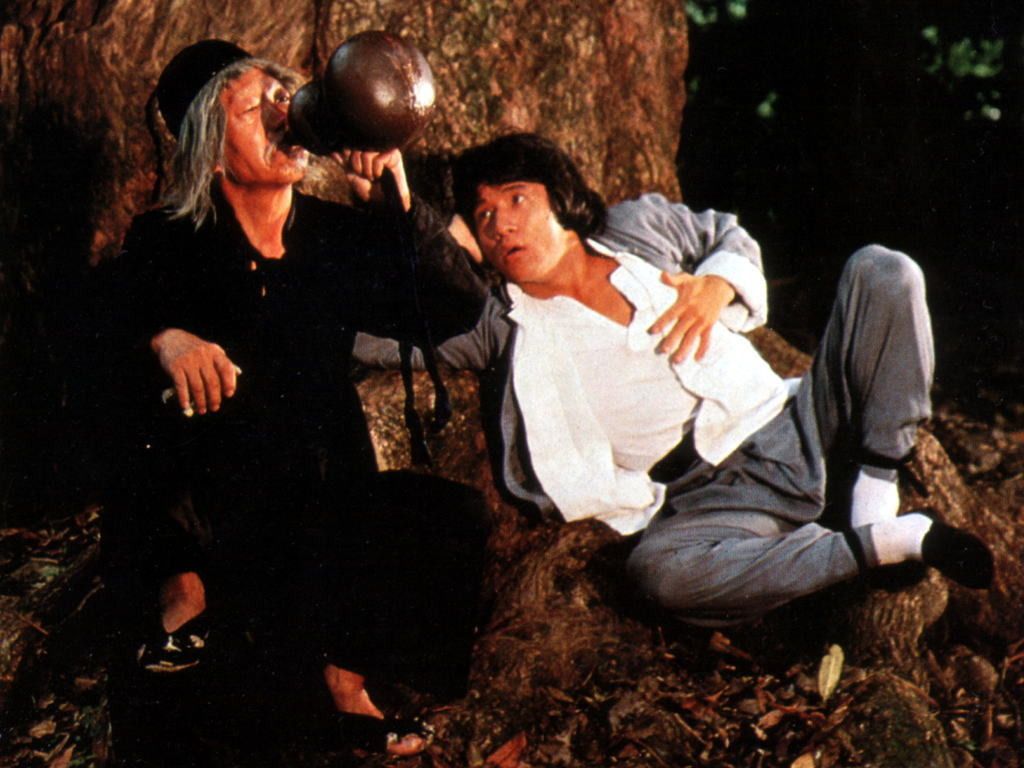
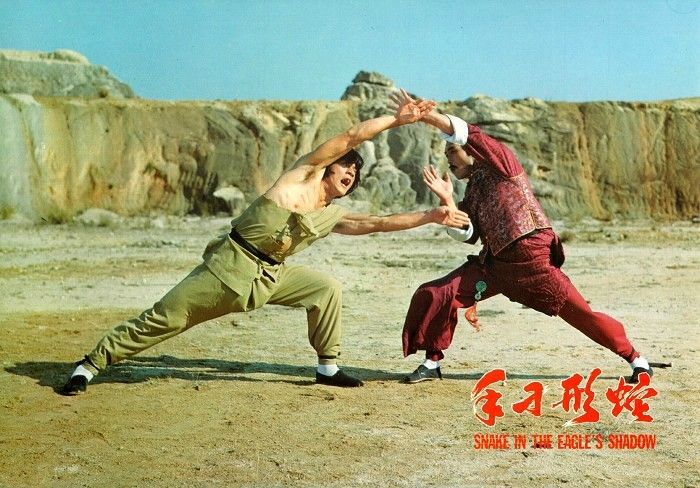
Made with both Chan as the star, Woo-ping as the director, and with largely the same cast and crew in general across both productions, both films were more thematically and stylistically linked rather than directly plot-linked. In both films Chan plays a brash, over-confident but inept young martial arts student (a pre-legendary Wong Fei Hung in Drunken Master, and an orphan adopted by a kung fu school named Chien Fu in Snake) who is trained by an eccentric old master (marvelously played in both films by Simon Yuen, older brother of Woo-ping and also by FAR the biggest basis for Muten Roshi) while staving off attacks from a terrifyingly lethal martial arts assassin (played in both by none other than Hwang Jang Lee).
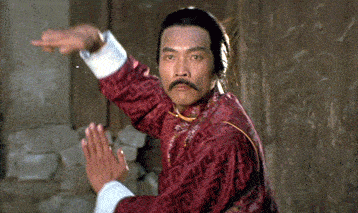
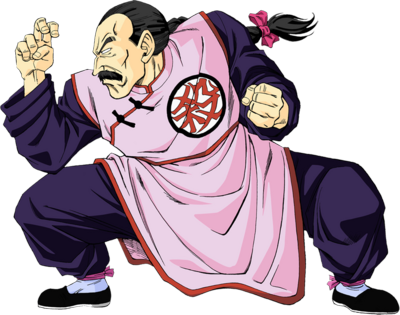
(Hwang Jang Lee as the murderous Sheng Kuan in Snake in the Eagle's Shadow. Hrmmm... something about him here looks somehow oddly familiar...)
That's the basic-most gist of both, though of course many particulars differ (including the fighting styles Chan is taught and that both films center on). What made the two films stand out so much and impact the culture at the time was the way in which they mixed Chan's then-fresh and exciting new brand of physical slapstick comedy with traditional Kung Fu storytelling tropes.
Mixing farcical comedy with martial arts in itself was nothing new, even back then. Indeed blending clashing tones of silly and serious is an important staple of martial arts storytelling that traces its roots back to Chinese Opera stage plays, which played to incredibly broad audiences and would attempt to include as much variety in content as possible for all kinds of tastes within the crowd.
What made Chan stand out so much was the distinctive STYLE of comedy he brought to his films which, unlike the traditional Chinese Opera-derived comedy of most kung fu films before it, drew from heavily Western Hollywood influences, namely silent film comedians like Buster Keaton (one of Chan's biggest lifelong heroes), which was an incredibly fresh, novel new approach to take to comedic martial arts action. Coupled with Chan's immense physicality and peerless sense of comic timing, these two movies completely blew the fucking doors off of the entire genre.
Along with the overall comedic style, Chan and Woo-ping further pushed forward (and would continue to push VASTLY more so well beyond just their first two films) the more “naturalistic” style of fight choreography pioneered earlier in the decade by Bruce Lee, and made that into an integral element of the two films' slapstick physical comedy gags.
While sometimes still dipping into older-fashioned stiff choreography in this pair of early Chan films (part of the “growing pains” of escaping such a long-held tradition of staging fights), large swaths of Drunken Master and Snake in the Eagle's Shadow showcase in their fights a revolutionary new form of cinematic martial arts that Golden Harvest had been steadily building towards throughout the 70s in stark contrast to the more traditionalist Shaw Brothers. A good deal of Chan's particular brand of physical kung fu humor just wouldn't have been able come across properly were he to have remained beholden to the Chinese Stage Opera-influenced style of stilted, “dance-like” fight choreography.
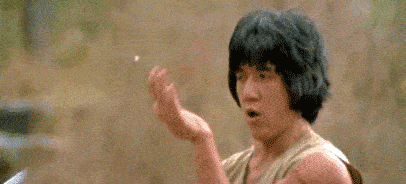
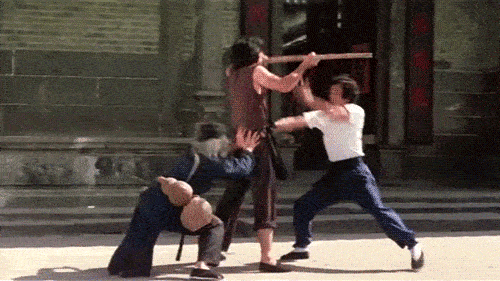
Despite being in many ways such a hugely different fighter/performer than Lee was, Chan in a roundabout way helped bookend the 70s in helping to finish what Lee originally began in evolving the on-screen portrayal of martial arts fighting. Despite both Lee and Chan trafficking in non-Wuxia martial arts films, their impact and influence would eventually over time cross-pollinate itself into the realm of Wuxia as well, as most cinematic Wuxia was generally that much more stringently shackled to the stage-like fight choreography of Peking Opera.
Along with holding rigidly to faithfully adapting many of the same stories, characters, and myths over and over and over again, Chinese audiences were also growing increasingly unimpressed and unenthused by old fashioned Opera House style stage-fighting, and were being increasingly wowed and drawn over by what Golden Harvest and their trailblazing performers were doing.
Because of this, and at the risk of belaboring the point, I cannot possibly overstate how much Drunken Master and Snake in the Eagle's Shadow were both HUMUNGOUSLY instrumental in the revitalization and evolution of martial arts cinema at the twilight of the 70s.
As the decade in which it enjoyed some of its greatest ever successes began drawing to a close, for a brief moment in time (even as it was still producing some of its finest ever classics) it looked like martial arts cinema was in danger of heading into a massive doldrums: the overseas Western enthusiasm for martial arts cinema (in the mainstream at least, discounting the grindhouse circuit where it remained a staple for some time longer) was beginning to die down quite a bit in the wake of Bruce Lee's passing. And after peaking financially with the box office smash Wuxia film The Sentimental Swordsman in '77, Shaw Studios slowly began its gradual decline as Chinese audiences grew more bored and jaded with their Wuxia formula.
A LOT ended up happening in these crucial years that forced the martial arts/Wuxia genres to evolve drastically and avoid a downward slide into cultural irrelevancy in their native lands. The late 70s into the early 80s was a CRITICAL period of massive change and artistic and technical growth for the martial arts genre, normal and Wuxia alike. And it came on multiple fronts.
On the one hand there was Drunken Master and Snake in Eagle's Shadow, which introduced more Western-tinged comedic sensibilities into martial arts cinema as well as further emphasizing “naturalistic” fight choreography, kickastarting the careers of both Jackie Chan and Yuen Woo-ping proper. The two of course would go on to make a string of incredibly major films that would help usher in a new, even more dynamic golden age of martial arts filmmaking.
But it wasn't JUST them that was responsible for the shift in direction that was to come. Change as massive as the sort that was to come for martial arts cinema in the next few years is often multi-pronged.
At around the same time in the late 1970s there were another group of rising young talents emerging in the Hong Kong film landscape: Ann Hui, Wong Kar-Wai, John Woo (a name that ought to be at least somewhat familiar to some of you I'd hope), Patrick Tam, Ringo Lam, and Tsui Hark, among others.
A loosely connected group of upstart, young, hungry filmmakers at the tail-most end of the 70s going into the early-most 80s, with tons of fresh ideas and lots to prove, these people would in short order and on multiple fronts COMPLETELY and irrevocably alter the Chinese filmmaking landscape in ways that more than earn the hyperbolic title of “revolutionary”; and did so in ways the sort of weirdly mirror the indie film boom over in America during the 80s and early 90s, spearheaded by guys like Jim Jarmusch, Steven Soderbergh, Quentin Tarantino, and Richard Linklater.
Both this group of Chinese filmmakers themselves as well as the era and movement in Hong Kong cinema that they would usher in would later come to be known under the somewhat pretentious-sounding title of “The Hong Kong New Wave.”

(From left to right: Wong Kar-Wai, John Woo, Tsui Hark, Ann Hui)
Essentially what they did was make a series of largely independent, but MASSIVELY high quality and, for their time, staggeringly original films across various genres (comedy, horror, drama, romance, crime/gangster, martial arts/wuxia, etc.) and thus piece by piece through these films helped redefine and massively push forward the evolution of each of their respective genres (and thus the Hong Kong film landscape as a whole) by quantum fucking leaps.
As much as I could lovingly nerd out over each and every single one of these directors and all of their films (a great deal of which I grew up adoring dearly), this whole shpiel of mine here is of course all about Wuxia; so in the interest of keeping on point, the New Wave director of note and focus here is of course Tsui Hark.
Over the 35+ some-odd years of his career, Hark is intrinsically and forever linked to modern Wuxia filmmaking as we've known it across basically my entire lifetime thus far. Of all the incredible directors who've made an indispensable mark on the genre over the years, from King Hu on down to Lau Kar-Leung, few can be said to have had quite the sort of lasting impact that Hark would end up having (for better or for worse depending entirely on who you ask).
With Hark, it all began with his first film, released in the late 70s, not too terribly long after Chan and Woo-ping's back to back comedy double-whammy: The Butterfly Murders.
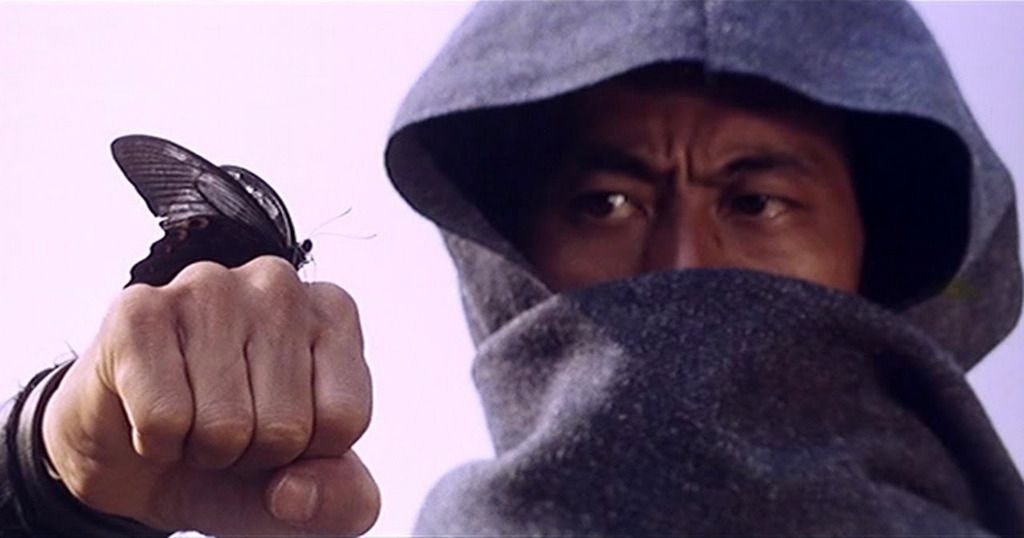
The Butterfly Murders is a Wuxia film of a style and premise that up to this point in time was something that was completely and utterly from another goddamned galaxy to even the most jaded of Chinese audiences.
The Butterfly Murders tells the story of a group of brave, powerful Youxia martial artists who are prompted to investigate a series of mysterious murders linked to documents by a famous scholar named Fong about some sort of freak attack on Shum Castle, a fortress far out in the most remote Jianghu wastelands, by swarms of poisonous killer butterflies.
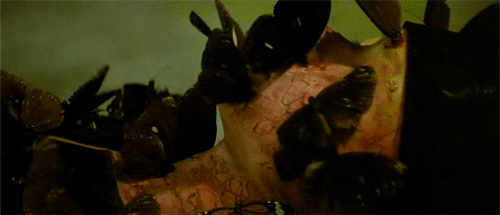
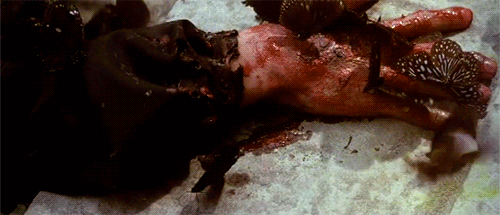
Hoping to find and rescue any survivors and figure out what exactly happened, the Youxia arrive and find the massive castle largely barren and corpse-ridden, save a few terrified survivors: Shum, the castle's master, his wife, their servant, and Fong the scholar whose documents lead the warriors here in the first place, all of whom had been taking refuge from the attacks throughout a series of secret passageways and underground catacombs hidden beneath the large castle.
The fighters quickly discover that apart from the survivors, they are not alone: the murderous butterflies responsible for the massacre are seemingly under the thrall and control of a mysterious, masked warrior lurking in the shadowed hallways of the castle who's also armed to the teeth with strange weapons that are as bizarre and exotic as they are brutal. Ruthless, stealthy, lethal, strong, and cunning, the masked killer begins methodically stalking and picking off the frightened survivors and the skilled Youxia alike one by one, leaving those remaining fighting desperately to stay alive and solve the mystery of the killer's identity and motives before they're added to the body count next.

So therein lies the unprecedented originality of The Butterfly Murders: it is a hybrid of a Wuxia and a slasher film, with a Psycho-era Hitchcock and Agatha Christie bent to it. Coming out not too long after the original Halloween by John Carpenter and the advent of the modern Slasher film in America, The Butterfly Murders was, in 1979, on the absolute bleeding edge of melding traditional Eastern Wuxia action and characters with far more modernly Western sensibilities: in this case that of slasher film storytelling and tropes (which were at the time then themselves still very new and fresh and not yet the subject of parody and self-awareness).
This hybridization also went well past even just the storytelling and narrative: the slasher film influences of The Butterfly Murders are evident even to the very core of the filmmaking itself. Featuring what was, especially for Wuxia at the time, a HEAVILY stylized look and cinematography that was derived largely from Italian Giallo films (mentioned earlier as another genre popular in the grindhouse scene: basically they're Italian slasher films with heavy doses of intensely stark psychedelic nightmare-logic inherent to their visuals and narratives), The Butterfly Murders was a Wuxia film that didn't just talk like a slasher film, but looked and walked like one too.

For stodgy Wuxia traditionalists, the film was seen as offensive, obscene, and puerile. For a wider Hong Kong audience that was by that point ungodly burnt the fuck out on years and years worth of stodgy, traditional Wuxia films however, The Butterfly Murders was a goddamned REVELATION and blew people's brains out the backs of their skulls with how incredibly unlike anything else it was in the whole damned history of the genre.
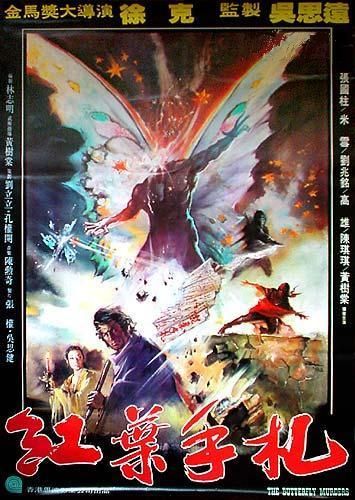
(Its also got a really fucking gorgeous movie poster to boot.)
In a genre as positively ancient as Wuxia, absolutely NO ONE had EVER thought to do something even vaguely like this. Only the first movie of Hark's in a VERY long and respected career spanning up to this very day, The Butterfly Murders lead to Hark becoming (like all his fellow New Wave directors) an overnight sensation in Hong Kong (and leading him to make films for Golden Harvest and several other rising new HK film studios, yet another crippling blow dealt to the now-flagging Shaw Brothers Studio). The concept of mixing modern (even foreign) genres with Wuxia lead to a HUGE revitalizing of the genre on a MASSIVE fucking scale, breathing fresh new life into it.
Hark's follow up to The Butterfly Murders however (and his first film with Golden Harvest) was the REAL feather in his cap... Zu: Warriors From the Magic Mountain.
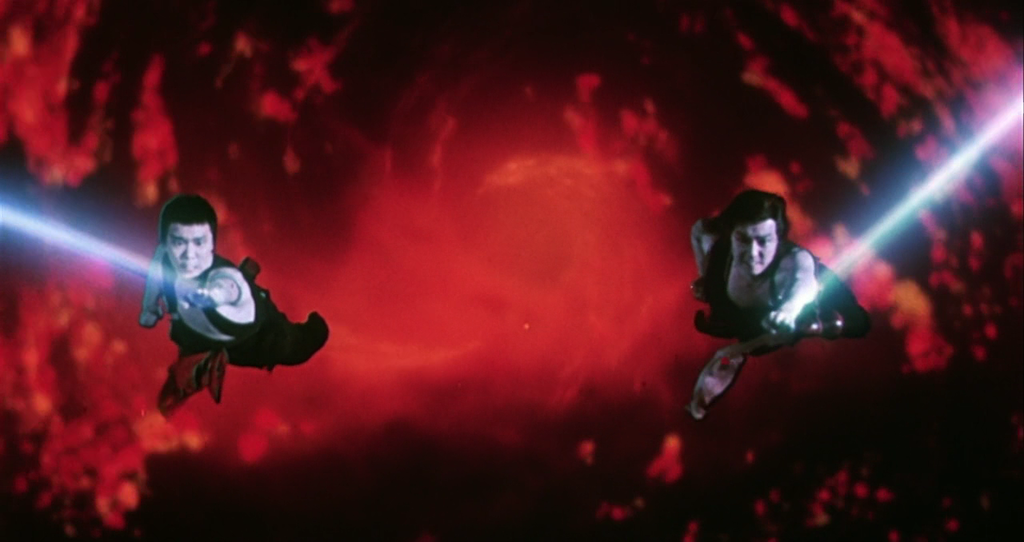
One of the single most important and genre-redefining films in all of modern Wuxia, Zu Warriors was and remains an IMMENSELY special film. To the genre's history in general, as well as to me on a personal level: it was in point of fact, my first ever “proper” exposure to Wuxia in the late 80s, solidifying me pretty much then and there as a fan of the genre for life, and thus leading me eventually a few years later into anime like Dragon Ball... and thus further later on onto this site and into the presence of all you schmucks.
But even past by own silly fanboy baggage with it, Zu Warriors completely upended everything about Wuxia filmmaking in Hong Kong up to that point. A box office smash and cultural touchstone of immense proportions, Zu Warriors wonderfully (and in an at times rather meta fashion) tells the story of a young, novice soldier Ti Ming Chi (played by the always amazing and forever underrated Yuen Biao), a deserter of a massive war between two rival nations at the base of the mystical Zu Moutains.
Weary of what he sees as a pointless and petty conflict, Ming Chi ventures further away from the fighting and into the deeper magical regions of Zu, whereupon he meets the reclusive and sorrowful Ting Yin (played by Adam Cheng and who is a character I already mentioned a bit earlier), a once-famous and incredibly skillful master martial artist.
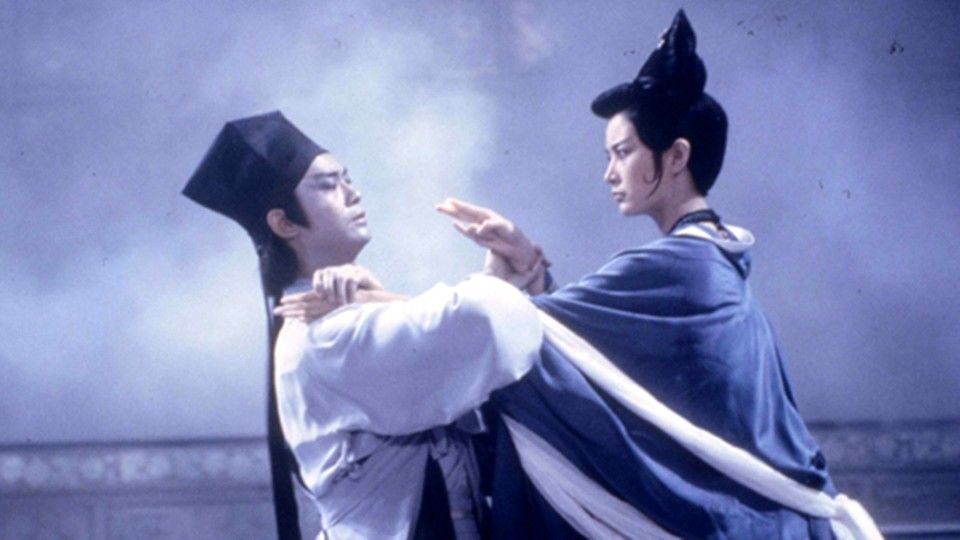
Learning about an evil, cursed entity know only as the Blood Demon whose ghoulish acolytes are plotting to set his power loose on all of Jianghu (as his essence is currently sealed within the body of a powerful old Xian named Long Brows, played by none other than Sammo Hung), Ming Chi now finds a cause he thinks is actually worth fighting for and convinces a reluctant Ting Yin to once again take up his blade and venture with him (accompanied also by a strangely timid Taoist monk named Yi Zhen) on a quest to a sacred temple high above the clouds wherein is housed a pair of enchanted twin swords whose powers are capable of vanquishing the Blood Demon back to the underworld once and for all.

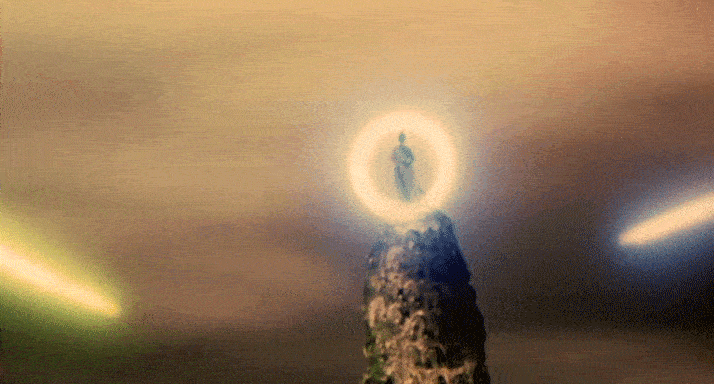
Save for some very interesting meta commentary (within the “generation gap” between Ming Chi and Ting Yin and their incredibly different, starkly opposing perspectives on the purpose of fighting), on the outset Zu: Warriors From the Magic Mountain sounds like a pretty solid, if standard, Wuxia yarn. What separated it from and elevated it high above others of its time is less the premise but the style and the overall execution of it.
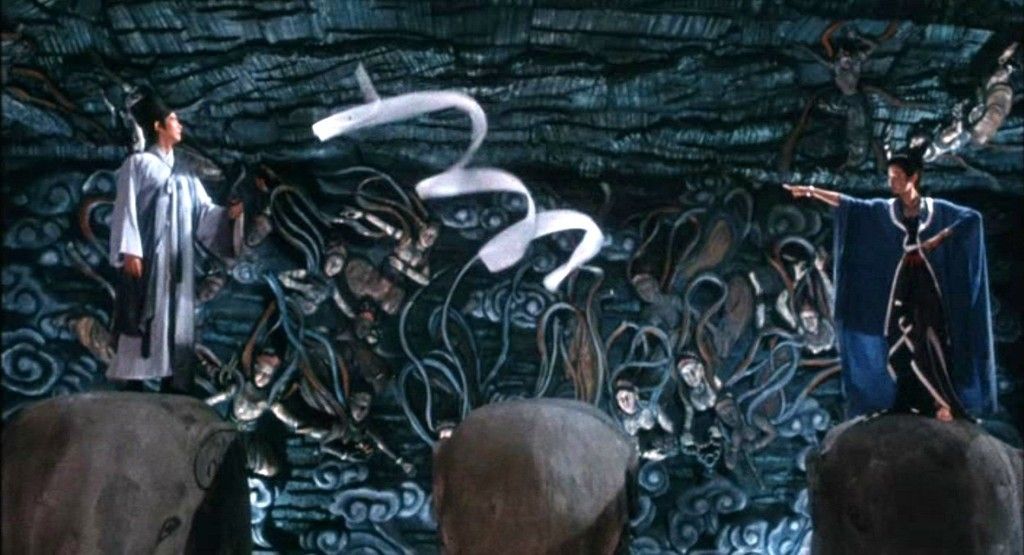
What made Zu Warriors such an incredible revelation in its day was the way that Tsui Hark finally brought Wuxia filmmaking into parity with the at the time (1980s) best of big budget Hollywood filmmaking, using not only then-cutting edge visual effects, but also moreover opening up the cinematography, scale, and scope of the film, its fighting, and its story to a level that NO Wuxia film was EVER capable of going even near up to that point. Featuring lush vistas and locations, extravagant sets, and gorgeous art direction, Zu Warriors also brought the regal majesty and ethereal beauty of Jianghu to life in a way that no wuxia film up to that point could accomplish.
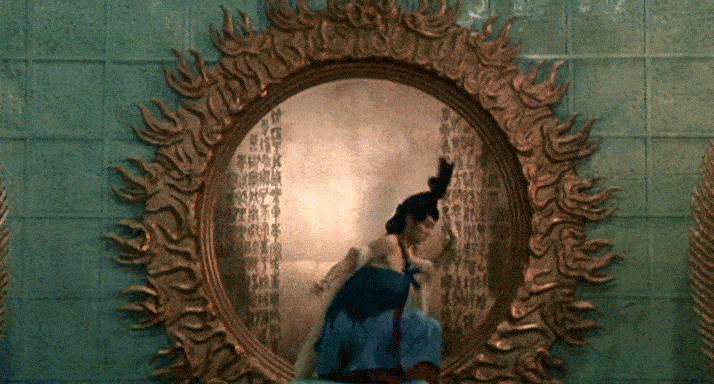
Zu: Warriors From the Magic Mountain is EASILY the sort of movie, in overall craft and beauty, that holds up alongside the most beloved of early 80s Hollywood classics like Wrath of Khan, Poltergeist, Blade Runner, The Terminator, Legend, The Road Warrior etc. Its easily top ten, if not top five, greatest Wuxia films of all time material by just about any metric and still remains (despite the aging of some of its effects) as sweeping and glorious to behold as any 80s sci fi/fantasy classic you can name.
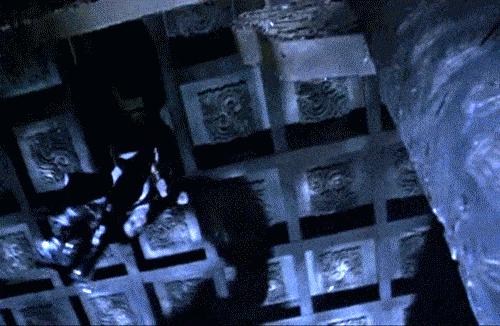
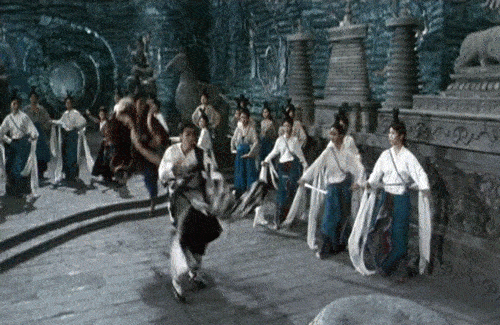
Between Jackie Chan and Tsui Hark's Western and non-Kung Fu/Wuxia-tinged influences so successfully and creatively melding themselves seamlessly with familiar martial arts/Wuxia storytelling tropes, the writing was on the wall: the way of the future for martial arts cinema was branching off into contemporary (even foreign) genre influences rather than staying stringently beholden to the exact letter of ancient Wuxia texts and lore as well as clinging rigidly to outdated filmmaking techniques that owed more to the stage than to the medium of cinema.
After over 50 years worth of Wuxia films steeped heavily in traditionalism and faithfulness to numerous ancient writings and stage performances, the dawn of the 1980s marked an era of Wuxia that was defined by being starkly and diametrically opposed to tradition of almost any sort. Radical experimentation, batshit insane genre blending, and fresh new modernized takes and spins on tired old stories and formulas were quickly becoming the New Normal throughout nearly ALL of Wuxia across Asian cinema and pop culture.
And after the stratospheric success and cultural impact of Zu Warriors and with Hark and other contemporary new Wuxia filmmakers like him (such as Ching Siu-Tung) beginning to make movies for the studio, Golden Harvest began moving deeper and deeper into embracing Wuxia (specifically this incredibly fresh, cutting edge new form of Wuxia) in a BIG way.
With the overpowering influence of the Hong Kong New Wave radically redefining Kung Fu cinema in Hong Kong and the continued meteoric success of Golden Harvest and now more brand new upstart film studios rising up to smash the long-held “Big Two” dynamic of Shaw vs Harvest, Shaw Brothers were on the ropes and in dire, dire need of a MAJOR change in direction lest it be left utterly behind in the dust.
The early 80s marks the twilight years as well as the most fascinatingly diverse and creatively wonky output of Shaw Studios. Spurred on largely by the roving juggernaut that was the HK New Wave's landscape-altering impact, a great deal of wild experimentation and a “throw whatever insane shit we can think of at the wall and see what sticks” mentality defined the Shaw Studios of the early 1980s and some of their (in retrospect that is) best loved and most unique and utterly fucking WEIRD films came out of this period.
Late-period Shaw included Bastard Swordsman, Portrait in Crystal, Legendary Weapons of China (one of the most fascinatingly dense Wuxia films of all time featuring an incredibly rich array of subtext and meta commentary on the genre itself, including even the changing nature of wuxia storytelling between the older and younger generations of filmmakers that was happening at the time), Shaolin Prince, My Young Auntie (one of the greatest, most timelessly endearing slapstick kung fu comedies of the era not made with the participation of Jackie Chan), Secret Service of the Imperial Court, a number of incredibly ambitious and sprawling wuxia epics by Chor Yuen, the admirably racially progressive Heroes of the East (one of my personal all time favorites of theirs), their own wonderfully ridiculous interpretation of the Buddha's Palm lore, as well as the out and out masterpiece that is 8 Diagram Pole Fighter.
Hell, they even went ahead and released (I swear I am not making this up) a goddamned Wuxia musical! Titled Heaven and Hell, it brings the Bangsian fantasy elements of Wuxia to the forefront and tells the story of an angelic warrior of the heavenly realm of the afterlife who is disgraced by the gods for showing favor to the eloping of a couple in ancient Jianghu whose affair offends the deities. As punishment, the heavenly warrior is banished to earth to be reincarnated as a normal mortal in the far off future. Living in modern day Hong Kong as a taxi cab driver (Buh!?), his spirit is eventually sent to Hell when he comes to the aid of another young couple who are being assaulted by a criminal gang and in the ensuing fight kills one of the thugs.
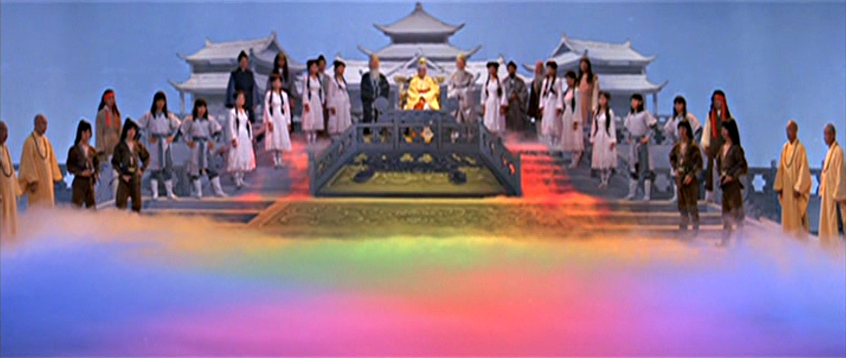
Twice fucked over by the gods for showing benevolence to an innocent young couple, once in Hell the former guardian of the heavens teams up with a number of deceased Xia warriors from throughout history who were unjustly killed in battle and judged harshly for their deeds, and together they fight their way out of Hell through a throng of demons as well as eventually lead a vengeful rebellion against the callous gods up in Heaven who have toyed uncaringly with their souls.
And yes, song and dance numbers do indeed occur in all this madness.
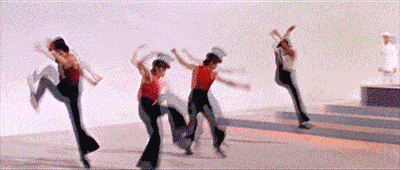
(No this isn't a Chinese adaptation of West Side Story: I assure you all 100% that this is indeed a scene from an actual full-blown legit Wuxia movie with gods, demons, super-powered kung fu warriors, the whole nine yards. Your thoughts are likely identical to mine and everyone else who saw this back in the 80s: “What. The. Shit.”)
Shaw studios were clearly doing absolutely anything and everything in the early 80s in a desperate effort to stay relevant against the onslaught of radical change brought on by the HK New Wave's effect on Kung Fu and Wuxia filmmaking. Sadly none of this would be quite enough to divert audience attention away from the revolutionary freshness and originality of what the Hong Kong New Wave was bringing to screens, and many of these late-period Shaw films, while retroactively hailed in hindsight today as either monumental classics or otherwise just wonderfully bugfuck INSANE and gloriously cheesy cinematic abnormalities, were mostly box office bombs at the time in their native land, even in spite of many of them being fairly decent hits in North American grindhouse venues of the time.
Thus by the middle of the 1980s, Shaw Brothers Studios were effectively defunct and out of the game entirely, marking the official end of an older era of kung fu/wuxia filmmaking and the dawn of a brave new world. A cruel twist of irony that the Hong Kong New Wave simultaneously brought out some of the absolute best in the old studio as well as their ultimate demise.
And oh what a brave new world it now was for Wuxia.
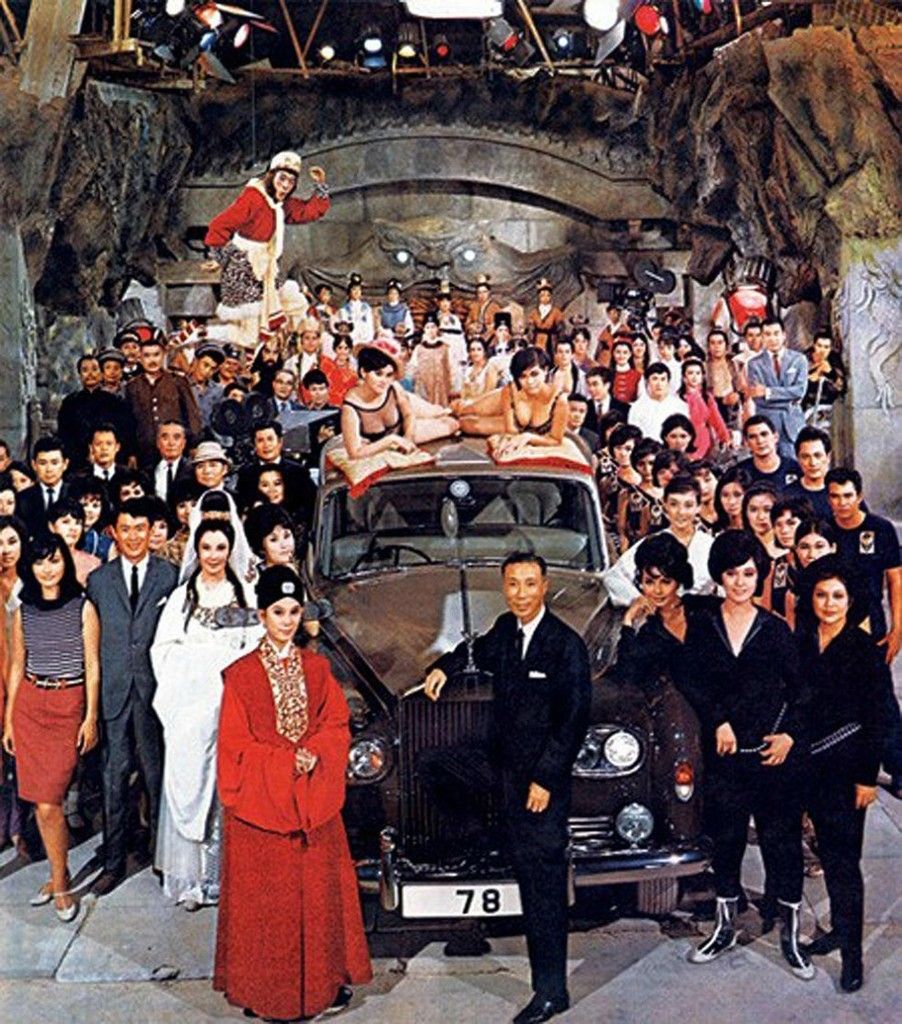
(Sir Run Run Shaw in an on-set photo-op with a large chunk of the Shaw Studios family sometime during its latter years.)
The ripple effects of the Hong Kong New Wave's impact on Wuxia are numerous and varied, but can be essentially simplified down to two main things:
The first was a DRASTIC and stark modernization of directorial style and filmmaking effects and techniques. This entails everything from dynamic and less “stagey” new camera angles and sprawling cinematography, to the aforementioned leaps forward in fight choreography, less orchestral and more pop/synth-oriented musical scores and soundtracks, and (for the 1980s that is) Hollywood-level special effects and production values. The “chintzy kitsch” appeal of Wuxia and kung fu films from previous decades was very, very quickly being stripped away, turning the whole genre into something a tremendous deal more sleek and polished.
This was probably one of the most costly errors on Shaw Studios part at the time of their demise, and the one most cited as the reason for their failure to draw audiences away from other New Wave-inspired films: for as much new creative energy and genre-blending as they were throwing into their scripts and narratives at a conceptual level, in terms of on-screen visual execution they still looked and felt like the same old Shaw movies of the 1960s and 70s. They updated and evolved their narrative storytelling and basic ideas, but not their visual identity and cinematic language.
And the second main impact of the HK New Wave (and the one that's really going to be our primary focus here) was the aforementioned genre-blending and hybridization. I cannot in any way overstate in the slightest how palpably OVERWHELMING this trend became, especially as the 80s rolled on into the 90s.
More and more pieces of Wuxia, not only in film, but comic books, video games, television & animation, in ALL corners of media began to either incorporate whatever popular subgenres (anything from horror to sci fi or anything and everything in between) into presently existing Wuxia properties, or in other cases Wuxia elements were being incorporated into properties that beforehand weren't even Wuxia at all to begin with. This started in Hong Kong, but very, very quickly worked its way overseas.
One of the most celebrated and landmark HK New Wave Wuxia films from the 80s that perfectly captures what was happening here was Ching Siu-Tung's 1987 classic A Chinese Ghost Story.

Blending Wuxia with lightning paced, over the top tongue in cheek horror in an extremely Evil Dead II-vein with heartfelt, sweepingly dramatic romance, it tells the story of Ning Choi-san (played by the late Leslie Cheung) a meek, timid tax collector whose job sometimes takes him to remote, rural villages and temples. On one such trip, he arrives in a creepy, seemingly abandoned town where he meets and falls hopelessly in love with a beautiful and mysterious young girl named Nip Siu-sin (played by Joey Wong in one of her most famous and defining roles).
There's a complication though: Nip Siu-sin, like many of the strange inhabitants of the village, is already dead and a ghost haunting the area. As Ning begins to be attacked by hordes of the undead during his attempts to pursue and learn more about Nip and the strange curse of the village, he also meets and befriends Yin Chik-ha (Wu Ma! *fanboy*), a Taoist warrior monk and “ghost hunter” who I'd talked about much, much earlier in this lengthy diatribe of mine.
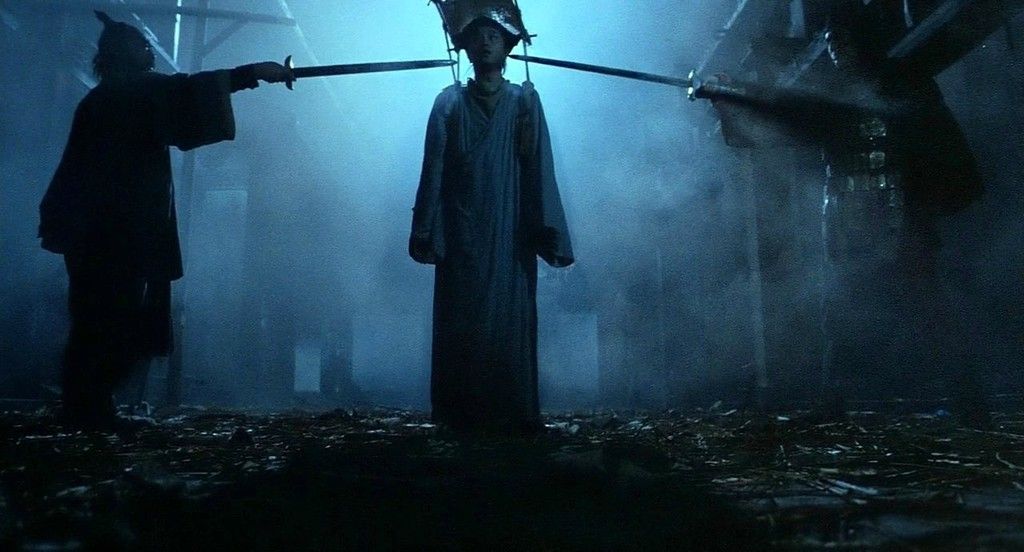
Ning eventually unravels the truth behind Nip Siu-sin: her spirit, like many of the other ghosts in the surrounding temple grounds and wilderness, is enslaved to the will of a powerful female Tree Demon. As long as the Tree Demon's power thrives within the woods, Nip and all the other spirits are forever bound to serve her. Armed with this knowledge, the easily frightened and weak Ning and the bravado-filled and skilled fighter Yin team up and attempt to find and destroy the powerful Tree Demon and free Nip from her thrall, braving all manner of supernatural horrors and creatures along the way.
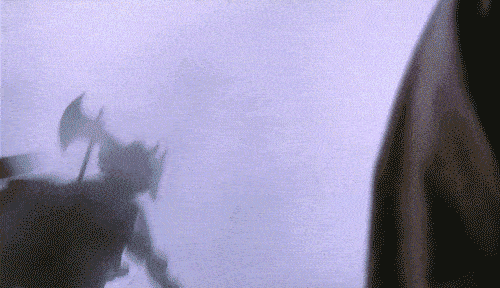

Their journey takes them from creepy haunted temples and forests of the living world to the hellish black voids of the underworld and back again, and throughout all the bizarre, often darkly humorous and whimsical insanity of ghosts, demons, zombies, curses, mystical kung fu, and inter-dimensional travel, Ning is spurred on (in spite of his utter lack of heroism or courage or physical strength) by his devotion and love for Nip, along with the solemn, painful knowledge that even if he successfully frees her, they can never truly be together as her spirit will simply depart the living world for the heavens. Thus the drama at the heart of an otherwise madcap, ridiculously insane horror/Wuxia story is Ning digging deep within himself to accomplish an act of purely selfless love.
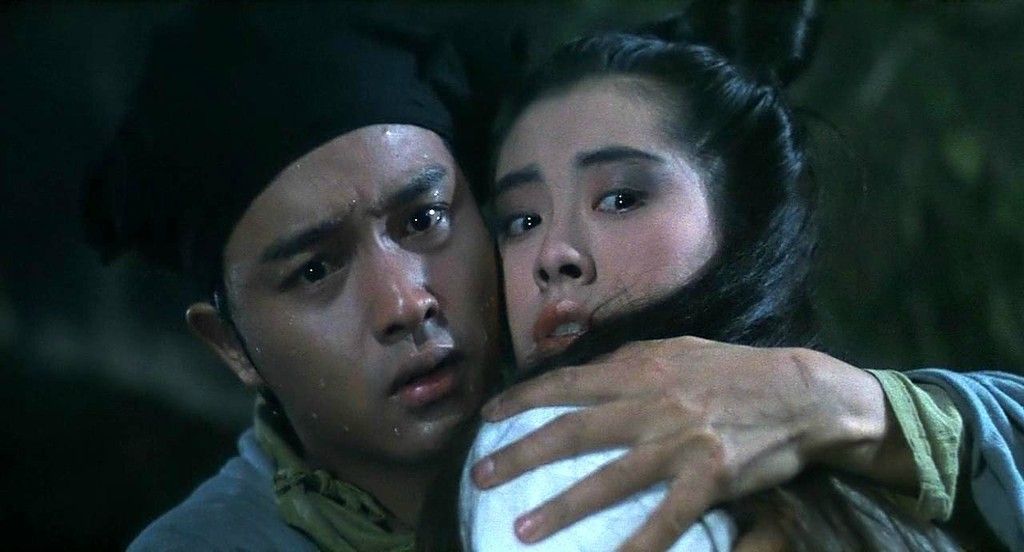
A Chinese Ghost Story is a great many things at once: ass kicking Wuxia, fairy tale fable, melancholy love story, and gonzo warped 1980s comedic horror, all tightly wound together elegantly into an intrinsic whole that all somehow just works in spite of the starkly disparate clashing of tones and genres. Its an undeniable classic of the HK New Wave-era and a huge benchmark title for 80s and 90s Wuxia fans, and moreover its a film/story that could NEVER have been made or existed in quite the way that it did at any point in time prior to the 1980s.
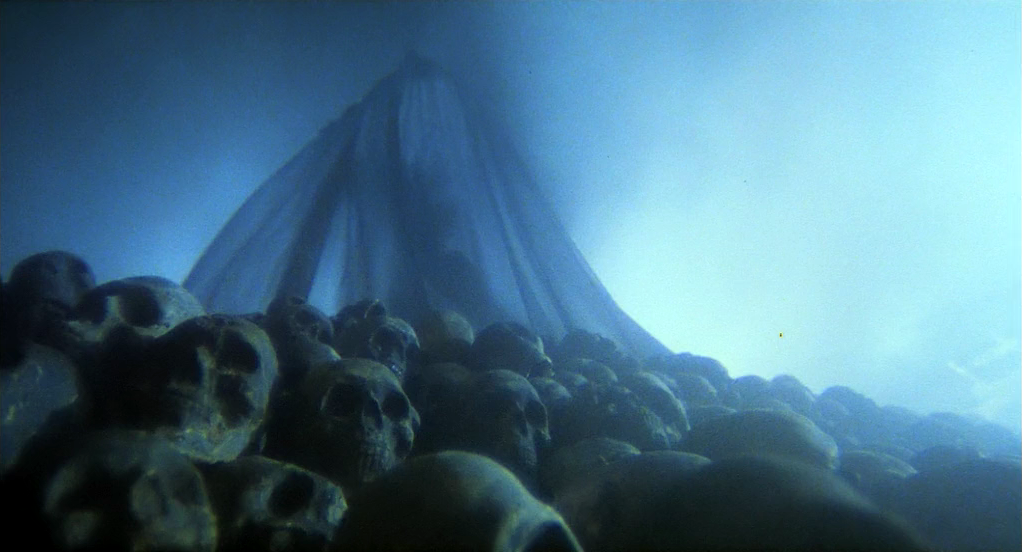
Horror-infused Wuxia in itself was technically nothing new, and certainly neither was romance or even comedy with Wuxia: as noted before, Peking Opera performances of Wuxia stories played to such broad audiences that they would attempt to be extremely eclectic in their tones and subject matter, a trait which carried itself over into Wuxia filmmaking since the dawn of the medium.
What made the whole HK New Wave's impact on Wuxia feel so different and unique, as exemplified with A Chinese Ghost Story above, was how modernized and contemporary the genre-flourishes now felt. Horror-themed Wuxia in the past was generally much more rare (it tended to be more common to find comedic or romantic elements mixed in) and when depicted were rooted very traditionally in ancient Chinese lore with Jiangshi (Chinese “hopping” Vampires), ghosts, curses, demonic forces, and other such myths butting heads with Youxia martial arts warriors, Taoist exorcists, etc. and the filmmaking and depictions handled in very conservative “static” style owing to old stage and opera productions.
With films like A Chinese Ghost Story, the spirits and creatures are still taken from the same myths, but heavily energized with modern Western directorial flourishes. Swooping, zooming POV camera shots owing to early Sam Raimi represent malevolent spiritual entities closing in on the heroes, Hollywood animatronics now replacing simple dummies, demon and creature designs sometimes owing more to John Carpenter's The Thing than traditional paintings and artwork, dynamic editing and lighting giving the action the feeling of a comic book (or manhua more appropriately here) brought to life... all of this coming together to give the film the feel of a 1980s makeup fx-heavy American horror movie crossed with traditional Wuxia.
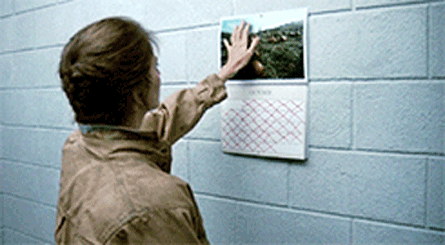
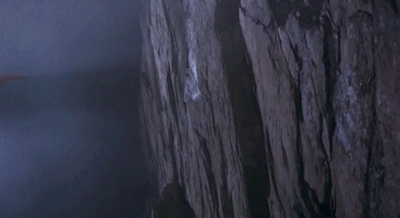
(Left: George Romero's Day of the Dead 1985. Right: A Chinese Ghost Story 1987.)
The genre hybridization was also a great deal more stark, prominent, and in-your-face now. Whereas in the past a Wuxia story, such as say for example The Sentimental Swordsman (where the hero Li solemnly concedes the hand of the woman he loves to his rival as a show of honor and respect), would feature a love story mainly as the backdrop to and byproduct of the hero's more martial arts-fueled dilemmas and priorities, in a New Wave examples like A Chinese Ghost Story the love story is very much the central-most heart and soul of the story. Its still ultimately a Wuxia story at the end of the day, but Ning Choi-san's love for and relationship with Nip Siu-sin gets a great deal of focus and is what principally drives and anchors all of the crazy spiritual martial arts action going on around them rather than acting as an extra complication to a more martial arts-central narrative focal point.
As the 80s progressed and the film output of the Hong Kong New Wave along with it, the “pedal to the metal” style, more palpably extreme genre-merging, and overall sense of “anything and everything goes” zaniness quickly began to spread across Asian territories.
Over in Taiwan, which itself had long had a very robust independent martial arts/Wuxia filmmaking landscape since the late 60s/early 70s, found its own Wuxia films becoming more and more heightened in extreme tonal-shifting. Taiwanese Wuxia films of the early to mid 80s still to this day remain some of the most singularly bizarre and mind bendingly warped and demented in the martial arts genre's entire history. Nowhere is this more apparent than in the Child of Peach series.
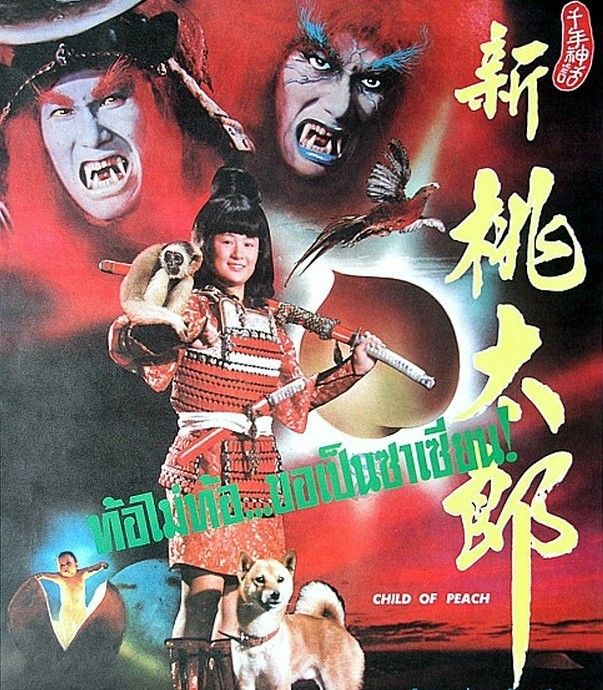
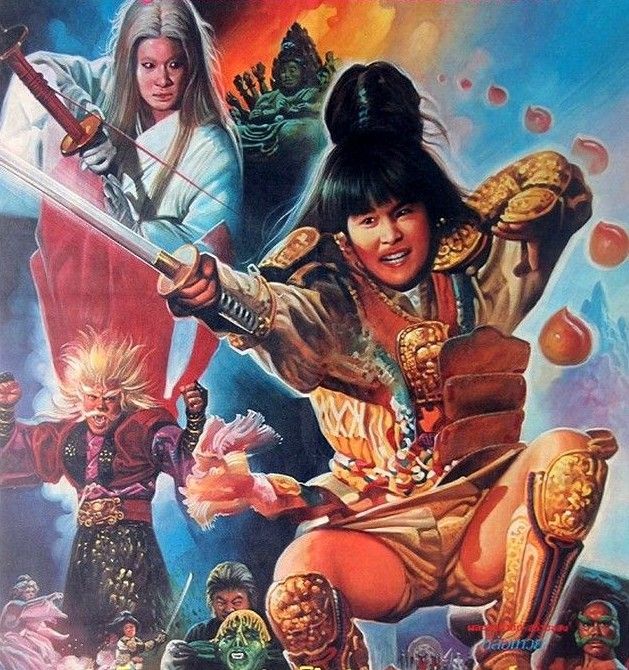
Centering on the adventures of the aptly named “Peach Boy” Tao Tai-Lang (a male character played in drag by Taiwanese Wuxia-favorite actress Lam Siu-Lau who starred in a goddamned ton of these kinds of films), Child of Peach's mythos is borne as much out of Japanese folklore as it is Chinese, once more showing the 80s Wuxia landscape's aptness for bringing in more foreign elements.
The core story of the films (the first one in particular) is taken directly from the Japanese story of Momotaro but given a more Wuxia-ified makeover. Way out in the farthest icy wastes of Jianghu there exists the sacred land of the Holy Mother. Within these enchanted mountains can be found the magical Peach Garden in which is housed the powerful Sun Sword. Harnessing solar energies, the Sun Sword's magic always keeps the Peach Garden bathed in beautiful warm radiance despite the bitter cold snow-covered nature of the surroundings landscapes. The garden and the sword are kept watch over by a trio of shape changing anthropomorphic animal martial artists (a dog, a monkey, and a bird, as per the Japanese myth) and two masters.
The first film begins with this peaceful land being accosted by an army of demons, lead by the Devil King, who want to Sun Sword for the purposes of conquering the Martial Arts World. They meet resistance from the animal fighters and their masters, but ultimately The Devil King and his demons are successful and lay siege to the holy lands and the Peach Garden, corrupting it into a hellish domain as well as claiming the Sun Sword and killing the two masters in the process.

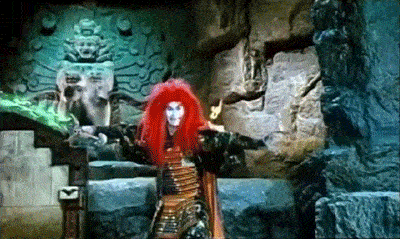
However, the masters' infant boy is smuggled away via being placed inside the deity of the gardens - a giant flying sentient Peach (no I did not just make that up) - who whisks the baby far away and into the care of a kindly elderly couple living hermetically by themselves in the forests. The baby grows up (his aging further sped up by his guardian fairy, who was tasked to watch over the boy) and trains in mystical martial arts for his mission of revenge against the Devil King and his armies, with the help of the three shape changing animal fighters as his loyal companions. Together they journey across Jianghu and through the now-corrupted holy lands, fighting to reclaim their home and the Sun Sword from the Devil King.
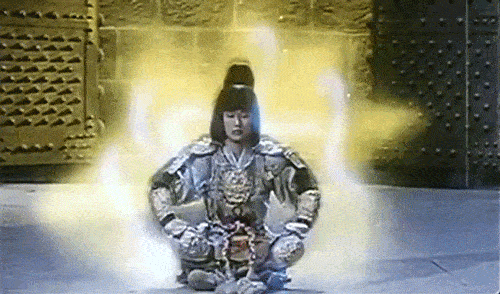
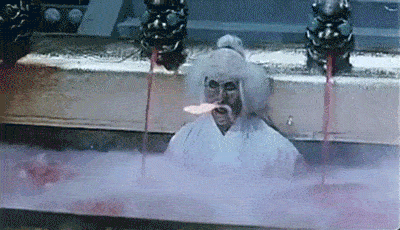
As if the setup wasn't out there enough, a TON of further fucked up weirdness plays out throughout the course of the movies, including the introduction of a towering Ginseng Boy (a half human-half Ginseng root monstrosity), a magical “Peach Mecha” (a reconstructed hybrid of the sliced up Sentient Peach Deity, “piloted” magically by Peach Boy and his friends), as well as a TON of gory violence mixed with juvenile toilet humor.
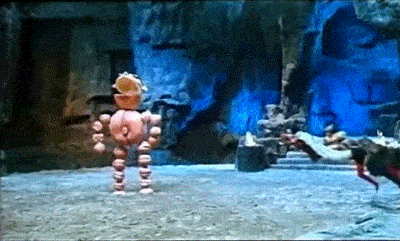
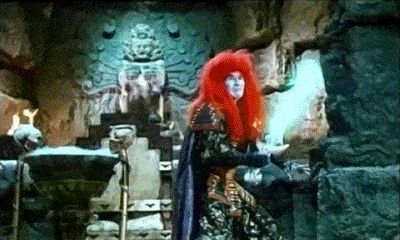
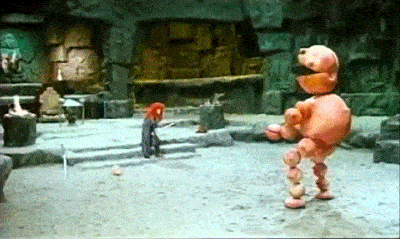
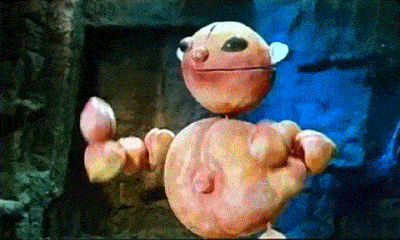
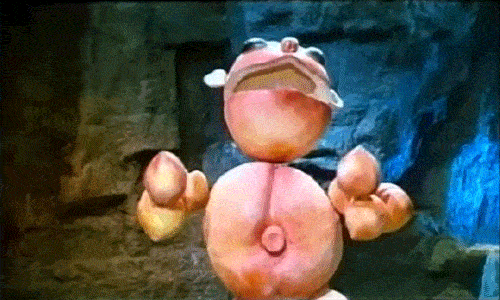
(Academic film analysis: Mecha Peach is fucking awesome.)
Did I also mention that this series was ostensibly for children as well (Momotaro also being pretty popular in its native land among Japanese schoolchildren)? Cartoonish humor blended with - generally very well choreographed - magical martial arts abounds throughout this series, along with its bevy of surreal creatures taken as much from ancient folklore as they are from probably untold mountains of cocaine inhaled by the producers.
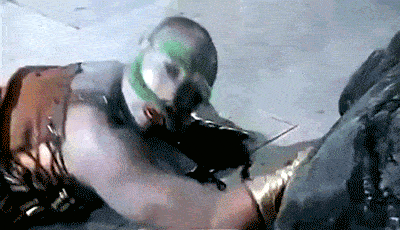
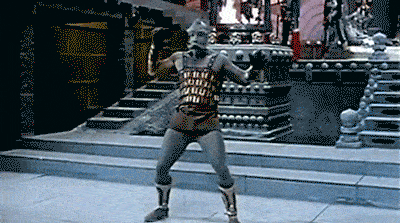
Also y'know now that I think about it... a rural young boy protagonist (played by a female actress) with incredible strength and an origin that, while stemming directly from ancient folklore, also at the same time almost resembles that of Superman's sets off from his wilderness home with his shape changing talking animal companions to retrieve a magical artifact from a King of Demons, and gets into all sorts of wacky misadventures along the way involving violent ki-slinging martial arts battles mixed with dumb pee pee jokes... I feel like I've heard that one from somewhere else before.
The Child of Peach series is a perfect summation of not only the general oddness of the 80s Taiwanese Wuxia landscape, but also the further increased mixing of weird foreign influences and a steadily heightening fearlessness of breaking away from genre tradition that was becoming inherent across all Wuxia throughout Asia at this time.
As these more extreme changes in Wuxia overtook Asia, it also wasn't long before West began to take notice as well. Slowly but surely, this new breed of Hong Kong films (across genres: be it Wuxia, drama, so-called “Heroic Bloodshed” action/crime epics, etc.) started making their way overseas to English speaking territories, via limited theatrical runs as well as home video releases (both official and not-so-official bootlegs).
Its important to note here the IMMENSE degree of overlap during this time period that was beginning to form between Western anime fandom (which itself was still fairly young at this time) and Western Hong Kong cinema fandom. Throughout the latter half of the 80s and through most of the 90s, generally speaking if you were a fan of one odds were very high that you were probably also a fan of the other too. This can be partly attributed to the fact that the overall makeup of interests for the typical anime fan during the 80s and 90s was... incredibly, starkly different to those of the 2000s and onward, which is an ENTIRELY separate can of worms in itself.
Regardless, there was a tremendous degree of cross pollination between fans of anime and fans of HK films, and the bootleg circles for both were during these years pretty closely intertwined. We'll come back to this later.
It certainly wasn't just hardcore nerds taking notice of this stuff either. Major Hollywood directors and producers had their attentions immediately grabbed by the growing renaissance of HK film that was springing up here. One of the most notable at this point was John Carpenter, who saw and fell in love with Zu: Warriors From the Magic Mountain during its original release. That film, and the genre-bending wackiness of the Wuxia that continued to follow inspired him to make a Westernized take of his own on the genre just a few years later.
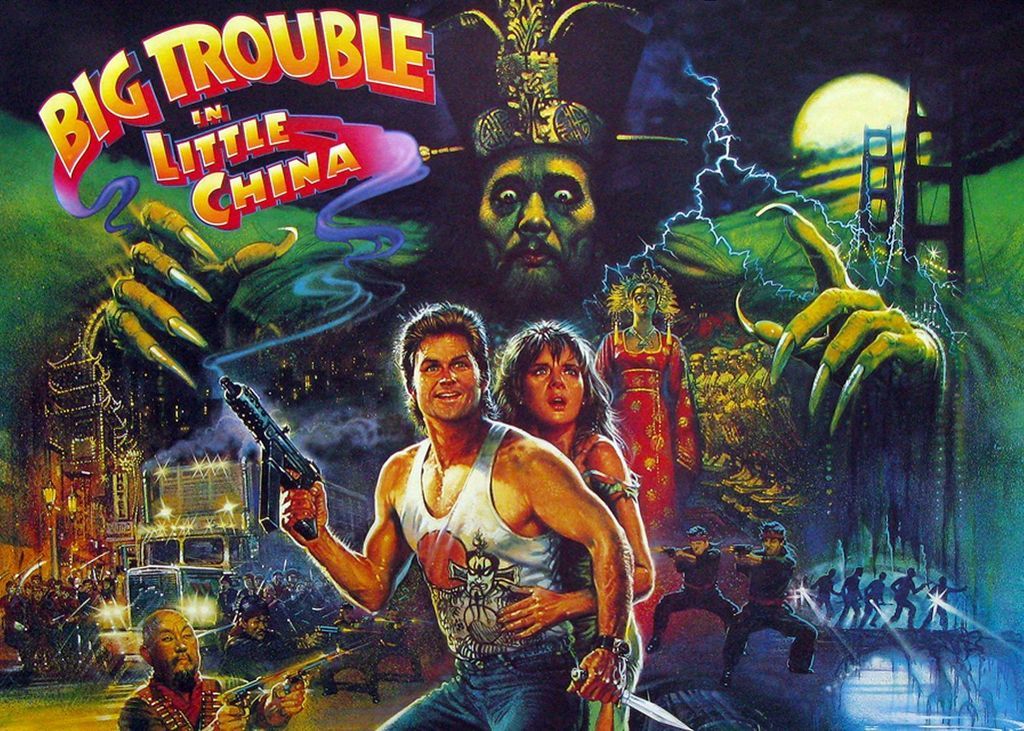
Anyone who was a child of the 80s certainly ought to know THIS one. Big Trouble in Little China was Carpenter's ahead-of-its-time-in-the-West ode to wonky magical kung fu. As was becoming de rigueur in its native Asian territories, Big Trouble in Little China was as far from stringently pure Wuxia as it got.
Set in then-present 1987 San Francisco Chinatown, the joke behind Big Trouble in Little China's entire premise is taking Kurt Russel's Jack Burton, a mocking representation of the then-stereotypical swaggering, all-American, gun-toting, one liner-spewing, musclebound 80s action hero, and sticking him flush in the middle of a mystical martial arts-laden modern day Wuxia adventure... precisely the sort of situation that such a character would be absolutely useless in and completely ill-equipped to handle.


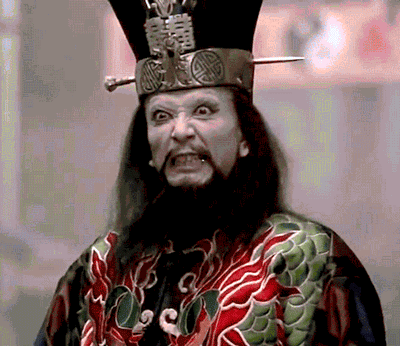
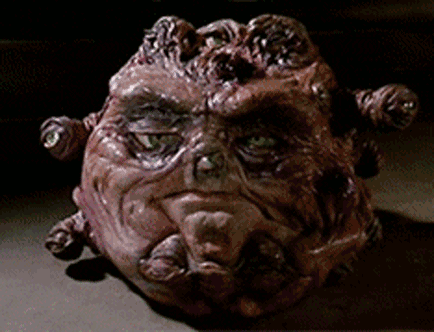
The actual protagonist of the story turns out to be Wang Chi, Burton's supposed “Asian sidekick” who in most 80s Hollywood action films of this time would be little more than either bad comic relief, a sacrificial lamb to be killed off by the bad guys, or some combination of both. Instead, here the character steps up and supplants the cocky Westerner as the true badass hero, utilizing all sorts of high flying martial arts skills to save his fiance from Lo Pan, an ancient undead Chinese sorcerer - making him not only the action hero of the movie, but also the character with the most stakes and whose goals drive the plot - relegating Burton not only as all but worthless in most of the fights, but also an exasperated third wheel in the overall story.
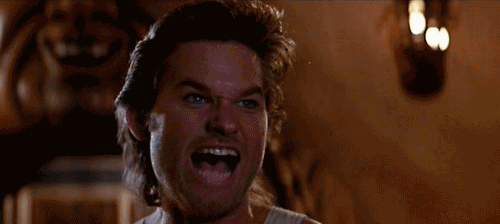
Think of him as Mr. Satan well long before Mr. Satan was created.
All sorts of strange creatures and demons, as well as mystically powered martial arts warriors are thrown about the entire film, which does a more than admirable job of attempting to capture the “fuck it all, lets go apeshit” zaniness and weird genre mixing that characterized Wuxia in its native Hong Kong at the time. Its fair to think of this entire era of Wuxia as being a period of the genre metaphorically "letting its hair down" in a pretty big way through the lens of a younger generation after so many decades of rigid traditionalism for the genre in earlier eras of filmmaking.
Wuxia in Modern Media Section IV: Manhua and Crossing Over with Japan (1970 - 1984)
Its also important to note now that not all of this change in the identity of Wuxia across Asia was stemming solely from films.
Apart from the impact of the Hong Kong New Wave on the filmmaking front, there was another major factor happening around precisely this same time in the changing tide of Wuxia media across Asia; as I said, change this vast tends to be multifaceted. This of course was the drastic changes happening in Manhua during the late 70s and early 80s.
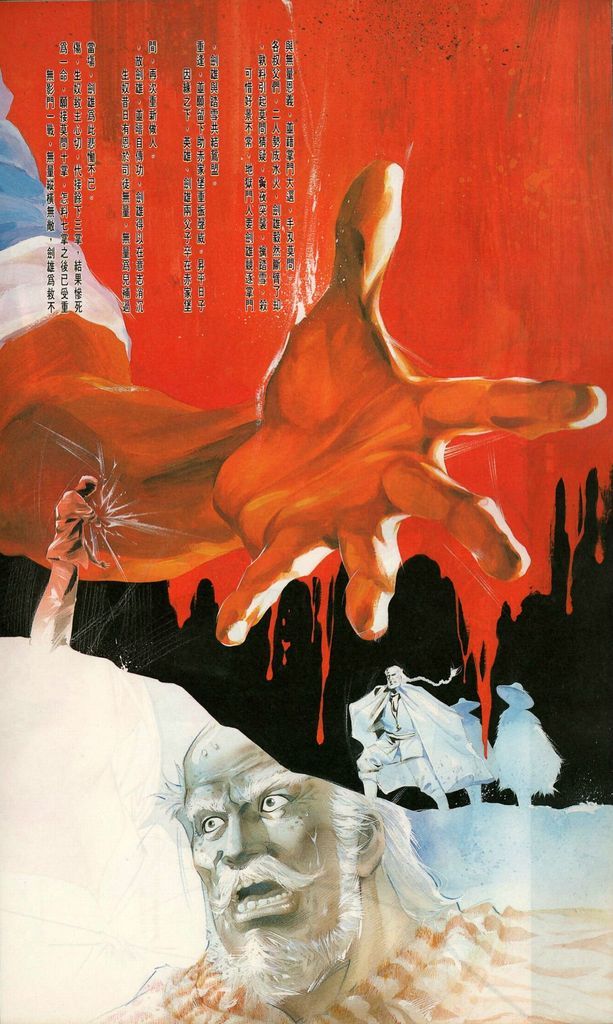
Manhua as I briefly mentioned earlier are Chinese comic books/manga. Manhua have an interesting history in that their background and format is in many ways an almost perfect hybrid of Western comics and Japanese manga. Much like in the West, the earliest modern manhua of the late 19th and early 20th century tended to be newspaper strips and political cartoons (usually of anti-Qing Dynasty propaganda) that were often collected over time in small digest-like books called “Lianhuanhua” and were particularly popular in their early years (1890s to 1930s) in Shanghai.
The Japanese occupation of China during the onset of World War II would mark the end of the early formative years of manhua, as the political turmoil of this period brought most manhua publications to a screeching halt. One of the rare exceptions to this was the creation of one of the most famous and enduring Chinese manhua characters: Sanmao.
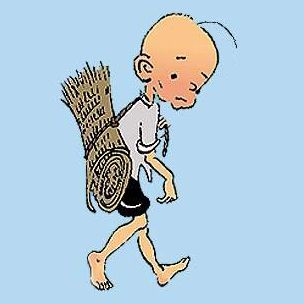
Sanmao (meaning “three hairs” in reference to the three single strands of hair upon the character's head, his most distinguishing visual characteristic and a sign of the character's malnourishment) is a young, impoverished, emaciated little boy who lives in poverty and squalor in the rotten slums of Shanghai in the 1930s and 40s.
Telling short, often dialogue-free and dark humored stories of survival and struggle in the harsh streets of Shanghai during the occupation, Sanmao was revolutionary in not only its storytelling, but also its fearless political and social commentary on the hardships of the poor during a time of incredible political and social upheaval throughout China during WWII. The character remains an important icon of Chinese comics as well as a marker upon the dividing line between manhua's earliest years as a largely political tool and the lead-up to the much more narrative-focused form which they would become within the modern day context.
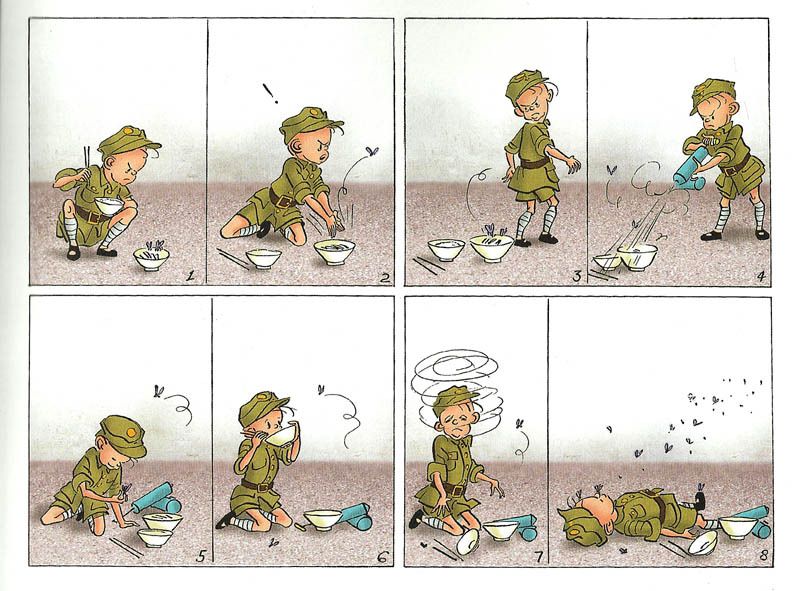
The 2nd assimilation of Hong Kong into the British Empire during the Chinese Revolution marked a MASSIVE surge in immigration from mainland China to the island of Hong Kong throughout the 1950s and 60s. Hong Kong became a symbol of freedom from oppressive Communist rule and rebellion against their snuffing of political dissent, making it a beacon for a great many Chinese artists and creative talents to flock to over the next several decades.
Within this climate, not only would Chinese filmmaking (and Wuxia along with it natch) find new life, so would the creation of new kinds of manhua. With more artistic freedom, manhua would not only have a greater voice as a tool for political dissent once more, but also would find itself more freedom to indulge in fantasy and pure fiction.
Thus, the INCREDIBLE widespread popularity that Wuxia Manhua would come to enjoy from here on out.
One of the earliest big hit wuxia manhua of this new era was Little Rascals, created by Wong Yuk-long and first published in 1970.


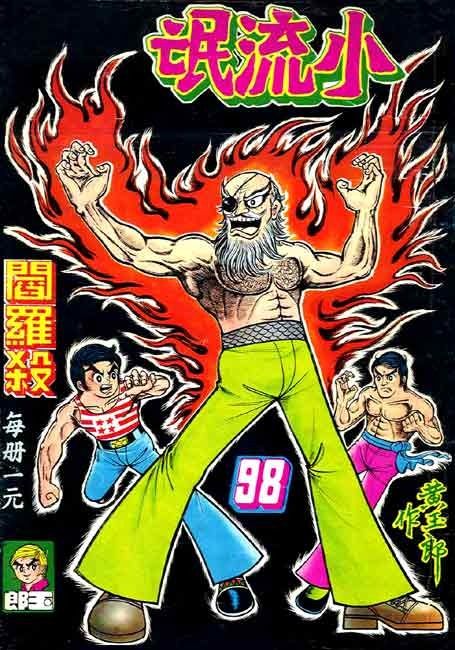
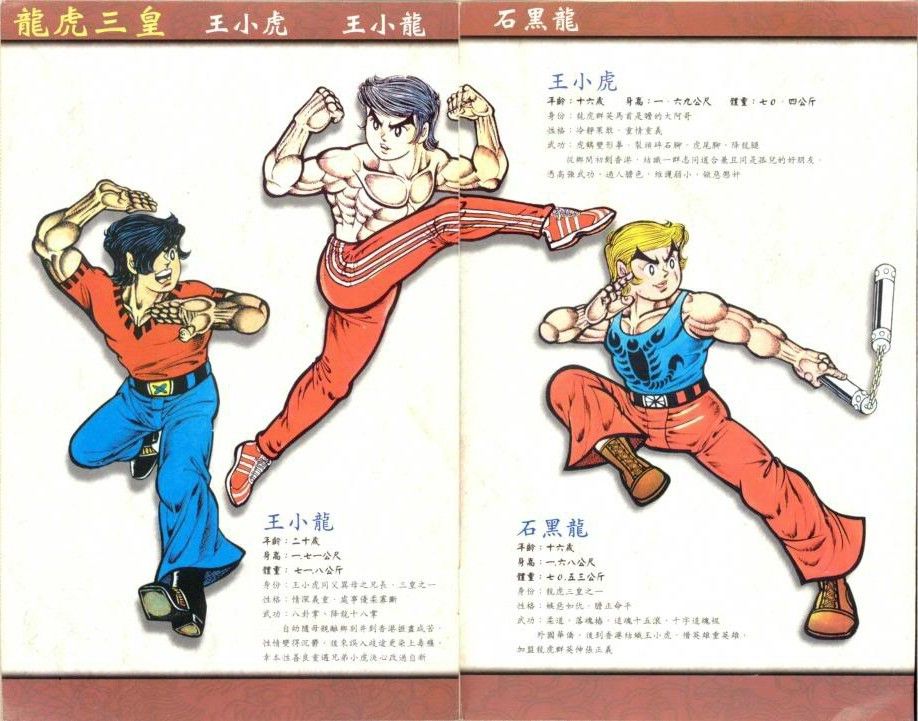
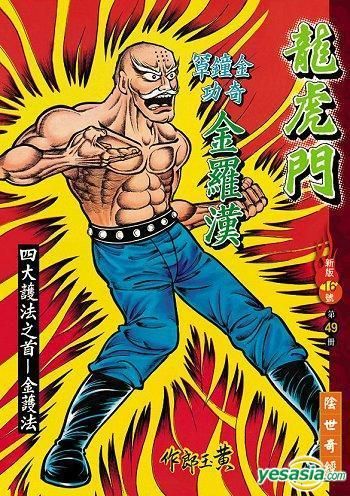
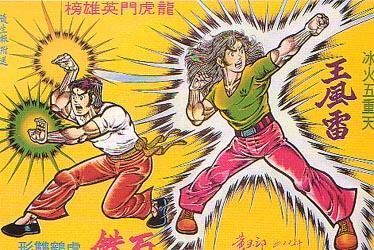
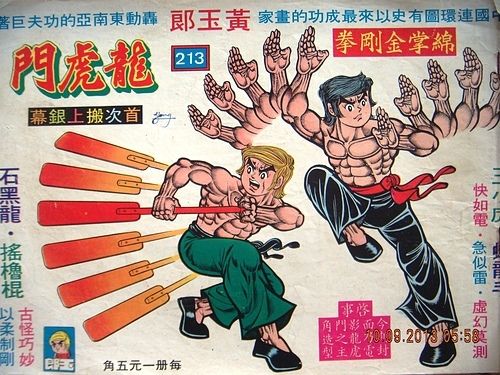
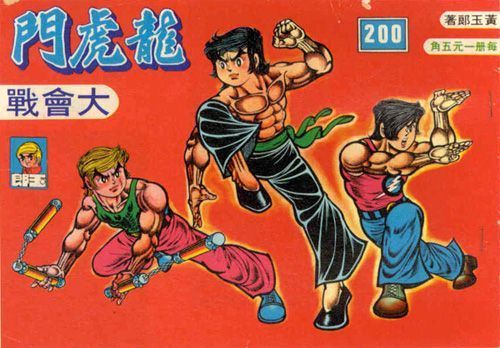
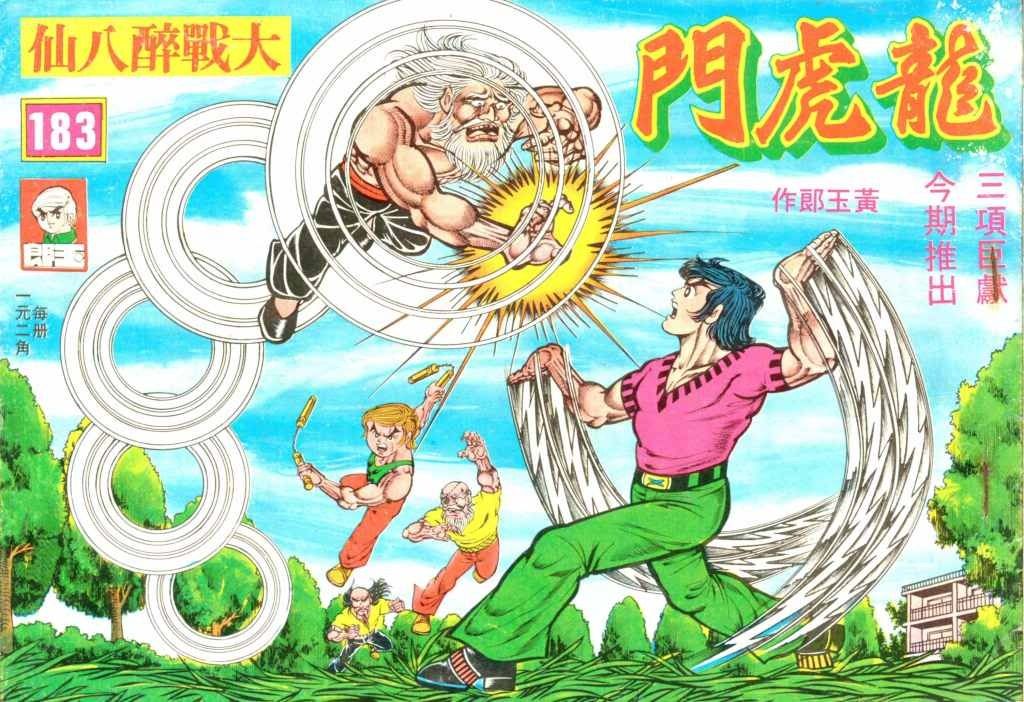
Telling the story of a trio of teenage martial artists, the Wang brothers Xiao Hu and Xiao Long, and their mixed Chinese-Russian close friend Shi Hei Long, who grow up together in a violent and dangerous crime-filled ghetto, using their growing supernatural martial arts skills fighting murderous thieves, thugs, and gangs. The young trio themselves are similarly thuggish anti-heroes and prone to delinquent criminal behavior of their own, but do so primarily in order to survive their impoverished surroundings and still maintain strong principals of justice, fighting against what they see as particularly brutal and barbaric acts against the weak and defenseless.
Two things immediately stood out about Little Rascals that made it a huge hit with readers. The first was its incredibly harsh graphic violence. The fighting in Little Rascals, despite its somewhat cutesy art style, was often brutally visceral, with horrific injuries routinely shown as a consequence of the violence. This of course at the time lead the book to coming under fire and attracting immense amounts of controversy.
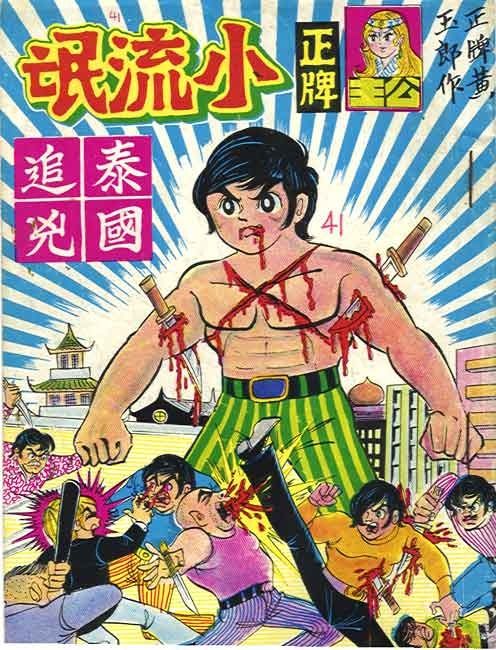
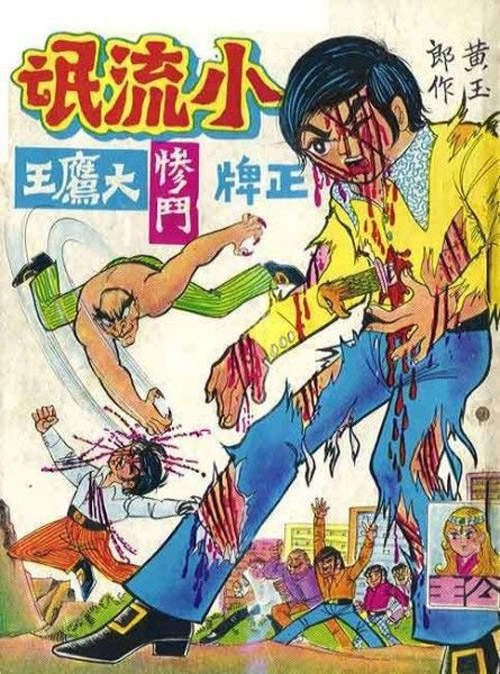
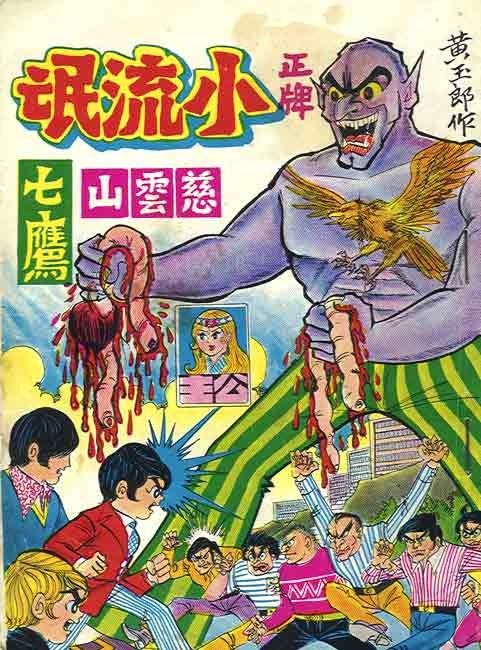
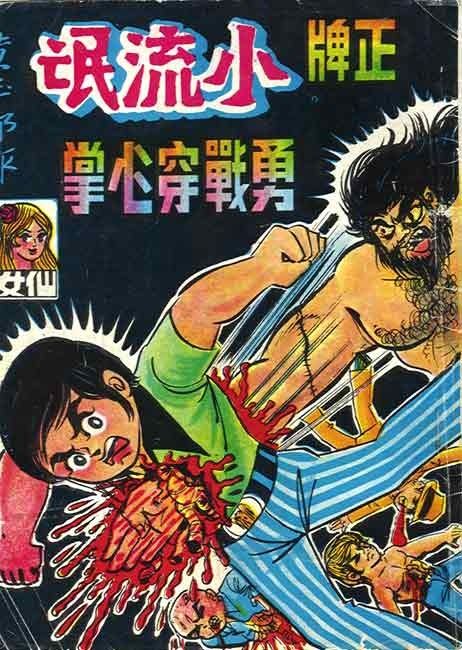
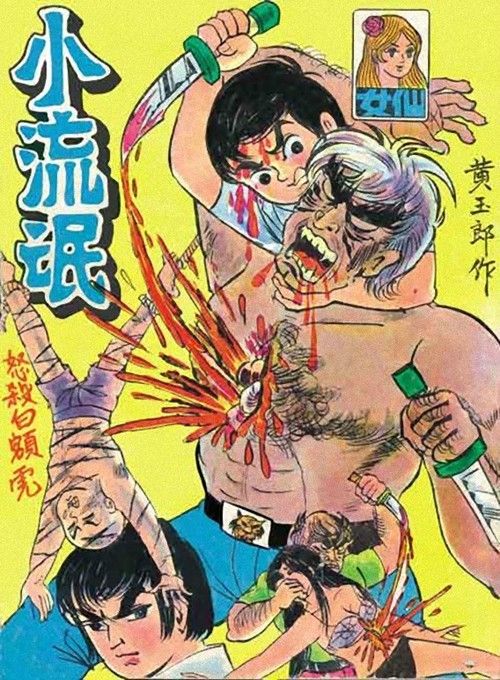
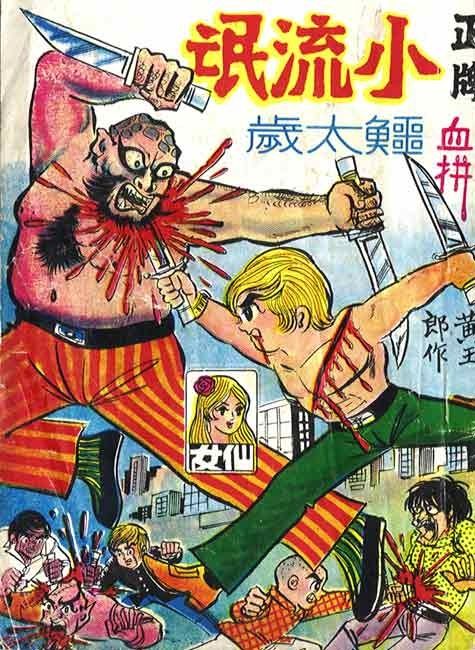
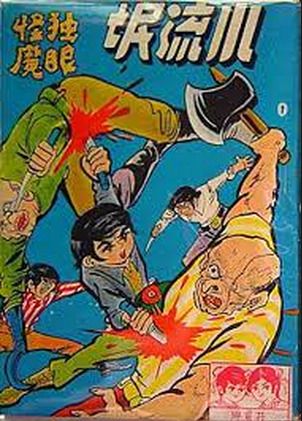
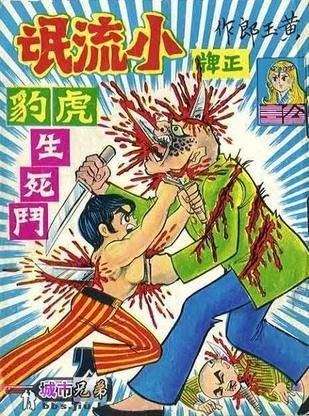
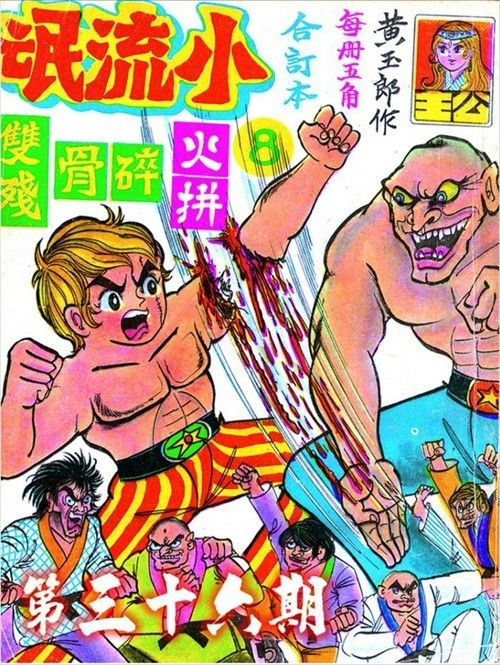
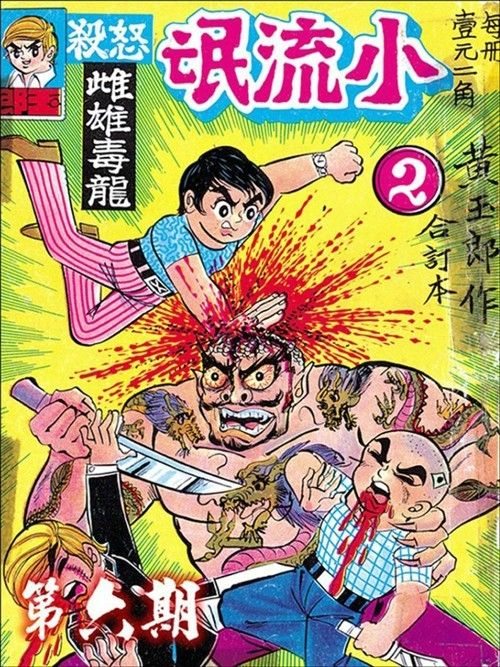
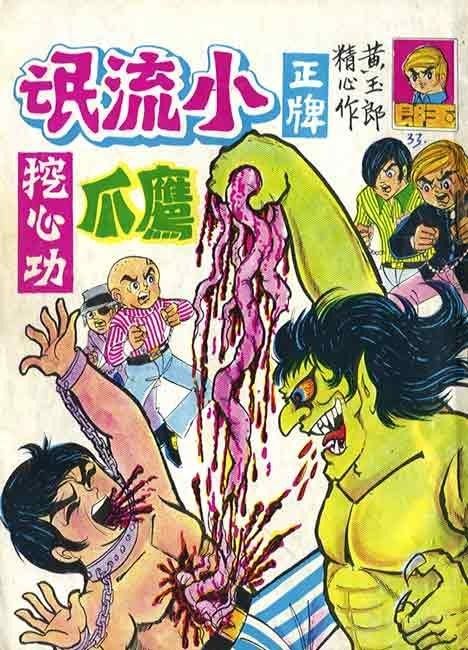
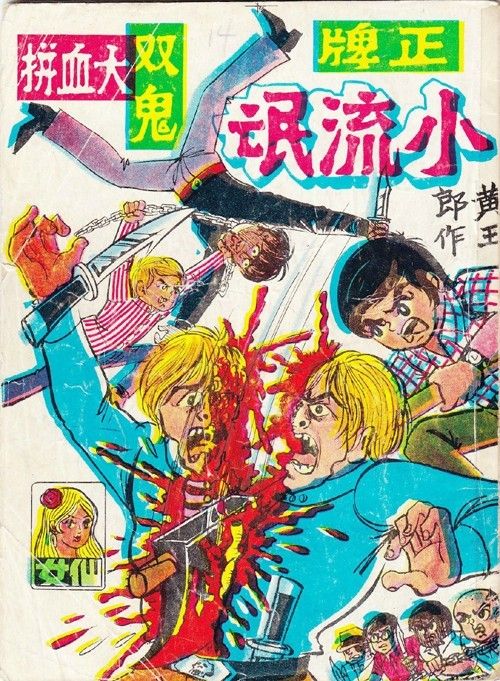
The second aspect of the book that made it stand out however was setting its, still ultimately Wuxia story, within then-modern day 1970s Hong Kong housing projects and ghettos rather than the mystical, far off lands of Jianghu.
Street gangs, youth gangs, and criminal mob organizations stood in for various Dynastic kingdoms and even martial arts schools, but the crux of the narratives and the themes of Xia-infused principals of justice, brotherhood, and dedication to the martial arts and continuous self-improvement were still at the heart of the characters and storylines.
Its debut being 1970 (nine years before Butterfly Murders), this put Little Rascals WAY ahead of the game in taking steps to “modernizing” the Wuxia genre and blending it with other contemporary genres. Its long term influence on Wuxia would be enormous.
Ironically enough, the book's principal inspiration for this change of setting and time period for its Wuxia story was... wait for it... the more gritty, hard edged (non-Wuxia) martial arts films of Golden Harvest, particularly those of Bruce Lee, who would often be depicted within the book.

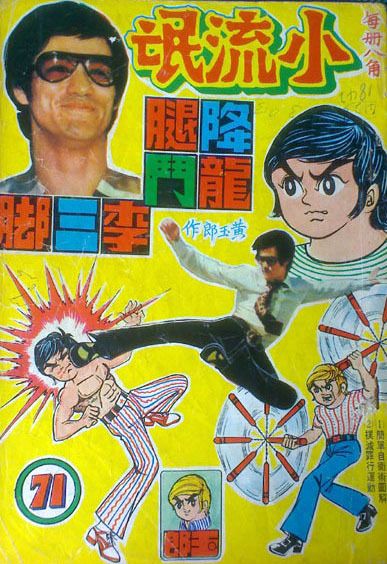

Little Rascal's graphic violence however would, early on in its first publications, overshadow its unique genre blending tremendously and cause it to go through various legal issues and periods of non-publication. The surrounding furor eventually lead to the Indecent Publication Law in Hong Kong in 1975, which acted essentially as the rough approximation of the Comics Code in North American comic books.
Moving our focus back to China for now though, by the late 70s and especially the early 80s, Shaw Brothers Studios was beginning to fall on hard times. There were a number of factors at work: chief among them was the financial strain of keeping such a massive fucking entity of a studio afloat for so long.
Shaw Studios was unlike any other movie studio before or since: cranking out so many movies within so short a time span utilizing a rotating roster of familiar cast and crew members across each movie, the studio was set up less like a traditional film lot and almost more like a small town or commune: many production crew members and even actors and stunt people would actually LIVE at the studio as their literal home for months, sometimes years at a time, bouncing in true workhorse-like fashion from one film project to the next in extremely rapid succession, sometimes with little to no breathing room in between.

(Birds-eye view of Shaw Studios circa the late 60s.)
By extension of this, there was over-saturation: by the end of their existence, Shaw had produced untold THOUSANDS of movies. Dozens would be put out every year: no mater how good the material, audience fatigue was inevitable.
As a consequence, Wuxia in particular was beginning to grow immensely stale and boring to Chinese audiences by the latter-end of the 70s. Telling and retelling and re-retelling many of the same old myths and legends on film in a very rigidly faithful fashion and with decreasing variation in style as time wore on, for a particularly bleak time in the late 70s Wuxia was starting to be seen in China as bland, predictable, and stuffy.
Part of it on Shaw's end was the sheer inertia of routine and the creative complacency that comes with success: due to how the studio was set up they were a well oiled machine, pumping out movie after movie after movie after movie in an almost assembly line-like fashion. Some degree of formulaic sameness was bound to overtake their output after awhile and audiences were getting wise to it; Shaw's box office fortunes began to sharply decline.
Meanwhile Golden Harvest were continuing to enjoy increased success. After Bruce Lee's tragic passing (which cut short the kung fu movie craze in mainstream/non-grindhouse America after a few years, at least for awhile), Golden Harvest would have the great fortune of stumbling upon another incredible find of a talent: a guy by the name of Jackie Chan.
At first packaged by the studio as an obvious Bruce Lee knock-off in several serious, gritty kung fu films that did not at all play to Chan's strengths as a performer, Chan struck it big for himself and the studio when he along with a certain director by the name of Yuen Woo-ping (know these days to modern Western audiences as the fight choreographer behind the original Matrix and Kill Bill, among other notable turn of the century Hollywood hits) would find HUGE success with a pair of comedy-oriented kung fu films: Drunken Master and Snake in the Eagle's Shadow.


Made with both Chan as the star, Woo-ping as the director, and with largely the same cast and crew in general across both productions, both films were more thematically and stylistically linked rather than directly plot-linked. In both films Chan plays a brash, over-confident but inept young martial arts student (a pre-legendary Wong Fei Hung in Drunken Master, and an orphan adopted by a kung fu school named Chien Fu in Snake) who is trained by an eccentric old master (marvelously played in both films by Simon Yuen, older brother of Woo-ping and also by FAR the biggest basis for Muten Roshi) while staving off attacks from a terrifyingly lethal martial arts assassin (played in both by none other than Hwang Jang Lee).


(Hwang Jang Lee as the murderous Sheng Kuan in Snake in the Eagle's Shadow. Hrmmm... something about him here looks somehow oddly familiar...)
That's the basic-most gist of both, though of course many particulars differ (including the fighting styles Chan is taught and that both films center on). What made the two films stand out so much and impact the culture at the time was the way in which they mixed Chan's then-fresh and exciting new brand of physical slapstick comedy with traditional Kung Fu storytelling tropes.
Mixing farcical comedy with martial arts in itself was nothing new, even back then. Indeed blending clashing tones of silly and serious is an important staple of martial arts storytelling that traces its roots back to Chinese Opera stage plays, which played to incredibly broad audiences and would attempt to include as much variety in content as possible for all kinds of tastes within the crowd.
What made Chan stand out so much was the distinctive STYLE of comedy he brought to his films which, unlike the traditional Chinese Opera-derived comedy of most kung fu films before it, drew from heavily Western Hollywood influences, namely silent film comedians like Buster Keaton (one of Chan's biggest lifelong heroes), which was an incredibly fresh, novel new approach to take to comedic martial arts action. Coupled with Chan's immense physicality and peerless sense of comic timing, these two movies completely blew the fucking doors off of the entire genre.
Along with the overall comedic style, Chan and Woo-ping further pushed forward (and would continue to push VASTLY more so well beyond just their first two films) the more “naturalistic” style of fight choreography pioneered earlier in the decade by Bruce Lee, and made that into an integral element of the two films' slapstick physical comedy gags.
While sometimes still dipping into older-fashioned stiff choreography in this pair of early Chan films (part of the “growing pains” of escaping such a long-held tradition of staging fights), large swaths of Drunken Master and Snake in the Eagle's Shadow showcase in their fights a revolutionary new form of cinematic martial arts that Golden Harvest had been steadily building towards throughout the 70s in stark contrast to the more traditionalist Shaw Brothers. A good deal of Chan's particular brand of physical kung fu humor just wouldn't have been able come across properly were he to have remained beholden to the Chinese Stage Opera-influenced style of stilted, “dance-like” fight choreography.


Despite being in many ways such a hugely different fighter/performer than Lee was, Chan in a roundabout way helped bookend the 70s in helping to finish what Lee originally began in evolving the on-screen portrayal of martial arts fighting. Despite both Lee and Chan trafficking in non-Wuxia martial arts films, their impact and influence would eventually over time cross-pollinate itself into the realm of Wuxia as well, as most cinematic Wuxia was generally that much more stringently shackled to the stage-like fight choreography of Peking Opera.
Along with holding rigidly to faithfully adapting many of the same stories, characters, and myths over and over and over again, Chinese audiences were also growing increasingly unimpressed and unenthused by old fashioned Opera House style stage-fighting, and were being increasingly wowed and drawn over by what Golden Harvest and their trailblazing performers were doing.
Because of this, and at the risk of belaboring the point, I cannot possibly overstate how much Drunken Master and Snake in the Eagle's Shadow were both HUMUNGOUSLY instrumental in the revitalization and evolution of martial arts cinema at the twilight of the 70s.
As the decade in which it enjoyed some of its greatest ever successes began drawing to a close, for a brief moment in time (even as it was still producing some of its finest ever classics) it looked like martial arts cinema was in danger of heading into a massive doldrums: the overseas Western enthusiasm for martial arts cinema (in the mainstream at least, discounting the grindhouse circuit where it remained a staple for some time longer) was beginning to die down quite a bit in the wake of Bruce Lee's passing. And after peaking financially with the box office smash Wuxia film The Sentimental Swordsman in '77, Shaw Studios slowly began its gradual decline as Chinese audiences grew more bored and jaded with their Wuxia formula.
A LOT ended up happening in these crucial years that forced the martial arts/Wuxia genres to evolve drastically and avoid a downward slide into cultural irrelevancy in their native lands. The late 70s into the early 80s was a CRITICAL period of massive change and artistic and technical growth for the martial arts genre, normal and Wuxia alike. And it came on multiple fronts.
On the one hand there was Drunken Master and Snake in Eagle's Shadow, which introduced more Western-tinged comedic sensibilities into martial arts cinema as well as further emphasizing “naturalistic” fight choreography, kickastarting the careers of both Jackie Chan and Yuen Woo-ping proper. The two of course would go on to make a string of incredibly major films that would help usher in a new, even more dynamic golden age of martial arts filmmaking.
But it wasn't JUST them that was responsible for the shift in direction that was to come. Change as massive as the sort that was to come for martial arts cinema in the next few years is often multi-pronged.
At around the same time in the late 1970s there were another group of rising young talents emerging in the Hong Kong film landscape: Ann Hui, Wong Kar-Wai, John Woo (a name that ought to be at least somewhat familiar to some of you I'd hope), Patrick Tam, Ringo Lam, and Tsui Hark, among others.
A loosely connected group of upstart, young, hungry filmmakers at the tail-most end of the 70s going into the early-most 80s, with tons of fresh ideas and lots to prove, these people would in short order and on multiple fronts COMPLETELY and irrevocably alter the Chinese filmmaking landscape in ways that more than earn the hyperbolic title of “revolutionary”; and did so in ways the sort of weirdly mirror the indie film boom over in America during the 80s and early 90s, spearheaded by guys like Jim Jarmusch, Steven Soderbergh, Quentin Tarantino, and Richard Linklater.
Both this group of Chinese filmmakers themselves as well as the era and movement in Hong Kong cinema that they would usher in would later come to be known under the somewhat pretentious-sounding title of “The Hong Kong New Wave.”

(From left to right: Wong Kar-Wai, John Woo, Tsui Hark, Ann Hui)
Essentially what they did was make a series of largely independent, but MASSIVELY high quality and, for their time, staggeringly original films across various genres (comedy, horror, drama, romance, crime/gangster, martial arts/wuxia, etc.) and thus piece by piece through these films helped redefine and massively push forward the evolution of each of their respective genres (and thus the Hong Kong film landscape as a whole) by quantum fucking leaps.
As much as I could lovingly nerd out over each and every single one of these directors and all of their films (a great deal of which I grew up adoring dearly), this whole shpiel of mine here is of course all about Wuxia; so in the interest of keeping on point, the New Wave director of note and focus here is of course Tsui Hark.
Over the 35+ some-odd years of his career, Hark is intrinsically and forever linked to modern Wuxia filmmaking as we've known it across basically my entire lifetime thus far. Of all the incredible directors who've made an indispensable mark on the genre over the years, from King Hu on down to Lau Kar-Leung, few can be said to have had quite the sort of lasting impact that Hark would end up having (for better or for worse depending entirely on who you ask).
With Hark, it all began with his first film, released in the late 70s, not too terribly long after Chan and Woo-ping's back to back comedy double-whammy: The Butterfly Murders.

The Butterfly Murders is a Wuxia film of a style and premise that up to this point in time was something that was completely and utterly from another goddamned galaxy to even the most jaded of Chinese audiences.
The Butterfly Murders tells the story of a group of brave, powerful Youxia martial artists who are prompted to investigate a series of mysterious murders linked to documents by a famous scholar named Fong about some sort of freak attack on Shum Castle, a fortress far out in the most remote Jianghu wastelands, by swarms of poisonous killer butterflies.


Hoping to find and rescue any survivors and figure out what exactly happened, the Youxia arrive and find the massive castle largely barren and corpse-ridden, save a few terrified survivors: Shum, the castle's master, his wife, their servant, and Fong the scholar whose documents lead the warriors here in the first place, all of whom had been taking refuge from the attacks throughout a series of secret passageways and underground catacombs hidden beneath the large castle.
The fighters quickly discover that apart from the survivors, they are not alone: the murderous butterflies responsible for the massacre are seemingly under the thrall and control of a mysterious, masked warrior lurking in the shadowed hallways of the castle who's also armed to the teeth with strange weapons that are as bizarre and exotic as they are brutal. Ruthless, stealthy, lethal, strong, and cunning, the masked killer begins methodically stalking and picking off the frightened survivors and the skilled Youxia alike one by one, leaving those remaining fighting desperately to stay alive and solve the mystery of the killer's identity and motives before they're added to the body count next.

So therein lies the unprecedented originality of The Butterfly Murders: it is a hybrid of a Wuxia and a slasher film, with a Psycho-era Hitchcock and Agatha Christie bent to it. Coming out not too long after the original Halloween by John Carpenter and the advent of the modern Slasher film in America, The Butterfly Murders was, in 1979, on the absolute bleeding edge of melding traditional Eastern Wuxia action and characters with far more modernly Western sensibilities: in this case that of slasher film storytelling and tropes (which were at the time then themselves still very new and fresh and not yet the subject of parody and self-awareness).
This hybridization also went well past even just the storytelling and narrative: the slasher film influences of The Butterfly Murders are evident even to the very core of the filmmaking itself. Featuring what was, especially for Wuxia at the time, a HEAVILY stylized look and cinematography that was derived largely from Italian Giallo films (mentioned earlier as another genre popular in the grindhouse scene: basically they're Italian slasher films with heavy doses of intensely stark psychedelic nightmare-logic inherent to their visuals and narratives), The Butterfly Murders was a Wuxia film that didn't just talk like a slasher film, but looked and walked like one too.

For stodgy Wuxia traditionalists, the film was seen as offensive, obscene, and puerile. For a wider Hong Kong audience that was by that point ungodly burnt the fuck out on years and years worth of stodgy, traditional Wuxia films however, The Butterfly Murders was a goddamned REVELATION and blew people's brains out the backs of their skulls with how incredibly unlike anything else it was in the whole damned history of the genre.

(Its also got a really fucking gorgeous movie poster to boot.)
In a genre as positively ancient as Wuxia, absolutely NO ONE had EVER thought to do something even vaguely like this. Only the first movie of Hark's in a VERY long and respected career spanning up to this very day, The Butterfly Murders lead to Hark becoming (like all his fellow New Wave directors) an overnight sensation in Hong Kong (and leading him to make films for Golden Harvest and several other rising new HK film studios, yet another crippling blow dealt to the now-flagging Shaw Brothers Studio). The concept of mixing modern (even foreign) genres with Wuxia lead to a HUGE revitalizing of the genre on a MASSIVE fucking scale, breathing fresh new life into it.
Hark's follow up to The Butterfly Murders however (and his first film with Golden Harvest) was the REAL feather in his cap... Zu: Warriors From the Magic Mountain.

One of the single most important and genre-redefining films in all of modern Wuxia, Zu Warriors was and remains an IMMENSELY special film. To the genre's history in general, as well as to me on a personal level: it was in point of fact, my first ever “proper” exposure to Wuxia in the late 80s, solidifying me pretty much then and there as a fan of the genre for life, and thus leading me eventually a few years later into anime like Dragon Ball... and thus further later on onto this site and into the presence of all you schmucks.
But even past by own silly fanboy baggage with it, Zu Warriors completely upended everything about Wuxia filmmaking in Hong Kong up to that point. A box office smash and cultural touchstone of immense proportions, Zu Warriors wonderfully (and in an at times rather meta fashion) tells the story of a young, novice soldier Ti Ming Chi (played by the always amazing and forever underrated Yuen Biao), a deserter of a massive war between two rival nations at the base of the mystical Zu Moutains.
Weary of what he sees as a pointless and petty conflict, Ming Chi ventures further away from the fighting and into the deeper magical regions of Zu, whereupon he meets the reclusive and sorrowful Ting Yin (played by Adam Cheng and who is a character I already mentioned a bit earlier), a once-famous and incredibly skillful master martial artist.

Learning about an evil, cursed entity know only as the Blood Demon whose ghoulish acolytes are plotting to set his power loose on all of Jianghu (as his essence is currently sealed within the body of a powerful old Xian named Long Brows, played by none other than Sammo Hung), Ming Chi now finds a cause he thinks is actually worth fighting for and convinces a reluctant Ting Yin to once again take up his blade and venture with him (accompanied also by a strangely timid Taoist monk named Yi Zhen) on a quest to a sacred temple high above the clouds wherein is housed a pair of enchanted twin swords whose powers are capable of vanquishing the Blood Demon back to the underworld once and for all.


Save for some very interesting meta commentary (within the “generation gap” between Ming Chi and Ting Yin and their incredibly different, starkly opposing perspectives on the purpose of fighting), on the outset Zu: Warriors From the Magic Mountain sounds like a pretty solid, if standard, Wuxia yarn. What separated it from and elevated it high above others of its time is less the premise but the style and the overall execution of it.

What made Zu Warriors such an incredible revelation in its day was the way that Tsui Hark finally brought Wuxia filmmaking into parity with the at the time (1980s) best of big budget Hollywood filmmaking, using not only then-cutting edge visual effects, but also moreover opening up the cinematography, scale, and scope of the film, its fighting, and its story to a level that NO Wuxia film was EVER capable of going even near up to that point. Featuring lush vistas and locations, extravagant sets, and gorgeous art direction, Zu Warriors also brought the regal majesty and ethereal beauty of Jianghu to life in a way that no wuxia film up to that point could accomplish.

Zu: Warriors From the Magic Mountain is EASILY the sort of movie, in overall craft and beauty, that holds up alongside the most beloved of early 80s Hollywood classics like Wrath of Khan, Poltergeist, Blade Runner, The Terminator, Legend, The Road Warrior etc. Its easily top ten, if not top five, greatest Wuxia films of all time material by just about any metric and still remains (despite the aging of some of its effects) as sweeping and glorious to behold as any 80s sci fi/fantasy classic you can name.


Between Jackie Chan and Tsui Hark's Western and non-Kung Fu/Wuxia-tinged influences so successfully and creatively melding themselves seamlessly with familiar martial arts/Wuxia storytelling tropes, the writing was on the wall: the way of the future for martial arts cinema was branching off into contemporary (even foreign) genre influences rather than staying stringently beholden to the exact letter of ancient Wuxia texts and lore as well as clinging rigidly to outdated filmmaking techniques that owed more to the stage than to the medium of cinema.
After over 50 years worth of Wuxia films steeped heavily in traditionalism and faithfulness to numerous ancient writings and stage performances, the dawn of the 1980s marked an era of Wuxia that was defined by being starkly and diametrically opposed to tradition of almost any sort. Radical experimentation, batshit insane genre blending, and fresh new modernized takes and spins on tired old stories and formulas were quickly becoming the New Normal throughout nearly ALL of Wuxia across Asian cinema and pop culture.
And after the stratospheric success and cultural impact of Zu Warriors and with Hark and other contemporary new Wuxia filmmakers like him (such as Ching Siu-Tung) beginning to make movies for the studio, Golden Harvest began moving deeper and deeper into embracing Wuxia (specifically this incredibly fresh, cutting edge new form of Wuxia) in a BIG way.
With the overpowering influence of the Hong Kong New Wave radically redefining Kung Fu cinema in Hong Kong and the continued meteoric success of Golden Harvest and now more brand new upstart film studios rising up to smash the long-held “Big Two” dynamic of Shaw vs Harvest, Shaw Brothers were on the ropes and in dire, dire need of a MAJOR change in direction lest it be left utterly behind in the dust.
The early 80s marks the twilight years as well as the most fascinatingly diverse and creatively wonky output of Shaw Studios. Spurred on largely by the roving juggernaut that was the HK New Wave's landscape-altering impact, a great deal of wild experimentation and a “throw whatever insane shit we can think of at the wall and see what sticks” mentality defined the Shaw Studios of the early 1980s and some of their (in retrospect that is) best loved and most unique and utterly fucking WEIRD films came out of this period.
Late-period Shaw included Bastard Swordsman, Portrait in Crystal, Legendary Weapons of China (one of the most fascinatingly dense Wuxia films of all time featuring an incredibly rich array of subtext and meta commentary on the genre itself, including even the changing nature of wuxia storytelling between the older and younger generations of filmmakers that was happening at the time), Shaolin Prince, My Young Auntie (one of the greatest, most timelessly endearing slapstick kung fu comedies of the era not made with the participation of Jackie Chan), Secret Service of the Imperial Court, a number of incredibly ambitious and sprawling wuxia epics by Chor Yuen, the admirably racially progressive Heroes of the East (one of my personal all time favorites of theirs), their own wonderfully ridiculous interpretation of the Buddha's Palm lore, as well as the out and out masterpiece that is 8 Diagram Pole Fighter.
Hell, they even went ahead and released (I swear I am not making this up) a goddamned Wuxia musical! Titled Heaven and Hell, it brings the Bangsian fantasy elements of Wuxia to the forefront and tells the story of an angelic warrior of the heavenly realm of the afterlife who is disgraced by the gods for showing favor to the eloping of a couple in ancient Jianghu whose affair offends the deities. As punishment, the heavenly warrior is banished to earth to be reincarnated as a normal mortal in the far off future. Living in modern day Hong Kong as a taxi cab driver (Buh!?), his spirit is eventually sent to Hell when he comes to the aid of another young couple who are being assaulted by a criminal gang and in the ensuing fight kills one of the thugs.

Twice fucked over by the gods for showing benevolence to an innocent young couple, once in Hell the former guardian of the heavens teams up with a number of deceased Xia warriors from throughout history who were unjustly killed in battle and judged harshly for their deeds, and together they fight their way out of Hell through a throng of demons as well as eventually lead a vengeful rebellion against the callous gods up in Heaven who have toyed uncaringly with their souls.
And yes, song and dance numbers do indeed occur in all this madness.

(No this isn't a Chinese adaptation of West Side Story: I assure you all 100% that this is indeed a scene from an actual full-blown legit Wuxia movie with gods, demons, super-powered kung fu warriors, the whole nine yards. Your thoughts are likely identical to mine and everyone else who saw this back in the 80s: “What. The. Shit.”)
Shaw studios were clearly doing absolutely anything and everything in the early 80s in a desperate effort to stay relevant against the onslaught of radical change brought on by the HK New Wave's effect on Kung Fu and Wuxia filmmaking. Sadly none of this would be quite enough to divert audience attention away from the revolutionary freshness and originality of what the Hong Kong New Wave was bringing to screens, and many of these late-period Shaw films, while retroactively hailed in hindsight today as either monumental classics or otherwise just wonderfully bugfuck INSANE and gloriously cheesy cinematic abnormalities, were mostly box office bombs at the time in their native land, even in spite of many of them being fairly decent hits in North American grindhouse venues of the time.
Thus by the middle of the 1980s, Shaw Brothers Studios were effectively defunct and out of the game entirely, marking the official end of an older era of kung fu/wuxia filmmaking and the dawn of a brave new world. A cruel twist of irony that the Hong Kong New Wave simultaneously brought out some of the absolute best in the old studio as well as their ultimate demise.
And oh what a brave new world it now was for Wuxia.

(Sir Run Run Shaw in an on-set photo-op with a large chunk of the Shaw Studios family sometime during its latter years.)
The ripple effects of the Hong Kong New Wave's impact on Wuxia are numerous and varied, but can be essentially simplified down to two main things:
The first was a DRASTIC and stark modernization of directorial style and filmmaking effects and techniques. This entails everything from dynamic and less “stagey” new camera angles and sprawling cinematography, to the aforementioned leaps forward in fight choreography, less orchestral and more pop/synth-oriented musical scores and soundtracks, and (for the 1980s that is) Hollywood-level special effects and production values. The “chintzy kitsch” appeal of Wuxia and kung fu films from previous decades was very, very quickly being stripped away, turning the whole genre into something a tremendous deal more sleek and polished.
This was probably one of the most costly errors on Shaw Studios part at the time of their demise, and the one most cited as the reason for their failure to draw audiences away from other New Wave-inspired films: for as much new creative energy and genre-blending as they were throwing into their scripts and narratives at a conceptual level, in terms of on-screen visual execution they still looked and felt like the same old Shaw movies of the 1960s and 70s. They updated and evolved their narrative storytelling and basic ideas, but not their visual identity and cinematic language.
And the second main impact of the HK New Wave (and the one that's really going to be our primary focus here) was the aforementioned genre-blending and hybridization. I cannot in any way overstate in the slightest how palpably OVERWHELMING this trend became, especially as the 80s rolled on into the 90s.
More and more pieces of Wuxia, not only in film, but comic books, video games, television & animation, in ALL corners of media began to either incorporate whatever popular subgenres (anything from horror to sci fi or anything and everything in between) into presently existing Wuxia properties, or in other cases Wuxia elements were being incorporated into properties that beforehand weren't even Wuxia at all to begin with. This started in Hong Kong, but very, very quickly worked its way overseas.
One of the most celebrated and landmark HK New Wave Wuxia films from the 80s that perfectly captures what was happening here was Ching Siu-Tung's 1987 classic A Chinese Ghost Story.

Blending Wuxia with lightning paced, over the top tongue in cheek horror in an extremely Evil Dead II-vein with heartfelt, sweepingly dramatic romance, it tells the story of Ning Choi-san (played by the late Leslie Cheung) a meek, timid tax collector whose job sometimes takes him to remote, rural villages and temples. On one such trip, he arrives in a creepy, seemingly abandoned town where he meets and falls hopelessly in love with a beautiful and mysterious young girl named Nip Siu-sin (played by Joey Wong in one of her most famous and defining roles).
There's a complication though: Nip Siu-sin, like many of the strange inhabitants of the village, is already dead and a ghost haunting the area. As Ning begins to be attacked by hordes of the undead during his attempts to pursue and learn more about Nip and the strange curse of the village, he also meets and befriends Yin Chik-ha (Wu Ma! *fanboy*), a Taoist warrior monk and “ghost hunter” who I'd talked about much, much earlier in this lengthy diatribe of mine.

Ning eventually unravels the truth behind Nip Siu-sin: her spirit, like many of the other ghosts in the surrounding temple grounds and wilderness, is enslaved to the will of a powerful female Tree Demon. As long as the Tree Demon's power thrives within the woods, Nip and all the other spirits are forever bound to serve her. Armed with this knowledge, the easily frightened and weak Ning and the bravado-filled and skilled fighter Yin team up and attempt to find and destroy the powerful Tree Demon and free Nip from her thrall, braving all manner of supernatural horrors and creatures along the way.


Their journey takes them from creepy haunted temples and forests of the living world to the hellish black voids of the underworld and back again, and throughout all the bizarre, often darkly humorous and whimsical insanity of ghosts, demons, zombies, curses, mystical kung fu, and inter-dimensional travel, Ning is spurred on (in spite of his utter lack of heroism or courage or physical strength) by his devotion and love for Nip, along with the solemn, painful knowledge that even if he successfully frees her, they can never truly be together as her spirit will simply depart the living world for the heavens. Thus the drama at the heart of an otherwise madcap, ridiculously insane horror/Wuxia story is Ning digging deep within himself to accomplish an act of purely selfless love.

A Chinese Ghost Story is a great many things at once: ass kicking Wuxia, fairy tale fable, melancholy love story, and gonzo warped 1980s comedic horror, all tightly wound together elegantly into an intrinsic whole that all somehow just works in spite of the starkly disparate clashing of tones and genres. Its an undeniable classic of the HK New Wave-era and a huge benchmark title for 80s and 90s Wuxia fans, and moreover its a film/story that could NEVER have been made or existed in quite the way that it did at any point in time prior to the 1980s.

Horror-infused Wuxia in itself was technically nothing new, and certainly neither was romance or even comedy with Wuxia: as noted before, Peking Opera performances of Wuxia stories played to such broad audiences that they would attempt to be extremely eclectic in their tones and subject matter, a trait which carried itself over into Wuxia filmmaking since the dawn of the medium.
What made the whole HK New Wave's impact on Wuxia feel so different and unique, as exemplified with A Chinese Ghost Story above, was how modernized and contemporary the genre-flourishes now felt. Horror-themed Wuxia in the past was generally much more rare (it tended to be more common to find comedic or romantic elements mixed in) and when depicted were rooted very traditionally in ancient Chinese lore with Jiangshi (Chinese “hopping” Vampires), ghosts, curses, demonic forces, and other such myths butting heads with Youxia martial arts warriors, Taoist exorcists, etc. and the filmmaking and depictions handled in very conservative “static” style owing to old stage and opera productions.
With films like A Chinese Ghost Story, the spirits and creatures are still taken from the same myths, but heavily energized with modern Western directorial flourishes. Swooping, zooming POV camera shots owing to early Sam Raimi represent malevolent spiritual entities closing in on the heroes, Hollywood animatronics now replacing simple dummies, demon and creature designs sometimes owing more to John Carpenter's The Thing than traditional paintings and artwork, dynamic editing and lighting giving the action the feeling of a comic book (or manhua more appropriately here) brought to life... all of this coming together to give the film the feel of a 1980s makeup fx-heavy American horror movie crossed with traditional Wuxia.


(Left: George Romero's Day of the Dead 1985. Right: A Chinese Ghost Story 1987.)
The genre hybridization was also a great deal more stark, prominent, and in-your-face now. Whereas in the past a Wuxia story, such as say for example The Sentimental Swordsman (where the hero Li solemnly concedes the hand of the woman he loves to his rival as a show of honor and respect), would feature a love story mainly as the backdrop to and byproduct of the hero's more martial arts-fueled dilemmas and priorities, in a New Wave examples like A Chinese Ghost Story the love story is very much the central-most heart and soul of the story. Its still ultimately a Wuxia story at the end of the day, but Ning Choi-san's love for and relationship with Nip Siu-sin gets a great deal of focus and is what principally drives and anchors all of the crazy spiritual martial arts action going on around them rather than acting as an extra complication to a more martial arts-central narrative focal point.
As the 80s progressed and the film output of the Hong Kong New Wave along with it, the “pedal to the metal” style, more palpably extreme genre-merging, and overall sense of “anything and everything goes” zaniness quickly began to spread across Asian territories.
Over in Taiwan, which itself had long had a very robust independent martial arts/Wuxia filmmaking landscape since the late 60s/early 70s, found its own Wuxia films becoming more and more heightened in extreme tonal-shifting. Taiwanese Wuxia films of the early to mid 80s still to this day remain some of the most singularly bizarre and mind bendingly warped and demented in the martial arts genre's entire history. Nowhere is this more apparent than in the Child of Peach series.


Centering on the adventures of the aptly named “Peach Boy” Tao Tai-Lang (a male character played in drag by Taiwanese Wuxia-favorite actress Lam Siu-Lau who starred in a goddamned ton of these kinds of films), Child of Peach's mythos is borne as much out of Japanese folklore as it is Chinese, once more showing the 80s Wuxia landscape's aptness for bringing in more foreign elements.
The core story of the films (the first one in particular) is taken directly from the Japanese story of Momotaro but given a more Wuxia-ified makeover. Way out in the farthest icy wastes of Jianghu there exists the sacred land of the Holy Mother. Within these enchanted mountains can be found the magical Peach Garden in which is housed the powerful Sun Sword. Harnessing solar energies, the Sun Sword's magic always keeps the Peach Garden bathed in beautiful warm radiance despite the bitter cold snow-covered nature of the surroundings landscapes. The garden and the sword are kept watch over by a trio of shape changing anthropomorphic animal martial artists (a dog, a monkey, and a bird, as per the Japanese myth) and two masters.
The first film begins with this peaceful land being accosted by an army of demons, lead by the Devil King, who want to Sun Sword for the purposes of conquering the Martial Arts World. They meet resistance from the animal fighters and their masters, but ultimately The Devil King and his demons are successful and lay siege to the holy lands and the Peach Garden, corrupting it into a hellish domain as well as claiming the Sun Sword and killing the two masters in the process.


However, the masters' infant boy is smuggled away via being placed inside the deity of the gardens - a giant flying sentient Peach (no I did not just make that up) - who whisks the baby far away and into the care of a kindly elderly couple living hermetically by themselves in the forests. The baby grows up (his aging further sped up by his guardian fairy, who was tasked to watch over the boy) and trains in mystical martial arts for his mission of revenge against the Devil King and his armies, with the help of the three shape changing animal fighters as his loyal companions. Together they journey across Jianghu and through the now-corrupted holy lands, fighting to reclaim their home and the Sun Sword from the Devil King.


As if the setup wasn't out there enough, a TON of further fucked up weirdness plays out throughout the course of the movies, including the introduction of a towering Ginseng Boy (a half human-half Ginseng root monstrosity), a magical “Peach Mecha” (a reconstructed hybrid of the sliced up Sentient Peach Deity, “piloted” magically by Peach Boy and his friends), as well as a TON of gory violence mixed with juvenile toilet humor.





(Academic film analysis: Mecha Peach is fucking awesome.)
Did I also mention that this series was ostensibly for children as well (Momotaro also being pretty popular in its native land among Japanese schoolchildren)? Cartoonish humor blended with - generally very well choreographed - magical martial arts abounds throughout this series, along with its bevy of surreal creatures taken as much from ancient folklore as they are from probably untold mountains of cocaine inhaled by the producers.


Also y'know now that I think about it... a rural young boy protagonist (played by a female actress) with incredible strength and an origin that, while stemming directly from ancient folklore, also at the same time almost resembles that of Superman's sets off from his wilderness home with his shape changing talking animal companions to retrieve a magical artifact from a King of Demons, and gets into all sorts of wacky misadventures along the way involving violent ki-slinging martial arts battles mixed with dumb pee pee jokes... I feel like I've heard that one from somewhere else before.
The Child of Peach series is a perfect summation of not only the general oddness of the 80s Taiwanese Wuxia landscape, but also the further increased mixing of weird foreign influences and a steadily heightening fearlessness of breaking away from genre tradition that was becoming inherent across all Wuxia throughout Asia at this time.
As these more extreme changes in Wuxia overtook Asia, it also wasn't long before West began to take notice as well. Slowly but surely, this new breed of Hong Kong films (across genres: be it Wuxia, drama, so-called “Heroic Bloodshed” action/crime epics, etc.) started making their way overseas to English speaking territories, via limited theatrical runs as well as home video releases (both official and not-so-official bootlegs).
Its important to note here the IMMENSE degree of overlap during this time period that was beginning to form between Western anime fandom (which itself was still fairly young at this time) and Western Hong Kong cinema fandom. Throughout the latter half of the 80s and through most of the 90s, generally speaking if you were a fan of one odds were very high that you were probably also a fan of the other too. This can be partly attributed to the fact that the overall makeup of interests for the typical anime fan during the 80s and 90s was... incredibly, starkly different to those of the 2000s and onward, which is an ENTIRELY separate can of worms in itself.
Regardless, there was a tremendous degree of cross pollination between fans of anime and fans of HK films, and the bootleg circles for both were during these years pretty closely intertwined. We'll come back to this later.
It certainly wasn't just hardcore nerds taking notice of this stuff either. Major Hollywood directors and producers had their attentions immediately grabbed by the growing renaissance of HK film that was springing up here. One of the most notable at this point was John Carpenter, who saw and fell in love with Zu: Warriors From the Magic Mountain during its original release. That film, and the genre-bending wackiness of the Wuxia that continued to follow inspired him to make a Westernized take of his own on the genre just a few years later.

Anyone who was a child of the 80s certainly ought to know THIS one. Big Trouble in Little China was Carpenter's ahead-of-its-time-in-the-West ode to wonky magical kung fu. As was becoming de rigueur in its native Asian territories, Big Trouble in Little China was as far from stringently pure Wuxia as it got.
Set in then-present 1987 San Francisco Chinatown, the joke behind Big Trouble in Little China's entire premise is taking Kurt Russel's Jack Burton, a mocking representation of the then-stereotypical swaggering, all-American, gun-toting, one liner-spewing, musclebound 80s action hero, and sticking him flush in the middle of a mystical martial arts-laden modern day Wuxia adventure... precisely the sort of situation that such a character would be absolutely useless in and completely ill-equipped to handle.




The actual protagonist of the story turns out to be Wang Chi, Burton's supposed “Asian sidekick” who in most 80s Hollywood action films of this time would be little more than either bad comic relief, a sacrificial lamb to be killed off by the bad guys, or some combination of both. Instead, here the character steps up and supplants the cocky Westerner as the true badass hero, utilizing all sorts of high flying martial arts skills to save his fiance from Lo Pan, an ancient undead Chinese sorcerer - making him not only the action hero of the movie, but also the character with the most stakes and whose goals drive the plot - relegating Burton not only as all but worthless in most of the fights, but also an exasperated third wheel in the overall story.

Think of him as Mr. Satan well long before Mr. Satan was created.
All sorts of strange creatures and demons, as well as mystically powered martial arts warriors are thrown about the entire film, which does a more than admirable job of attempting to capture the “fuck it all, lets go apeshit” zaniness and weird genre mixing that characterized Wuxia in its native Hong Kong at the time. Its fair to think of this entire era of Wuxia as being a period of the genre metaphorically "letting its hair down" in a pretty big way through the lens of a younger generation after so many decades of rigid traditionalism for the genre in earlier eras of filmmaking.
Wuxia in Modern Media Section IV: Manhua and Crossing Over with Japan (1970 - 1984)
Its also important to note now that not all of this change in the identity of Wuxia across Asia was stemming solely from films.
Apart from the impact of the Hong Kong New Wave on the filmmaking front, there was another major factor happening around precisely this same time in the changing tide of Wuxia media across Asia; as I said, change this vast tends to be multifaceted. This of course was the drastic changes happening in Manhua during the late 70s and early 80s.

Manhua as I briefly mentioned earlier are Chinese comic books/manga. Manhua have an interesting history in that their background and format is in many ways an almost perfect hybrid of Western comics and Japanese manga. Much like in the West, the earliest modern manhua of the late 19th and early 20th century tended to be newspaper strips and political cartoons (usually of anti-Qing Dynasty propaganda) that were often collected over time in small digest-like books called “Lianhuanhua” and were particularly popular in their early years (1890s to 1930s) in Shanghai.
The Japanese occupation of China during the onset of World War II would mark the end of the early formative years of manhua, as the political turmoil of this period brought most manhua publications to a screeching halt. One of the rare exceptions to this was the creation of one of the most famous and enduring Chinese manhua characters: Sanmao.

Sanmao (meaning “three hairs” in reference to the three single strands of hair upon the character's head, his most distinguishing visual characteristic and a sign of the character's malnourishment) is a young, impoverished, emaciated little boy who lives in poverty and squalor in the rotten slums of Shanghai in the 1930s and 40s.
Telling short, often dialogue-free and dark humored stories of survival and struggle in the harsh streets of Shanghai during the occupation, Sanmao was revolutionary in not only its storytelling, but also its fearless political and social commentary on the hardships of the poor during a time of incredible political and social upheaval throughout China during WWII. The character remains an important icon of Chinese comics as well as a marker upon the dividing line between manhua's earliest years as a largely political tool and the lead-up to the much more narrative-focused form which they would become within the modern day context.

The 2nd assimilation of Hong Kong into the British Empire during the Chinese Revolution marked a MASSIVE surge in immigration from mainland China to the island of Hong Kong throughout the 1950s and 60s. Hong Kong became a symbol of freedom from oppressive Communist rule and rebellion against their snuffing of political dissent, making it a beacon for a great many Chinese artists and creative talents to flock to over the next several decades.
Within this climate, not only would Chinese filmmaking (and Wuxia along with it natch) find new life, so would the creation of new kinds of manhua. With more artistic freedom, manhua would not only have a greater voice as a tool for political dissent once more, but also would find itself more freedom to indulge in fantasy and pure fiction.
Thus, the INCREDIBLE widespread popularity that Wuxia Manhua would come to enjoy from here on out.
One of the earliest big hit wuxia manhua of this new era was Little Rascals, created by Wong Yuk-long and first published in 1970.









Telling the story of a trio of teenage martial artists, the Wang brothers Xiao Hu and Xiao Long, and their mixed Chinese-Russian close friend Shi Hei Long, who grow up together in a violent and dangerous crime-filled ghetto, using their growing supernatural martial arts skills fighting murderous thieves, thugs, and gangs. The young trio themselves are similarly thuggish anti-heroes and prone to delinquent criminal behavior of their own, but do so primarily in order to survive their impoverished surroundings and still maintain strong principals of justice, fighting against what they see as particularly brutal and barbaric acts against the weak and defenseless.
Two things immediately stood out about Little Rascals that made it a huge hit with readers. The first was its incredibly harsh graphic violence. The fighting in Little Rascals, despite its somewhat cutesy art style, was often brutally visceral, with horrific injuries routinely shown as a consequence of the violence. This of course at the time lead the book to coming under fire and attracting immense amounts of controversy.












The second aspect of the book that made it stand out however was setting its, still ultimately Wuxia story, within then-modern day 1970s Hong Kong housing projects and ghettos rather than the mystical, far off lands of Jianghu.
Street gangs, youth gangs, and criminal mob organizations stood in for various Dynastic kingdoms and even martial arts schools, but the crux of the narratives and the themes of Xia-infused principals of justice, brotherhood, and dedication to the martial arts and continuous self-improvement were still at the heart of the characters and storylines.
Its debut being 1970 (nine years before Butterfly Murders), this put Little Rascals WAY ahead of the game in taking steps to “modernizing” the Wuxia genre and blending it with other contemporary genres. Its long term influence on Wuxia would be enormous.
Ironically enough, the book's principal inspiration for this change of setting and time period for its Wuxia story was... wait for it... the more gritty, hard edged (non-Wuxia) martial arts films of Golden Harvest, particularly those of Bruce Lee, who would often be depicted within the book.



Little Rascal's graphic violence however would, early on in its first publications, overshadow its unique genre blending tremendously and cause it to go through various legal issues and periods of non-publication. The surrounding furor eventually lead to the Indecent Publication Law in Hong Kong in 1975, which acted essentially as the rough approximation of the Comics Code in North American comic books.
Last edited by Kunzait_83 on Mon Feb 01, 2016 12:55 am, edited 2 times in total.
http://80s90sdragonballart.tumblr.com/
Kunzait's Wuxia Thread
Kunzait's Wuxia Thread
Journey to the West, chapter 26 wrote:The strong man will meet someone stronger still:
Come to naught at last he surely will!
Zephyr wrote:And that's to say nothing of how pretty much impossible it is to capture what made the original run of the series so great. I'm in the generation of fans that started with Toonami, so I totally empathize with the feeling of having "missed the party", experiencing disappointment, and wanting to experience it myself. But I can't, that's how life is. Time is a bitch. The party is over. Kageyama, Kikuchi, and Maeda are off the sauce now; Yanami almost OD'd; Yamamoto got arrested; Toriyama's not going to light trash cans on fire and hang from the chandelier anymore. We can't get the band back together, and even if we could, everyone's either old, in poor health, or calmed way the fuck down. Best we're going to get, and are getting, is a party that's almost entirely devoid of the magic that made the original one so awesome that we even want more.
Kamiccolo9 wrote:It grinds my gears that people get "outraged" over any of this stuff. It's a fucking cartoon. If you are that determined to be angry about something, get off the internet and make a stand for something that actually matters.
Rocketman wrote:"Shonen" basically means "stupid sentimental shit" anyway, so it's ok to be anti-shonen.
- Kunzait_83
- I Live Here
- Posts: 2974
- Joined: Fri Dec 31, 2004 5:19 pm
Re: Dragon Ball's True Genre: We Need to Talk about Wuxia
Flash forward about a decade or so to 1980 and the debut of one of the other most important landmark works in modern Wuxia manhua: Ma Wing-shing's Chinese Hero.

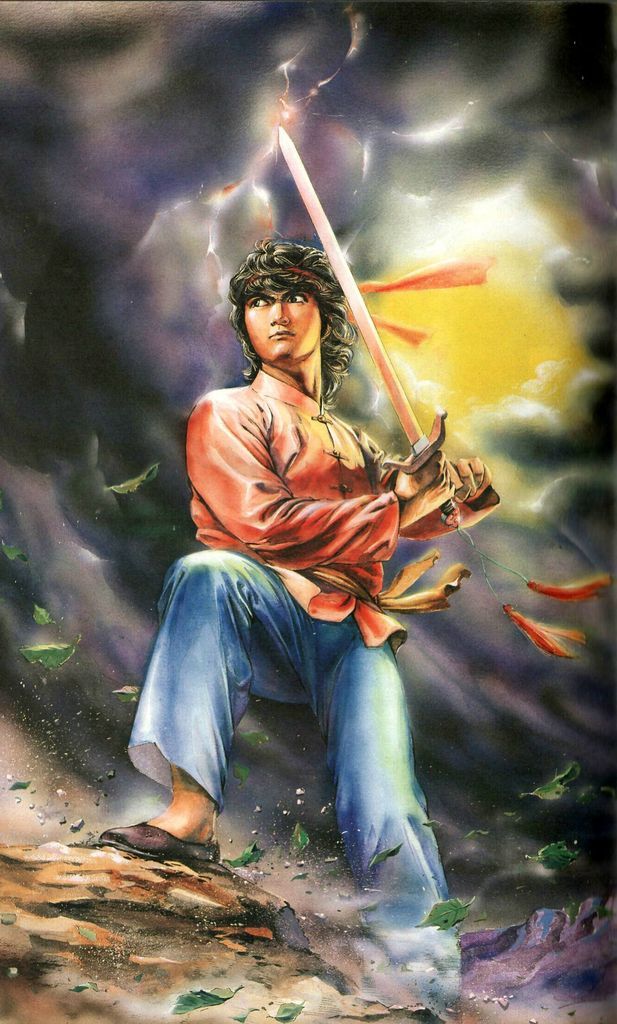
Ma Wing-shin is easily the single most prolific and overpoweringly influential Manhua artist of the last 30 years. Taking his influence from Western cartoons and comics as well as Japanese manga, particularly the then-still flourishing Gekiga movement (Gekiga meaning roughly “dramatic pictures” and being a once-thriving artistic movement in Japanese manga of strikingly realistic and hyper detailed character designs and artwork), Ma Wing-shing's art style would singlehandedly transform the entire Manhua industry, particularly within Wuxia.
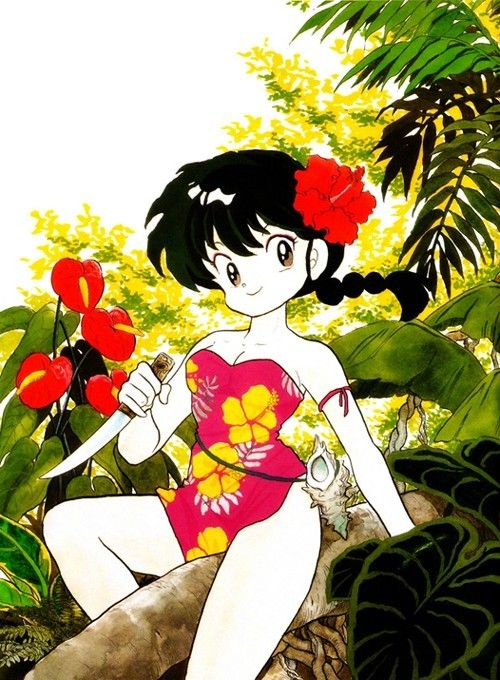
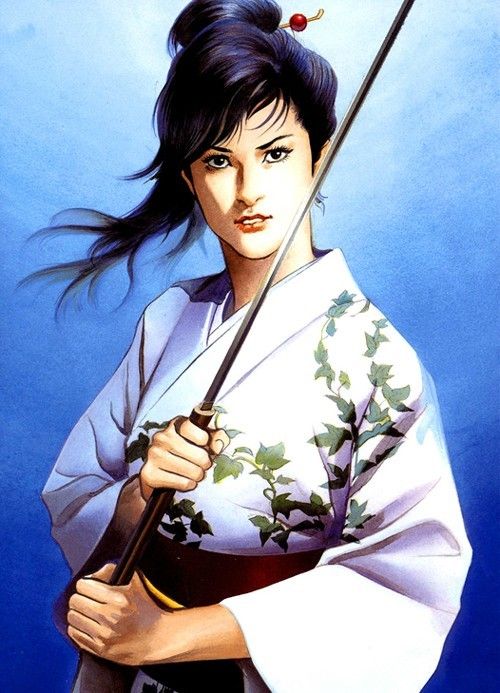
(On the left: traditional, mainstream manga art, as exemplified by Rumiko Takahashi's Ranma ½, which is more “cartoony”, less detailed and more impressionistic, emphasizing a heightened sense of cuteness and innocence. On the right: an example of Gekiga manga art, a piece of promotional art for Lady Snowblood by Ryoichi Ikegami. Gekiga, in stark contrast to traditional manga art, is much more detailed, meticulously shaded, and lacks the signature "overly large eyes", emphasizing realism and naturalism while completely eschewing any sense of “Kawaii” that is so closely associated with mainstream manga and anime. Originally pioneered in the late 60s/early 70s by more “counter-cultural” manga artists, Gekiga was quickly assimilated into mainstream Japanese pop culture and for a period of time in the 70s, 80s, and earlier half of the 90s, Gekiga was a great deal more prevalent and visible in mainstream manga and anime fandom.)
Using incredibly handsome, lushly detailed and colored art, as well as introducing the (soon to become standardized across almost all Manhua) practice of using fully painted art for major splash panels, Chinese Hero would complete what Little Rascals started (and continue to further drive home what the Hong Kong New Wave was doing within film around this time) and transport Wuxia further into more modernized sensibilities. The manhua tells the story of Hua Ying-Xiong (alternately Wah Ying-Hung, whose name literally translates to “Chinese Hero”), a skilled 20th Century Xia and master of supernatural martial arts, who travels to America during 1920s Prohibition to hunt down and seek revenge on the Chicago mobsters who murdered his family as part of a war against China's opium trade.

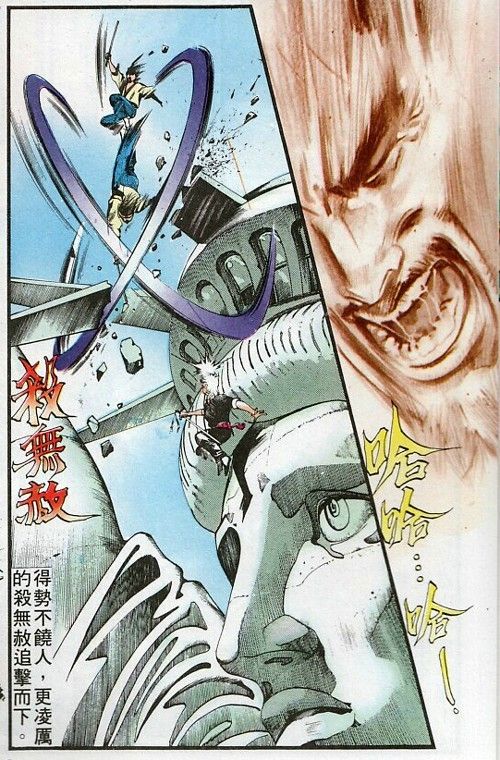
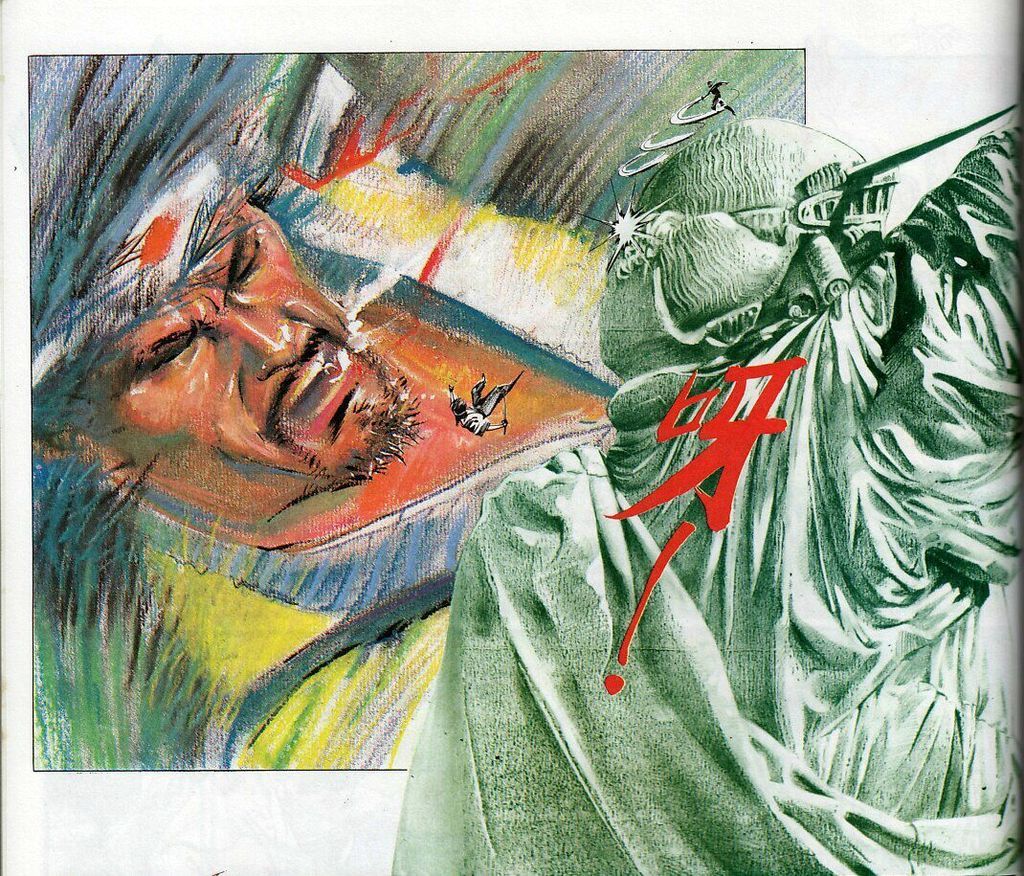
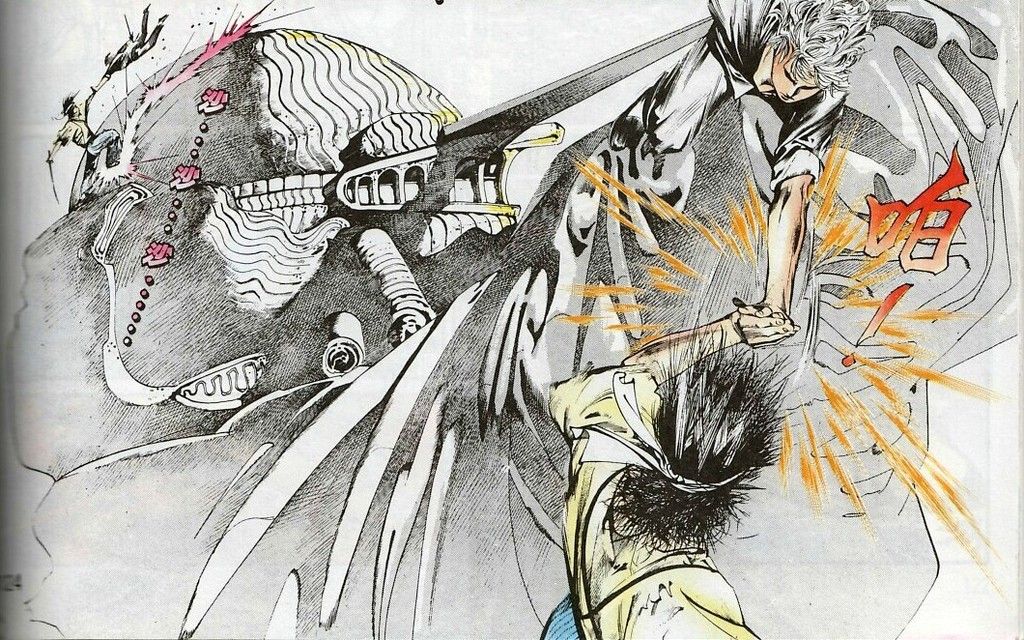
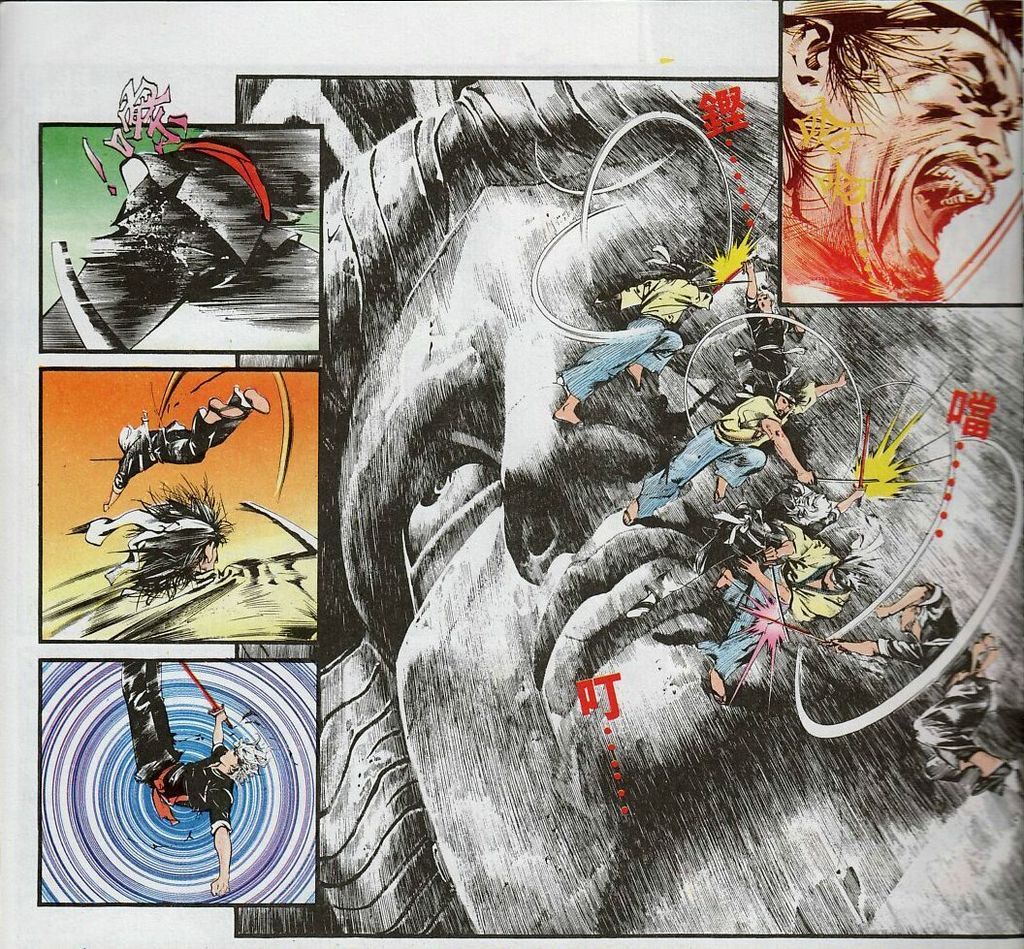
(Hua Ying-Xiong duels with his Japanese rival Invincible atop the Statue of Liberty in Chinese Hero's single most iconic and famous fight scene.)
The Manhua mixes a “fish out of water” story - Hua is a standard justice-seeking noble Youxia archetype taken out of China, away from any sort of mythical Jianghu-like setting, and thrown into the middle of American 1920s mob wars and organized street crime, pitting kung fu, high flying ancient swordplay, chi blasts, and archaic martial arts honor against tommy guns, brass knuckles, switchblades, and good old fashioned down and dirty Western street toughness (and racism) - with more standard Wuxia mythmaking and folklore, as another principal storyline involves the dark, cursed powers behind Hua's signature weapon, the Blood Sword.
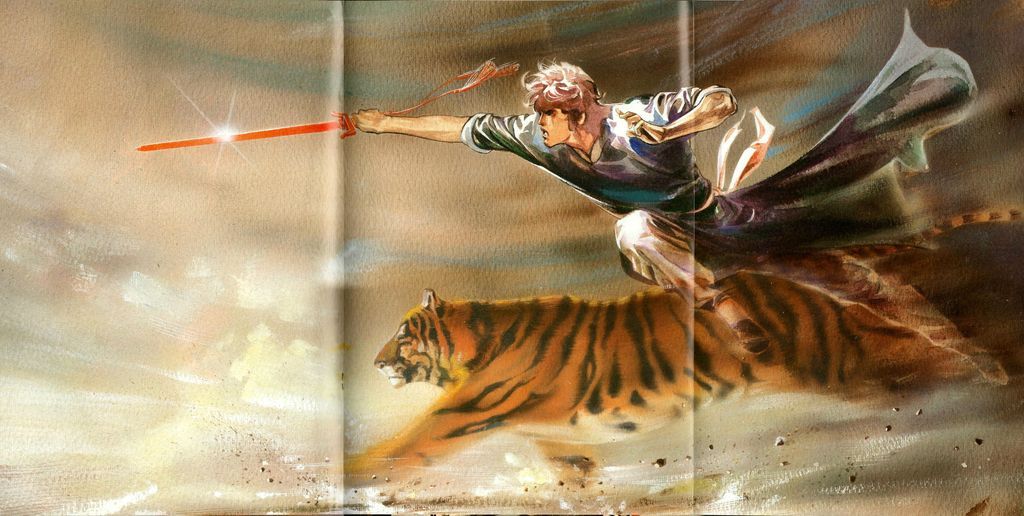

A deep crimson blade, the Blood Sword has been passed down Hua's family for generations and possesses vast and deeply unstable supernatural powers, taking immense skill to properly wield. The Blood Sword becomes the main icon of the series, eventually being passed on to Hua Ying-Xiong's son, Jian-Xiong (named after the Blood Sword's Chinese name, Chi Jian), whose adventures are chronicled in later story arcs.
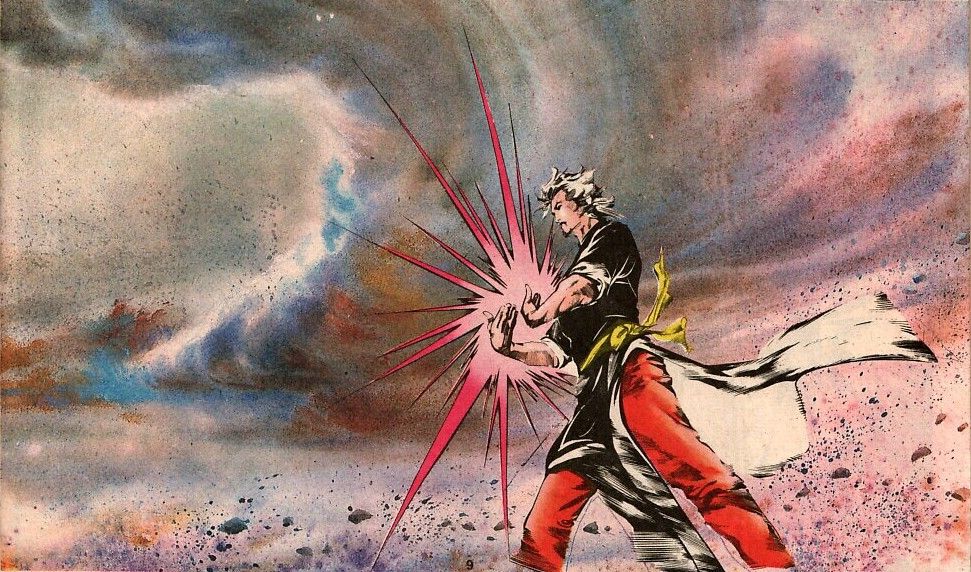
(Jian-Xiong, son of the original Chinese Hero, inheritor of the Blood Sword, and protagonist of the later half of the series.)
Chinese Hero is easily, bar none, the single most radically landscape altering manhua of the last generation or two. It not only would change the look of and bring more Japanese and Western influences into Chinese comics, it would also help further cement Wuxia as the dominant genre within manhua, similar to how superheroes have become so inescapable within Western comics. Furthermore it would also help popularize and bring more modern genre-blending into Wuxia manhua, which would loop-feed back into Wuxia films and television as well as many live action adaptations of popular Wuxia manhua would come to be made throughout the 80s, 90s, and beyond.
This influence would even spread back to Chinese Hero's forebear Little Rascals, which after the controversy over its violence died down and after the establishment of the Indecent Publication Law, would RADICALLY re-invent itself.
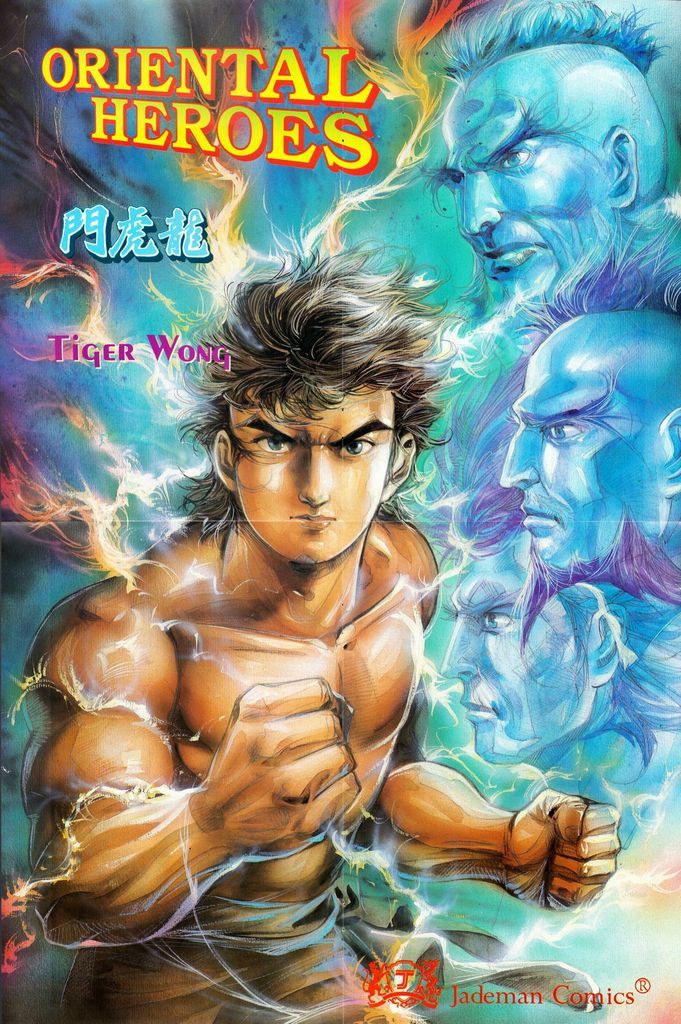
Changing its title to Oriental Heroes (aka Dragon Tiger Gate, depending on which translation you're going by) and completely reconfiguring its artwork to match up more with Ma Wing-shing's more elegant style, the series would age its principal trio of young street fighters from teenagers to their 20s, and follow their continuing, escalating conflicts into even further fantastical realms of mythical Chinese martial arts fantasy storytelling across decades worth of storylines (being published up to this day still).
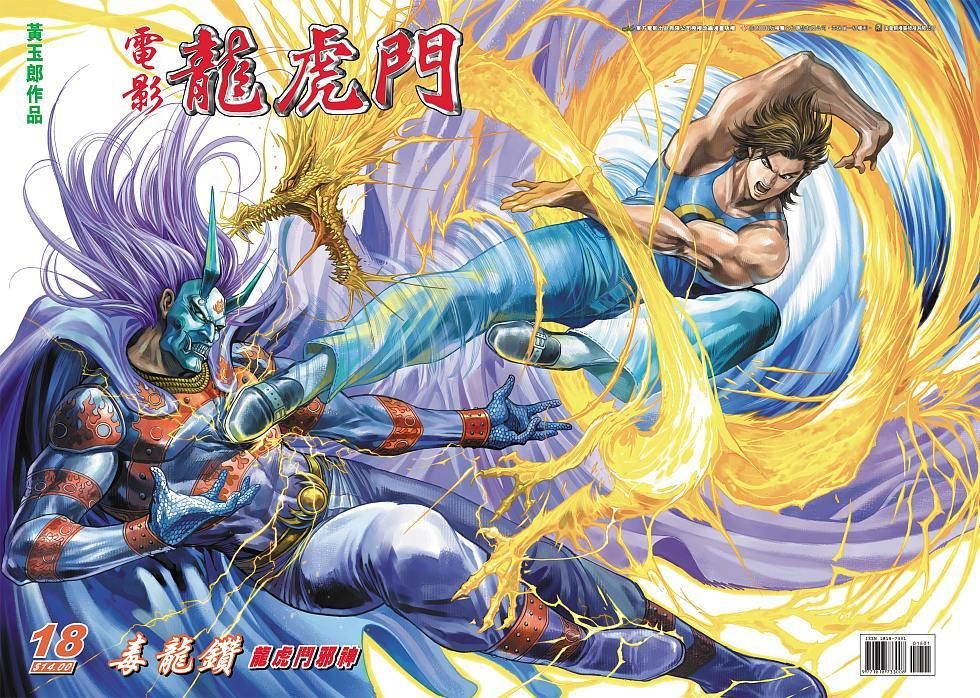

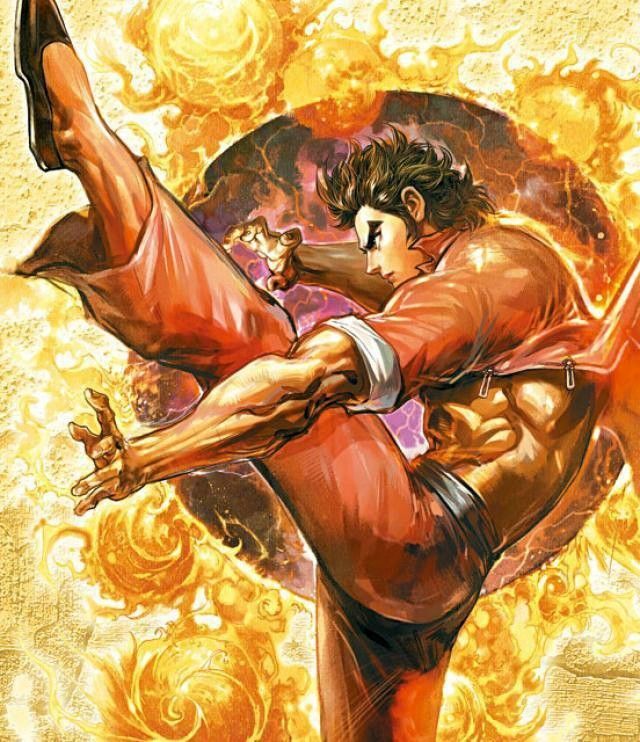
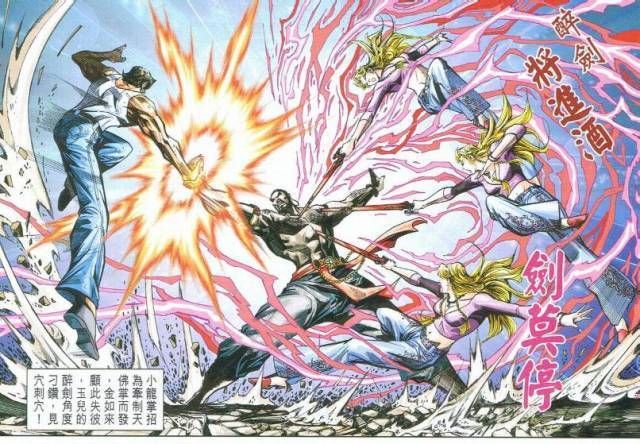
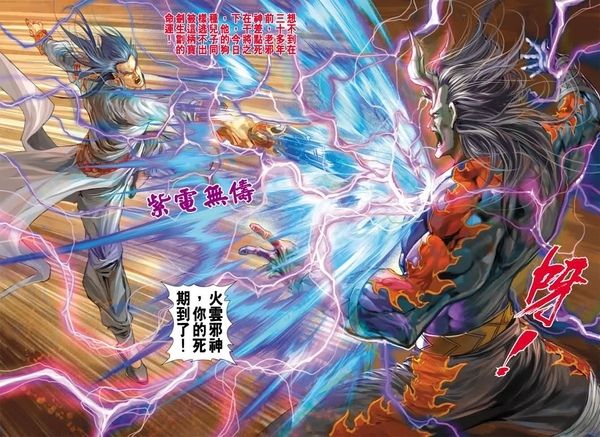
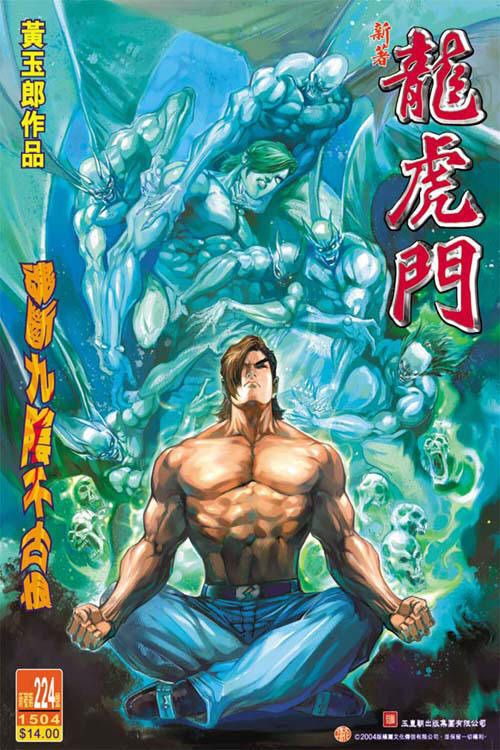

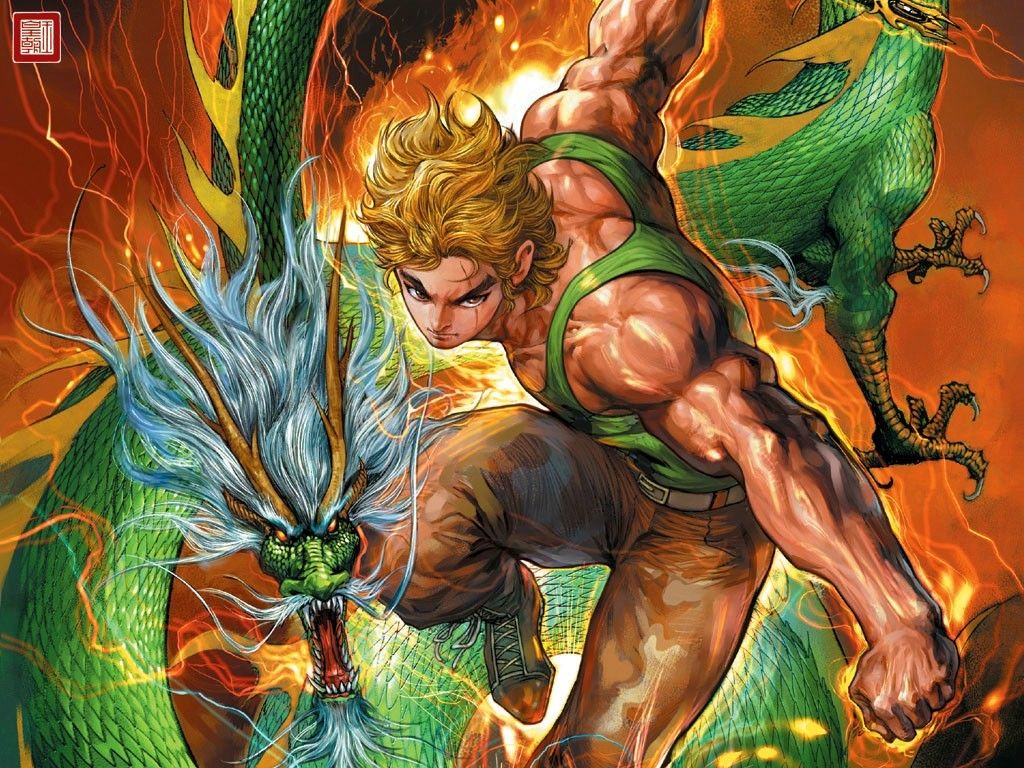
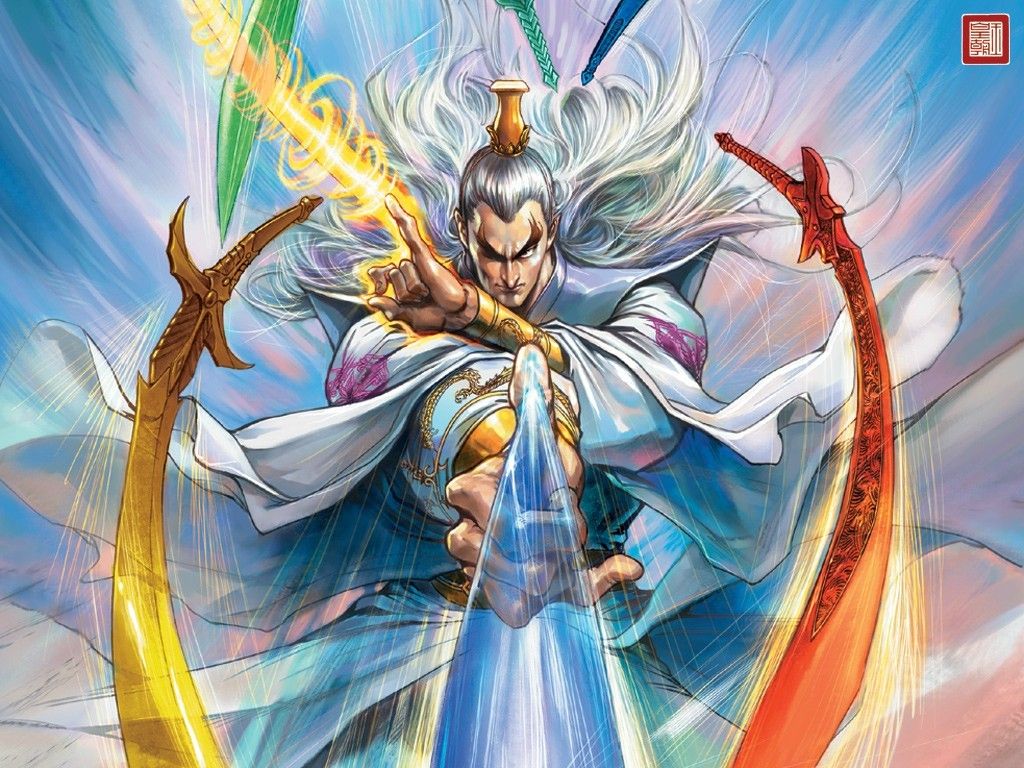
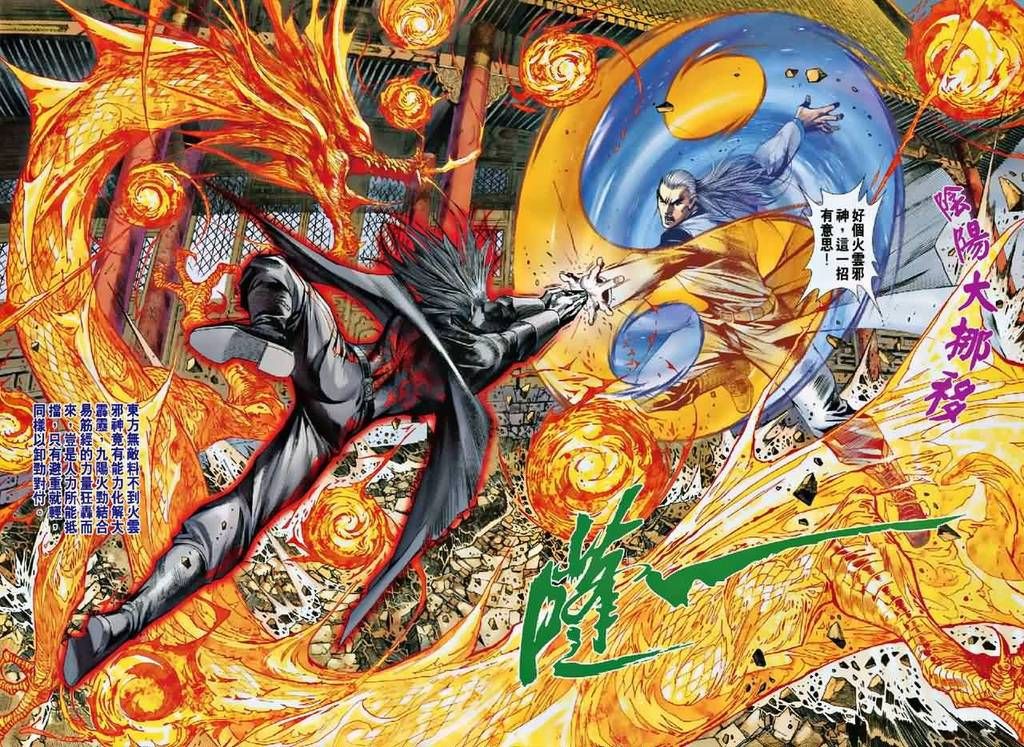
Thus, as Wuxia began to modernize and stretch its boundaries to encompass numerous Western and contemporary genre-flourishes across film, so too was it happening within manhua/comics. Both of them side by side, and feeding off of one another to varying degrees.
This continued evolving and transformation of Wuxia in the 1980s invaded what at times felt like literally every square inch of Asian pop culture. As the influence of Japanese Gekiga manga art made its way into Chinese manhua's art style, so too would this new, contemporary form of Wuxia find its way back over to Japan and into manga.
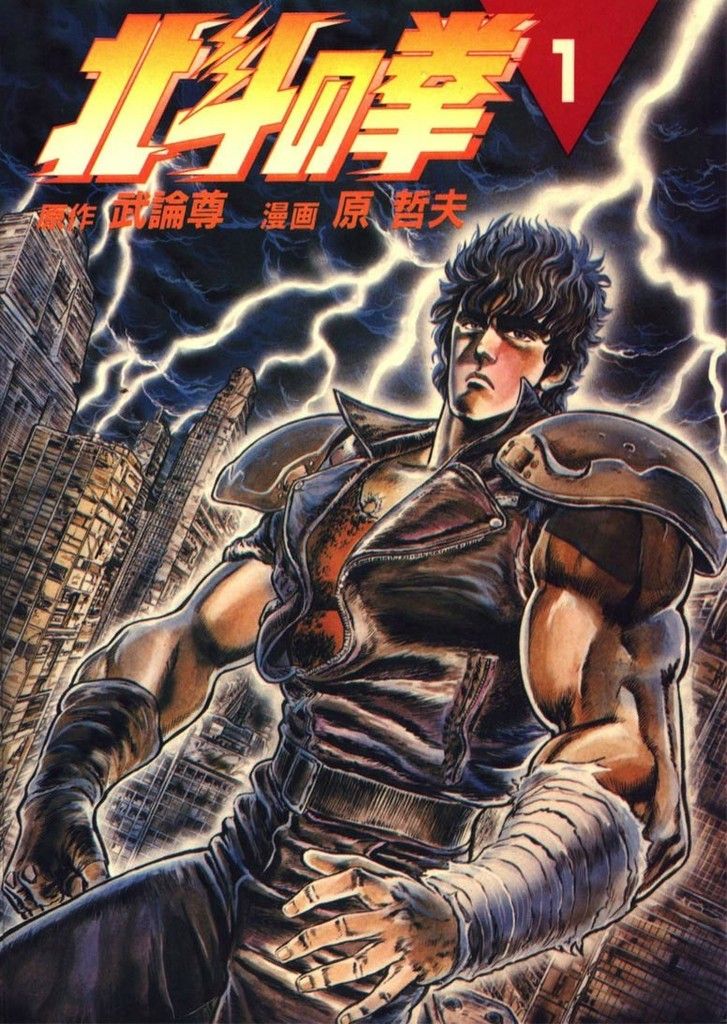
(All together now... ATATATATATATA!!!)
In 1983, from the giant stew of more gritty 70s martial arts films, pulpy grindhouse violence, and the still new and just-emerging form of mixing fanciful Wuxia with modern foreign genres that was the Chinese film and comics landscape, there arose a Legendary Savior of the Century's End... Hokuto no Ken aka Fist of the North Star.
For those of you out there who somehow still know nothing of this monumentally influential manga/anime series, Fist of the North Star centers on Kenshiro, the principal inheritor of full mastery of the Hokuto Shinken martial arts style. Being a style that's primarily focused on internal martial arts techniques, Hokuto Shinken focuses on both the usual supernatural Kikou mastery common to Wuxia as well as precision strikes aimed at special “Tsubo” (pressure) points on the body.

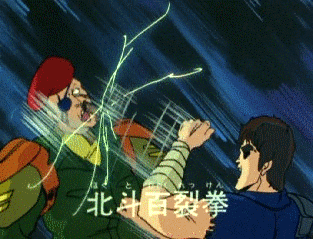
(Hokuto Hyakuretsu Ken!!)
Depending on the point struck, the level of power used to strike it, or the sequential order of points hit, Hokuto Shinken techniques are capable of either healing grievous illness and injury, or causing the body's muscles and nerves to literally tear themselves apart... with graphically grotesque, Grand Guignol results.
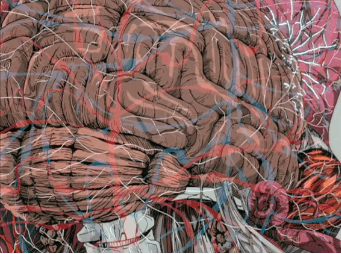
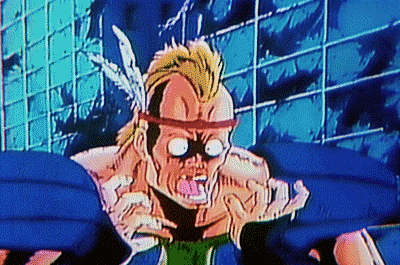
(What happens to most typical thugs whose vital points are struck by Kenshiro's fists.)
This effect is taken from the Wuxia concept of “Dianxue” or “Dim Mak”, where Xia of the Wulin community likewise strike with surgical precision at sensitive Chinese acupuncture points both for medicinal healing as well as to cause often utterly horrific damage to their opponent's body in a fight. Once more, as with nearly all other aspects of Ki control, this too stems from the Meridian points on the body: the idea behind pressure points is that they act as crucial junctures through which Ki flows throughout the body. Disrupting the body's flow of Ki through these critical linchpin points can cause either grievous physical harm or relieve tremendous physical stress and burden on the body, thus accelerating the the body's natural healing.
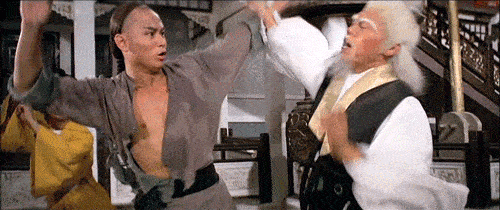
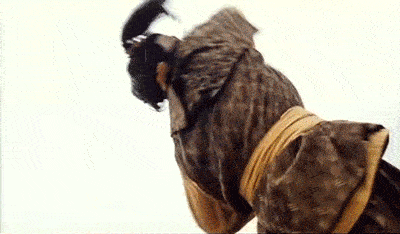
(Particularly skilled martial arts masters of the Wulin world have an intricate knowledge of delicate nerve points on the human body that act as critical pathways for the body's flow of Ki, and are capable of exploiting them in combat: often to crippling or lethal results.)
Fist of the North Star follows Kenshiro on a quest to find and rescue his lost lover Yuria, who was taken from him by his former friend Shin, principal inheritor of the Nanto Seiken martial art style, an externally focused fighting art and the polar opposite counterpart to Hokuto Shinken, which focuses on piercing, ripping, and tearing away at the body piece by piece with one's bare hands or even fingertips, using more brute force than focused precision.
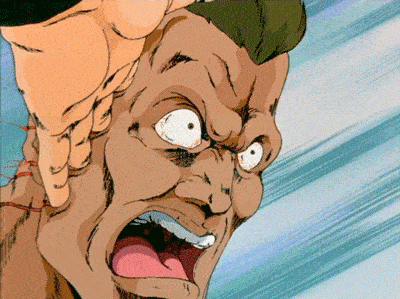
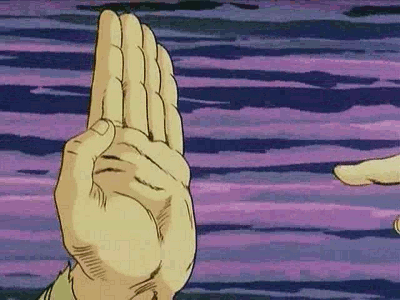
Goaded and driven mad by Jagi, one of Kesnhiro's jealous and corrupt adoptive brothers, Shin gives into his own jealous lust for Yuria and betrays Ken, defeating him in combat in order to steal her from him: in the process he uses his Nanto techniques to disfigure his torso with the series' signature “seven scars” in the shape of the Big Dipper, the constellation which is also the signature symbol of the Hokuto Shinken style.

Barely surviving the encounter, Ken spends most of the series wandering a ruined Earth that has been devastated by nuclear war and has experienced a total societal collapse in his search for Shin and Yuria. Every step of the way, Ken must overcome vicious motorcycle riding marauders who prey upon the weak for food and other basic necessities, as well as a number of tyrannical would-be despots and self-appointed dictator figures attempting to grab power for themselves in this hellish no-man's-land (which includes Shin himself), and a seemingly endless array of rival martial arts masters from rival schools and fighting styles intent on challenging Ken for his ownership of the full secrets of Hokuto Shinken... including two out of his three adoptive brothers, Jagi and Raoh, who see Ken as unworthy of being the inheritor of the style and who also fancy themselves as iron-fisted rulers intent on oppressing the weak with their own fighting skills.
Apart from its beautifully detailed gekiga art style and its hard-edged violence, Fist of the North Star's other noteworthy attribute was its setting an otherwise pretty straightforward Wuxia tale of wandering chivalrous heroes, warring kingdoms, and rival martial arts clans against a Mad Max-inspired post-nuclear apocalypse background instead of ancient Chinese mythical Jianghu. Thus ancient superpowered fighting arts clash amidst roving biker marauders and dune buggy-driving ragged survivors struggling amongst arid wastelands and the decayed remnants of what were once modern cities.
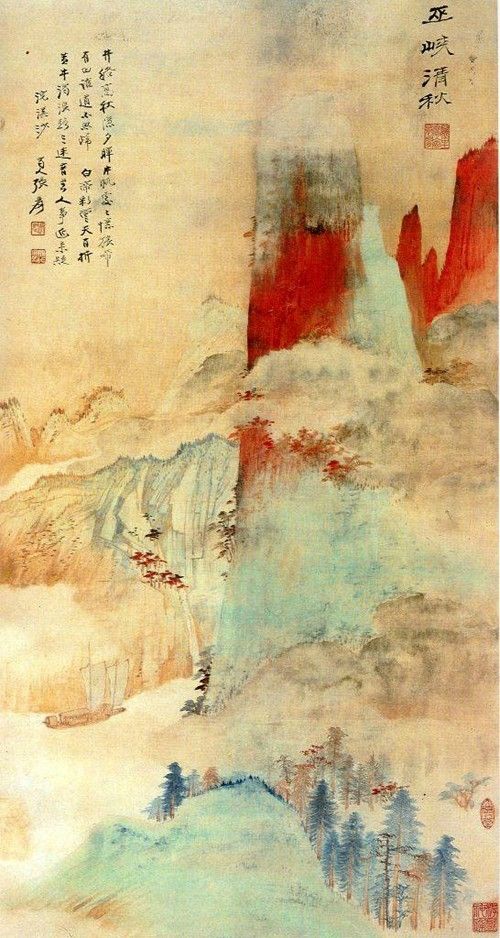
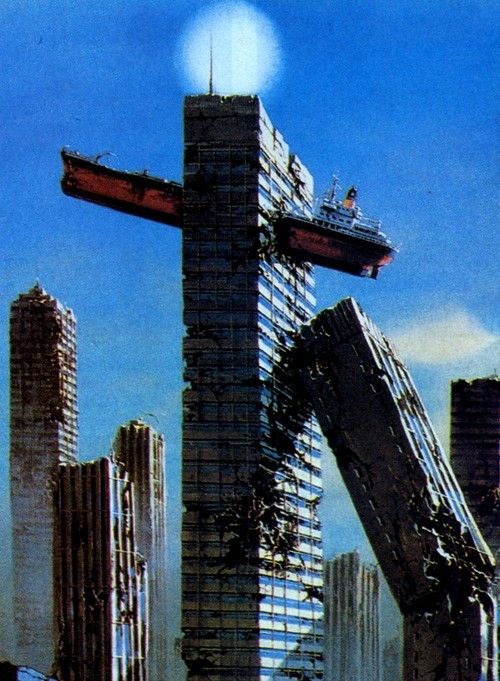
(In keeping with what were at the time still burgeoning trends across Wuxia fiction, Fist of the North Star “modernized” and “experimented” with its otherwise traditional Wuxia narrative by transplanting it from the lush heavenly beauty of Jianghu to the nihilistic Hell on Earth of The Road Warrior.)
Owing as much to similarly hard-edged, envelope pushing “shonen” (haha) manga like Violence Jack (which also explores a similarly nihilistic post-apocalyptic setting, albeit without any of the mystical kung fu) as it does to its Australian, American, and Chinese cinematic (and comic book) genre forebears...
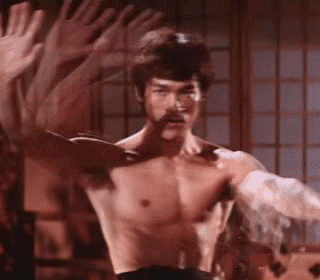
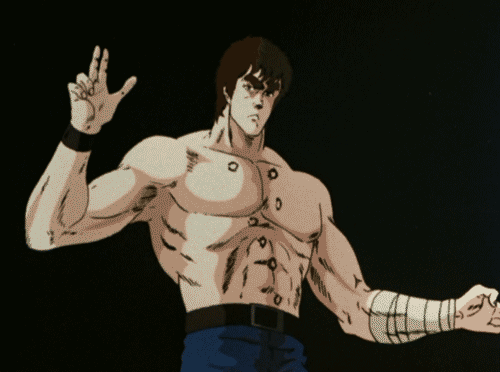
...Fist of the North Star was hardly the first ever martial arts or even Wuxia-inspired manga. But it was certainly among the first ever to incorporate this new style of contemporary genre mixing with Wuxia, along with setting the framework for that formula as a blockbuster recipe for success within the Japanese manga and anime market.
And make no mistake, for all the shoulder-padded, mohawked motorcycle thugs and gorily exploding craniums...

(And hell, its not like cinematic Wuxia was any stranger to gratuitously exploding people's heads even years well before HnK)
...Fist of the North Star is without question unmistakably a Wuxia story to its utmost core.
From its ever-wandering, honor-bound, justice-dispensing Youxia protagonist:
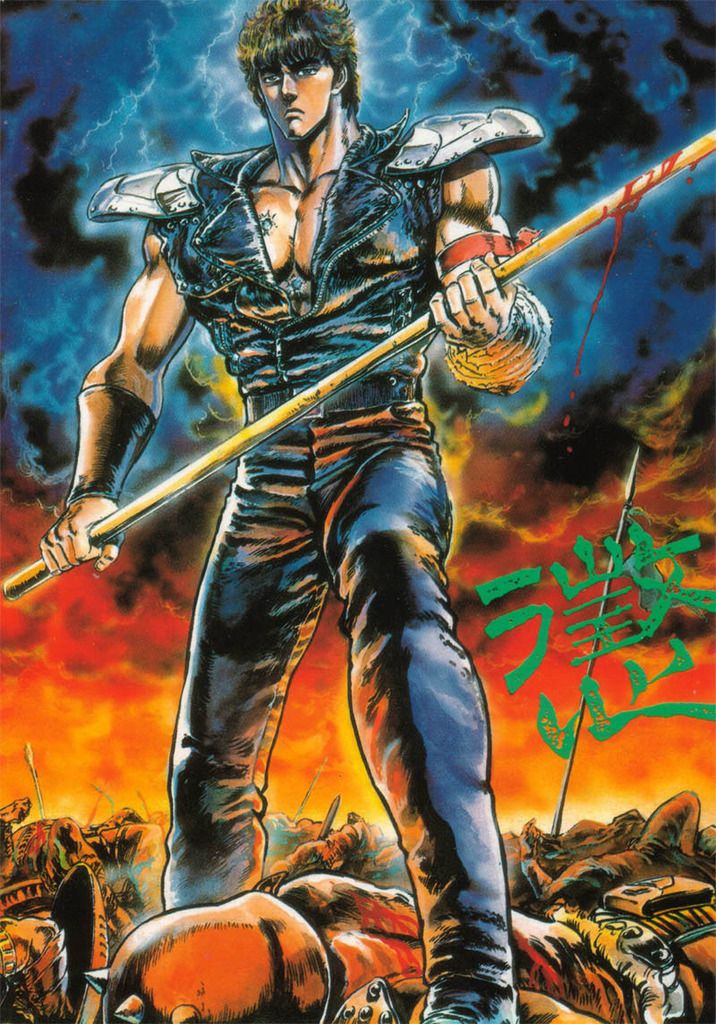
(...duh)
To its bevvy of evil, corrupt, oppressive kingdoms:
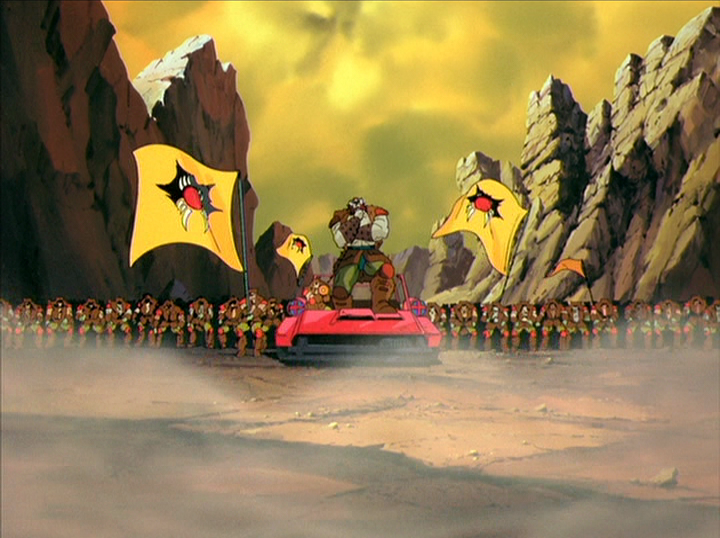
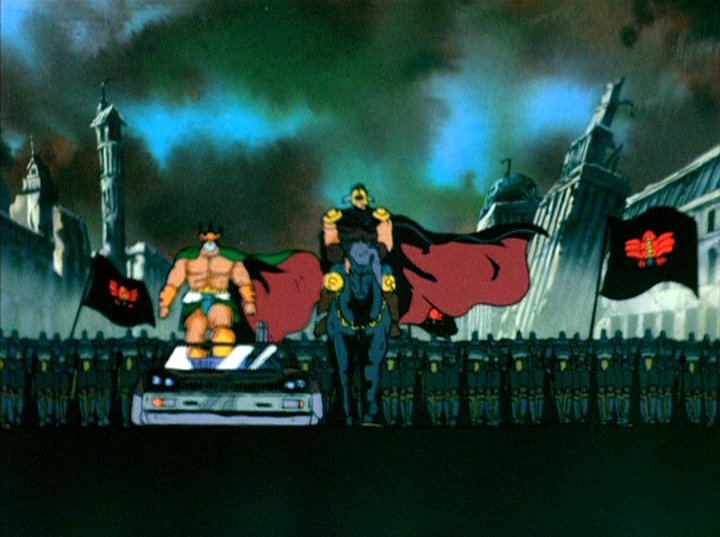
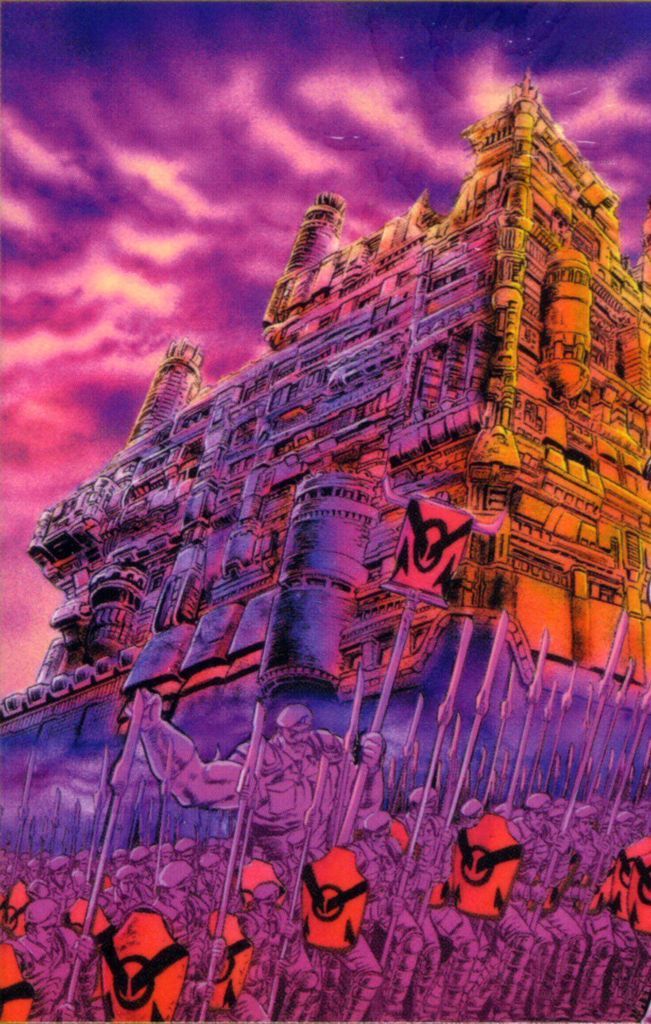
And sadistic warlords that go with them:
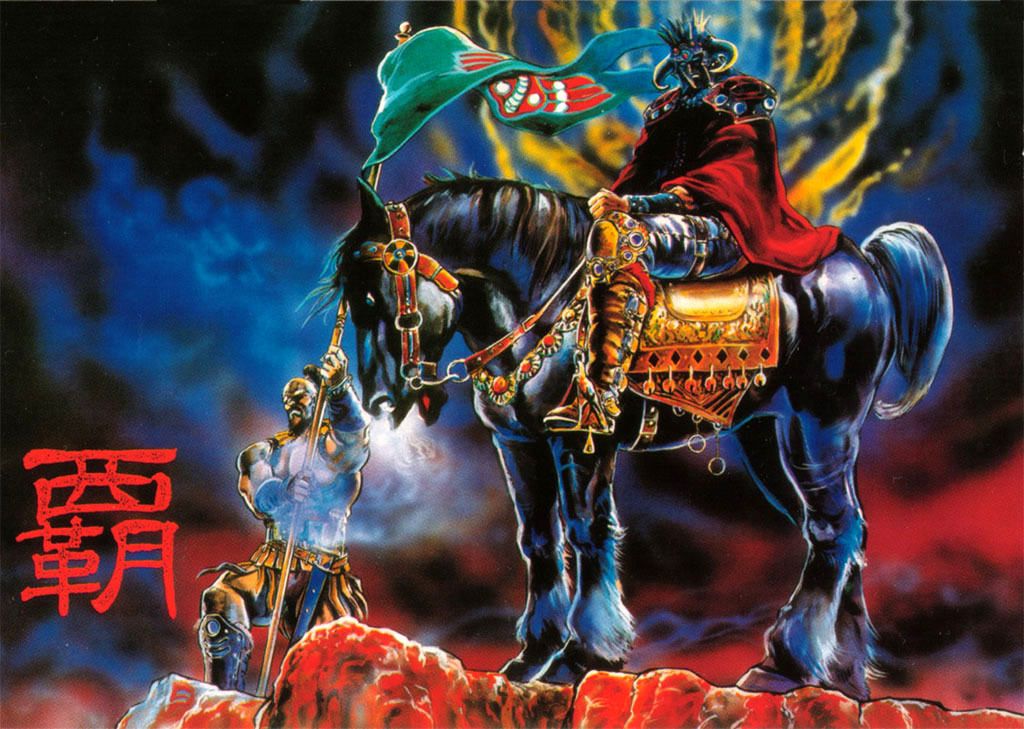
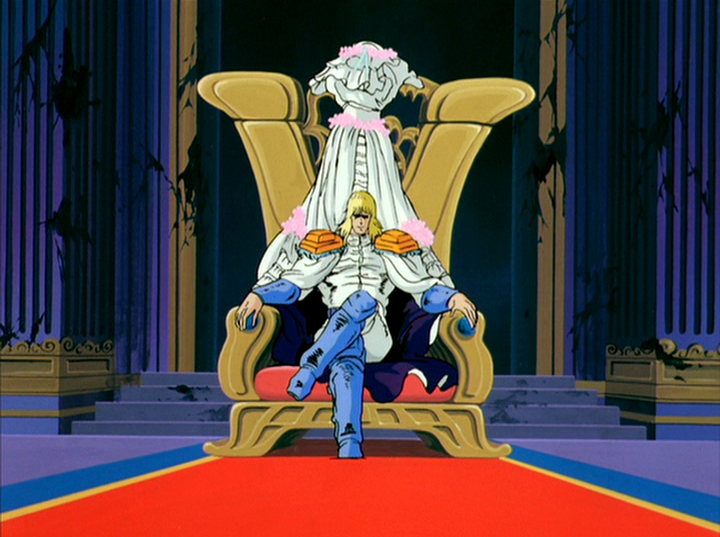
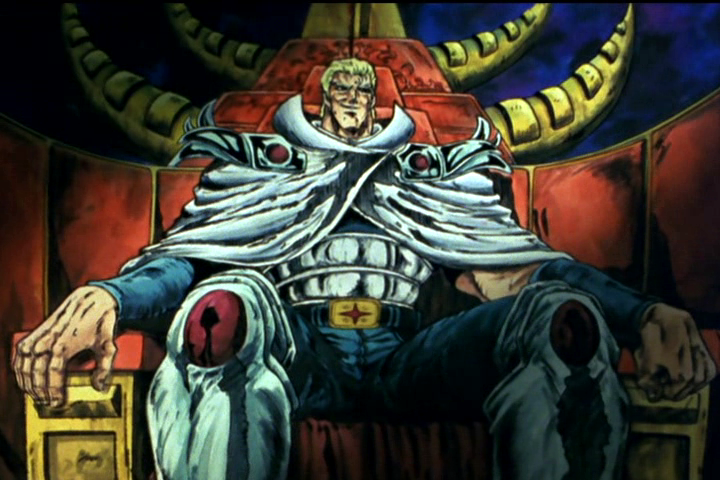
To of course the various martial arts styles and schools at war with one another:
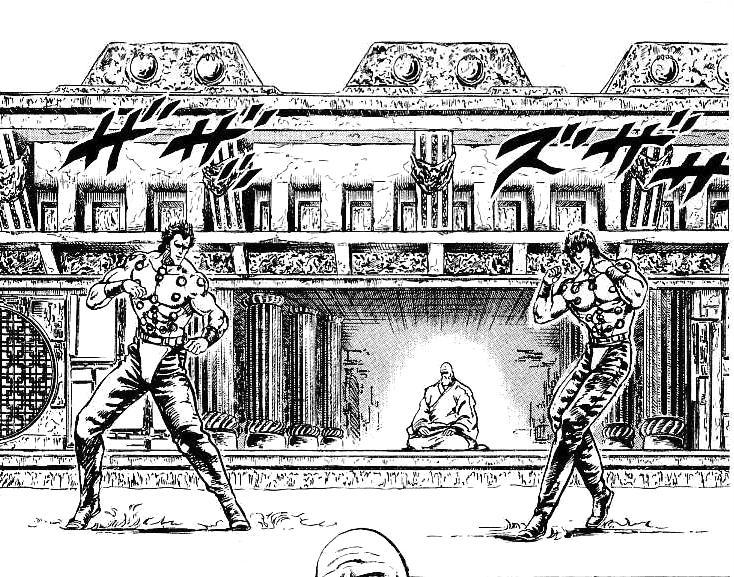

Which all make up a vast underground martial arts community of superpowerful Wulin:
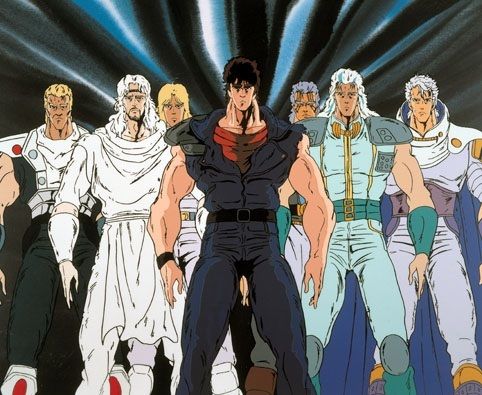
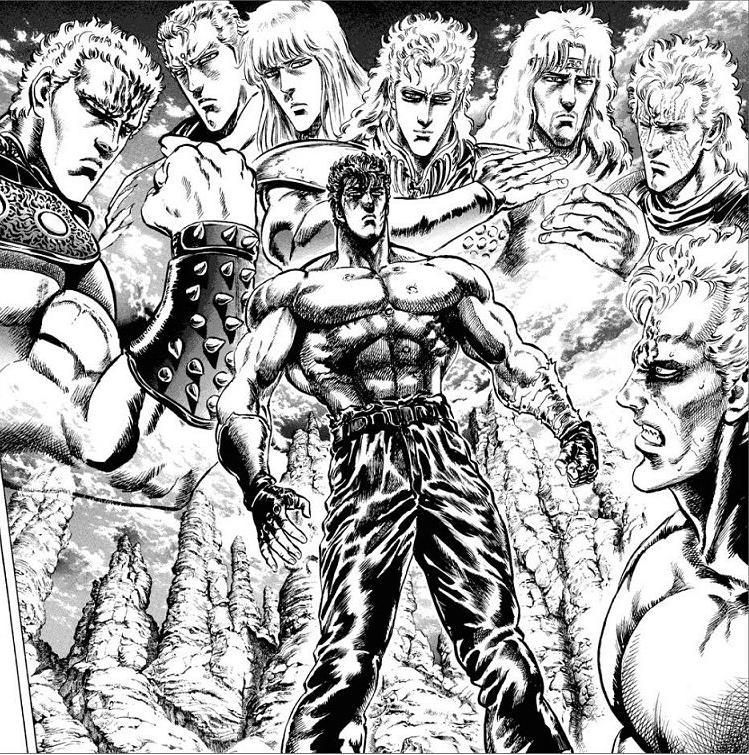
(DO SURVIVE! Kawaita kokoro ga DO SURVIVE!! Motomete naiteru DO SURVIVE!!! Asu sae miezu ni)
Who are all capable of tapping into incredible, Ki-enhanced kung fu techniques:
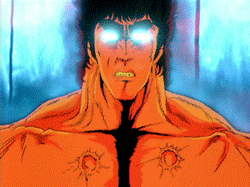
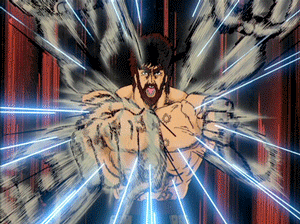

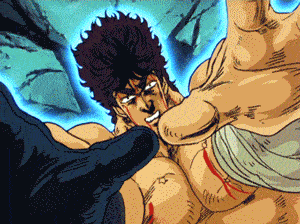
Who use them to fight amongst one another for honor, to prove their strength, and to control or fight back against legions of roving, nomadic bandits who prowl the wastes:
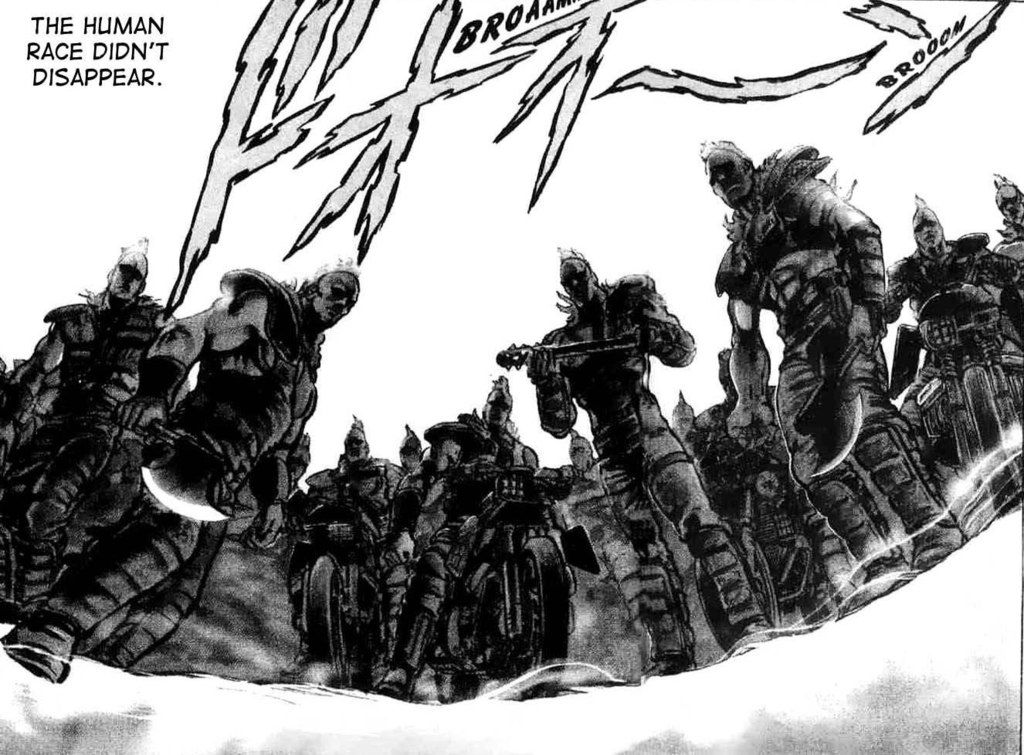
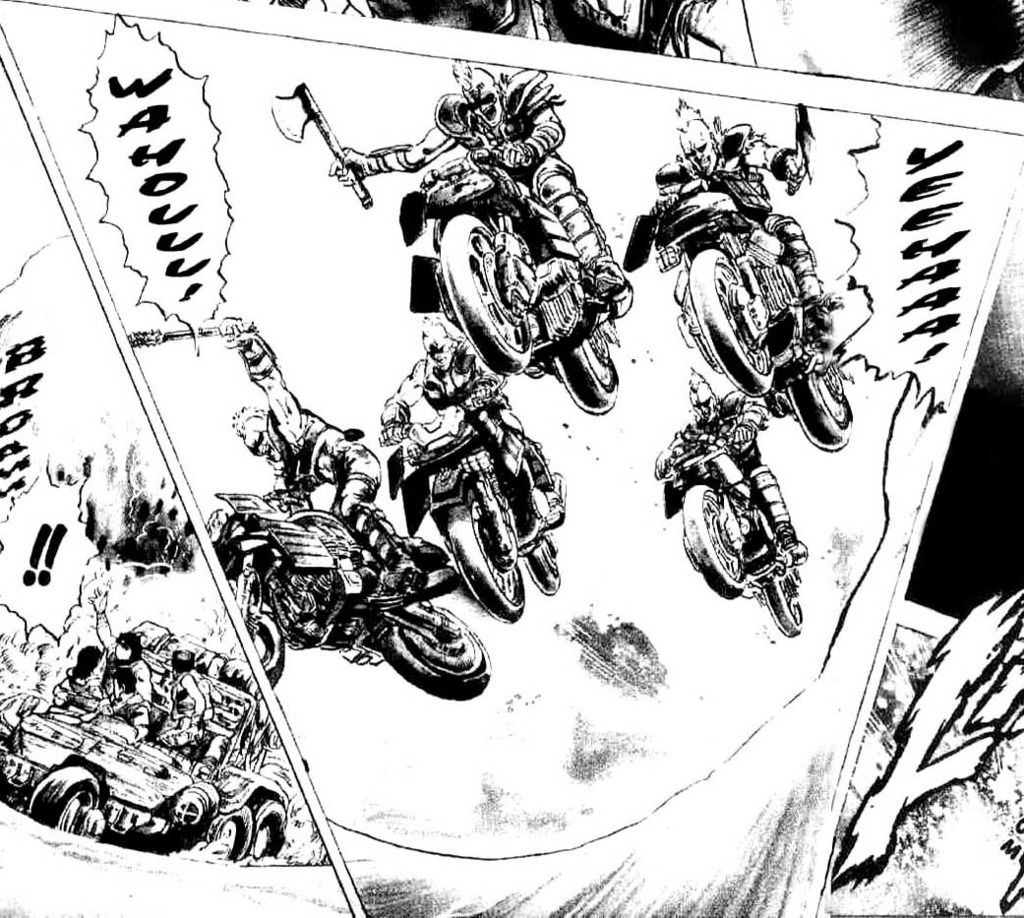

Yeah. Simply take away the brutal Mad Max setting, which is basically just window dressing, and put it back in Jianghu and this otherwise could've EASILY been a novel written by Louis Cha or a movie made by Shaw Brothers Studios in 1970.
In many ways, that's precisely the principle that this whole era of Wuxia media across Asia was hinged upon: taking what were still at their deepest most core Wuxia stories and characters, and simply re-arranging the window dressing with more unique, more foreign, and more modern outer layers.
Also by that same token of course, lest we forget in 1984 the year following HnK's debut, another popular manga author, one with a VASTLY more whimsical sensibility and fresh off the massive success of his breakthrough non-sequitur-laden children's comedy Dr. Slump, would jump into the fray with a little Wuxia manga of his own... at first little more than a fluffy, satirical, and heavily Dr. Slump-ified take on the Wuxia cornerstone Journey to the West (again, one of the 4 most singularly defining works in all of Chinese literature with two of the others also being Wuxia) before spiraling out of control into something altogether more weirdly ambitious...
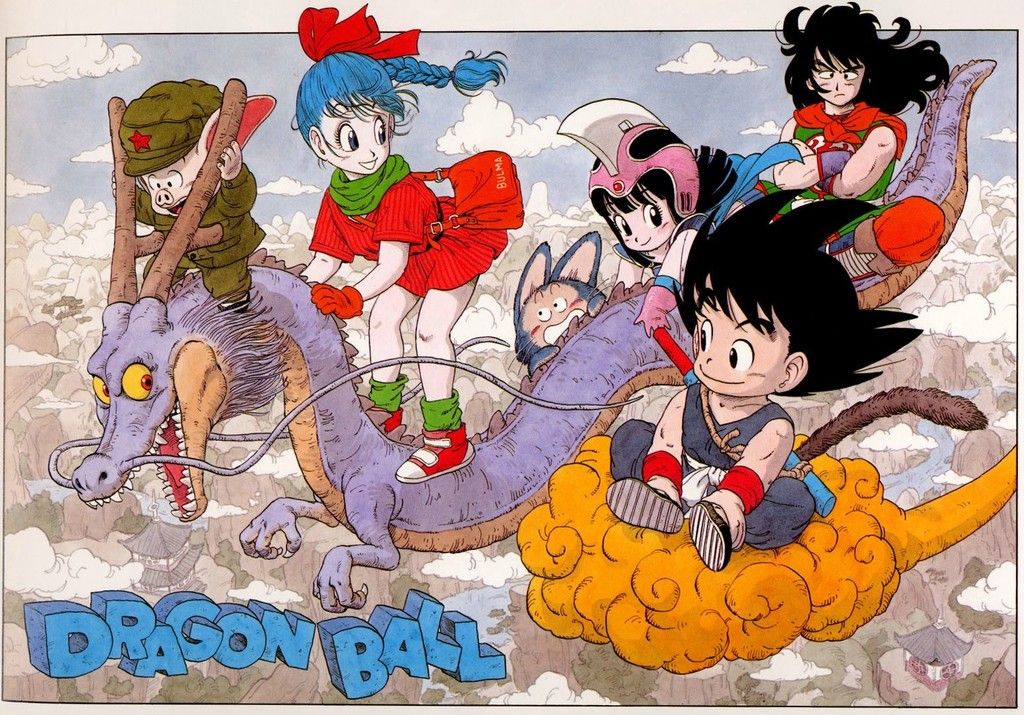
(And cue that OTHER-other theme tune...)
Ah, but we're saving the finer details of that particular thread for its very own section in all of this.
The groundwork for this strange new modernized hybrid form of Wuxia was laid in the 70s, the 80s would begin it properly in earnest. And the 90s? Well the 90s is where things went into a psychotic cocaine-fueled overdrive.
Wuxia in Modern Media Section V: Breaking the Genre and Global Popularity (1989 - 1993)
Even as the 80s were drawing to a close, the modern genre-hybridization of Wuxia could easily be seen to be escalating in its outlandishness. By 1989's The Iceman Cometh, out and out time travel was introduced into the mix.
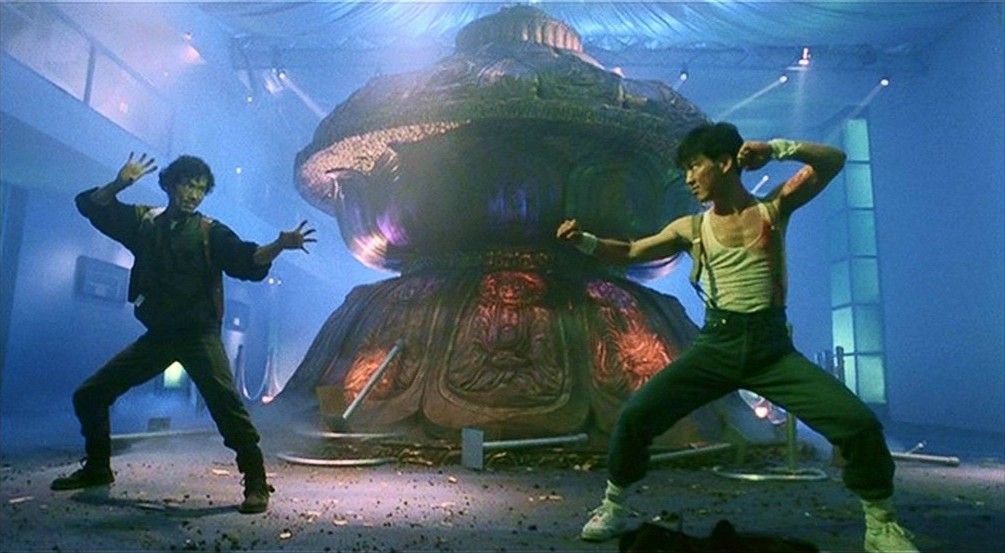
Often compared to a Wuxia-ified take on the 1979 film Time After Time (where a time hopping H.G. Wells pursues Jack the Ripper across numerous decades) The Iceman Cometh begins in ancient Jianghu where Fong Sau-ching (Yuen Biao once more) a royal warrior of the Ming Dynasty is in pursuit of Feng San (the always fun and gleefully sleazy Yuen Wah), a fellow soldier who has betrayed the kingdom by raping and murdering dozens of women of the royal court, as well as stealing a magical artifact called the Jade Buddha, said to control time and offer its user eternal agelessness.

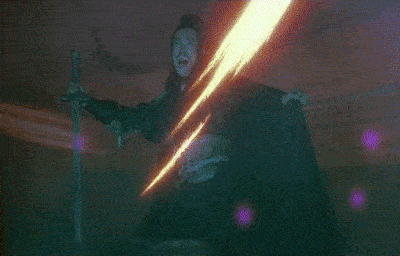
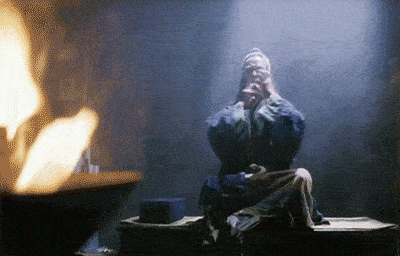
Fong corners Feng atop a snowy mountain and as the two fighters duel, the powers of the Jade Buddha are mistakenly unlocked and the two are placed in a magical stasis, transporting them to modern day 1980s Kowloon.
Upon awakening and navigating their way through an unfamiliar time, the deranged Feng finds himself immediately drawn to the criminal element, using his formidable martial arts skills to muscle his way up the ranks of a dangerous Triad gang. Fong meanwhile continues to attempt pursuing him while acclimating himself to unfamiliar technology and modern living with the help of a street hustler/call girl he befriends named Polly (90s HK cinema icon Maggie Cheung).
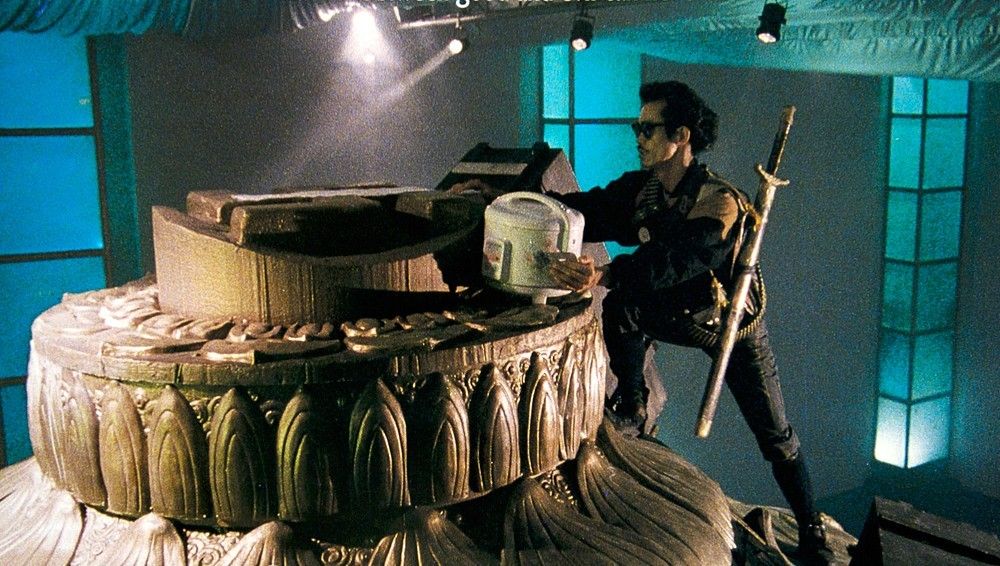
Sort of similar to Chinese Hero, Iceman Cometh does the ol' Xia-as-fish out of water routine with not just one, but this time two Wulin fighters, this time magically transported through time from Jianghu to the modern urban streets of Kowloon. Apart from its then-novel time travel gimmick, the movie's also notable for its brutal knock down, drag out final brawl between Biao's Fong and Wah's Feng inside a museum of ancient Chinese relics (symbolism!), which is certainly one for the books.
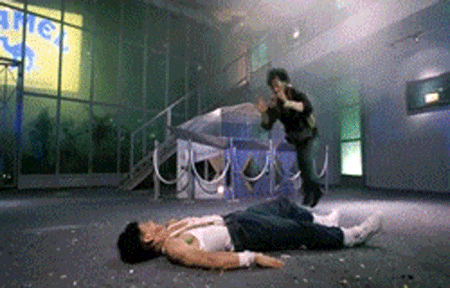
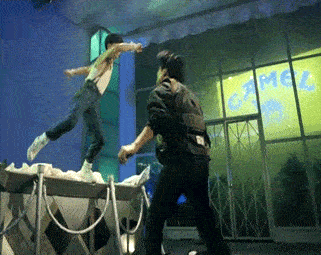
This will hardly be the only time that time travel will be utilized as a Wuxia plot element as the 90s progress.
On the literary end of things, one of the most important and influential contemporary Wuxia authors to come about at the tail-end of the 80s/dawn of the 90s was Huang Yi. An almost immediate sensation in Chinese Wuxia literature right at a time when literary Wuxia was seen as on its last legs due in part to the massive amounts of attention being drawn away from it towards other media incarnations of the genre (film, animation, video games, etc.), Huang Yi's biggest and most notable innovation was taking a cue from the then-Asian zeitgeist of the genre and further pushing the envelope by bringing science fiction elements and futuristic technology into Wuxia.
One of his more notable Wuxia/Sci Fi novels A Step Into the Past centers on Hong Siu-lung, an officer in the VIPPU division of the Hong Kong Police Force in the 21st century who is recruited to test a top secret government time travel experiment. He is sent back in time thousands of years ago to ancient Jianghu, and is accidentally stranded there due to a glitch in the procedure. As he desperately attempts to find a way back to his own time, he ends up embroiled in numerous battles and conflicts between warring kingdoms, and grows as a strong martial artist while attempting as best he can to avoid changing too many important events in history for fear of the potential damage and ripple effects across time.
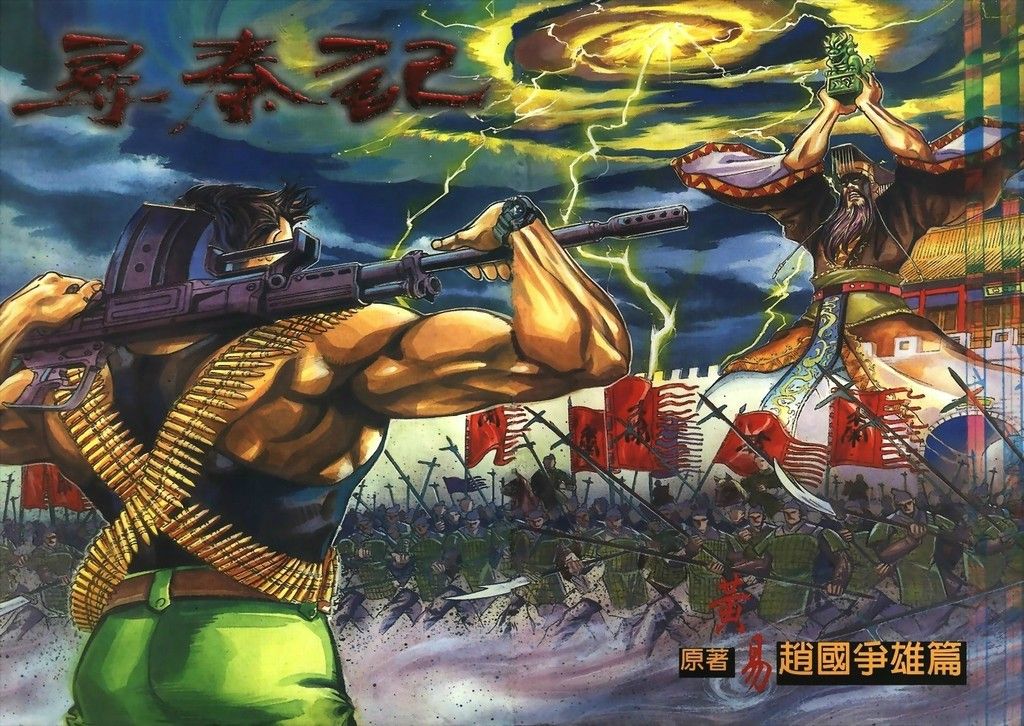
(21st century police officer/government time travel operative Hong Siu-lung faces down ancient armies and powerful warriors of the Wulin world as a man out of time, as seen in the early 90s manhua adaptation of A Step Into the Past.)
Huang Yi's massive success in an at-the-time-dying Wuxia literary landscape (that has since been massively revitalized) can be seen as further evidence that in the late 80s and early 90s, one of the most surefire recipe's for success in the genre was blending more and more modern and foreign genre elements with it. Even to this day, Yi's sci fi/Wuxia puree novels remain some of the most widely read and widely recognized contemporary Wuxia novels throughout large chunks of Asian territories.
As the brazenness and wild abandon of contemporary genre-blending continued to grow ever constantly across Wuxia media throughout Asia, sci fi influences and usage would only continue to intensify, particularly during the early 90s. A good example of this is the 1991 Wuxia film Saviour of the Soul.
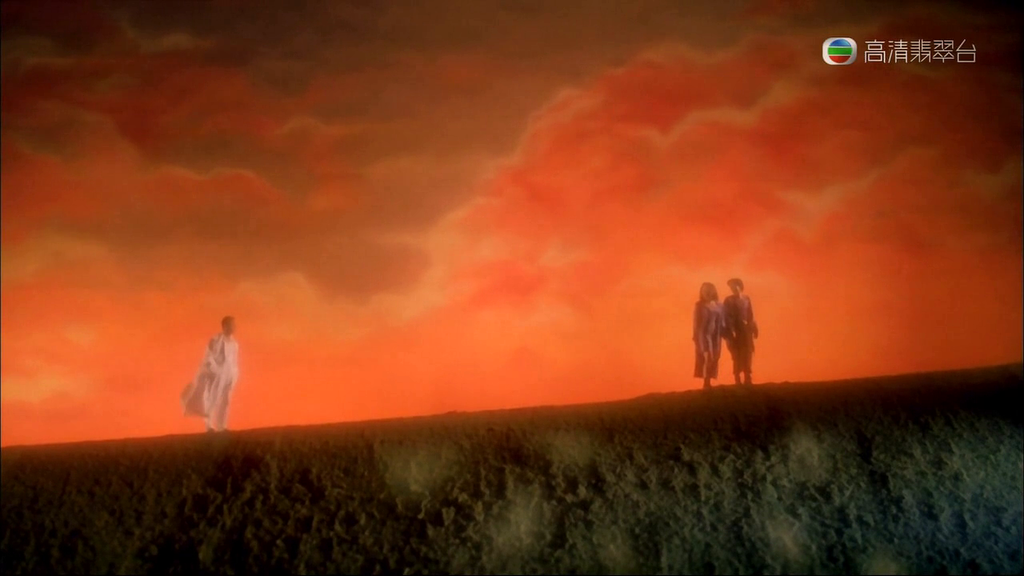
The film follows a pair of modern day mercenaries/martial artists Ching (Andy Lau) and May-kwan (the always incredible Anita Mui, easily and without question my all time favorite Hong Kong actress growing up), who use their powerful fighting skills as professional assassins, specializing in targeting the worst of the criminal underworld. May-kwan's last successful bounty happened to be Old Eagle, the master of Silver Fox (Aaron Kwok, no relation to Venom Mobster Philip), a powerful cyborg martial arts master and notorious criminal who makes it his mission to hunt down May and take his revenge for his slain master, killing anyone (particularly Ching) who happens to get in his way.
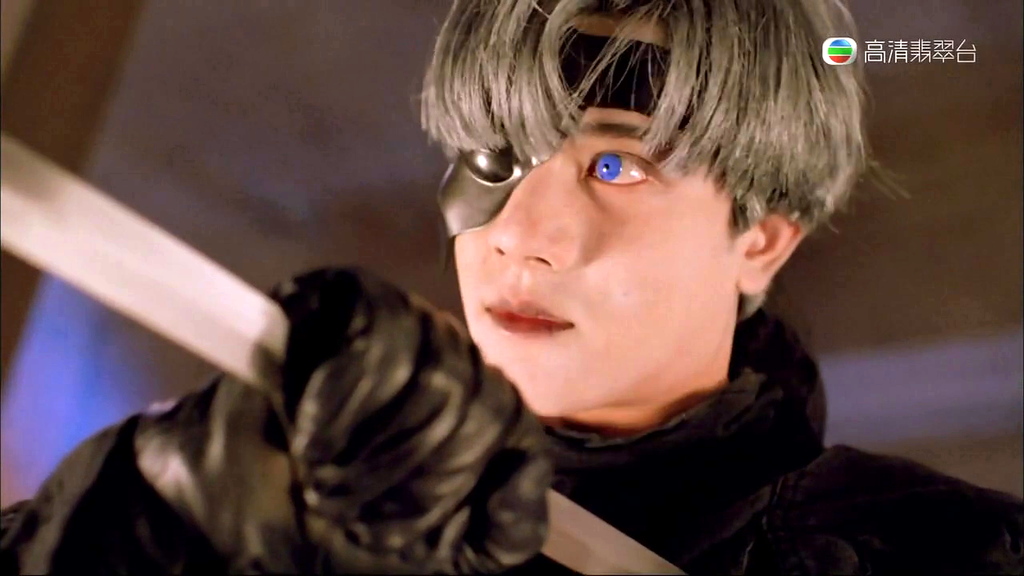
Armed with both advanced technology and mysticism, the movie follows the cybernetic warrior Fox's relentless, unyielding pursuit of May as she and Ching fight to stay a step ahead of his increasingly deadly and bizarre attacks and also work out their own tangled romantic feelings that have long been simmering between them.
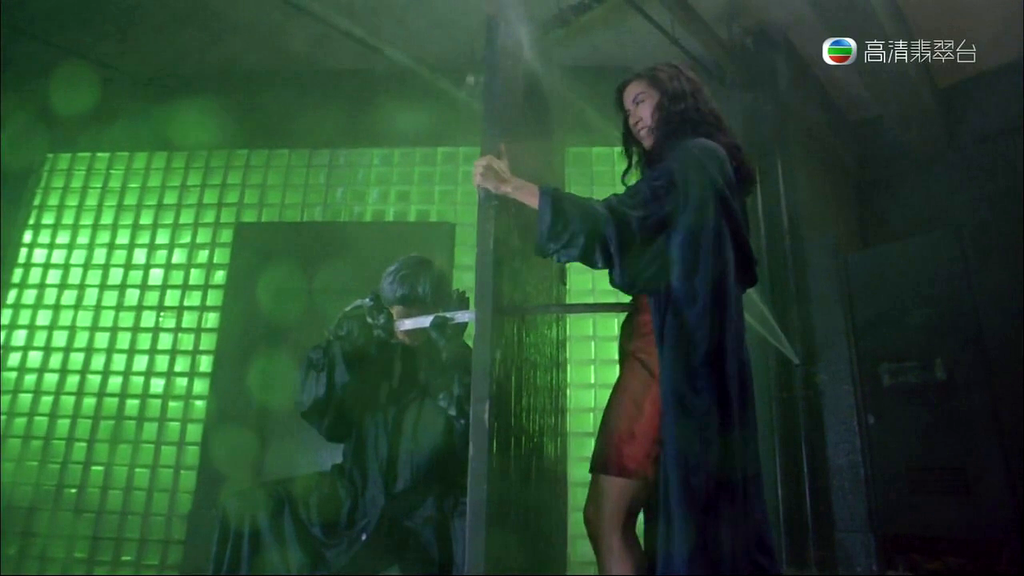
Written by Hong Kong New Wave maestro Wong Kar Wai (and will hardly be his only foray into the genre) Saviour of the Soul is about as exactingly specifically early 90s Wuxia as you can possibly get. With a “throw all inhibitions to the wind” genre-mixing sensibility running deep into its core, Saviour of the Soul is a Wuxia film - featuring a pair of assassins attempting to escape the wrath of a powerful fighter seeking revenge for the killing of his master - that mixes science fiction (high tech gadgetry abounds and the part-machine Silver Fox proves to be quite Terminator-like in his largely silent persistence and unwillingness to stay down no matter how much brutal punishment is visited upon him) with a zany and farcical love story all set in a gothic, comic book/noir-like 20th century urban sprawl that is gorgeously, lovingly filmed almost like a vivid painting or dream brought to life.

Violent and strange mystical martial arts, modern gunplay, sci fi tech, silly romantic comedy, and an atmosphere that's as much Blade Runner-esque sci fi noir as it is the romanticized Chinese fantasy of typical Wuxia, all breathlessly swung from to and fro with boundless hyper-manic energy that makes the whole thing feel like a drug-induced fever dream: this is basically the epitome of what early 90s Wuxia was all about.

Also that same year (1991), another Wuxia series over in Japan began to introduce time travel and cyborgs into its equation after having already spent a few years neck deep in space aliens.
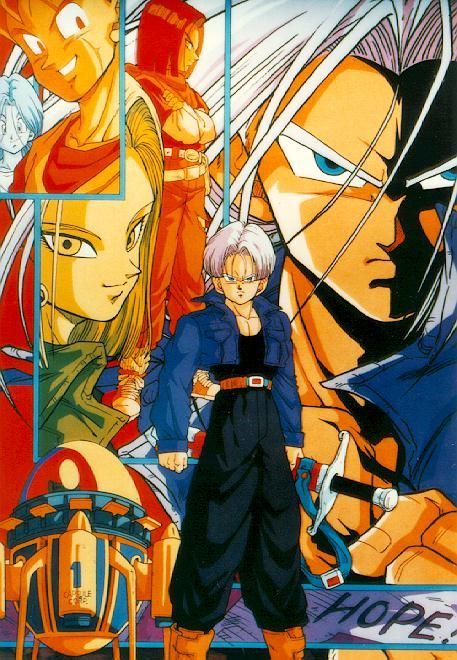
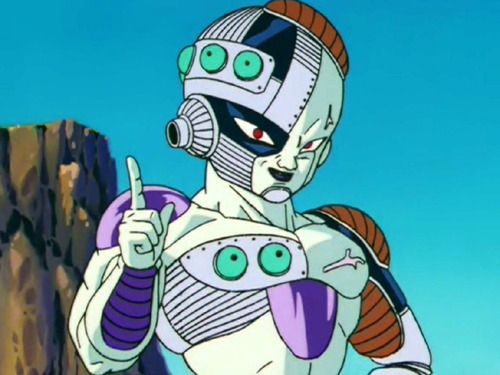
Said Japanese Wuxia series was also, in 1990 and 1991, granted a pair of super low budget, Z-grade live action productions from Korea and Taiwan (as opposed to a big budget Hong Kong produced effort from someone like Golden Harvest, which not only would've been likely pretty cool, it would've been the ideal for this series at this point).
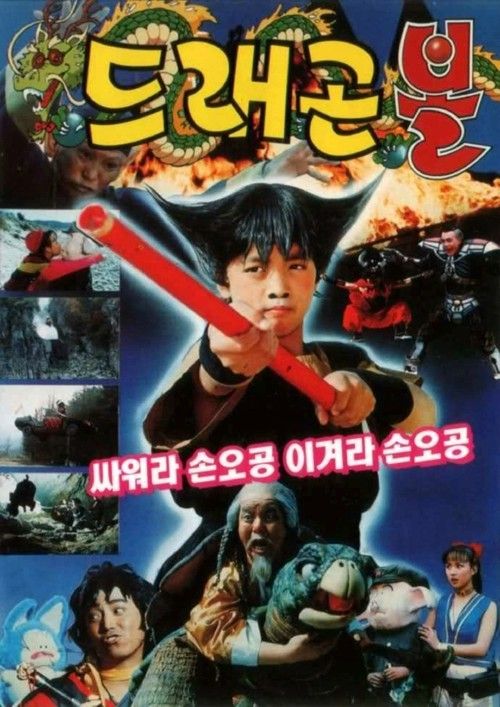
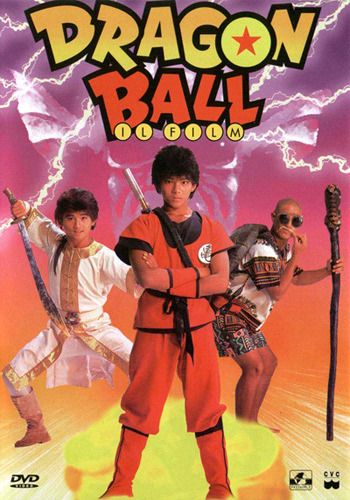
While gonzo insane genre mixing became a signature staple of Wuxia in the 80s and 90s, I've mentioned before that slapstick comedy has a much longer history with the genre dating back to its time as a favorite of Peking Opera stage performances, which to a degree necessitated a form of tonal broadness and eclecticism that carried over throughout much of its modern film and Television history (and can probably be looked to as at least part of the basis for creators like Tsui Hark to make the further leap into incorporating more and more modern and outlandish elements into the mix).
However, as with romance and horror (both of which had also found their way, to varying degrees, into their fair share of older, classical Wuxia) the sheer volume of these elements were cranked WAY up in the Hong Kong New Wave era of the 1980s and 90s. With comedy in particular, this was the direct result of a very specific style of Hong Kong comedy that was originally coined in the 70s and gradually grew larger and larger in cultural prominence (particularly in Hong Kong, its origin point, but also across other Asian territories) throughout the 80s before fully coming into its own and finally being given a proper name by the early 90s: Mo Lei Tau.
A somewhat broad term that can be translated as “Silly Talk”, “Nonsense”, “Coming From Nowhere”, or many other variations along those lines, Mo Lei Tau's origins can be traced back to the 70s and the earliest films of Michael Hui and his brothers and then-filmmaking partners Sam and Ricky (who all wrote, directed, and starred together in most of their classic films). The Hui brothers' 70s films were madcap, farcical comedies characterized by breathlessly fast pacing and rapid-fire dialogue and joke deliveries; essentially the Chinese equivalent of classic American screwball comedies of the 1930s through 1960s and the Hui Brothers themselves effectively the Chinese Marx Brothers.
Particularly notable is their dialogue, which was often densely pun-laden and filled with intricate wordplay, making them incredibly difficult to translate the nuances of their humor outside of their original Cantonese language. Random non-sequiturs mixed with small, subtle bits of biting social satire were also a key characteristic: these can all be found in their classic 70s films such as Games Gamblers Play, The Last Message, and The Private Eyes.
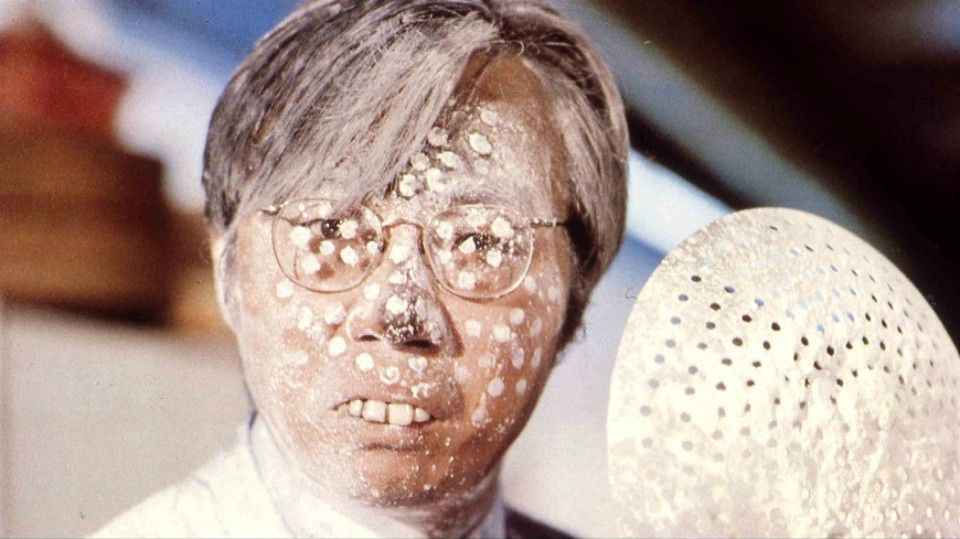
(Michael Hui, the original clown prince of anarchic, puntastic Chinese slapstick, seen here in a scene from The Private Eyes.)
The Hui brothers' brand of ultra absurdist humor was IMMENSELY huge across Hong Kong and China as a whole. They became one of the many principal influences of Jackie Chan as he began his lengthy and legendary career with Golden Harvest in the late 70s. Going into the 80s, Chan would further make his love for the Hui brothers' signature style of humor apparent throughout his 80s films, incorporating more and more random elements of non-sequiturs, nonsense jokes, and fast paced, word-twisting dialogue filled with double and triple meanings alongside his trademark slapstick kung fu choreography and incredible, literally death-defying stunts.
He would also, in these classic years of his career, often star alongside his longtime closest friends Sammo Hung and Yuen Biao, with the three of them making up an iconic kung fu comedy trio across a dizzying amount of incredible, immensely beloved Hong Kong slapstick martial arts comedies: effectively making them the martial arts equivalent of the Hui Brothers, or by extension the Kung Fu Marx Brothers.
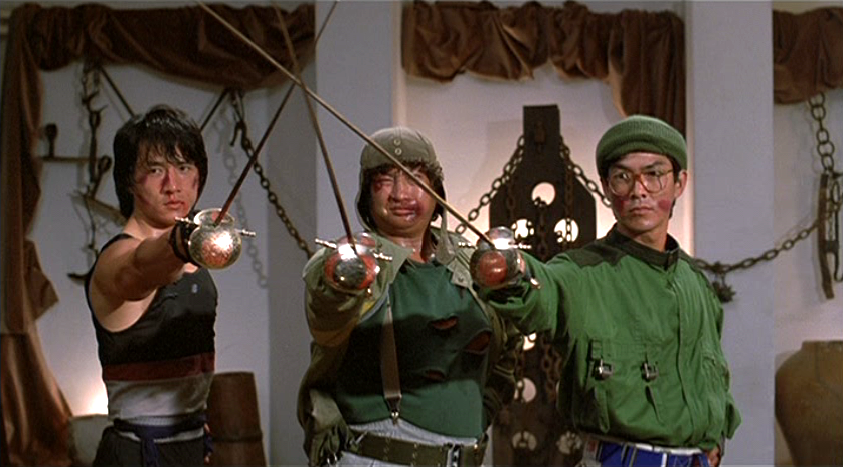
(Martial Arts Musketeers: Chan, Hung, and Biao in the timelessly outstanding kung fu farce Wheels On Meals.)
With Jackie Chan further popularizing and bringing the pervasiveness of this fresh style of Asian comedy over into martial arts cinema, it was all but inevitable that it would find its way into Wuxia, particularly with the HK New Wave in full swing. Elements of the influence of this proto/larval-Mo Lei Tau can be seen across almost all the HK New Wave Wuxia films discussed here already and numerous, countless others, including a 1990 modernized retelling of the classic Wuxia lore of Buddha's Palm, this time with the setting transferred from Jianghu to modern day Hong Kong and which features magical creatures rendered as fully cel animated characters interacting with an otherwise live action world for many of its “completely from nowhere”, absurdly wacky sight gags.
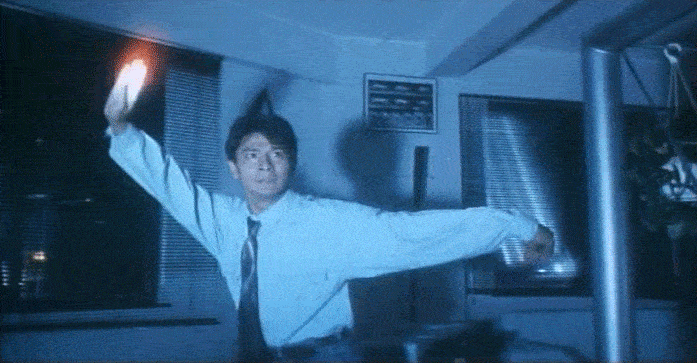
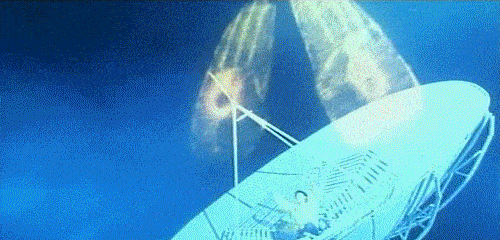
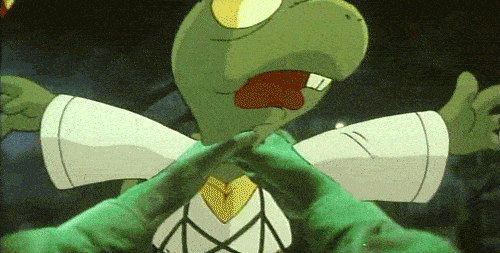
This style of wacky humor grew throughout the 80s but wouldn't be officially christened with the name Mo Lei Tau until the early 90s with the arrival of a certain comedic martial arts actor and filmmaker by the name of Stephen Chow.
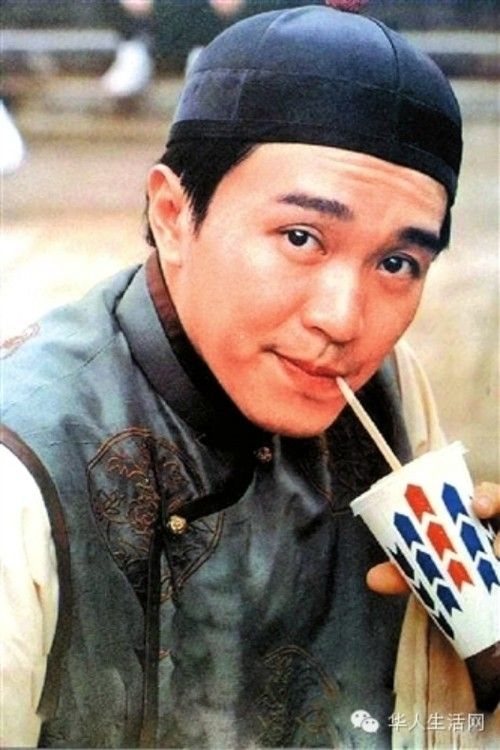
Chow was a rising star as an actor and stuntman in various Hong Kong action and martial arts/Wuxia films and TV shows throughout the 80s, but it wasn't until the early 90s that he'd finally throw his hat into the ring as a director. Chow's hyperactive sense of humor was a perfect fit with the already growing zeitgeist of anarchistic “no boundaries exist” filmmaking that was taking hold of Hong Kong and wider Asian pop culture, and Chow's martial arts/Wuxia films would crank up the absurd puns & wordplay, smartass satire, and ridiculously random and cartoonish cutaway and sight gags to even further new levels unheard of by what was already well by that point an extremely heightened and off-its-meds insane Asian martial arts film landscape.
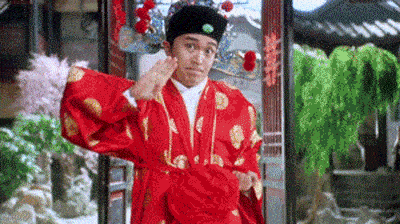
(Stephen Chow became famous for routinely taking the piss out of numerous Wuxia tropes and stereotypes with surreal, manically breakneck paced, and cartoon-like visual and word-based humor, the former seen here in his 1993 Wuxia farce Flirting Scholar.)
Chow's films would seal this style of humor in the eyes of the public and critics as a full fledged movement in Asian cinema, giving birth to the name Mo Lei Tau (and forever associating Chow with it to this day).
As the early 90s went on and the tonal balance of most martial arts and Wuxia fiction still grew ever increasingly unhinged, it was quickly becoming apparent to many critics, fans, and followers of Asian pop culture that the sheer staggering amount of and ever-growing popularity of all this wacky and nutty martial arts genre blending and nonsense humor had to be coming from a much deeper place than merely shrugging off decades of traditionalism in the genre.
The retrospective conventional wisdom among martial arts/Wuxia fandom has it that the real source of all this, at least out of Hong Kong, was the looming 1997 handover of Hong Kong to mainland China by Britain.
As noted earlier, the island of Hong Kong by and large was not a part of the rest of mainland China for a vast majority of the 20th century. Instead it was owned by and a part of Colonial British rule. This fact plays HEAVILY into the identity of Hong Kong culture as a VASTLY separate and different entity from the rest of China.
As I mentioned before and as is widely known in general, mainland China is a very strict Communist society, with extremely rigid and conservative economic and social laws. Hong Kong by contrast, since it was owned by a vastly more liberal nation, was itself not subject to the influence of Chinese Communism and the incredibly volatile and heated political uprisings that were commonplace in the Chinese mainland for generations.
Hong Kong slowly and over time became a haven for artistic and creative minds to escape the oppressive iron thumb of Communist society and enjoy a great deal more freedom of personal expression: which is why so much of the Chinese film and comic book industry was based for so many decades out of Hong Kong rather than the mainland.
In 1984 however, a deal was signed between Britain and mainland China that would hand over rule of Hong Kong back to the mainland by 1997. For Hong Kong this was one of the single most culturally surreal, never-wracking, and life upending moments in their still fairly young history as an individualist culture: how would assimilation back into Communist society affect the thriving society of “outsiders” and free thinkers that had been cultivated and had defined them for almost the past hundred years?

(The flag of Hong Kong from 1959 to 1997, denoting its ownership by Great Britain.)
A great deal of cultural tension and angst regarding the handover gripped most of Hong Kong for the vast overwhelming majority of the 80s and 90s. Its generally seen by many now that the extremely bizarre and escalatingly turbo-charged film and pop cultural landscape of Hong Kong in those years was in no small part a reaction to all this pent up cultural anxiety over the handover, with the gonzo warped creative output of the culture during this time almost being an inhibition-free “farewell bash” to the much more politically loose lifestyle that the people of Hong Kong had enjoyed for roughly close to a century.
And as it happened, since cultural movements of this level of magnitude hardly ever occur within a vacuum, this creative output would have an MASSIVE degree of influence not just across the rest of Asia, but also globally too.
Over in Japan, Fist of the North Star would hardly be the only manga/anime mega-franchise to be heavily inspired by what was happening with Wuxia over in Hong Kong. Another major Wuxia series (this time Seinen rather than Shonen) would come to the fore in Nihon: 1985 would see the first publication of Makoto Ogino's The Peacock King series.
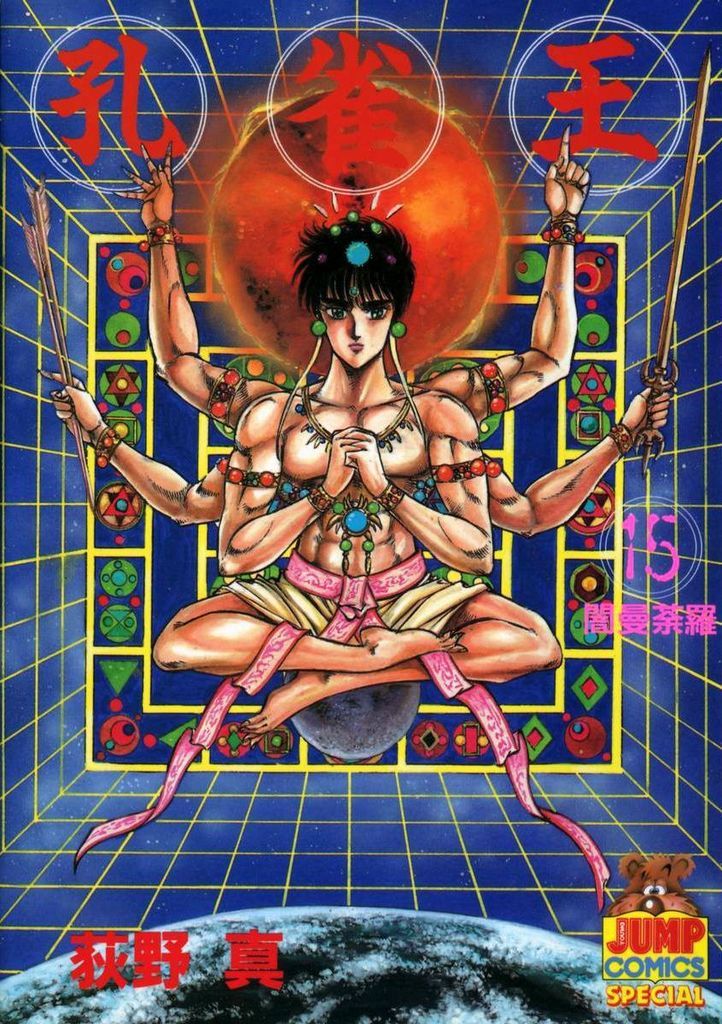
The Peacock King follows the demon-hunting exploits of Kujaku, a Japanese Buddhist monk of the Koya Hijiri sect who travels the country, utilizing his powerful martial arts, Kikou, and knowledge of the occult and exorcisms to vanquish and banish demons and evil spirits from the living world back to Hell on behalf of the mysterious Ura-Kouya organization.
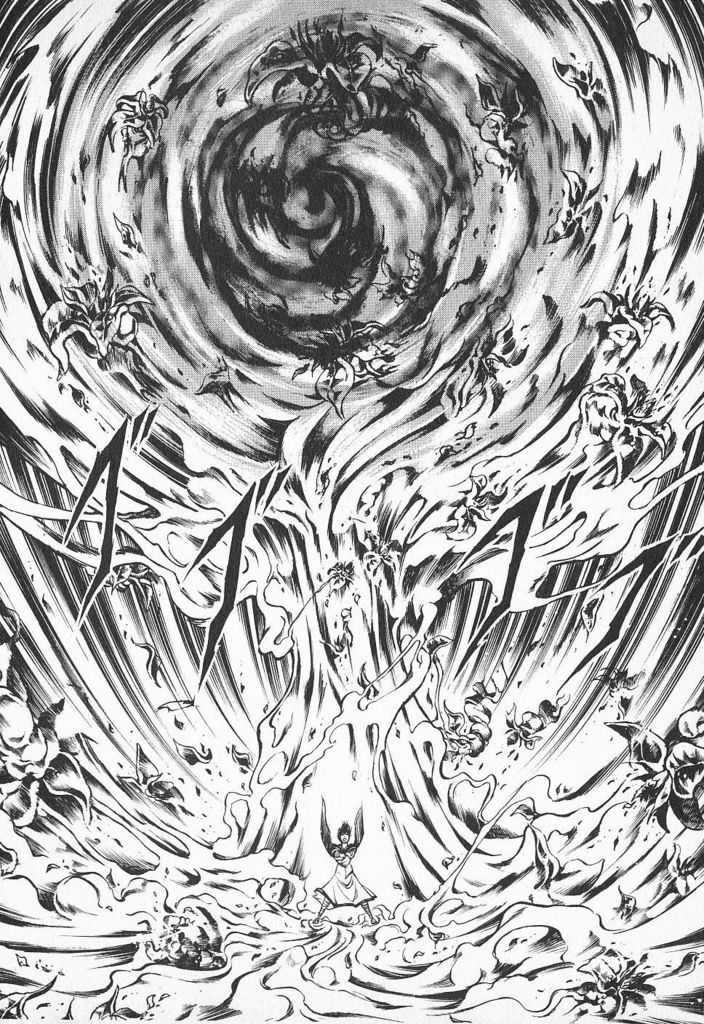
While the early manga storylines were episodic, self-contained mini-arcs about various individual demon-slaying encounters of Kujaku's, the manga would quickly move to more serialized, long-form story arcs centering on Kujaku's battles against the Rikudoshu and the Teachers of the Eight Leaves, a secret cult whose goal is the revival of the Mahamayuri (the titular Peacock King and a powerful spiritual entity in Buddhist lore) in order to instigate a celestial battle between several Buddhist gods and allow the birth of a wicked, dark Buddha.
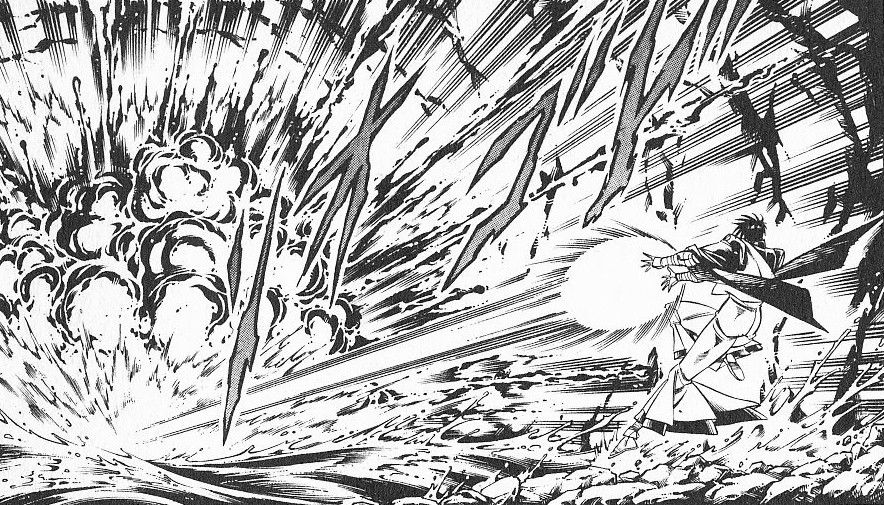
While the series obviously focuses heavily on Buddhist lore at its core (as most Wuxia is want to do) it is also notable for incorporating elements of numerous other world religions into its occult storylines, including Islam and Christianity (in one particularly memorable bit, the Teachers of the Eight Leaves need to obtain the skull of Jesus Christ in order to fill it with the blood of the Mahamayuri as part of their ritual to bring about its rebirth).

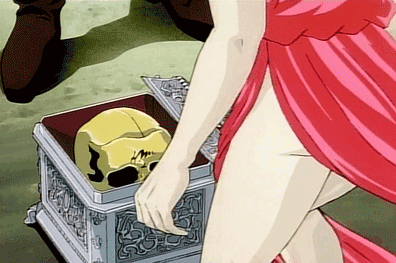
Being written and published throughout the latter half of the 80s and early 90s, The Peacock King is a horror/occult-Wuxia story told from a distinctly Japanese point of view and that focuses on a Monk archetype (rather than some sort of Youxia-like character) who is fighting on behalf of his temple and his masters rather than for his own purely self-invested ideals, and is set in then-modern day 1980s Japan rather than the ancient past. Thus, Kujaku himself is very much a modern day young man with numerous modern interests beyond just his training and his duties to his temple: he shows interest in a wide range of extremely non-Monk-like pastimes, including video games, movies and pop culture, and of course since this is Japan, porn.
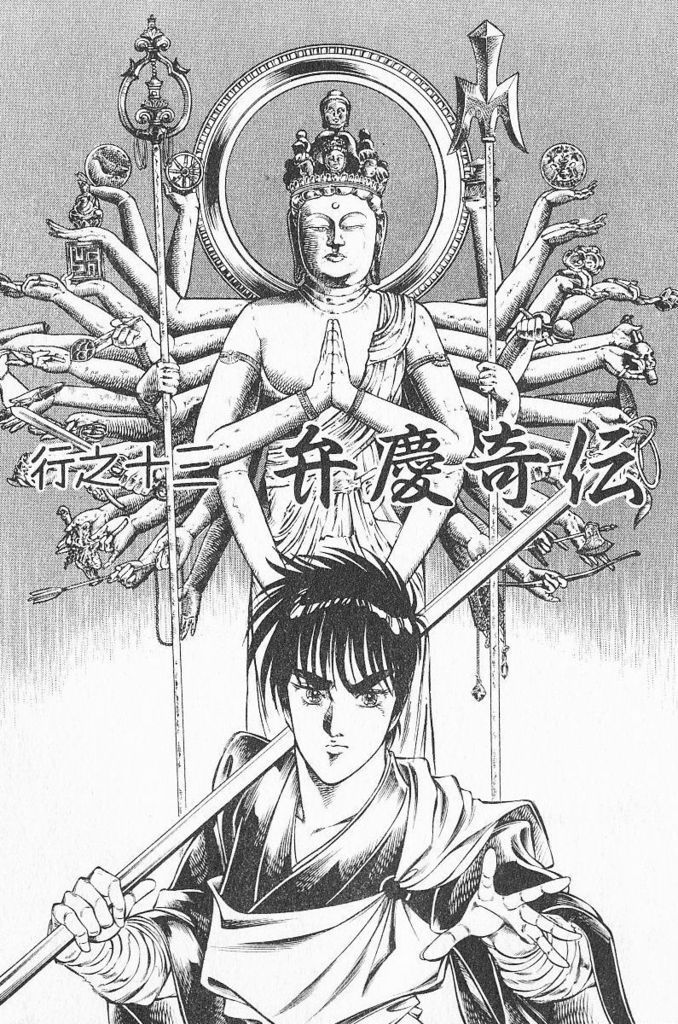
A definite product of late 1980s Wuxia genre-merging what with its modern setting, heightened emphasis on hard-edged horror (distinctly Japanese occult horror at that), and focus given to foreign religious lore, The Peacock King was a major, fairly visible hit in its time, and spawned a fairly long OVA series (much of it directed by none other than anime legend Rintaro)...
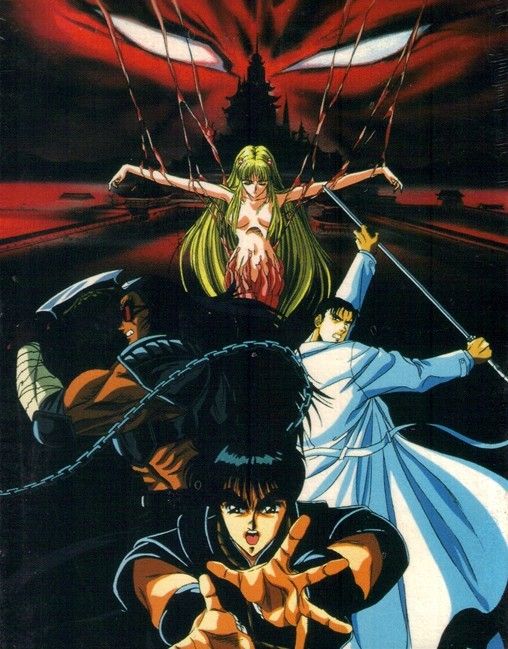

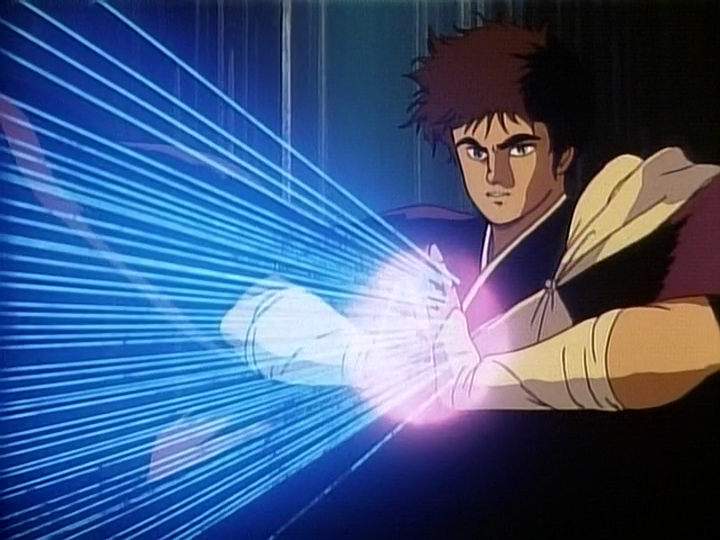
...as well as several 8 and 16 bit Sega and Nintendo video games...
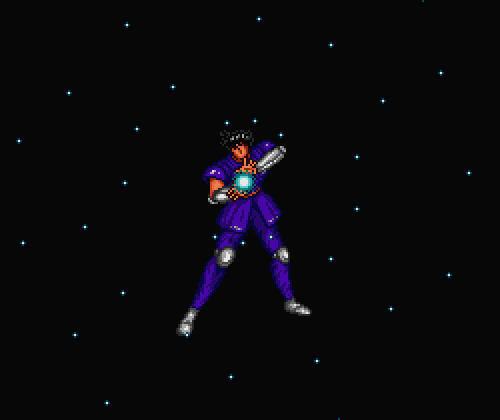
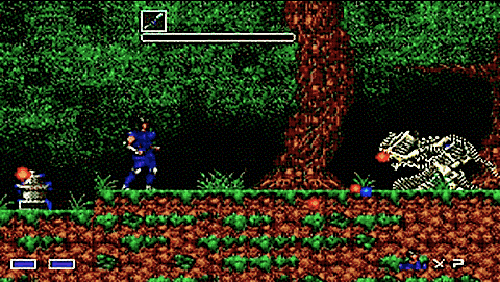
...and even a pair of live action Hong Kong-produced film adaptations (done by none other than Golden Harvest), further demonstrating the heavy level of back and forth cultural cross pollination happening with Wuxia between Hong Kong and other Asian territories.
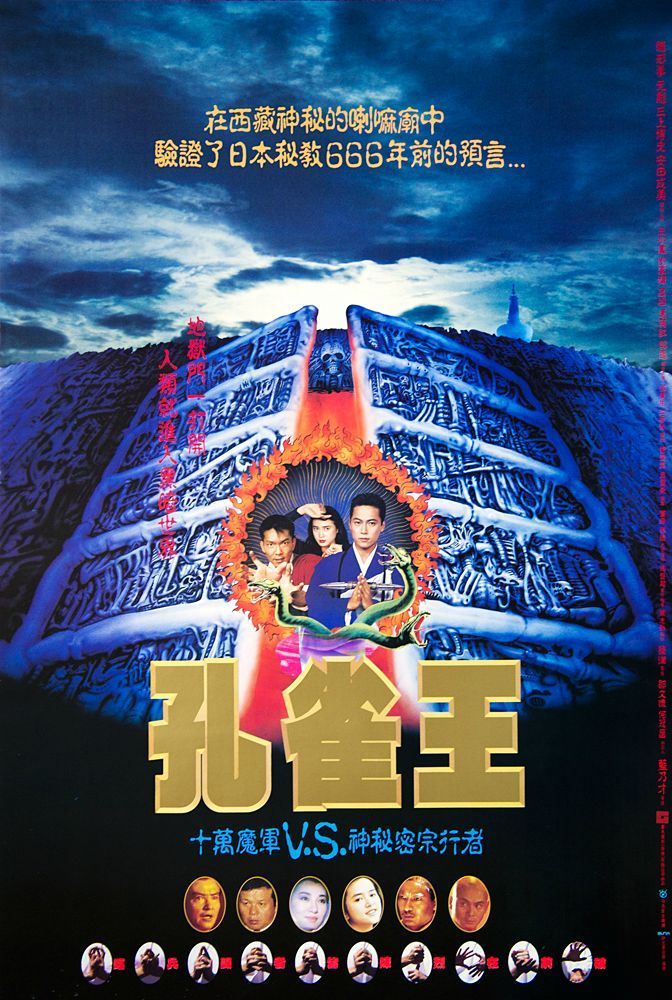
Both films star Yuen Biao as an original Tibetan monk character made specifically for the films who takes the lead role over from Kujaku in the first film. Kujaku is still present (albeit played by different Japanese actors in each of the two movies) as a secondary protagonist in the first movie while taking far more of the spotlight for himself away from Biao's original character in the second film.
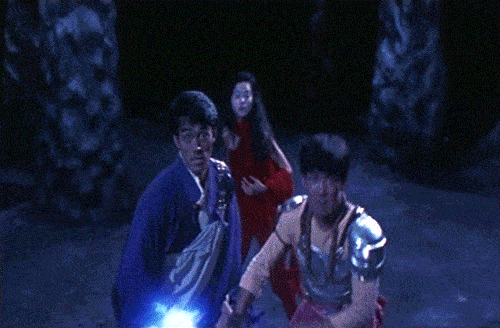
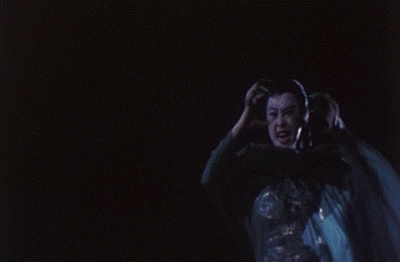
Both live action films are absolutely, unmistakably products of the late 80s and early 90s Hong Kong New Wave Wuxia landscape, with the first in particular still fondly regarded by fans from that era as a really fun, high energy bit of era-appropriate batshit craziness.
As I briefly mentioned earlier, it wasn't just new modern flourishes being added to what were at their core Wuxia stories during this absolutely fucking weird time period for the genre: Wuxia elements were also being grafted onto other genres that didn't even remotely start out as Wuxia tales to begin with.
There's few better example of this than the once-massive, now-all but forgotten seinen bosozoku manga Osu!! Karate Bu.
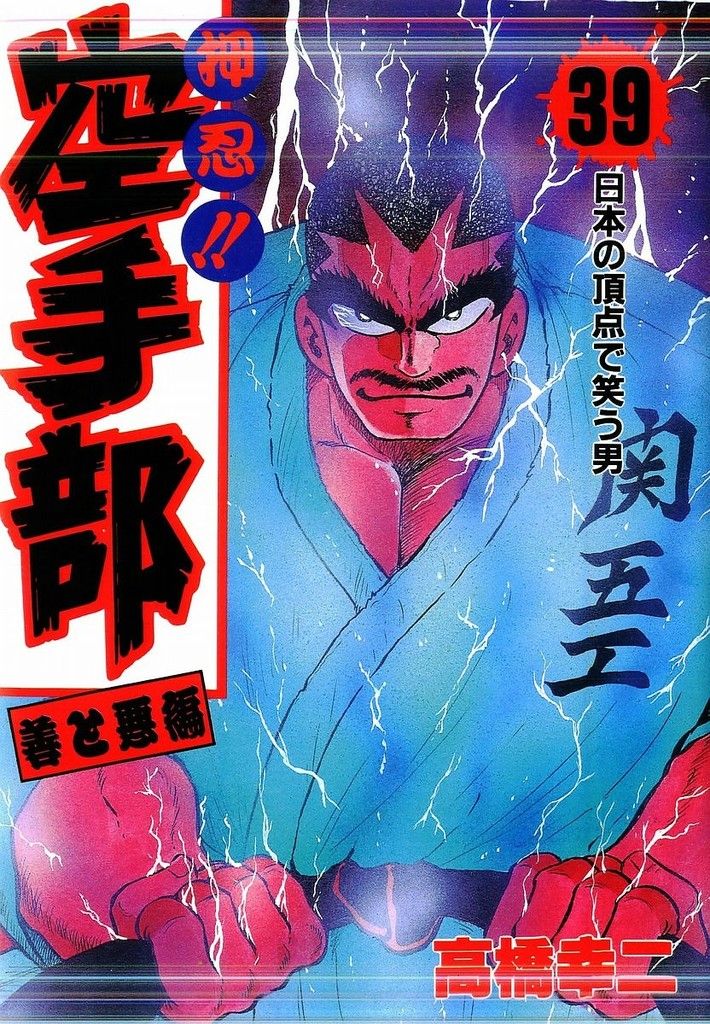
Serialized in one of my favored Seinen publications of choice growing up Young Jump (home to far too many of my favorite dumbfuck, hyper violent and testosterone-laden men's manga series, this one included) Osu!! Karate Bu, much like a certain other franchise that this site's sort of devoted to and that'll be getting its very own dedicated section in this mess of a mega-post soon, was a smash hit, 40+ volume supernatural martial arts manga franchise that ran throughout the latter half of the 80s/early half of the 90s, albeit with some extremely humble and goofily comedic beginnings.
The series' first 5 or 6 volumes are largely dumb, episodic little comedy vignettes centering on Matsushita Tadashii, a scrawny, hopelessly wimpy new student at Osaka's Kangoku High School. Kangoku is home to the toughest, nastiest, most hardassed Bosozoku thugs in all of Osaka.
So let's pause right here for the potentially lost and confused among you: what the fuck is a Bosozoku? Well...
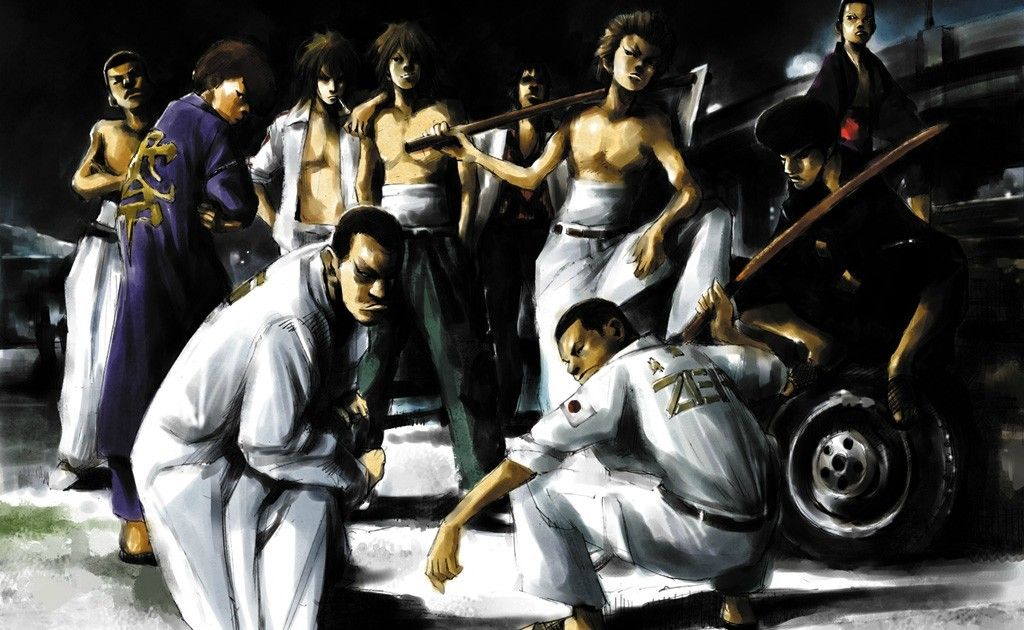
(The decline of Eastern civilization.)
Bosozoku (alternatively known as Yankii) are essentially Japanese street gangs, largely made up of teenaged delinquent members. They ride (extremely loud) motorcycles, get into back alley brawls, illegally gamble, vandalize public and private property, get shitfaced drunk, crudely chase girls, and squabble with one another over turf. Basically the usual gang-related DFF: drinking, fighting, and fucking. Oftentimes, at least decades ago, many "troubled" Japanese kids who came of age in bosozoku gangs would grow up to be assimilated into the Yakuza as expendable low-end thugs and enforcers (with the higher up bosses and mid-level enforcers generally not holding these sorts of reckless punks in most flattering view).
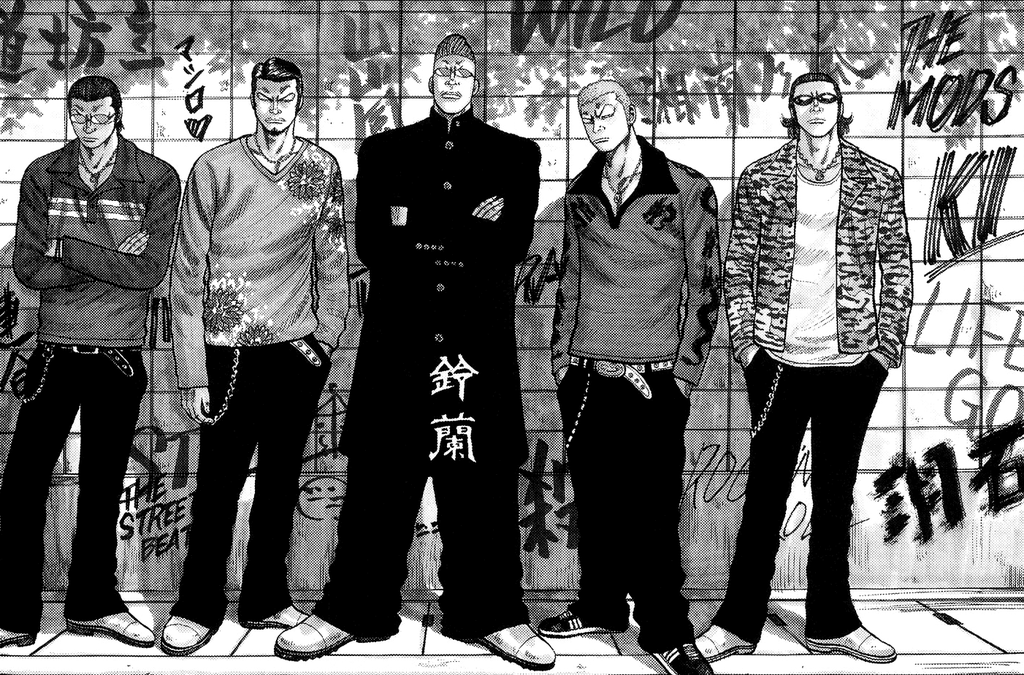
As with any subculture, bosozoku have their own very distinctive quirks and immediate visual cues. Stereotypically, when not in their traditional high school uniforms, they're usually seen wearing WWII Kamikaze pilot garb with the tokko-fuku overcoat open and nationalistic/gang slogans emblazoned down the back in Kanji. They're typically seen wielding anything from shivs, pipes, baseball bats, bike chains, and even Kendo Shinai or Bokuto (wooden training swords) as makeshift weapons. The common stereotype also has them sporting either greasy, slicked back hair, or incredibly silly, over the top 1950s rockabilly pompadours.
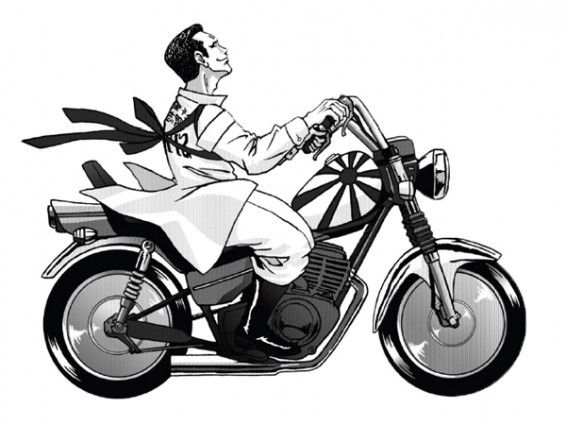
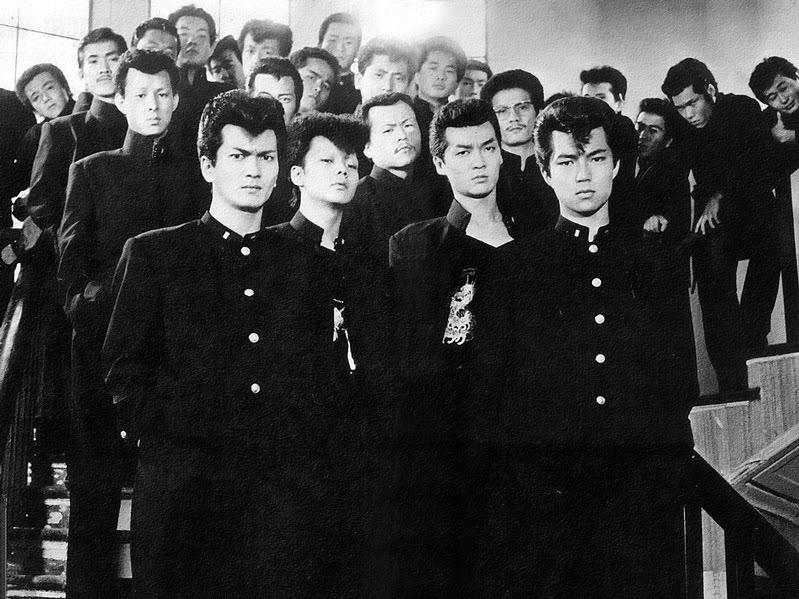
Hardly much of a cultural presence anymore in real life Japan for the better part of the last 15-ish years now, bosozoku/yankii were considered a bit of a scandalous “oh what has become of our children?” moral panic amongst Japanese adults during much of the 1970s through the 1990s, the decades in which their numbers were at their highest and their petty criminal antics at their most wanton.
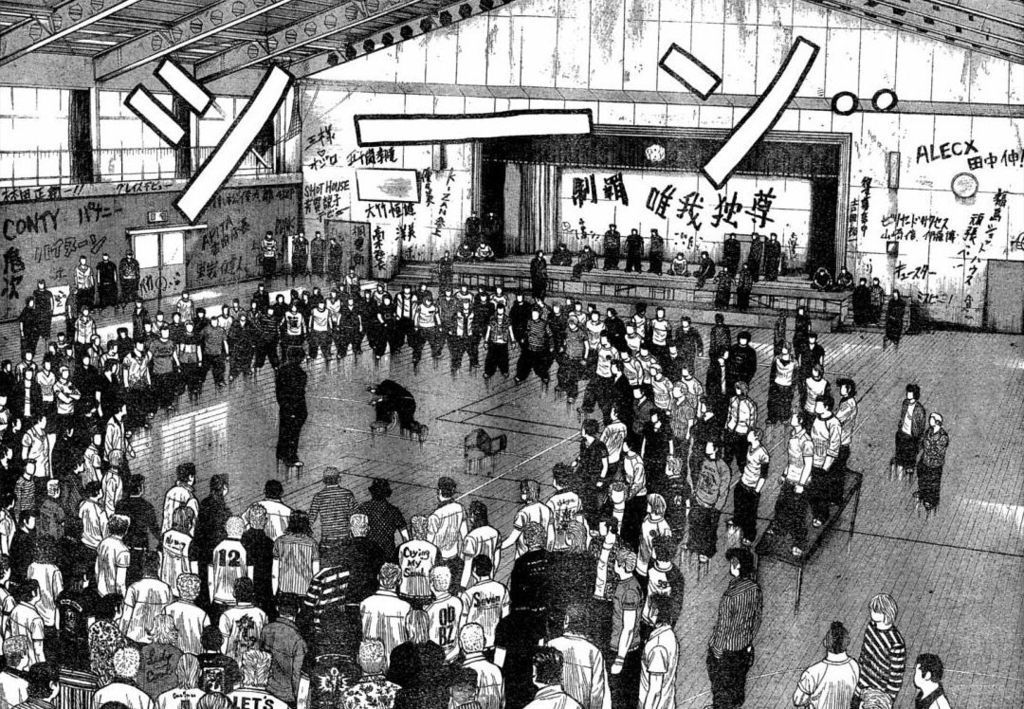
Naturally of course, they became a very common presence in Japanese pop culture, including movies, manga, video games, and anime. In fact, for a great deal of time in the 80s and 90s, Bosozoku became so prevalent in anime and manga that they even had their very own entire damned genre of works all to themselves.
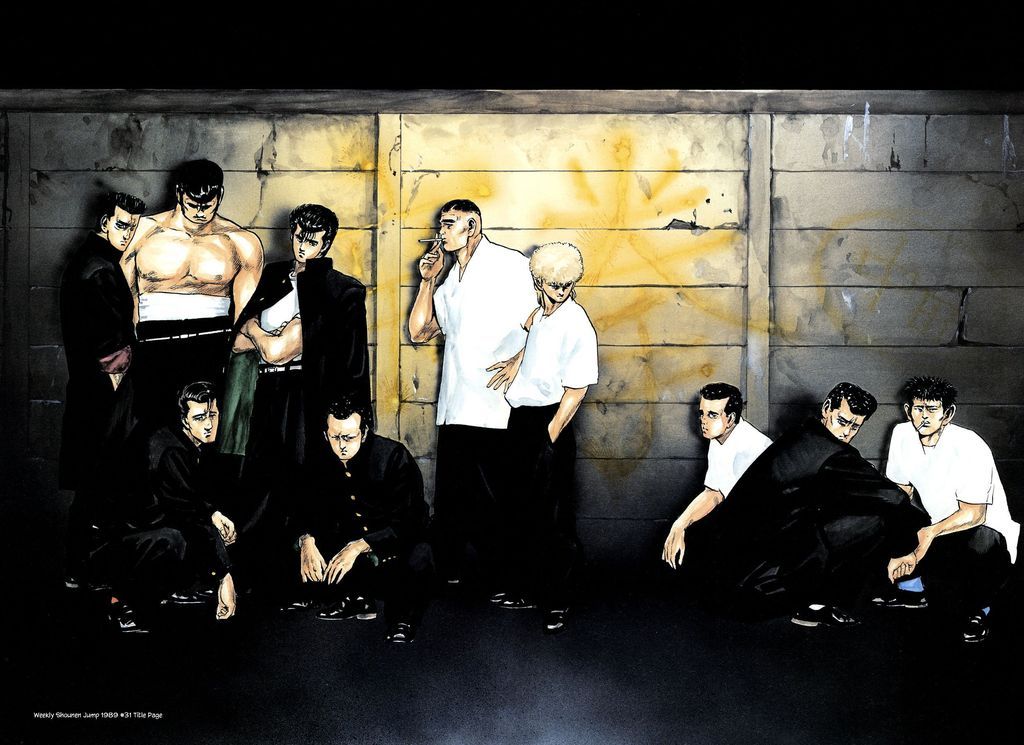
Bosozoku/delinquents as a manga & anime genre typically focuses on brutal street fighting, teenaged knuckleheadedness, brutal street fighting, epic turf wars between gangs, melodramatic angsting about “masculine pride”, brutal street fighting, sex, booze, youth crime, brutal street fighting, trouble with the cops, an oft-repeated theme of “which road will Teenage Thug X ultimately choose for his future: a life of crime or straightening out into a good student?”, and of course brutal street fighting. Again: drinking, fighting, and fucking.
The sheer number of bosozoku-centric manga, anime, and even video games produced during the 80s and 90s is nothing short of staggering.
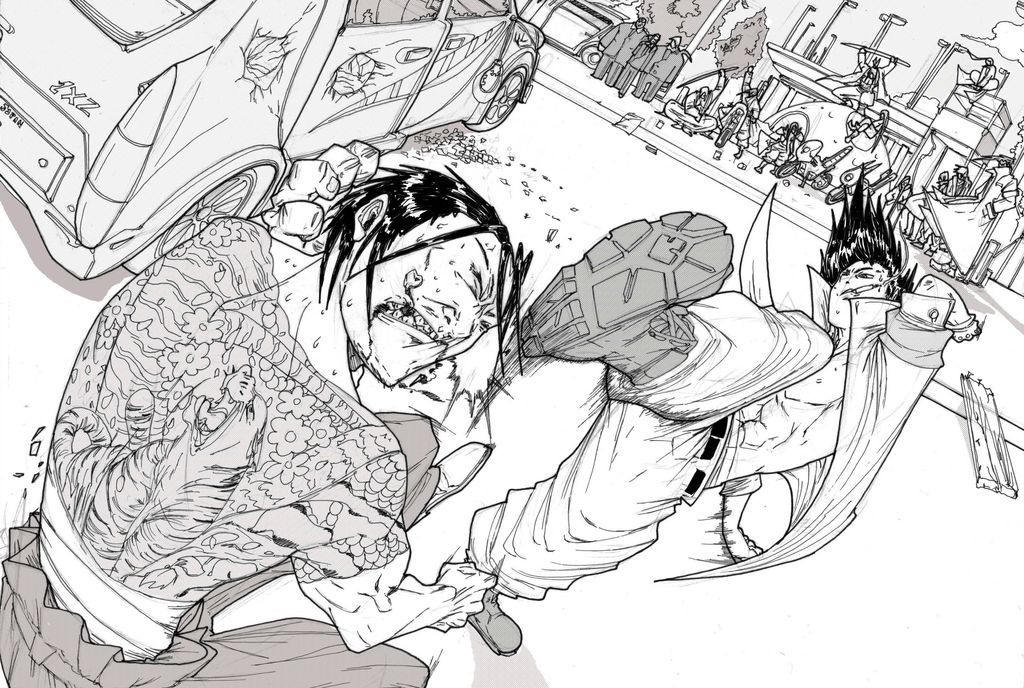
I... was a bit of a fan of this stuff during much of that time as a kid. And by “a bit of a fan”, I mean I had somewhat of a magnetic fixation on the whole phenomenon, and bosozoku/delinquent series were a pretty massive, central part of my anime/manga diet growing up (Rokudenashi Blues, Angel Densetsu, and Crows ftw).
Osu!! Karate Bu of course played into that: before any even remote signs of Wuxia ever showed up, it started out as little more than a goofy, silly little comedic take on Japanese bosozoku thuggery, not a whole great deal far removed from something like Be-Bop High School, but a bit more raunchier and filled with a helluva lot more Osakan belligerence.
So... all THAT said... early on OKB focuses on nerdy wimp Matsushita Tadashi as he enrolls in a dumpy, low income high school in a dumpy, low income prefecture that is essentially Bosozoku Grand Central. He's hopelessly out of his depth and acts essentially as a walking punching bag for brutal Osakan gangbangers to take their frustrations out on. Through a series of mishaps, he unwittingly befriends Takagi Yoshiyuki, the King Hardass of all the thugs in Kangoku High and the most badass teenage brawler in Osaka.
Takagi is the Captain of Kangoku High School's Karate Club (hence the title of the manga), where he helps teach all the hardest thugs in the school how to be even harder through rigorous Segata Sanshiro-like Karate training and exercises.
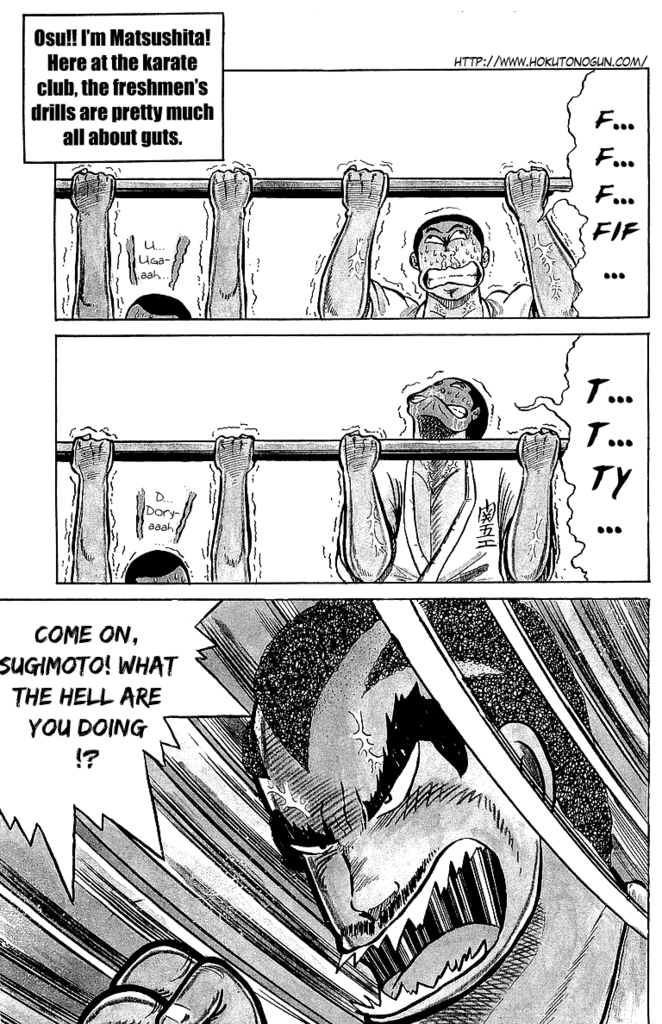
Matsushita joins up in an attempt to man his pansy-ass the hell up and learn how to fight properly so as not to get his skull caved in on a daily basis. Takagi takes a shine to the kid (largely out of pity) and takes him personally under his wing as a sort of pet “makeover” project.
This premise essentially makes up the first few volumes worth of non-Wuxia-ified, dopey bosozoku comedy hijinks.
I didn't get into OKB during its early years: hell I wasn't even into anime & manga at all just yet (it began serialization in 1985, and I wouldn't see Akira and be properly inducted into the Otaku fold until late '89). I did however do my fair share of backtracking through its early stuff after I did start following it (which would've been about 1992/1993-ish) and the early stuff is... well...
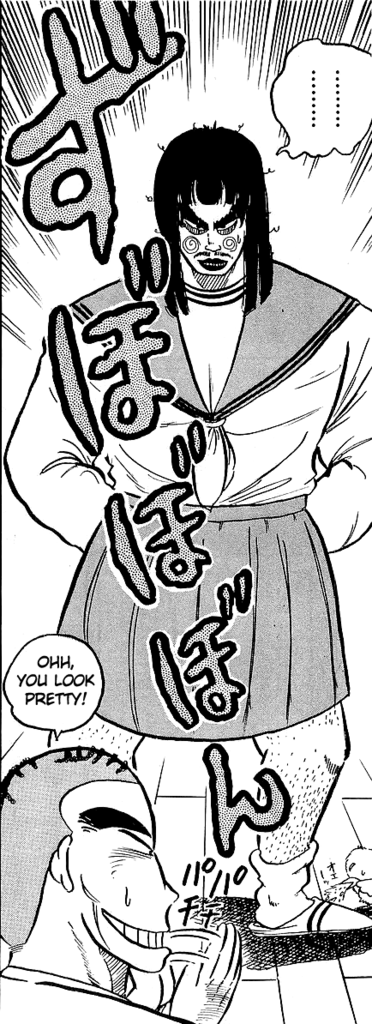
Yeah. The art is REALLY amateurish at the start (though it considerably improves by insanely vast quantum leaps and bounds over the course of its run, being all but totally unrecognizable from its first volumes by its end) and the low brow humor is Farrelly Brothers level at best.
By the tail-end of the 80s however it would gradually begin to reinvent itself dramatically.

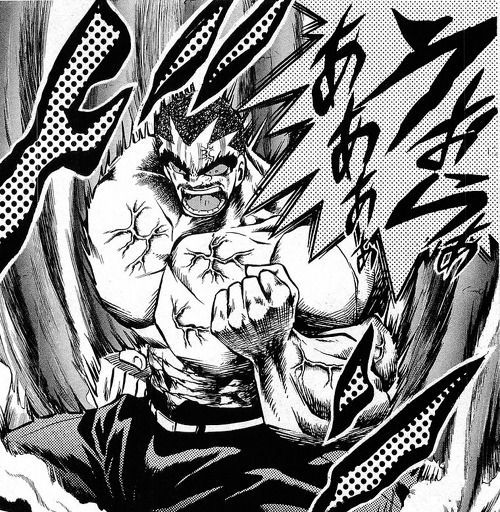
(On the left: Takagi in volume 1, 1985. One the right: Tagaki in volume 30, 1993.)
Matsushita takes a tremendous backseat as an ancillary character while Takagi moves up to the front seat as the central protagonist that the whole rest of the series revolves around. The level of silly comedy is toned down considerably (though hardly ever fully goes away naturally) and the drama and amount of fighting and hardcore violence skyrockets.
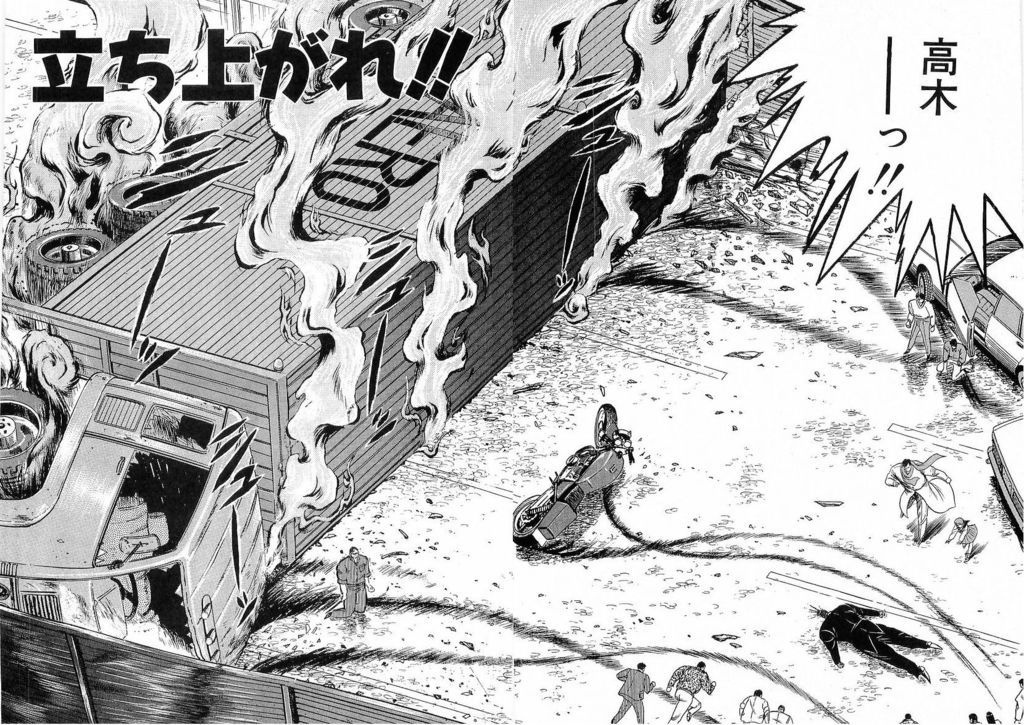
Its revealed that Takagi isn't merely just the baddest dude in his high school: Takagi is the 3rd Osaka Damashii (Soul of Osaka) a title bestowed to a gang leader with the balls, charisma, and toughness to act as overlord of all the gangs and gang leaders throughout all of Osaka (his trademark star-shaped buzzcut is the signature visual cue of the Osaka Damashii, and besides Takagi only the two previous Souls Morigami Shingo and Jinrai Isao are ever seen sporting it).
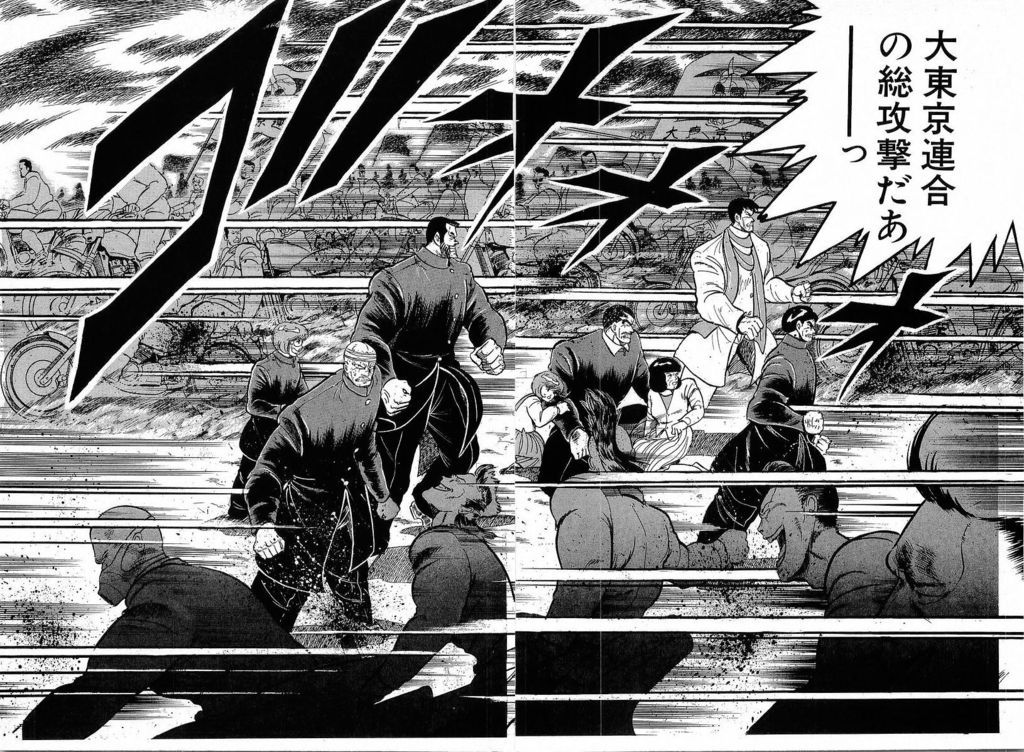
This plot device is used to transform OKB from a silly little whimsical piffle of Bosozoku meatheads doing silly meathead shit into a sprawling epic of gigantic armies of street gangs and criminal factions engaged in massive all out open warfare in the streets.
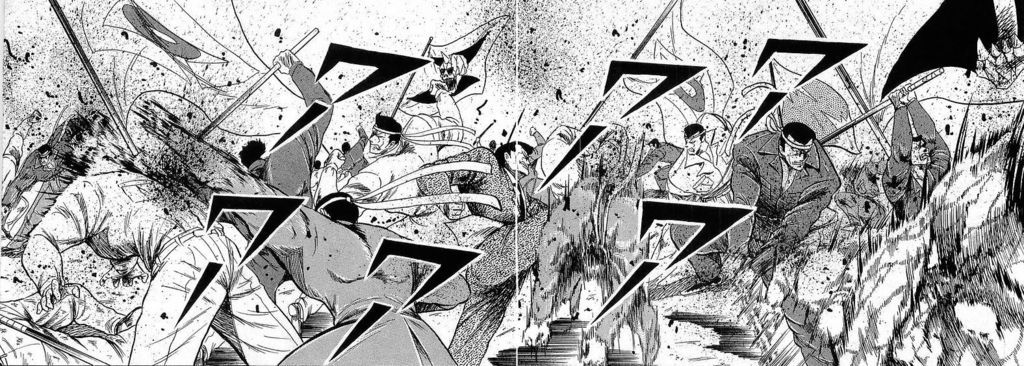
The amount of soap opera twists also increases a hundredfold: massive meetings and conferences between gang leaders are held, high level backstabbings and convoluted power plays to usurp control of various gangs are almost routine, and the massive scale broad daylight gang wars become so grandiose and destructive that Japanese riot control police become an increasingly common sight.
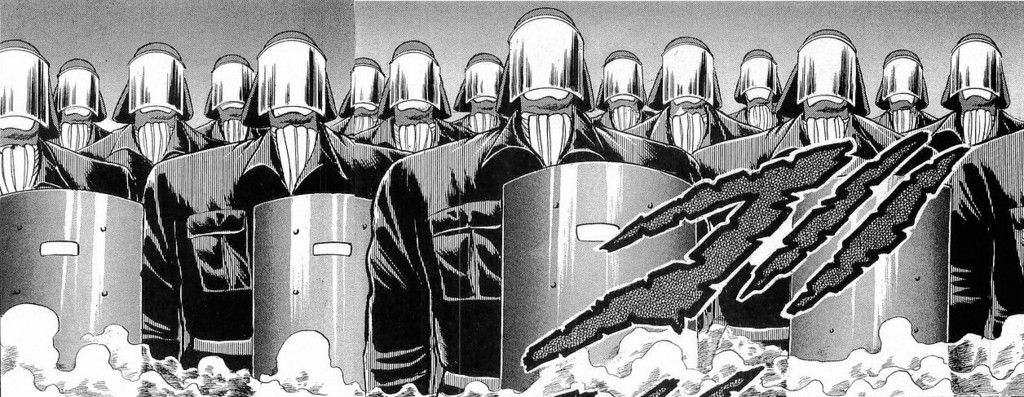
In that respect, it almost becomes sort of the Japanese/Bosozoku manga equivalent of The Warriors in its heightened melodramatic absurdity.
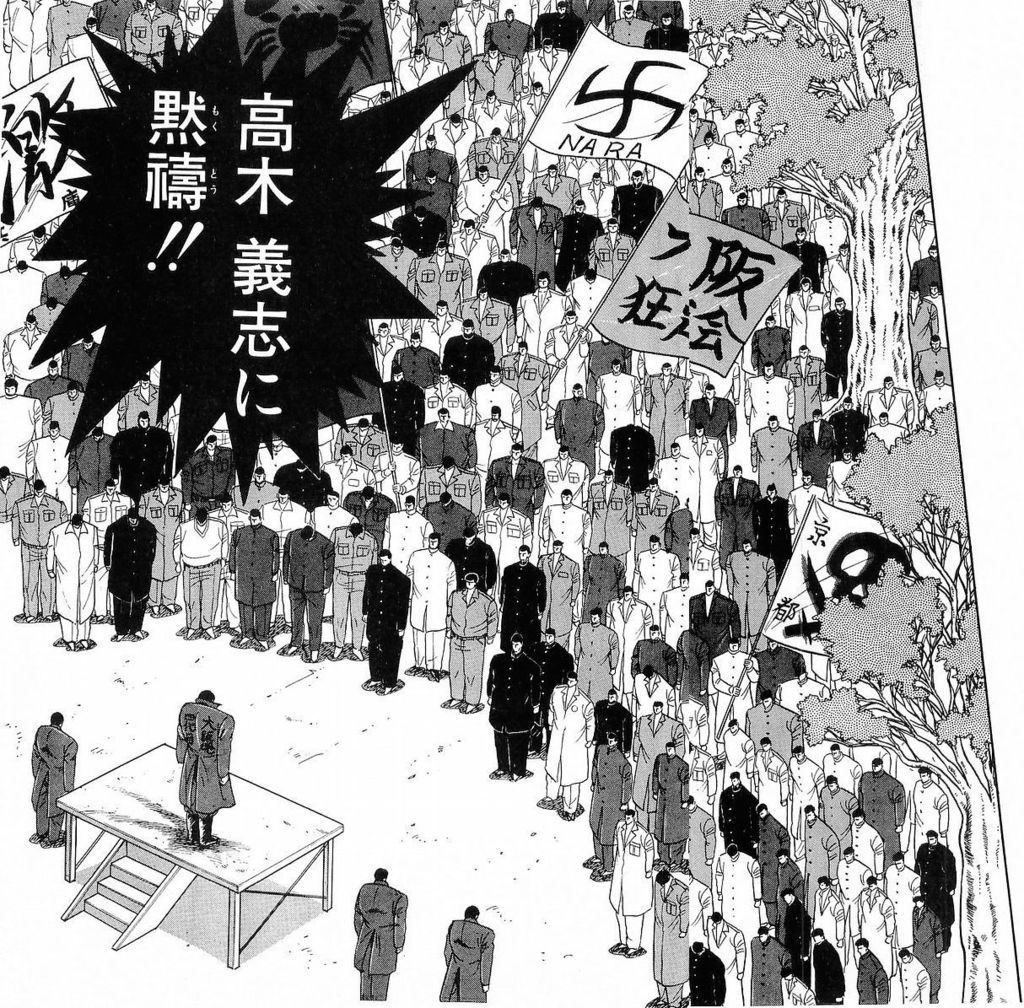
(“Caaaaaaaaan yoooooooouuuuuu dig it?!)
Oh, and also Takagi and numerous other characters learn Kikou and mystical Kung Fu, and the series' focus increasingly centers around Takagi's growing skills, more ludicrously extreme training methods, and seemingly limitless power and strength as a fighter in various supernatural martial arts styles.
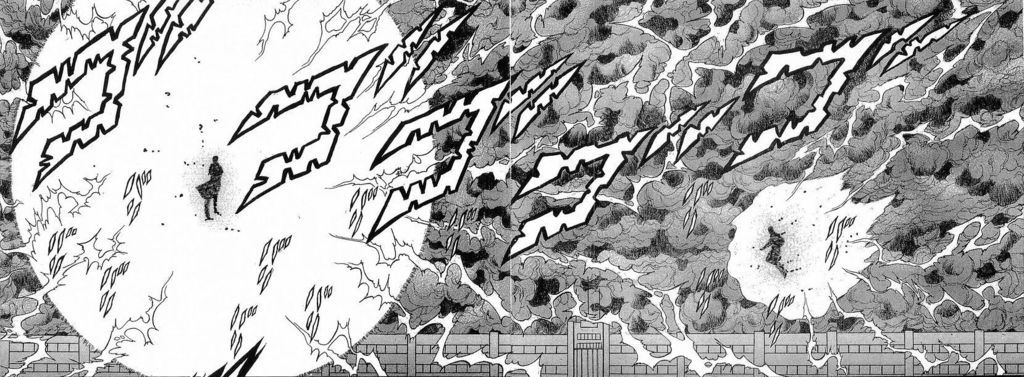


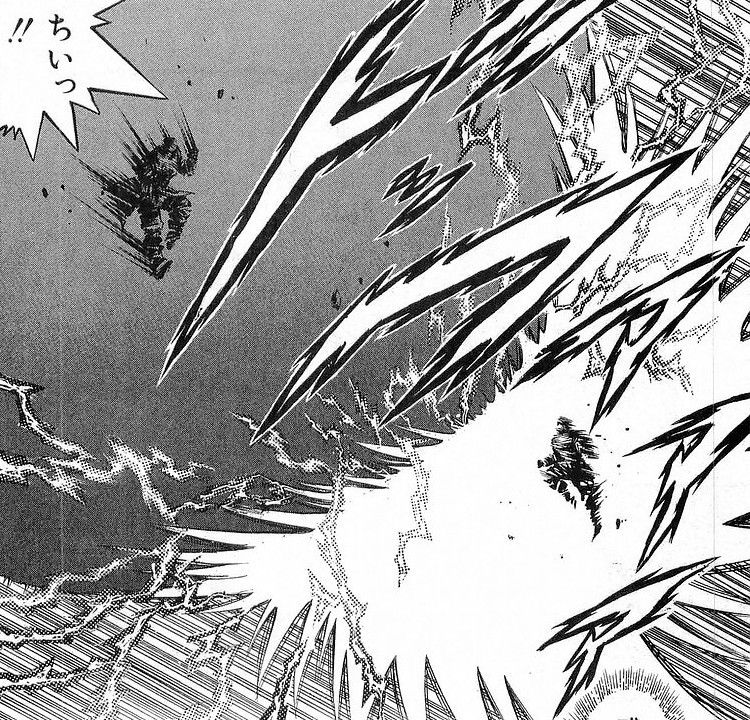
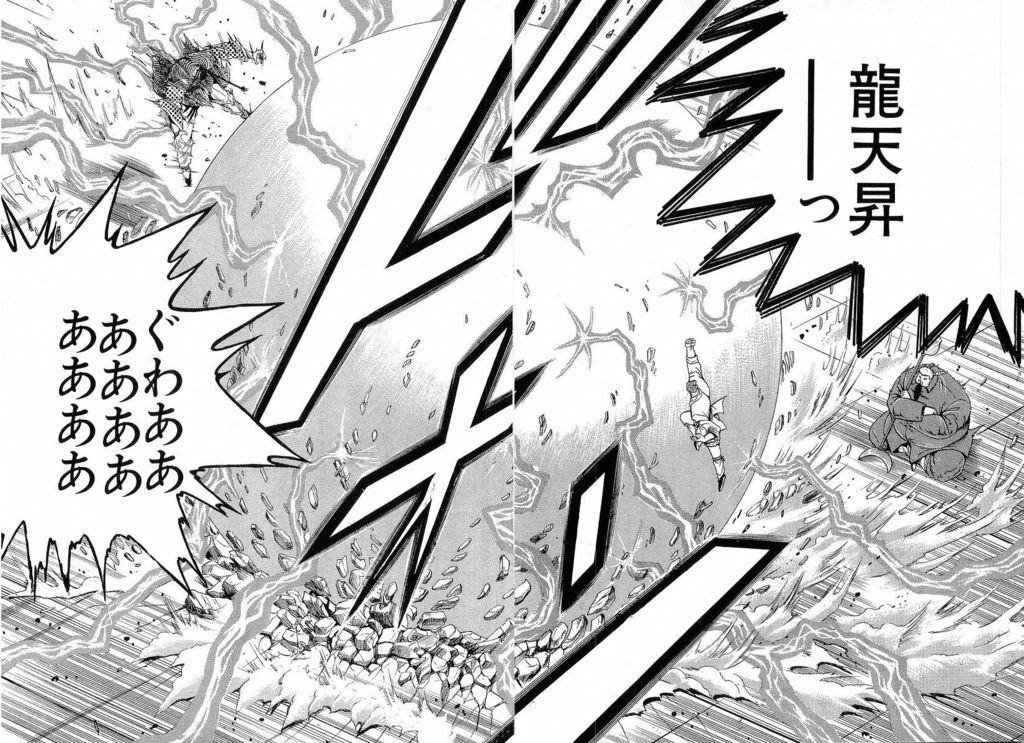

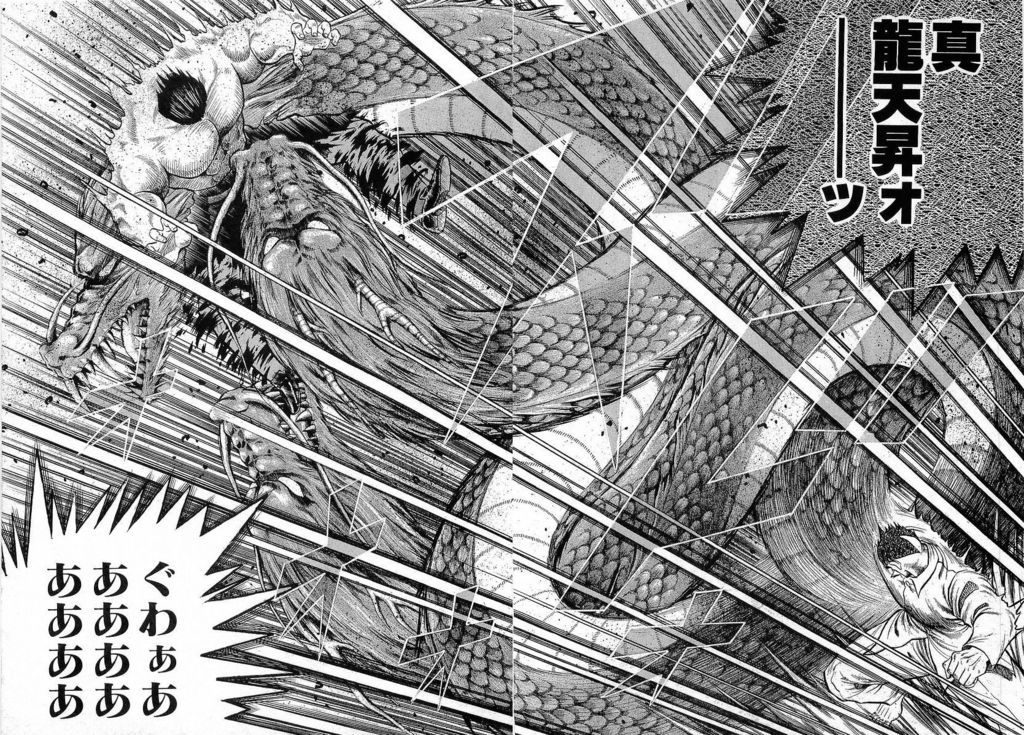
(They also uh... tend to go a tad bit over the top, like a certain other series we all know.)
Numerous outright Sennin/Xian and Monk characters enter the mix and become important characters as well...
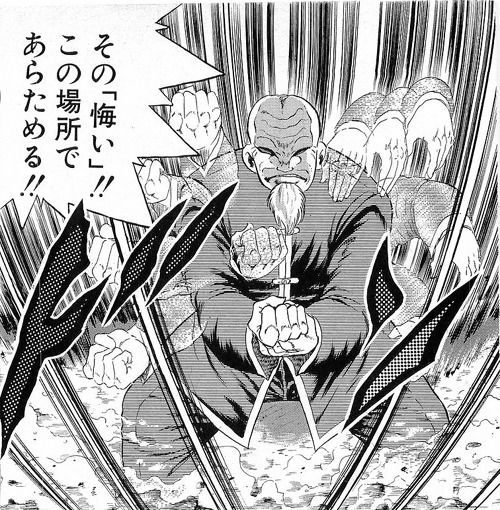

...and various Yakuza bosses and crime leaders almost begin to suspiciously resemble ancient Chinese kings, emperors, and despots controlling entire small nations' worth of thugs.

The amount of opponents who continually challenge Takagi either for or otherwise in some way due to his title of Osaka Damashii makes the title seem almost more like a martial arts status symbol (similar to Kenshiro's role as successor of the Hokuto Shinken style in HnK), and the various Bosozoku gangs start to have their own signature fighting styles and superpowerful Ki techniques associated with them almost as if the gangs were more like martial arts schools with the punks and thugs within them behaving more and more steadily like various Xia archetypes (down to the usual "masculine pride" motif of most Bosozoku stories becoming gradually more akin to Xia-like honor principals).
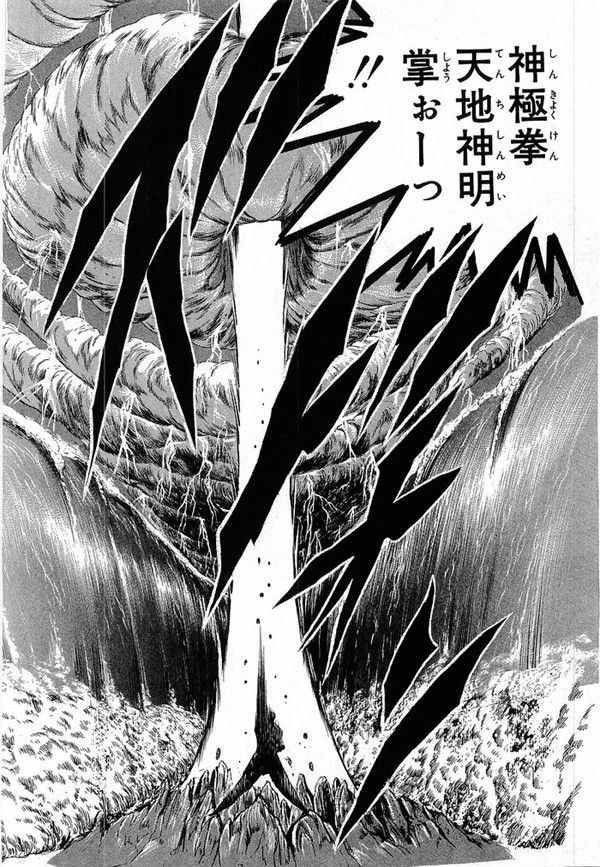

And even further towards the end of the series, more elements of ancient Chinese and Japanese mysticism enters the fore and the cultural motifs of numerous characters and fighters gradually skew further and further towards classically Chinese in general.
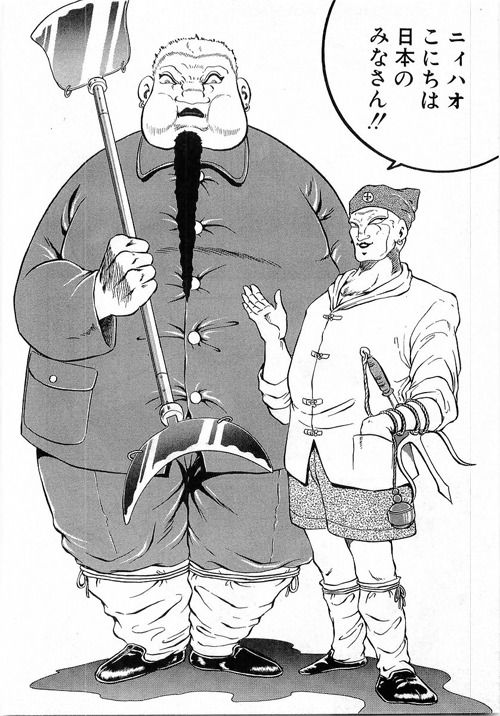

Hell, there's even a full blown “martial arts tournament” story arc where one of Takagi's childhood friends-turned gang leader challenges him for his Osaka Damashii title which spurs a massive power grab for the title amongst numerous gang leaders, causing them to break up into several “brackets” who all battle it out for the right to challenge Takagi for the title, using an old empty waterfront warehouse as the tournament grounds.
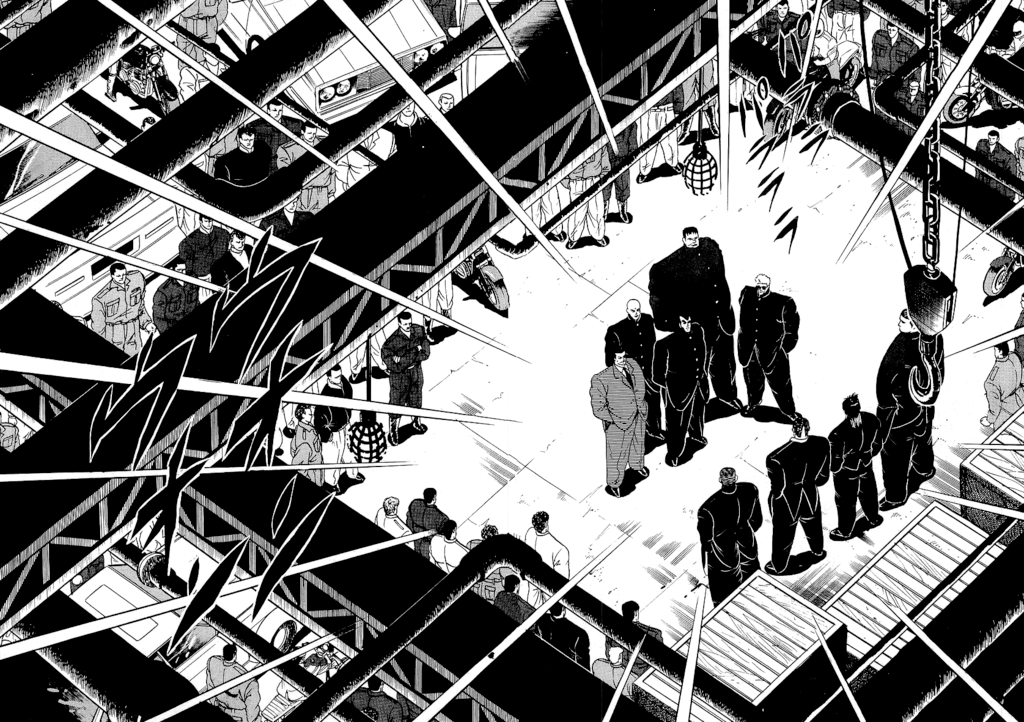
Uh huh. Even a lightweight little lunkheaded gangbanger comedy couldn't resist the pull of batshit genre-bending Wuxia during the twilight of the 80s, and decided to change gears partway through and take things down that particular road, to its hugely popularity increasing benefit.
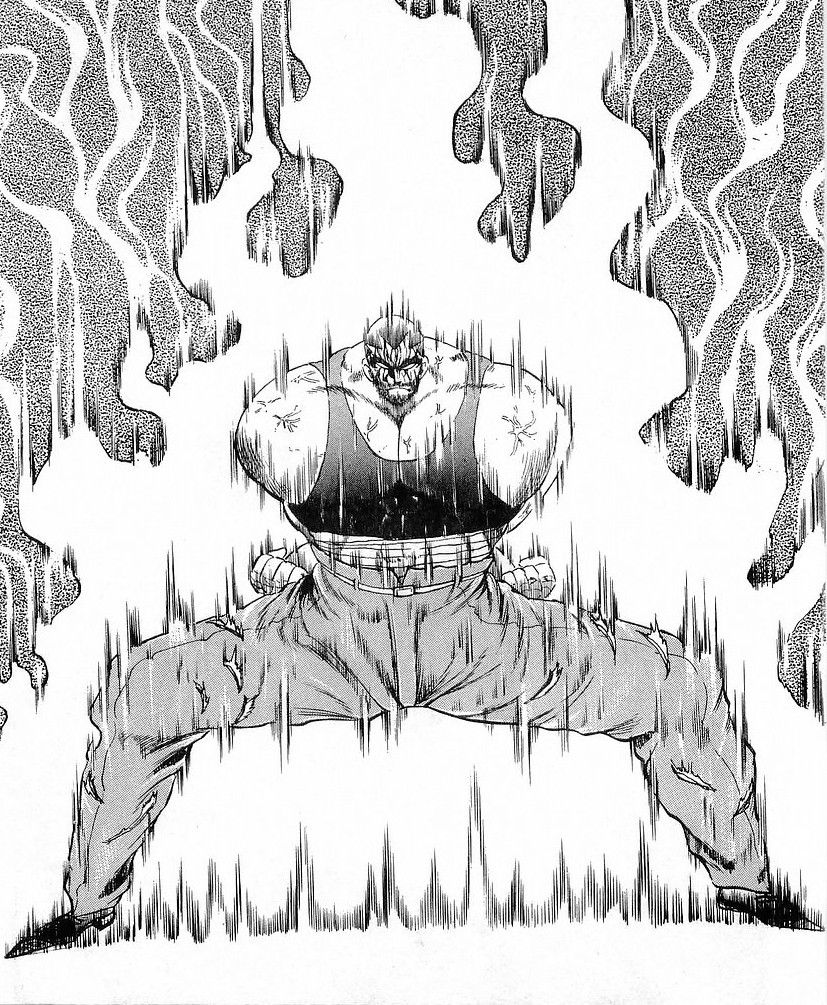
Having long been a completely forgotten and buried relic of pre-Millennial anime & manga fandom, Osu!! Karate Bu was nonetheless one of the more notable long-running seinen titles of the late 80s and early 90s, running largely concurrently with Dragon Ball during both their respective original runs (among countless other weird details between the two series that eerily mirror one another), and is another prime example of how far reaching and all encompassing the iron grip of post-sanity Wuxia was becoming across various Asian media.
Ah but of course by the early 90s, neither The Peacock King would hardly be the only blockbuster Wuxia manga/anime franchise to take heavy cues from the HK New Wave and transport the genre and its more horror/occult-based elements out of ancient Jianghu to modern day Japan, nor would Osu!! Karate Bu be the only manga series to blend Wuxia with juvenile Yankii/delinquent shenanigans.
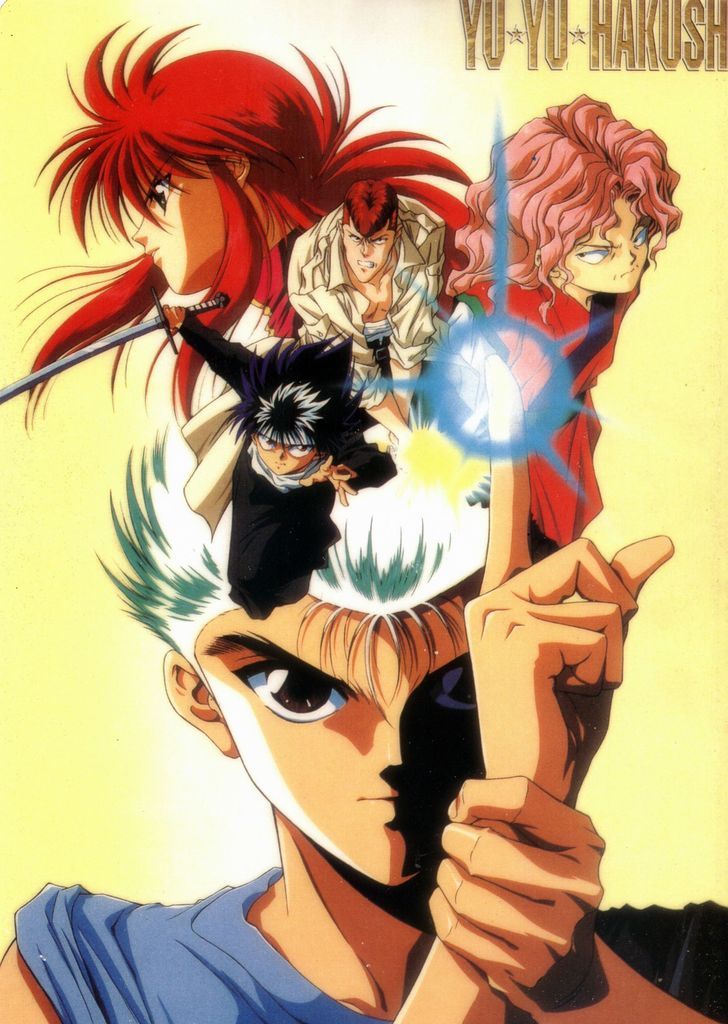
Y'all MIGHT just possibly be a shade bit familiar with this one.


Ma Wing-shin is easily the single most prolific and overpoweringly influential Manhua artist of the last 30 years. Taking his influence from Western cartoons and comics as well as Japanese manga, particularly the then-still flourishing Gekiga movement (Gekiga meaning roughly “dramatic pictures” and being a once-thriving artistic movement in Japanese manga of strikingly realistic and hyper detailed character designs and artwork), Ma Wing-shing's art style would singlehandedly transform the entire Manhua industry, particularly within Wuxia.


(On the left: traditional, mainstream manga art, as exemplified by Rumiko Takahashi's Ranma ½, which is more “cartoony”, less detailed and more impressionistic, emphasizing a heightened sense of cuteness and innocence. On the right: an example of Gekiga manga art, a piece of promotional art for Lady Snowblood by Ryoichi Ikegami. Gekiga, in stark contrast to traditional manga art, is much more detailed, meticulously shaded, and lacks the signature "overly large eyes", emphasizing realism and naturalism while completely eschewing any sense of “Kawaii” that is so closely associated with mainstream manga and anime. Originally pioneered in the late 60s/early 70s by more “counter-cultural” manga artists, Gekiga was quickly assimilated into mainstream Japanese pop culture and for a period of time in the 70s, 80s, and earlier half of the 90s, Gekiga was a great deal more prevalent and visible in mainstream manga and anime fandom.)
Using incredibly handsome, lushly detailed and colored art, as well as introducing the (soon to become standardized across almost all Manhua) practice of using fully painted art for major splash panels, Chinese Hero would complete what Little Rascals started (and continue to further drive home what the Hong Kong New Wave was doing within film around this time) and transport Wuxia further into more modernized sensibilities. The manhua tells the story of Hua Ying-Xiong (alternately Wah Ying-Hung, whose name literally translates to “Chinese Hero”), a skilled 20th Century Xia and master of supernatural martial arts, who travels to America during 1920s Prohibition to hunt down and seek revenge on the Chicago mobsters who murdered his family as part of a war against China's opium trade.





(Hua Ying-Xiong duels with his Japanese rival Invincible atop the Statue of Liberty in Chinese Hero's single most iconic and famous fight scene.)
The Manhua mixes a “fish out of water” story - Hua is a standard justice-seeking noble Youxia archetype taken out of China, away from any sort of mythical Jianghu-like setting, and thrown into the middle of American 1920s mob wars and organized street crime, pitting kung fu, high flying ancient swordplay, chi blasts, and archaic martial arts honor against tommy guns, brass knuckles, switchblades, and good old fashioned down and dirty Western street toughness (and racism) - with more standard Wuxia mythmaking and folklore, as another principal storyline involves the dark, cursed powers behind Hua's signature weapon, the Blood Sword.


A deep crimson blade, the Blood Sword has been passed down Hua's family for generations and possesses vast and deeply unstable supernatural powers, taking immense skill to properly wield. The Blood Sword becomes the main icon of the series, eventually being passed on to Hua Ying-Xiong's son, Jian-Xiong (named after the Blood Sword's Chinese name, Chi Jian), whose adventures are chronicled in later story arcs.

(Jian-Xiong, son of the original Chinese Hero, inheritor of the Blood Sword, and protagonist of the later half of the series.)
Chinese Hero is easily, bar none, the single most radically landscape altering manhua of the last generation or two. It not only would change the look of and bring more Japanese and Western influences into Chinese comics, it would also help further cement Wuxia as the dominant genre within manhua, similar to how superheroes have become so inescapable within Western comics. Furthermore it would also help popularize and bring more modern genre-blending into Wuxia manhua, which would loop-feed back into Wuxia films and television as well as many live action adaptations of popular Wuxia manhua would come to be made throughout the 80s, 90s, and beyond.
This influence would even spread back to Chinese Hero's forebear Little Rascals, which after the controversy over its violence died down and after the establishment of the Indecent Publication Law, would RADICALLY re-invent itself.

Changing its title to Oriental Heroes (aka Dragon Tiger Gate, depending on which translation you're going by) and completely reconfiguring its artwork to match up more with Ma Wing-shing's more elegant style, the series would age its principal trio of young street fighters from teenagers to their 20s, and follow their continuing, escalating conflicts into even further fantastical realms of mythical Chinese martial arts fantasy storytelling across decades worth of storylines (being published up to this day still).










Thus, as Wuxia began to modernize and stretch its boundaries to encompass numerous Western and contemporary genre-flourishes across film, so too was it happening within manhua/comics. Both of them side by side, and feeding off of one another to varying degrees.
This continued evolving and transformation of Wuxia in the 1980s invaded what at times felt like literally every square inch of Asian pop culture. As the influence of Japanese Gekiga manga art made its way into Chinese manhua's art style, so too would this new, contemporary form of Wuxia find its way back over to Japan and into manga.

(All together now... ATATATATATATA!!!)
In 1983, from the giant stew of more gritty 70s martial arts films, pulpy grindhouse violence, and the still new and just-emerging form of mixing fanciful Wuxia with modern foreign genres that was the Chinese film and comics landscape, there arose a Legendary Savior of the Century's End... Hokuto no Ken aka Fist of the North Star.
For those of you out there who somehow still know nothing of this monumentally influential manga/anime series, Fist of the North Star centers on Kenshiro, the principal inheritor of full mastery of the Hokuto Shinken martial arts style. Being a style that's primarily focused on internal martial arts techniques, Hokuto Shinken focuses on both the usual supernatural Kikou mastery common to Wuxia as well as precision strikes aimed at special “Tsubo” (pressure) points on the body.


(Hokuto Hyakuretsu Ken!!)
Depending on the point struck, the level of power used to strike it, or the sequential order of points hit, Hokuto Shinken techniques are capable of either healing grievous illness and injury, or causing the body's muscles and nerves to literally tear themselves apart... with graphically grotesque, Grand Guignol results.


(What happens to most typical thugs whose vital points are struck by Kenshiro's fists.)
This effect is taken from the Wuxia concept of “Dianxue” or “Dim Mak”, where Xia of the Wulin community likewise strike with surgical precision at sensitive Chinese acupuncture points both for medicinal healing as well as to cause often utterly horrific damage to their opponent's body in a fight. Once more, as with nearly all other aspects of Ki control, this too stems from the Meridian points on the body: the idea behind pressure points is that they act as crucial junctures through which Ki flows throughout the body. Disrupting the body's flow of Ki through these critical linchpin points can cause either grievous physical harm or relieve tremendous physical stress and burden on the body, thus accelerating the the body's natural healing.


(Particularly skilled martial arts masters of the Wulin world have an intricate knowledge of delicate nerve points on the human body that act as critical pathways for the body's flow of Ki, and are capable of exploiting them in combat: often to crippling or lethal results.)
Fist of the North Star follows Kenshiro on a quest to find and rescue his lost lover Yuria, who was taken from him by his former friend Shin, principal inheritor of the Nanto Seiken martial art style, an externally focused fighting art and the polar opposite counterpart to Hokuto Shinken, which focuses on piercing, ripping, and tearing away at the body piece by piece with one's bare hands or even fingertips, using more brute force than focused precision.


Goaded and driven mad by Jagi, one of Kesnhiro's jealous and corrupt adoptive brothers, Shin gives into his own jealous lust for Yuria and betrays Ken, defeating him in combat in order to steal her from him: in the process he uses his Nanto techniques to disfigure his torso with the series' signature “seven scars” in the shape of the Big Dipper, the constellation which is also the signature symbol of the Hokuto Shinken style.

Barely surviving the encounter, Ken spends most of the series wandering a ruined Earth that has been devastated by nuclear war and has experienced a total societal collapse in his search for Shin and Yuria. Every step of the way, Ken must overcome vicious motorcycle riding marauders who prey upon the weak for food and other basic necessities, as well as a number of tyrannical would-be despots and self-appointed dictator figures attempting to grab power for themselves in this hellish no-man's-land (which includes Shin himself), and a seemingly endless array of rival martial arts masters from rival schools and fighting styles intent on challenging Ken for his ownership of the full secrets of Hokuto Shinken... including two out of his three adoptive brothers, Jagi and Raoh, who see Ken as unworthy of being the inheritor of the style and who also fancy themselves as iron-fisted rulers intent on oppressing the weak with their own fighting skills.
Apart from its beautifully detailed gekiga art style and its hard-edged violence, Fist of the North Star's other noteworthy attribute was its setting an otherwise pretty straightforward Wuxia tale of wandering chivalrous heroes, warring kingdoms, and rival martial arts clans against a Mad Max-inspired post-nuclear apocalypse background instead of ancient Chinese mythical Jianghu. Thus ancient superpowered fighting arts clash amidst roving biker marauders and dune buggy-driving ragged survivors struggling amongst arid wastelands and the decayed remnants of what were once modern cities.


(In keeping with what were at the time still burgeoning trends across Wuxia fiction, Fist of the North Star “modernized” and “experimented” with its otherwise traditional Wuxia narrative by transplanting it from the lush heavenly beauty of Jianghu to the nihilistic Hell on Earth of The Road Warrior.)
Owing as much to similarly hard-edged, envelope pushing “shonen” (haha) manga like Violence Jack (which also explores a similarly nihilistic post-apocalyptic setting, albeit without any of the mystical kung fu) as it does to its Australian, American, and Chinese cinematic (and comic book) genre forebears...


...Fist of the North Star was hardly the first ever martial arts or even Wuxia-inspired manga. But it was certainly among the first ever to incorporate this new style of contemporary genre mixing with Wuxia, along with setting the framework for that formula as a blockbuster recipe for success within the Japanese manga and anime market.
And make no mistake, for all the shoulder-padded, mohawked motorcycle thugs and gorily exploding craniums...

(And hell, its not like cinematic Wuxia was any stranger to gratuitously exploding people's heads even years well before HnK)
...Fist of the North Star is without question unmistakably a Wuxia story to its utmost core.
From its ever-wandering, honor-bound, justice-dispensing Youxia protagonist:

(...duh)
To its bevvy of evil, corrupt, oppressive kingdoms:



And sadistic warlords that go with them:



To of course the various martial arts styles and schools at war with one another:


Which all make up a vast underground martial arts community of superpowerful Wulin:


(DO SURVIVE! Kawaita kokoro ga DO SURVIVE!! Motomete naiteru DO SURVIVE!!! Asu sae miezu ni)
Who are all capable of tapping into incredible, Ki-enhanced kung fu techniques:




Who use them to fight amongst one another for honor, to prove their strength, and to control or fight back against legions of roving, nomadic bandits who prowl the wastes:



Yeah. Simply take away the brutal Mad Max setting, which is basically just window dressing, and put it back in Jianghu and this otherwise could've EASILY been a novel written by Louis Cha or a movie made by Shaw Brothers Studios in 1970.
In many ways, that's precisely the principle that this whole era of Wuxia media across Asia was hinged upon: taking what were still at their deepest most core Wuxia stories and characters, and simply re-arranging the window dressing with more unique, more foreign, and more modern outer layers.
Also by that same token of course, lest we forget in 1984 the year following HnK's debut, another popular manga author, one with a VASTLY more whimsical sensibility and fresh off the massive success of his breakthrough non-sequitur-laden children's comedy Dr. Slump, would jump into the fray with a little Wuxia manga of his own... at first little more than a fluffy, satirical, and heavily Dr. Slump-ified take on the Wuxia cornerstone Journey to the West (again, one of the 4 most singularly defining works in all of Chinese literature with two of the others also being Wuxia) before spiraling out of control into something altogether more weirdly ambitious...

(And cue that OTHER-other theme tune...)
Ah, but we're saving the finer details of that particular thread for its very own section in all of this.
The groundwork for this strange new modernized hybrid form of Wuxia was laid in the 70s, the 80s would begin it properly in earnest. And the 90s? Well the 90s is where things went into a psychotic cocaine-fueled overdrive.
Wuxia in Modern Media Section V: Breaking the Genre and Global Popularity (1989 - 1993)
Even as the 80s were drawing to a close, the modern genre-hybridization of Wuxia could easily be seen to be escalating in its outlandishness. By 1989's The Iceman Cometh, out and out time travel was introduced into the mix.

Often compared to a Wuxia-ified take on the 1979 film Time After Time (where a time hopping H.G. Wells pursues Jack the Ripper across numerous decades) The Iceman Cometh begins in ancient Jianghu where Fong Sau-ching (Yuen Biao once more) a royal warrior of the Ming Dynasty is in pursuit of Feng San (the always fun and gleefully sleazy Yuen Wah), a fellow soldier who has betrayed the kingdom by raping and murdering dozens of women of the royal court, as well as stealing a magical artifact called the Jade Buddha, said to control time and offer its user eternal agelessness.



Fong corners Feng atop a snowy mountain and as the two fighters duel, the powers of the Jade Buddha are mistakenly unlocked and the two are placed in a magical stasis, transporting them to modern day 1980s Kowloon.
Upon awakening and navigating their way through an unfamiliar time, the deranged Feng finds himself immediately drawn to the criminal element, using his formidable martial arts skills to muscle his way up the ranks of a dangerous Triad gang. Fong meanwhile continues to attempt pursuing him while acclimating himself to unfamiliar technology and modern living with the help of a street hustler/call girl he befriends named Polly (90s HK cinema icon Maggie Cheung).

Sort of similar to Chinese Hero, Iceman Cometh does the ol' Xia-as-fish out of water routine with not just one, but this time two Wulin fighters, this time magically transported through time from Jianghu to the modern urban streets of Kowloon. Apart from its then-novel time travel gimmick, the movie's also notable for its brutal knock down, drag out final brawl between Biao's Fong and Wah's Feng inside a museum of ancient Chinese relics (symbolism!), which is certainly one for the books.


This will hardly be the only time that time travel will be utilized as a Wuxia plot element as the 90s progress.
On the literary end of things, one of the most important and influential contemporary Wuxia authors to come about at the tail-end of the 80s/dawn of the 90s was Huang Yi. An almost immediate sensation in Chinese Wuxia literature right at a time when literary Wuxia was seen as on its last legs due in part to the massive amounts of attention being drawn away from it towards other media incarnations of the genre (film, animation, video games, etc.), Huang Yi's biggest and most notable innovation was taking a cue from the then-Asian zeitgeist of the genre and further pushing the envelope by bringing science fiction elements and futuristic technology into Wuxia.
One of his more notable Wuxia/Sci Fi novels A Step Into the Past centers on Hong Siu-lung, an officer in the VIPPU division of the Hong Kong Police Force in the 21st century who is recruited to test a top secret government time travel experiment. He is sent back in time thousands of years ago to ancient Jianghu, and is accidentally stranded there due to a glitch in the procedure. As he desperately attempts to find a way back to his own time, he ends up embroiled in numerous battles and conflicts between warring kingdoms, and grows as a strong martial artist while attempting as best he can to avoid changing too many important events in history for fear of the potential damage and ripple effects across time.

(21st century police officer/government time travel operative Hong Siu-lung faces down ancient armies and powerful warriors of the Wulin world as a man out of time, as seen in the early 90s manhua adaptation of A Step Into the Past.)
Huang Yi's massive success in an at-the-time-dying Wuxia literary landscape (that has since been massively revitalized) can be seen as further evidence that in the late 80s and early 90s, one of the most surefire recipe's for success in the genre was blending more and more modern and foreign genre elements with it. Even to this day, Yi's sci fi/Wuxia puree novels remain some of the most widely read and widely recognized contemporary Wuxia novels throughout large chunks of Asian territories.
As the brazenness and wild abandon of contemporary genre-blending continued to grow ever constantly across Wuxia media throughout Asia, sci fi influences and usage would only continue to intensify, particularly during the early 90s. A good example of this is the 1991 Wuxia film Saviour of the Soul.

The film follows a pair of modern day mercenaries/martial artists Ching (Andy Lau) and May-kwan (the always incredible Anita Mui, easily and without question my all time favorite Hong Kong actress growing up), who use their powerful fighting skills as professional assassins, specializing in targeting the worst of the criminal underworld. May-kwan's last successful bounty happened to be Old Eagle, the master of Silver Fox (Aaron Kwok, no relation to Venom Mobster Philip), a powerful cyborg martial arts master and notorious criminal who makes it his mission to hunt down May and take his revenge for his slain master, killing anyone (particularly Ching) who happens to get in his way.

Armed with both advanced technology and mysticism, the movie follows the cybernetic warrior Fox's relentless, unyielding pursuit of May as she and Ching fight to stay a step ahead of his increasingly deadly and bizarre attacks and also work out their own tangled romantic feelings that have long been simmering between them.

Written by Hong Kong New Wave maestro Wong Kar Wai (and will hardly be his only foray into the genre) Saviour of the Soul is about as exactingly specifically early 90s Wuxia as you can possibly get. With a “throw all inhibitions to the wind” genre-mixing sensibility running deep into its core, Saviour of the Soul is a Wuxia film - featuring a pair of assassins attempting to escape the wrath of a powerful fighter seeking revenge for the killing of his master - that mixes science fiction (high tech gadgetry abounds and the part-machine Silver Fox proves to be quite Terminator-like in his largely silent persistence and unwillingness to stay down no matter how much brutal punishment is visited upon him) with a zany and farcical love story all set in a gothic, comic book/noir-like 20th century urban sprawl that is gorgeously, lovingly filmed almost like a vivid painting or dream brought to life.

Violent and strange mystical martial arts, modern gunplay, sci fi tech, silly romantic comedy, and an atmosphere that's as much Blade Runner-esque sci fi noir as it is the romanticized Chinese fantasy of typical Wuxia, all breathlessly swung from to and fro with boundless hyper-manic energy that makes the whole thing feel like a drug-induced fever dream: this is basically the epitome of what early 90s Wuxia was all about.

Also that same year (1991), another Wuxia series over in Japan began to introduce time travel and cyborgs into its equation after having already spent a few years neck deep in space aliens.


Said Japanese Wuxia series was also, in 1990 and 1991, granted a pair of super low budget, Z-grade live action productions from Korea and Taiwan (as opposed to a big budget Hong Kong produced effort from someone like Golden Harvest, which not only would've been likely pretty cool, it would've been the ideal for this series at this point).


While gonzo insane genre mixing became a signature staple of Wuxia in the 80s and 90s, I've mentioned before that slapstick comedy has a much longer history with the genre dating back to its time as a favorite of Peking Opera stage performances, which to a degree necessitated a form of tonal broadness and eclecticism that carried over throughout much of its modern film and Television history (and can probably be looked to as at least part of the basis for creators like Tsui Hark to make the further leap into incorporating more and more modern and outlandish elements into the mix).
However, as with romance and horror (both of which had also found their way, to varying degrees, into their fair share of older, classical Wuxia) the sheer volume of these elements were cranked WAY up in the Hong Kong New Wave era of the 1980s and 90s. With comedy in particular, this was the direct result of a very specific style of Hong Kong comedy that was originally coined in the 70s and gradually grew larger and larger in cultural prominence (particularly in Hong Kong, its origin point, but also across other Asian territories) throughout the 80s before fully coming into its own and finally being given a proper name by the early 90s: Mo Lei Tau.
A somewhat broad term that can be translated as “Silly Talk”, “Nonsense”, “Coming From Nowhere”, or many other variations along those lines, Mo Lei Tau's origins can be traced back to the 70s and the earliest films of Michael Hui and his brothers and then-filmmaking partners Sam and Ricky (who all wrote, directed, and starred together in most of their classic films). The Hui brothers' 70s films were madcap, farcical comedies characterized by breathlessly fast pacing and rapid-fire dialogue and joke deliveries; essentially the Chinese equivalent of classic American screwball comedies of the 1930s through 1960s and the Hui Brothers themselves effectively the Chinese Marx Brothers.
Particularly notable is their dialogue, which was often densely pun-laden and filled with intricate wordplay, making them incredibly difficult to translate the nuances of their humor outside of their original Cantonese language. Random non-sequiturs mixed with small, subtle bits of biting social satire were also a key characteristic: these can all be found in their classic 70s films such as Games Gamblers Play, The Last Message, and The Private Eyes.

(Michael Hui, the original clown prince of anarchic, puntastic Chinese slapstick, seen here in a scene from The Private Eyes.)
The Hui brothers' brand of ultra absurdist humor was IMMENSELY huge across Hong Kong and China as a whole. They became one of the many principal influences of Jackie Chan as he began his lengthy and legendary career with Golden Harvest in the late 70s. Going into the 80s, Chan would further make his love for the Hui brothers' signature style of humor apparent throughout his 80s films, incorporating more and more random elements of non-sequiturs, nonsense jokes, and fast paced, word-twisting dialogue filled with double and triple meanings alongside his trademark slapstick kung fu choreography and incredible, literally death-defying stunts.
He would also, in these classic years of his career, often star alongside his longtime closest friends Sammo Hung and Yuen Biao, with the three of them making up an iconic kung fu comedy trio across a dizzying amount of incredible, immensely beloved Hong Kong slapstick martial arts comedies: effectively making them the martial arts equivalent of the Hui Brothers, or by extension the Kung Fu Marx Brothers.

(Martial Arts Musketeers: Chan, Hung, and Biao in the timelessly outstanding kung fu farce Wheels On Meals.)
With Jackie Chan further popularizing and bringing the pervasiveness of this fresh style of Asian comedy over into martial arts cinema, it was all but inevitable that it would find its way into Wuxia, particularly with the HK New Wave in full swing. Elements of the influence of this proto/larval-Mo Lei Tau can be seen across almost all the HK New Wave Wuxia films discussed here already and numerous, countless others, including a 1990 modernized retelling of the classic Wuxia lore of Buddha's Palm, this time with the setting transferred from Jianghu to modern day Hong Kong and which features magical creatures rendered as fully cel animated characters interacting with an otherwise live action world for many of its “completely from nowhere”, absurdly wacky sight gags.



This style of wacky humor grew throughout the 80s but wouldn't be officially christened with the name Mo Lei Tau until the early 90s with the arrival of a certain comedic martial arts actor and filmmaker by the name of Stephen Chow.

Chow was a rising star as an actor and stuntman in various Hong Kong action and martial arts/Wuxia films and TV shows throughout the 80s, but it wasn't until the early 90s that he'd finally throw his hat into the ring as a director. Chow's hyperactive sense of humor was a perfect fit with the already growing zeitgeist of anarchistic “no boundaries exist” filmmaking that was taking hold of Hong Kong and wider Asian pop culture, and Chow's martial arts/Wuxia films would crank up the absurd puns & wordplay, smartass satire, and ridiculously random and cartoonish cutaway and sight gags to even further new levels unheard of by what was already well by that point an extremely heightened and off-its-meds insane Asian martial arts film landscape.

(Stephen Chow became famous for routinely taking the piss out of numerous Wuxia tropes and stereotypes with surreal, manically breakneck paced, and cartoon-like visual and word-based humor, the former seen here in his 1993 Wuxia farce Flirting Scholar.)
Chow's films would seal this style of humor in the eyes of the public and critics as a full fledged movement in Asian cinema, giving birth to the name Mo Lei Tau (and forever associating Chow with it to this day).
As the early 90s went on and the tonal balance of most martial arts and Wuxia fiction still grew ever increasingly unhinged, it was quickly becoming apparent to many critics, fans, and followers of Asian pop culture that the sheer staggering amount of and ever-growing popularity of all this wacky and nutty martial arts genre blending and nonsense humor had to be coming from a much deeper place than merely shrugging off decades of traditionalism in the genre.
The retrospective conventional wisdom among martial arts/Wuxia fandom has it that the real source of all this, at least out of Hong Kong, was the looming 1997 handover of Hong Kong to mainland China by Britain.
As noted earlier, the island of Hong Kong by and large was not a part of the rest of mainland China for a vast majority of the 20th century. Instead it was owned by and a part of Colonial British rule. This fact plays HEAVILY into the identity of Hong Kong culture as a VASTLY separate and different entity from the rest of China.
As I mentioned before and as is widely known in general, mainland China is a very strict Communist society, with extremely rigid and conservative economic and social laws. Hong Kong by contrast, since it was owned by a vastly more liberal nation, was itself not subject to the influence of Chinese Communism and the incredibly volatile and heated political uprisings that were commonplace in the Chinese mainland for generations.
Hong Kong slowly and over time became a haven for artistic and creative minds to escape the oppressive iron thumb of Communist society and enjoy a great deal more freedom of personal expression: which is why so much of the Chinese film and comic book industry was based for so many decades out of Hong Kong rather than the mainland.
In 1984 however, a deal was signed between Britain and mainland China that would hand over rule of Hong Kong back to the mainland by 1997. For Hong Kong this was one of the single most culturally surreal, never-wracking, and life upending moments in their still fairly young history as an individualist culture: how would assimilation back into Communist society affect the thriving society of “outsiders” and free thinkers that had been cultivated and had defined them for almost the past hundred years?

(The flag of Hong Kong from 1959 to 1997, denoting its ownership by Great Britain.)
A great deal of cultural tension and angst regarding the handover gripped most of Hong Kong for the vast overwhelming majority of the 80s and 90s. Its generally seen by many now that the extremely bizarre and escalatingly turbo-charged film and pop cultural landscape of Hong Kong in those years was in no small part a reaction to all this pent up cultural anxiety over the handover, with the gonzo warped creative output of the culture during this time almost being an inhibition-free “farewell bash” to the much more politically loose lifestyle that the people of Hong Kong had enjoyed for roughly close to a century.
And as it happened, since cultural movements of this level of magnitude hardly ever occur within a vacuum, this creative output would have an MASSIVE degree of influence not just across the rest of Asia, but also globally too.
Over in Japan, Fist of the North Star would hardly be the only manga/anime mega-franchise to be heavily inspired by what was happening with Wuxia over in Hong Kong. Another major Wuxia series (this time Seinen rather than Shonen) would come to the fore in Nihon: 1985 would see the first publication of Makoto Ogino's The Peacock King series.

The Peacock King follows the demon-hunting exploits of Kujaku, a Japanese Buddhist monk of the Koya Hijiri sect who travels the country, utilizing his powerful martial arts, Kikou, and knowledge of the occult and exorcisms to vanquish and banish demons and evil spirits from the living world back to Hell on behalf of the mysterious Ura-Kouya organization.

While the early manga storylines were episodic, self-contained mini-arcs about various individual demon-slaying encounters of Kujaku's, the manga would quickly move to more serialized, long-form story arcs centering on Kujaku's battles against the Rikudoshu and the Teachers of the Eight Leaves, a secret cult whose goal is the revival of the Mahamayuri (the titular Peacock King and a powerful spiritual entity in Buddhist lore) in order to instigate a celestial battle between several Buddhist gods and allow the birth of a wicked, dark Buddha.

While the series obviously focuses heavily on Buddhist lore at its core (as most Wuxia is want to do) it is also notable for incorporating elements of numerous other world religions into its occult storylines, including Islam and Christianity (in one particularly memorable bit, the Teachers of the Eight Leaves need to obtain the skull of Jesus Christ in order to fill it with the blood of the Mahamayuri as part of their ritual to bring about its rebirth).


Being written and published throughout the latter half of the 80s and early 90s, The Peacock King is a horror/occult-Wuxia story told from a distinctly Japanese point of view and that focuses on a Monk archetype (rather than some sort of Youxia-like character) who is fighting on behalf of his temple and his masters rather than for his own purely self-invested ideals, and is set in then-modern day 1980s Japan rather than the ancient past. Thus, Kujaku himself is very much a modern day young man with numerous modern interests beyond just his training and his duties to his temple: he shows interest in a wide range of extremely non-Monk-like pastimes, including video games, movies and pop culture, and of course since this is Japan, porn.

A definite product of late 1980s Wuxia genre-merging what with its modern setting, heightened emphasis on hard-edged horror (distinctly Japanese occult horror at that), and focus given to foreign religious lore, The Peacock King was a major, fairly visible hit in its time, and spawned a fairly long OVA series (much of it directed by none other than anime legend Rintaro)...



...as well as several 8 and 16 bit Sega and Nintendo video games...


...and even a pair of live action Hong Kong-produced film adaptations (done by none other than Golden Harvest), further demonstrating the heavy level of back and forth cultural cross pollination happening with Wuxia between Hong Kong and other Asian territories.

Both films star Yuen Biao as an original Tibetan monk character made specifically for the films who takes the lead role over from Kujaku in the first film. Kujaku is still present (albeit played by different Japanese actors in each of the two movies) as a secondary protagonist in the first movie while taking far more of the spotlight for himself away from Biao's original character in the second film.


Both live action films are absolutely, unmistakably products of the late 80s and early 90s Hong Kong New Wave Wuxia landscape, with the first in particular still fondly regarded by fans from that era as a really fun, high energy bit of era-appropriate batshit craziness.
As I briefly mentioned earlier, it wasn't just new modern flourishes being added to what were at their core Wuxia stories during this absolutely fucking weird time period for the genre: Wuxia elements were also being grafted onto other genres that didn't even remotely start out as Wuxia tales to begin with.
There's few better example of this than the once-massive, now-all but forgotten seinen bosozoku manga Osu!! Karate Bu.

Serialized in one of my favored Seinen publications of choice growing up Young Jump (home to far too many of my favorite dumbfuck, hyper violent and testosterone-laden men's manga series, this one included) Osu!! Karate Bu, much like a certain other franchise that this site's sort of devoted to and that'll be getting its very own dedicated section in this mess of a mega-post soon, was a smash hit, 40+ volume supernatural martial arts manga franchise that ran throughout the latter half of the 80s/early half of the 90s, albeit with some extremely humble and goofily comedic beginnings.
The series' first 5 or 6 volumes are largely dumb, episodic little comedy vignettes centering on Matsushita Tadashii, a scrawny, hopelessly wimpy new student at Osaka's Kangoku High School. Kangoku is home to the toughest, nastiest, most hardassed Bosozoku thugs in all of Osaka.
So let's pause right here for the potentially lost and confused among you: what the fuck is a Bosozoku? Well...

(The decline of Eastern civilization.)
Bosozoku (alternatively known as Yankii) are essentially Japanese street gangs, largely made up of teenaged delinquent members. They ride (extremely loud) motorcycles, get into back alley brawls, illegally gamble, vandalize public and private property, get shitfaced drunk, crudely chase girls, and squabble with one another over turf. Basically the usual gang-related DFF: drinking, fighting, and fucking. Oftentimes, at least decades ago, many "troubled" Japanese kids who came of age in bosozoku gangs would grow up to be assimilated into the Yakuza as expendable low-end thugs and enforcers (with the higher up bosses and mid-level enforcers generally not holding these sorts of reckless punks in most flattering view).

As with any subculture, bosozoku have their own very distinctive quirks and immediate visual cues. Stereotypically, when not in their traditional high school uniforms, they're usually seen wearing WWII Kamikaze pilot garb with the tokko-fuku overcoat open and nationalistic/gang slogans emblazoned down the back in Kanji. They're typically seen wielding anything from shivs, pipes, baseball bats, bike chains, and even Kendo Shinai or Bokuto (wooden training swords) as makeshift weapons. The common stereotype also has them sporting either greasy, slicked back hair, or incredibly silly, over the top 1950s rockabilly pompadours.


Hardly much of a cultural presence anymore in real life Japan for the better part of the last 15-ish years now, bosozoku/yankii were considered a bit of a scandalous “oh what has become of our children?” moral panic amongst Japanese adults during much of the 1970s through the 1990s, the decades in which their numbers were at their highest and their petty criminal antics at their most wanton.

Naturally of course, they became a very common presence in Japanese pop culture, including movies, manga, video games, and anime. In fact, for a great deal of time in the 80s and 90s, Bosozoku became so prevalent in anime and manga that they even had their very own entire damned genre of works all to themselves.

Bosozoku/delinquents as a manga & anime genre typically focuses on brutal street fighting, teenaged knuckleheadedness, brutal street fighting, epic turf wars between gangs, melodramatic angsting about “masculine pride”, brutal street fighting, sex, booze, youth crime, brutal street fighting, trouble with the cops, an oft-repeated theme of “which road will Teenage Thug X ultimately choose for his future: a life of crime or straightening out into a good student?”, and of course brutal street fighting. Again: drinking, fighting, and fucking.
The sheer number of bosozoku-centric manga, anime, and even video games produced during the 80s and 90s is nothing short of staggering.

I... was a bit of a fan of this stuff during much of that time as a kid. And by “a bit of a fan”, I mean I had somewhat of a magnetic fixation on the whole phenomenon, and bosozoku/delinquent series were a pretty massive, central part of my anime/manga diet growing up (Rokudenashi Blues, Angel Densetsu, and Crows ftw).
Osu!! Karate Bu of course played into that: before any even remote signs of Wuxia ever showed up, it started out as little more than a goofy, silly little comedic take on Japanese bosozoku thuggery, not a whole great deal far removed from something like Be-Bop High School, but a bit more raunchier and filled with a helluva lot more Osakan belligerence.
So... all THAT said... early on OKB focuses on nerdy wimp Matsushita Tadashi as he enrolls in a dumpy, low income high school in a dumpy, low income prefecture that is essentially Bosozoku Grand Central. He's hopelessly out of his depth and acts essentially as a walking punching bag for brutal Osakan gangbangers to take their frustrations out on. Through a series of mishaps, he unwittingly befriends Takagi Yoshiyuki, the King Hardass of all the thugs in Kangoku High and the most badass teenage brawler in Osaka.
Takagi is the Captain of Kangoku High School's Karate Club (hence the title of the manga), where he helps teach all the hardest thugs in the school how to be even harder through rigorous Segata Sanshiro-like Karate training and exercises.

Matsushita joins up in an attempt to man his pansy-ass the hell up and learn how to fight properly so as not to get his skull caved in on a daily basis. Takagi takes a shine to the kid (largely out of pity) and takes him personally under his wing as a sort of pet “makeover” project.
This premise essentially makes up the first few volumes worth of non-Wuxia-ified, dopey bosozoku comedy hijinks.
I didn't get into OKB during its early years: hell I wasn't even into anime & manga at all just yet (it began serialization in 1985, and I wouldn't see Akira and be properly inducted into the Otaku fold until late '89). I did however do my fair share of backtracking through its early stuff after I did start following it (which would've been about 1992/1993-ish) and the early stuff is... well...

Yeah. The art is REALLY amateurish at the start (though it considerably improves by insanely vast quantum leaps and bounds over the course of its run, being all but totally unrecognizable from its first volumes by its end) and the low brow humor is Farrelly Brothers level at best.
By the tail-end of the 80s however it would gradually begin to reinvent itself dramatically.


(On the left: Takagi in volume 1, 1985. One the right: Tagaki in volume 30, 1993.)
Matsushita takes a tremendous backseat as an ancillary character while Takagi moves up to the front seat as the central protagonist that the whole rest of the series revolves around. The level of silly comedy is toned down considerably (though hardly ever fully goes away naturally) and the drama and amount of fighting and hardcore violence skyrockets.

Its revealed that Takagi isn't merely just the baddest dude in his high school: Takagi is the 3rd Osaka Damashii (Soul of Osaka) a title bestowed to a gang leader with the balls, charisma, and toughness to act as overlord of all the gangs and gang leaders throughout all of Osaka (his trademark star-shaped buzzcut is the signature visual cue of the Osaka Damashii, and besides Takagi only the two previous Souls Morigami Shingo and Jinrai Isao are ever seen sporting it).

This plot device is used to transform OKB from a silly little whimsical piffle of Bosozoku meatheads doing silly meathead shit into a sprawling epic of gigantic armies of street gangs and criminal factions engaged in massive all out open warfare in the streets.

The amount of soap opera twists also increases a hundredfold: massive meetings and conferences between gang leaders are held, high level backstabbings and convoluted power plays to usurp control of various gangs are almost routine, and the massive scale broad daylight gang wars become so grandiose and destructive that Japanese riot control police become an increasingly common sight.

In that respect, it almost becomes sort of the Japanese/Bosozoku manga equivalent of The Warriors in its heightened melodramatic absurdity.

(“Caaaaaaaaan yoooooooouuuuuu dig it?!)
Oh, and also Takagi and numerous other characters learn Kikou and mystical Kung Fu, and the series' focus increasingly centers around Takagi's growing skills, more ludicrously extreme training methods, and seemingly limitless power and strength as a fighter in various supernatural martial arts styles.







(They also uh... tend to go a tad bit over the top, like a certain other series we all know.)
Numerous outright Sennin/Xian and Monk characters enter the mix and become important characters as well...


...and various Yakuza bosses and crime leaders almost begin to suspiciously resemble ancient Chinese kings, emperors, and despots controlling entire small nations' worth of thugs.

The amount of opponents who continually challenge Takagi either for or otherwise in some way due to his title of Osaka Damashii makes the title seem almost more like a martial arts status symbol (similar to Kenshiro's role as successor of the Hokuto Shinken style in HnK), and the various Bosozoku gangs start to have their own signature fighting styles and superpowerful Ki techniques associated with them almost as if the gangs were more like martial arts schools with the punks and thugs within them behaving more and more steadily like various Xia archetypes (down to the usual "masculine pride" motif of most Bosozoku stories becoming gradually more akin to Xia-like honor principals).


And even further towards the end of the series, more elements of ancient Chinese and Japanese mysticism enters the fore and the cultural motifs of numerous characters and fighters gradually skew further and further towards classically Chinese in general.


Hell, there's even a full blown “martial arts tournament” story arc where one of Takagi's childhood friends-turned gang leader challenges him for his Osaka Damashii title which spurs a massive power grab for the title amongst numerous gang leaders, causing them to break up into several “brackets” who all battle it out for the right to challenge Takagi for the title, using an old empty waterfront warehouse as the tournament grounds.

Uh huh. Even a lightweight little lunkheaded gangbanger comedy couldn't resist the pull of batshit genre-bending Wuxia during the twilight of the 80s, and decided to change gears partway through and take things down that particular road, to its hugely popularity increasing benefit.

Having long been a completely forgotten and buried relic of pre-Millennial anime & manga fandom, Osu!! Karate Bu was nonetheless one of the more notable long-running seinen titles of the late 80s and early 90s, running largely concurrently with Dragon Ball during both their respective original runs (among countless other weird details between the two series that eerily mirror one another), and is another prime example of how far reaching and all encompassing the iron grip of post-sanity Wuxia was becoming across various Asian media.
Ah but of course by the early 90s, neither The Peacock King would hardly be the only blockbuster Wuxia manga/anime franchise to take heavy cues from the HK New Wave and transport the genre and its more horror/occult-based elements out of ancient Jianghu to modern day Japan, nor would Osu!! Karate Bu be the only manga series to blend Wuxia with juvenile Yankii/delinquent shenanigans.

Y'all MIGHT just possibly be a shade bit familiar with this one.
Last edited by Kunzait_83 on Mon Feb 01, 2016 12:55 am, edited 1 time in total.
http://80s90sdragonballart.tumblr.com/
Kunzait's Wuxia Thread
Kunzait's Wuxia Thread
Journey to the West, chapter 26 wrote:The strong man will meet someone stronger still:
Come to naught at last he surely will!
Zephyr wrote:And that's to say nothing of how pretty much impossible it is to capture what made the original run of the series so great. I'm in the generation of fans that started with Toonami, so I totally empathize with the feeling of having "missed the party", experiencing disappointment, and wanting to experience it myself. But I can't, that's how life is. Time is a bitch. The party is over. Kageyama, Kikuchi, and Maeda are off the sauce now; Yanami almost OD'd; Yamamoto got arrested; Toriyama's not going to light trash cans on fire and hang from the chandelier anymore. We can't get the band back together, and even if we could, everyone's either old, in poor health, or calmed way the fuck down. Best we're going to get, and are getting, is a party that's almost entirely devoid of the magic that made the original one so awesome that we even want more.
Kamiccolo9 wrote:It grinds my gears that people get "outraged" over any of this stuff. It's a fucking cartoon. If you are that determined to be angry about something, get off the internet and make a stand for something that actually matters.
Rocketman wrote:"Shonen" basically means "stupid sentimental shit" anyway, so it's ok to be anti-shonen.
- Kunzait_83
- I Live Here
- Posts: 2974
- Joined: Fri Dec 31, 2004 5:19 pm
Re: Dragon Ball's True Genre: We Need to Talk about Wuxia
COMING UP NEXT PAGE!!!
Yu Yu Hakusho!!! Ranma!!! Gundam!!! Super Sentai!!! Wuxia further invades Japanese children's media of the 1990s.
Also it finds its way deep, deep into the video game world as we look at the INCREDIBLE and monumentally important seismic impact that the genre's had on the arcade gaming landscape. Plus we look at a bit more of its ripple effects across the Western/North American pop culture of the 90s.
And furthermore in the wake of all this, the Hong Kong New Wave gets even MORE out of control and ridiculous in the face of the ever-looming Handover: we'll be looking at some of the balls out wackiest, weirdest, nuttiest one-of-a-kind curios to come from the era's later years and we'll also explore how the very groundwork of the genre's core foundations changed irrevocably as the 90s drew to a close...
...which of course gives way to the New Millennium and yet another All New, All Different World for Wuxia's genre landscape.
All this... and Dragon Ball too!!
Will we be able to knock it all out in the next page? Stay tuned...
Yu Yu Hakusho!!! Ranma!!! Gundam!!! Super Sentai!!! Wuxia further invades Japanese children's media of the 1990s.
Also it finds its way deep, deep into the video game world as we look at the INCREDIBLE and monumentally important seismic impact that the genre's had on the arcade gaming landscape. Plus we look at a bit more of its ripple effects across the Western/North American pop culture of the 90s.
And furthermore in the wake of all this, the Hong Kong New Wave gets even MORE out of control and ridiculous in the face of the ever-looming Handover: we'll be looking at some of the balls out wackiest, weirdest, nuttiest one-of-a-kind curios to come from the era's later years and we'll also explore how the very groundwork of the genre's core foundations changed irrevocably as the 90s drew to a close...
...which of course gives way to the New Millennium and yet another All New, All Different World for Wuxia's genre landscape.
All this... and Dragon Ball too!!
Will we be able to knock it all out in the next page? Stay tuned...
http://80s90sdragonballart.tumblr.com/
Kunzait's Wuxia Thread
Kunzait's Wuxia Thread
Journey to the West, chapter 26 wrote:The strong man will meet someone stronger still:
Come to naught at last he surely will!
Zephyr wrote:And that's to say nothing of how pretty much impossible it is to capture what made the original run of the series so great. I'm in the generation of fans that started with Toonami, so I totally empathize with the feeling of having "missed the party", experiencing disappointment, and wanting to experience it myself. But I can't, that's how life is. Time is a bitch. The party is over. Kageyama, Kikuchi, and Maeda are off the sauce now; Yanami almost OD'd; Yamamoto got arrested; Toriyama's not going to light trash cans on fire and hang from the chandelier anymore. We can't get the band back together, and even if we could, everyone's either old, in poor health, or calmed way the fuck down. Best we're going to get, and are getting, is a party that's almost entirely devoid of the magic that made the original one so awesome that we even want more.
Kamiccolo9 wrote:It grinds my gears that people get "outraged" over any of this stuff. It's a fucking cartoon. If you are that determined to be angry about something, get off the internet and make a stand for something that actually matters.
Rocketman wrote:"Shonen" basically means "stupid sentimental shit" anyway, so it's ok to be anti-shonen.
- TheDevilsCorpse
- Moderator
- Posts: 11378
- Joined: Sun Jun 20, 2010 4:34 am
- Contact:
Re: Dragon Ball's True Genre: We Need to Talk about Wuxia
Seems like an interesting topic. I would honestly like to read through this...but I can't. The images just kill it. They stretch the page and there are so many of them that my browser literally freezes before it can load them all (and that was before the subsequent posts).
- DragonBalllKaiHD
- I Live Here
- Posts: 2707
- Joined: Sun Apr 19, 2009 2:37 pm
- Location: Texas
- Contact:
Re: Dragon Ball's True Genre: We Need to Talk about Wuxia
I actually had to disable images in the setting on my phone just to see all the long essays. It loads pretty quickly, at least for me. It's going to take me a good hour to read the essays.
Last edited by DragonBalllKaiHD on Wed Sep 16, 2015 5:27 pm, edited 1 time in total.
Katsuyoshi Nakatsuru's #1 biggest fan
A piece of animation is a beauty of art.
A piece of animation is a beauty of art.
- DragonBalllKaiHD
- I Live Here
- Posts: 2707
- Joined: Sun Apr 19, 2009 2:37 pm
- Location: Texas
- Contact:
Re: Dragon Ball's True Genre: We Need to Talk about Wuxia
Post deleted.
Last edited by DragonBalllKaiHD on Wed Sep 16, 2015 5:25 pm, edited 1 time in total.
Katsuyoshi Nakatsuru's #1 biggest fan
A piece of animation is a beauty of art.
A piece of animation is a beauty of art.
Re: Dragon Ball's True Genre: We Need to Talk about Wuxia
I read everything you had posted when you initially loaded it. Now it was edited out to be in different pages. Wah! Were you done posting by the point people started commenting or is there more DB analysis? If so, can't wait. If not, great job anyway, this was so needed.
I love this essay! It is amazing. The pictures help so much. This terminology will help so much when explaining DB to other people. So many little details, like the intro to the Tenkaichi Budoukai episodes, for example, are so meaningful to me. And its connection to anime of the time (YYH, Ranma, even later Shoujo like Fushigi Yuugi, etc) suddenly make something "click" in my head as to why I like anime of that period but have no interest in later anime people supposedly say is similar. Thank you so much.
So many things I felt are so necessary in discussing "what is the DB magic" are expressed so well here. You are right -- understanding the genre is what makes characterizations ring true or not to me. To take an obvious recent example --- Gohan's role in the series: Gohan never became Youxia. He can't be the hero of the story. But I don't want to take this into a tangent. Just thinking out loud.
But I feel I can use this in general for myself to see what "feels right" in terms of new DB content. (movies, GT, Super, etc). I have long felt certain things just didn't feel right and some did, and expressing it in terms of genre makes things make sense. I've always been an "I'm ok with even the most ridiculous things happening in a story"/"effects aren't great"/etc as long as "magic A is magic A" which was hard to quantify, even if I qualitatively could feel if something was off. This cross-genre analysis helps so much with this.
(I'm actually surprised so many people can't deal with the images, though. I know some people are on older computers, but if felt if people could handle infinite loading pages like tumblr or facebook they could deal with this. You might consider posting this in a blog and just linking to pages-- might be the easiest thing for everyone involved? also great for sharing in general -- this is so necessary.)
I love this essay! It is amazing. The pictures help so much. This terminology will help so much when explaining DB to other people. So many little details, like the intro to the Tenkaichi Budoukai episodes, for example, are so meaningful to me. And its connection to anime of the time (YYH, Ranma, even later Shoujo like Fushigi Yuugi, etc) suddenly make something "click" in my head as to why I like anime of that period but have no interest in later anime people supposedly say is similar. Thank you so much.
So many things I felt are so necessary in discussing "what is the DB magic" are expressed so well here. You are right -- understanding the genre is what makes characterizations ring true or not to me. To take an obvious recent example --- Gohan's role in the series: Gohan never became Youxia. He can't be the hero of the story. But I don't want to take this into a tangent. Just thinking out loud.
But I feel I can use this in general for myself to see what "feels right" in terms of new DB content. (movies, GT, Super, etc). I have long felt certain things just didn't feel right and some did, and expressing it in terms of genre makes things make sense. I've always been an "I'm ok with even the most ridiculous things happening in a story"/"effects aren't great"/etc as long as "magic A is magic A" which was hard to quantify, even if I qualitatively could feel if something was off. This cross-genre analysis helps so much with this.
(I'm actually surprised so many people can't deal with the images, though. I know some people are on older computers, but if felt if people could handle infinite loading pages like tumblr or facebook they could deal with this. You might consider posting this in a blog and just linking to pages-- might be the easiest thing for everyone involved? also great for sharing in general -- this is so necessary.)
- DragonBalllKaiHD
- I Live Here
- Posts: 2707
- Joined: Sun Apr 19, 2009 2:37 pm
- Location: Texas
- Contact:
Re: Dragon Ball's True Genre: We Need to Talk about Wuxia
Post deleted. Sorry about that. I tried to edit my original post, but since I disabled images in the setting I've had quite a bit trouble finding an edit button.
Katsuyoshi Nakatsuru's #1 biggest fan
A piece of animation is a beauty of art.
A piece of animation is a beauty of art.
Re: Dragon Ball's True Genre: We Need to Talk about Wuxia
Are you just reposting to get this to the next page? I approve of that effort if so.
ETA: nevermind, I see you just had trouble with image.s
ETA: nevermind, I see you just had trouble with image.s
Re: Dragon Ball's True Genre: We Need to Talk about Wuxia
This thread is best thread. All the pop-culture cross-pollination trivia -- though much was known to me in bits and pieces -- I found really interesting. If I ever go into MA/literature territory, I'd love to make a thesis of that.
Anyway, although I knew Dragon Ball fell closest to wuxia in terms of genre, I'm guilty in posts here of putting it under a highest umbrella of general fighting shonen-demogaphic material, both because of Toriyama's extreme audience awareness (writing in all his series for personal amusement and what seems it will be funniest/coolest/most exciting for middle-schoolers) and because I thought it swung too far into pastiche, of multiple pop-culture genres, to easily label, even if wuxia is the most present.
The modern-day portion of these posts were the most enlightening in that regard -- showing how wuxia itself has evolved into something very embracing of pastiche, and that Dragon Ball fits right into a pop-cultural evolution of which Toriyama was no doubt aware, even if through osmosis rather than conscious study. Comparing it to how we treat other tongue-in-cheek genre examples as well, that's still the proper term for it, isn't it? The Incredibles may be a parody, and a family film, but it's still a superhero story. Dragon Ball may be very free-wheeling and whimsical, but at it's core, it's still wuxia.
Also, for anyone having trouble with the images, load this on a phone -- they're all resized so that it's much more readable. I was actually surprised by how large some of them are when I opened this thread on a computer to post.
Anyway, although I knew Dragon Ball fell closest to wuxia in terms of genre, I'm guilty in posts here of putting it under a highest umbrella of general fighting shonen-demogaphic material, both because of Toriyama's extreme audience awareness (writing in all his series for personal amusement and what seems it will be funniest/coolest/most exciting for middle-schoolers) and because I thought it swung too far into pastiche, of multiple pop-culture genres, to easily label, even if wuxia is the most present.
The modern-day portion of these posts were the most enlightening in that regard -- showing how wuxia itself has evolved into something very embracing of pastiche, and that Dragon Ball fits right into a pop-cultural evolution of which Toriyama was no doubt aware, even if through osmosis rather than conscious study. Comparing it to how we treat other tongue-in-cheek genre examples as well, that's still the proper term for it, isn't it? The Incredibles may be a parody, and a family film, but it's still a superhero story. Dragon Ball may be very free-wheeling and whimsical, but at it's core, it's still wuxia.
Also, for anyone having trouble with the images, load this on a phone -- they're all resized so that it's much more readable. I was actually surprised by how large some of them are when I opened this thread on a computer to post.
Last edited by Cipher on Wed Sep 16, 2015 5:48 pm, edited 1 time in total.
Re: Dragon Ball's True Genre: We Need to Talk about Wuxia
It gives me so much more appreciation for Toriyama's work knowing the history of it all. Even if subconscious, it is completely impressive to be that on the ball as to current trends in the genre. It is like: you can enjoy Kill Bill for being a fun zany revenge/adventure film, but having awareness of the genre movies it references makes it a completely different movie. In the same way you can enjoy DB/DBZ as a fun mystical adventure, but you can get a much greater appreciation of what it is really *doing* if you are aware of the language of the genre and what was happening in the genre at the time.Cipher wrote: The modern-day portion of these posts were the most enlightening in that -- showing that wuxia itself has evolved into something very embracing of pastiche, and that Dragon Ball fits right into a pop-cultural evolution of which Toriyama was no doubt aware, even if through osmosis rather than conscious study.
Now I really wish I had taken that class on Kung-Fu Cinema (that is what it was called, but it covered a good deal of Wuxia) in college. Alas!
- Lord Beerus
- Namekian Warrior
- Posts: 21389
- Joined: Sat Oct 25, 2014 5:20 pm
- Location: A temple on a giant tree
- Contact:
Re: Dragon Ball's True Genre: We Need to Talk about Wuxia
I always knew that Dragon Ball was wuxia but man, Kunzait_83, you've worded the whole situation perfectly. 
Bravo.
Bravo.
Spoiler:
- Kunzait_83
- I Live Here
- Posts: 2974
- Joined: Fri Dec 31, 2004 5:19 pm
Re: Dragon Ball's True Genre: We Need to Talk about Wuxia
I was curious whether or not anyone had read the entire-entire thing during the night that it was all up on the same page at once.
I find that its loading a lot quicker and smoother even for me on my computer (which ain't too shabby itself in terms of RAM/speed) when its all spread out across multiple pages. The only thing I've yet to finish writing was a bit of personal bullshit about my own fandom history with Wuxia/DB/martial arts/etc. as well as perhaps maybe a bit of fandom analysis of DB's fanbase over the years and why it is I think that this topic has become as buried as it has. Otherwise though, most everything else I wanted to say is finished and was all up at once on the first page the other day, and hopefully will be up again spread across into the next page.
I find that its loading a lot quicker and smoother even for me on my computer (which ain't too shabby itself in terms of RAM/speed) when its all spread out across multiple pages. The only thing I've yet to finish writing was a bit of personal bullshit about my own fandom history with Wuxia/DB/martial arts/etc. as well as perhaps maybe a bit of fandom analysis of DB's fanbase over the years and why it is I think that this topic has become as buried as it has. Otherwise though, most everything else I wanted to say is finished and was all up at once on the first page the other day, and hopefully will be up again spread across into the next page.
http://80s90sdragonballart.tumblr.com/
Kunzait's Wuxia Thread
Kunzait's Wuxia Thread
Journey to the West, chapter 26 wrote:The strong man will meet someone stronger still:
Come to naught at last he surely will!
Zephyr wrote:And that's to say nothing of how pretty much impossible it is to capture what made the original run of the series so great. I'm in the generation of fans that started with Toonami, so I totally empathize with the feeling of having "missed the party", experiencing disappointment, and wanting to experience it myself. But I can't, that's how life is. Time is a bitch. The party is over. Kageyama, Kikuchi, and Maeda are off the sauce now; Yanami almost OD'd; Yamamoto got arrested; Toriyama's not going to light trash cans on fire and hang from the chandelier anymore. We can't get the band back together, and even if we could, everyone's either old, in poor health, or calmed way the fuck down. Best we're going to get, and are getting, is a party that's almost entirely devoid of the magic that made the original one so awesome that we even want more.
Kamiccolo9 wrote:It grinds my gears that people get "outraged" over any of this stuff. It's a fucking cartoon. If you are that determined to be angry about something, get off the internet and make a stand for something that actually matters.
Rocketman wrote:"Shonen" basically means "stupid sentimental shit" anyway, so it's ok to be anti-shonen.
Re: Dragon Ball's True Genre: We Need to Talk about Wuxia
I think that is interesting and am quoting this post so that we may move to the next page.Kunzait_83 wrote:I was curious whether or not anyone had read the entire-entire thing during the night that it was all up on the same page at once.
I find that its loading a lot quicker and smoother even for me on my computer (which ain't too shabby itself in terms of RAM/speed) when its all spread out across multiple pages. The only thing I've yet to finish writing was a bit of personal bullshit about my own fandom history with Wuxia/DB/martial arts/etc. as well as perhaps maybe a bit of fandom analysis of DB's fanbase over the years and why it is I think that this topic has become as buried as it has. Otherwise though, most everything else I wanted to say is finished and was all up at once on the first page the other day, and hopefully will be up again spread across into the next page.
Re: Dragon Ball's True Genre: We Need to Talk about Wuxia
As I mentioned before, I read it all before it started to be edited out. Do you have anything to say about GT or other non-toriyama supplementary material (e.g. earlier movies) and how it relates to Wuxia? or for that matter BoG?Kunzait_83 wrote:I was curious whether or not anyone had read the entire-entire thing during the night that it was all up on the same page at once.
I find that its loading a lot quicker and smoother even for me on my computer (which ain't too shabby itself in terms of RAM/speed) when its all spread out across multiple pages. The only thing I've yet to finish writing was a bit of personal bullshit about my own fandom history with Wuxia/DB/martial arts/etc. as well as perhaps maybe a bit of fandom analysis of DB's fanbase over the years and why it is I think that this topic has become as buried as it has. Otherwise though, most everything else I wanted to say is finished and was all up at once on the first page the other day, and hopefully will be up again spread across into the next page.
I am eager to comment more on the section of the Dragon World/Dragon ball setting. Actually, I'm not sure I had anything to add, per se, but it is easily one thing that takes me "out of" DB, when some of the inherent magic of that world is removed or people try to make it conform to "real Earth" instead of letting it be this magical place with its own geography and references and idiosyncracies.
-
DragonBallLove
- Beyond Newbie
- Posts: 294
- Joined: Tue Oct 28, 2014 7:34 pm
Re: Dragon Ball's True Genre: We Need to Talk about Wuxia
Thank you very much, you fine sir. We will give this essay the thorough reading it deserves.
- Kunzait_83
- I Live Here
- Posts: 2974
- Joined: Fri Dec 31, 2004 5:19 pm
Re: Dragon Ball's True Genre: We Need to Talk about Wuxia
I'd have to consider whether or not I'd have much more to add about stuff like GT and the movies. I may well say a bit about the more recent stuff maybe. We'll see.
http://80s90sdragonballart.tumblr.com/
Kunzait's Wuxia Thread
Kunzait's Wuxia Thread
Journey to the West, chapter 26 wrote:The strong man will meet someone stronger still:
Come to naught at last he surely will!
Zephyr wrote:And that's to say nothing of how pretty much impossible it is to capture what made the original run of the series so great. I'm in the generation of fans that started with Toonami, so I totally empathize with the feeling of having "missed the party", experiencing disappointment, and wanting to experience it myself. But I can't, that's how life is. Time is a bitch. The party is over. Kageyama, Kikuchi, and Maeda are off the sauce now; Yanami almost OD'd; Yamamoto got arrested; Toriyama's not going to light trash cans on fire and hang from the chandelier anymore. We can't get the band back together, and even if we could, everyone's either old, in poor health, or calmed way the fuck down. Best we're going to get, and are getting, is a party that's almost entirely devoid of the magic that made the original one so awesome that we even want more.
Kamiccolo9 wrote:It grinds my gears that people get "outraged" over any of this stuff. It's a fucking cartoon. If you are that determined to be angry about something, get off the internet and make a stand for something that actually matters.
Rocketman wrote:"Shonen" basically means "stupid sentimental shit" anyway, so it's ok to be anti-shonen.
Re: Dragon Ball's True Genre: We Need to Talk about Wuxia
Well, it is not like there is a lack of material here as it is, either way! 
Would you mind people linking these essays elsewhere (not copying/reposting them?)
Would you mind people linking these essays elsewhere (not copying/reposting them?)


